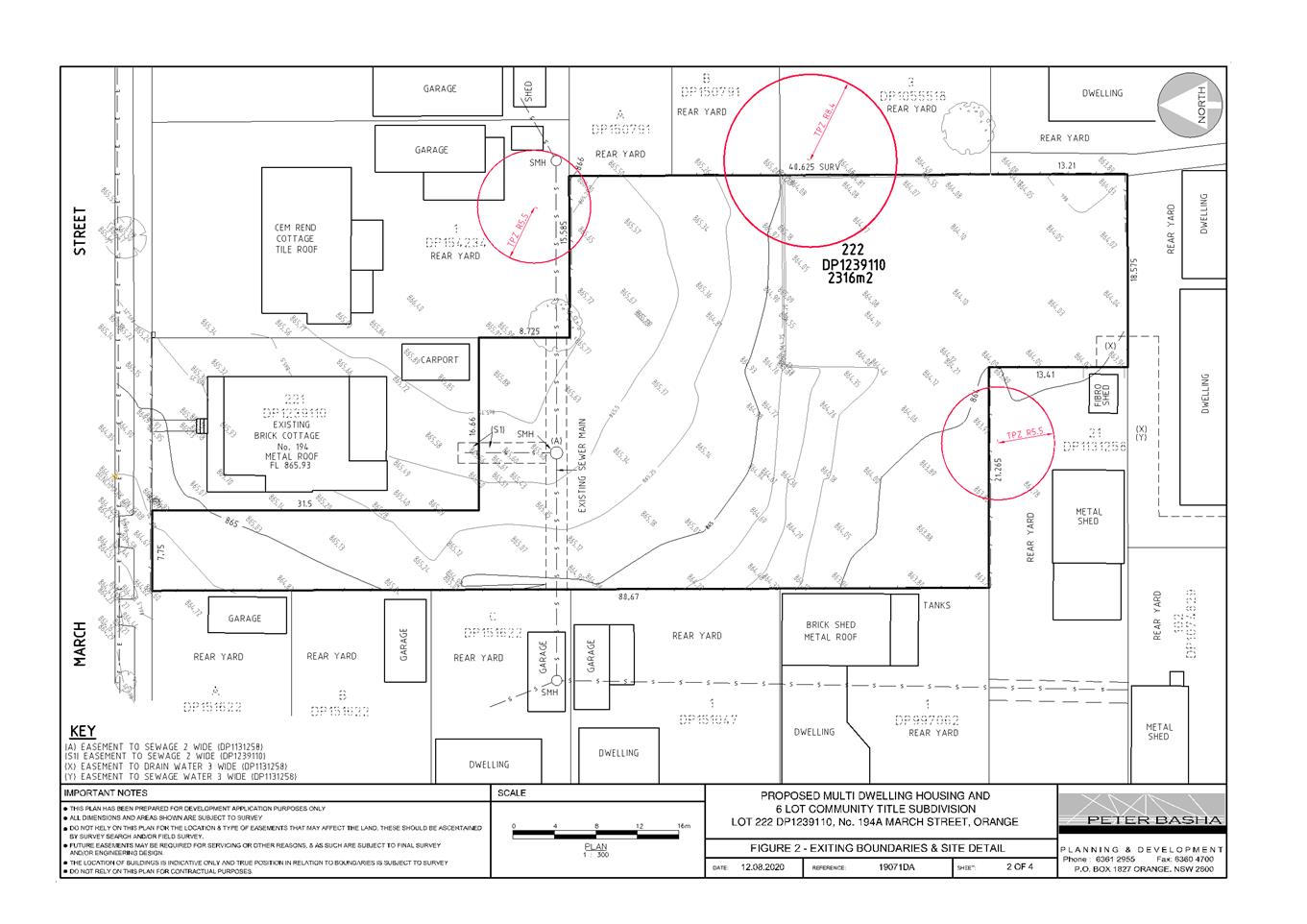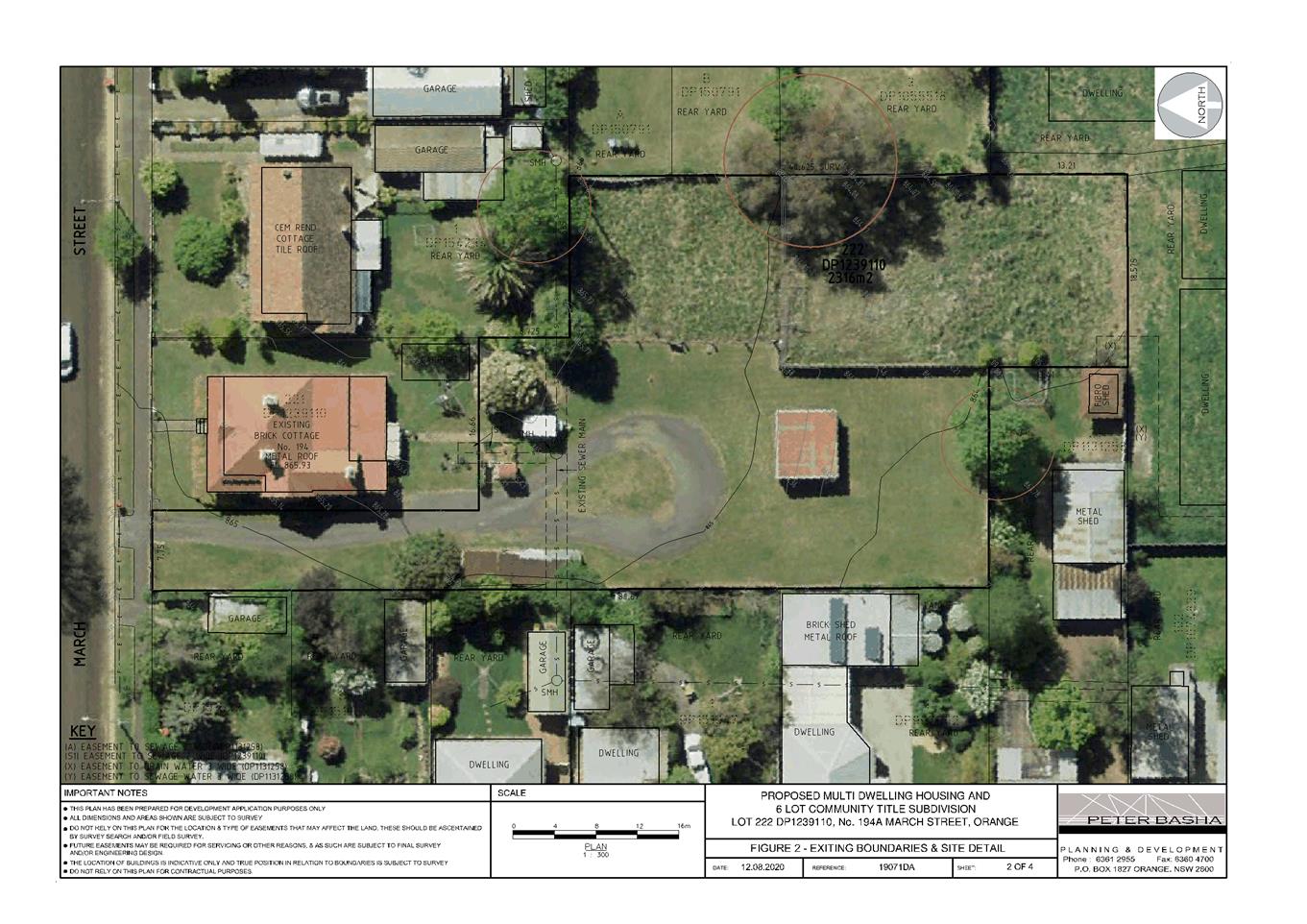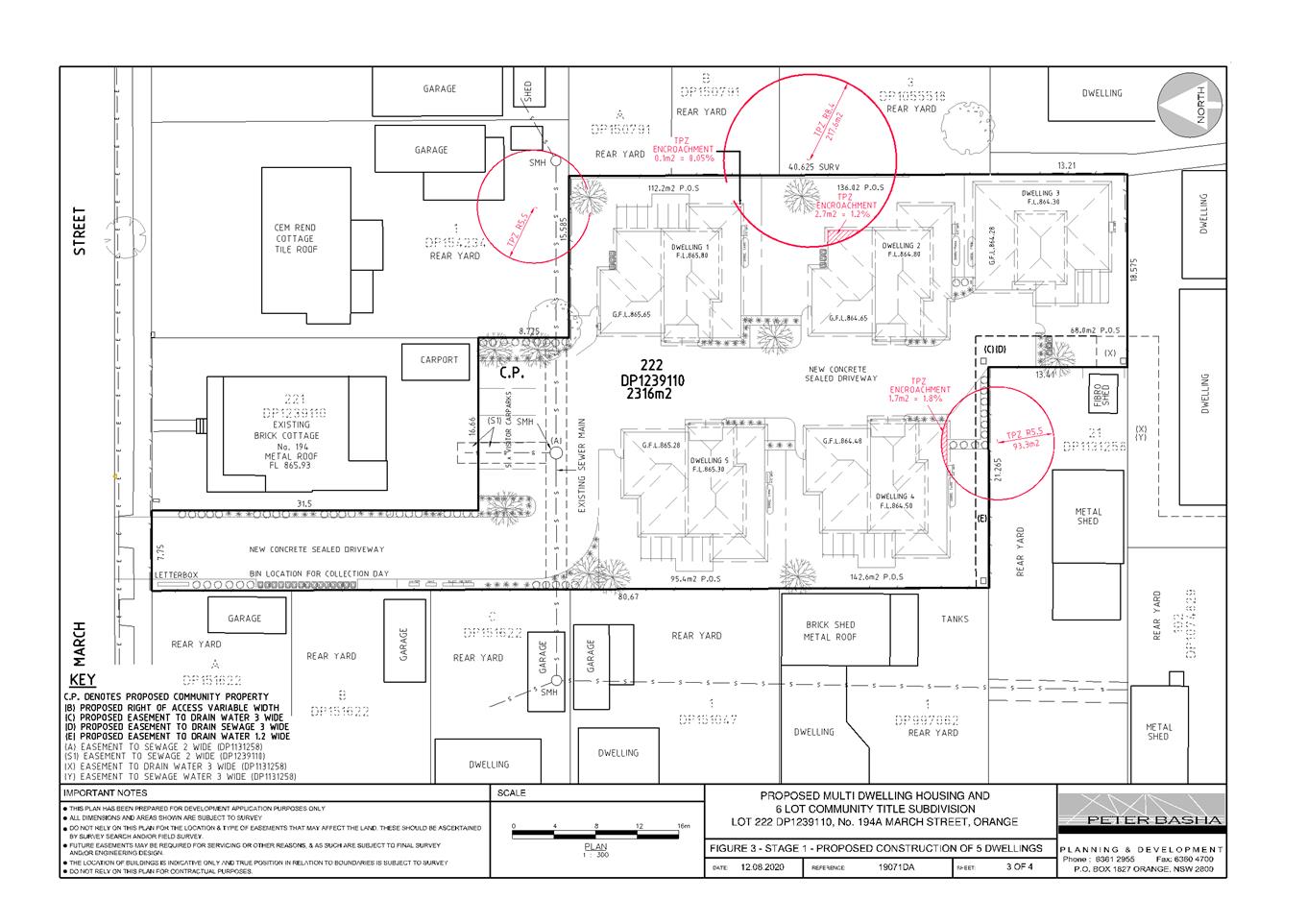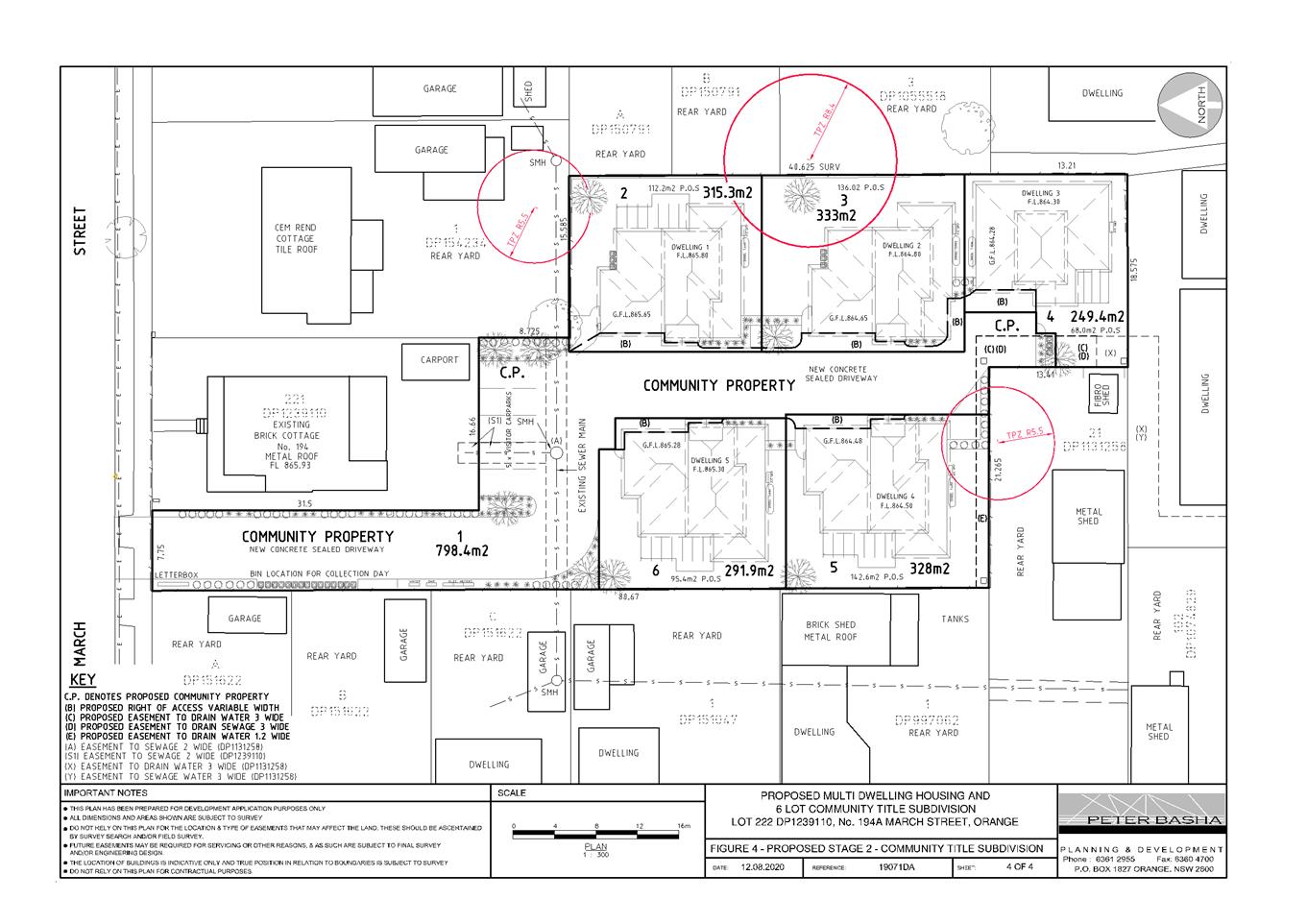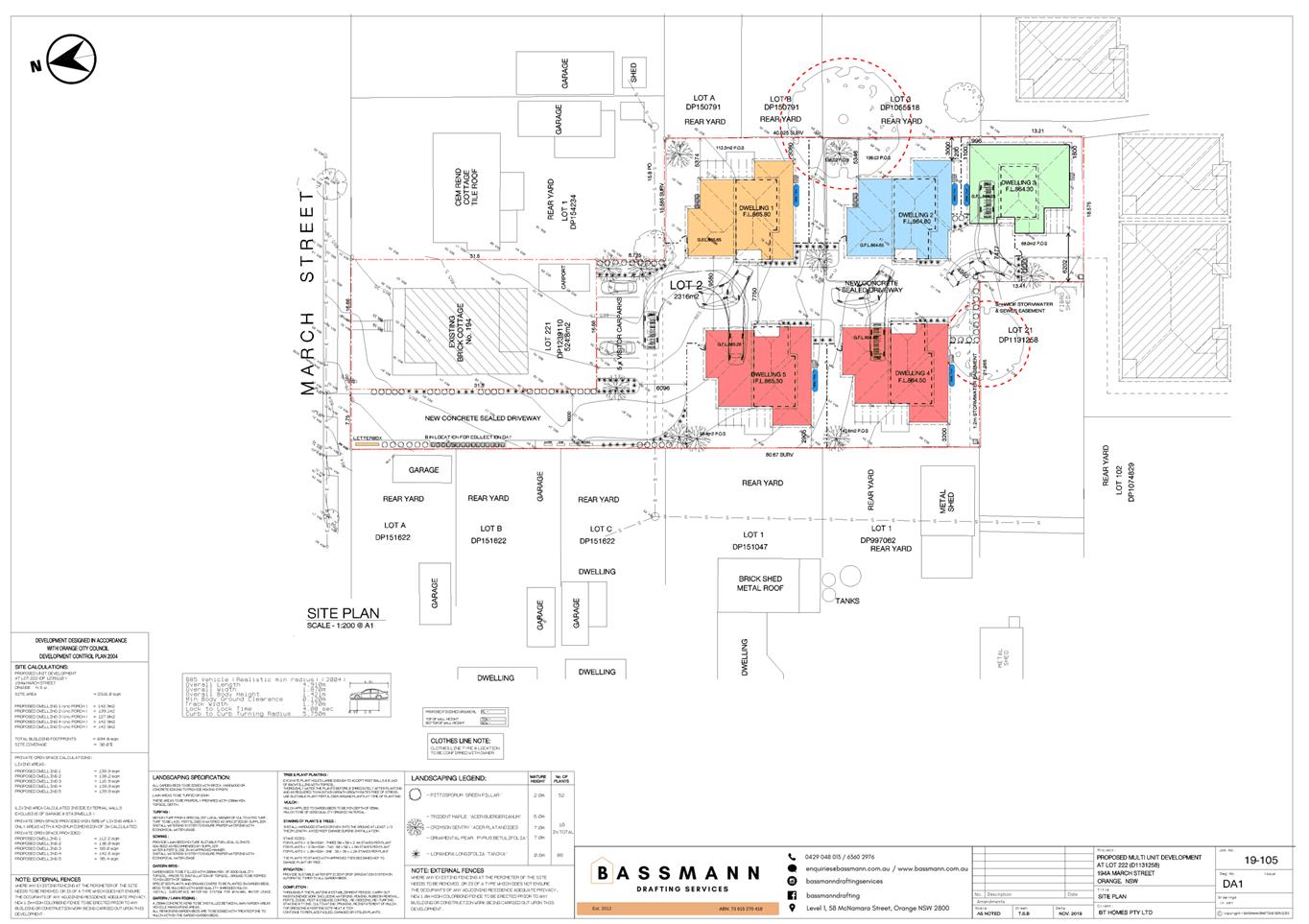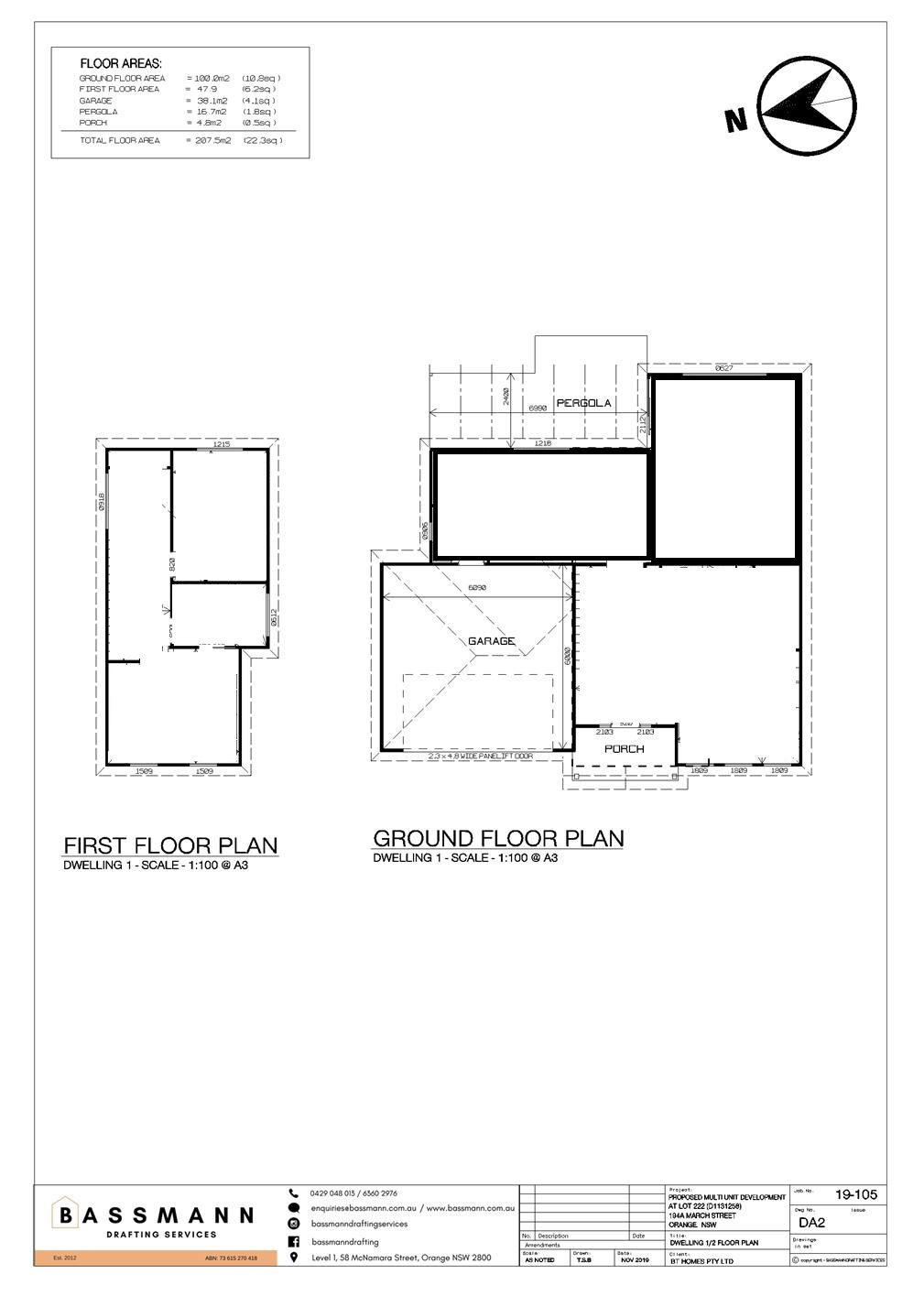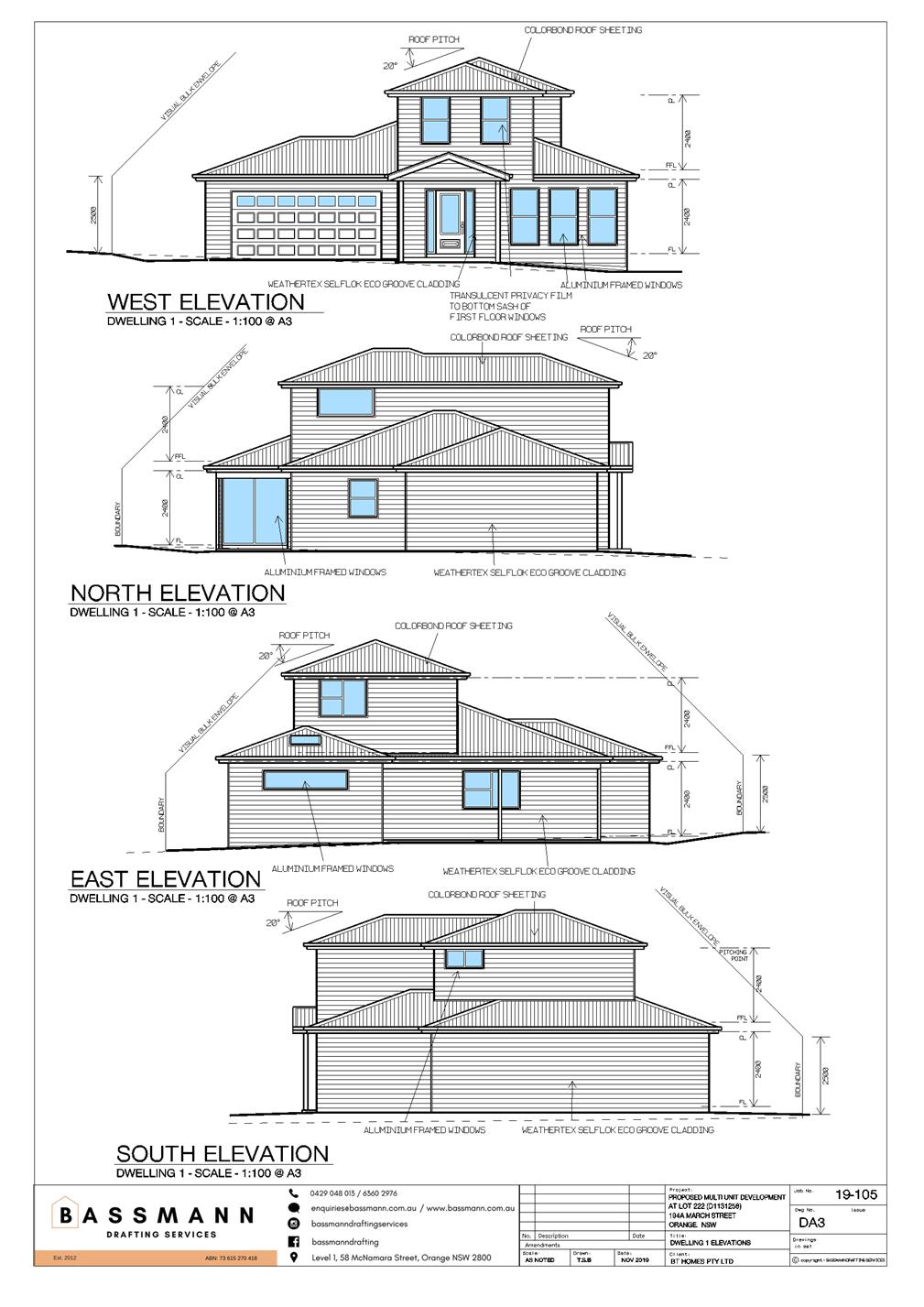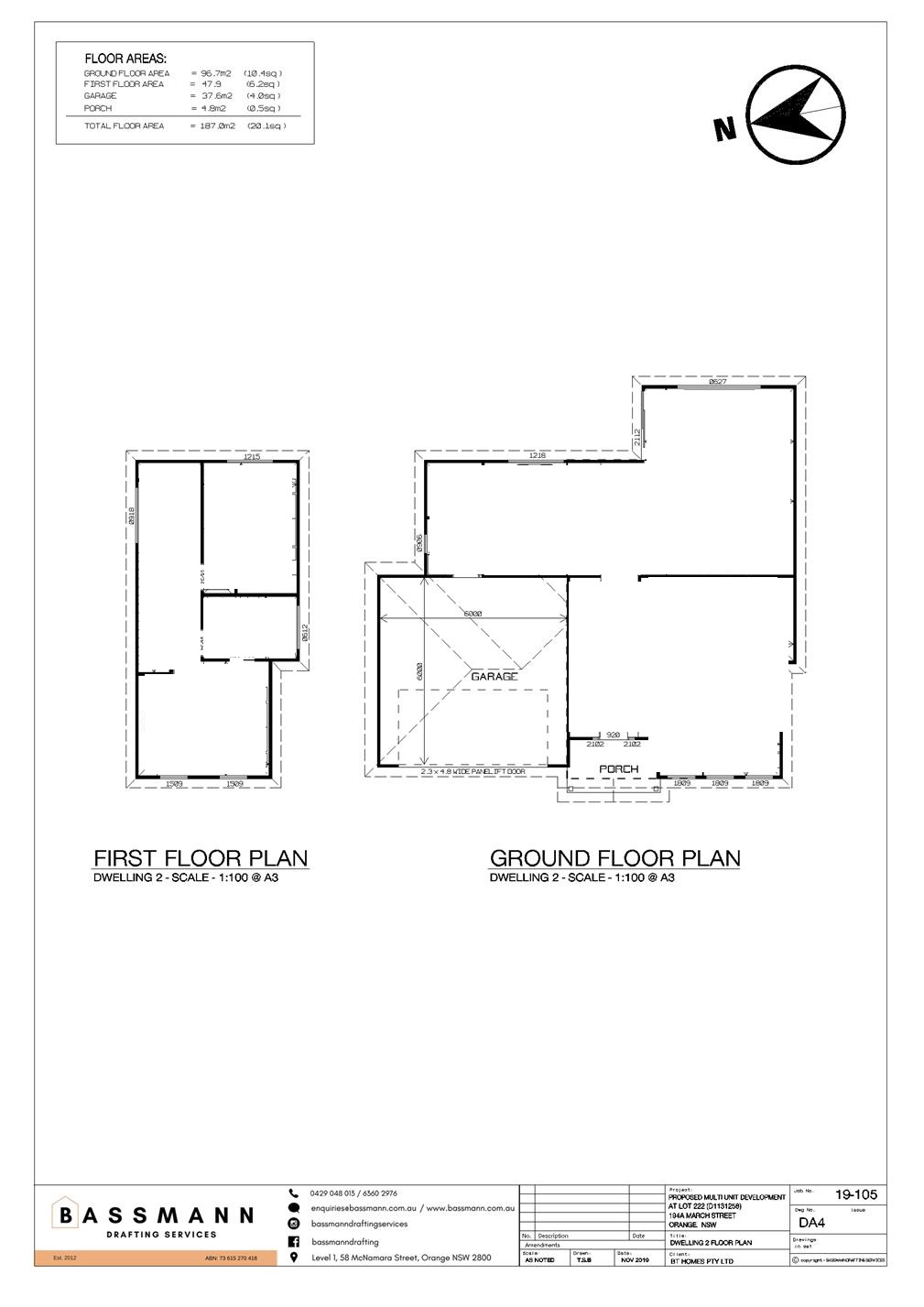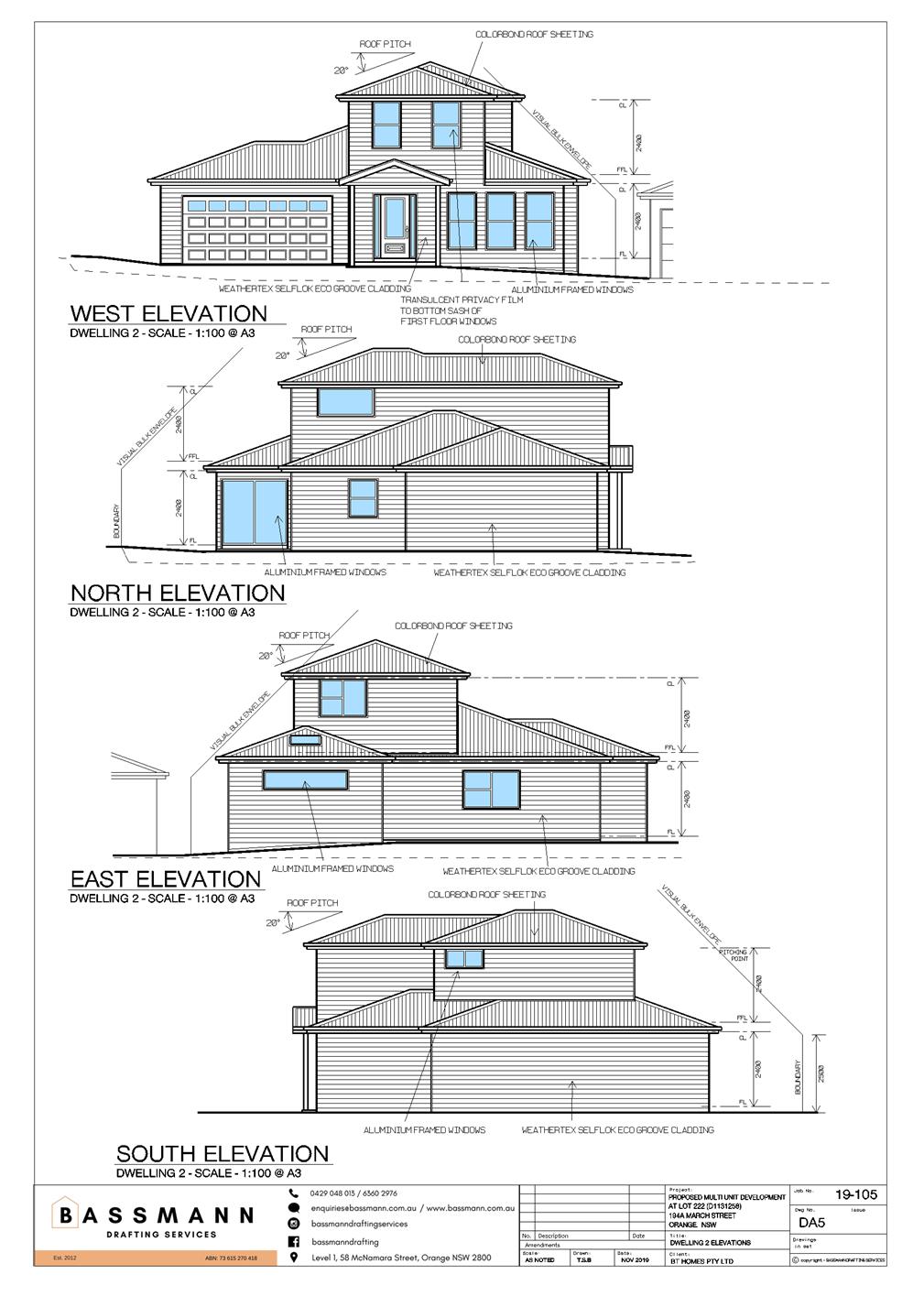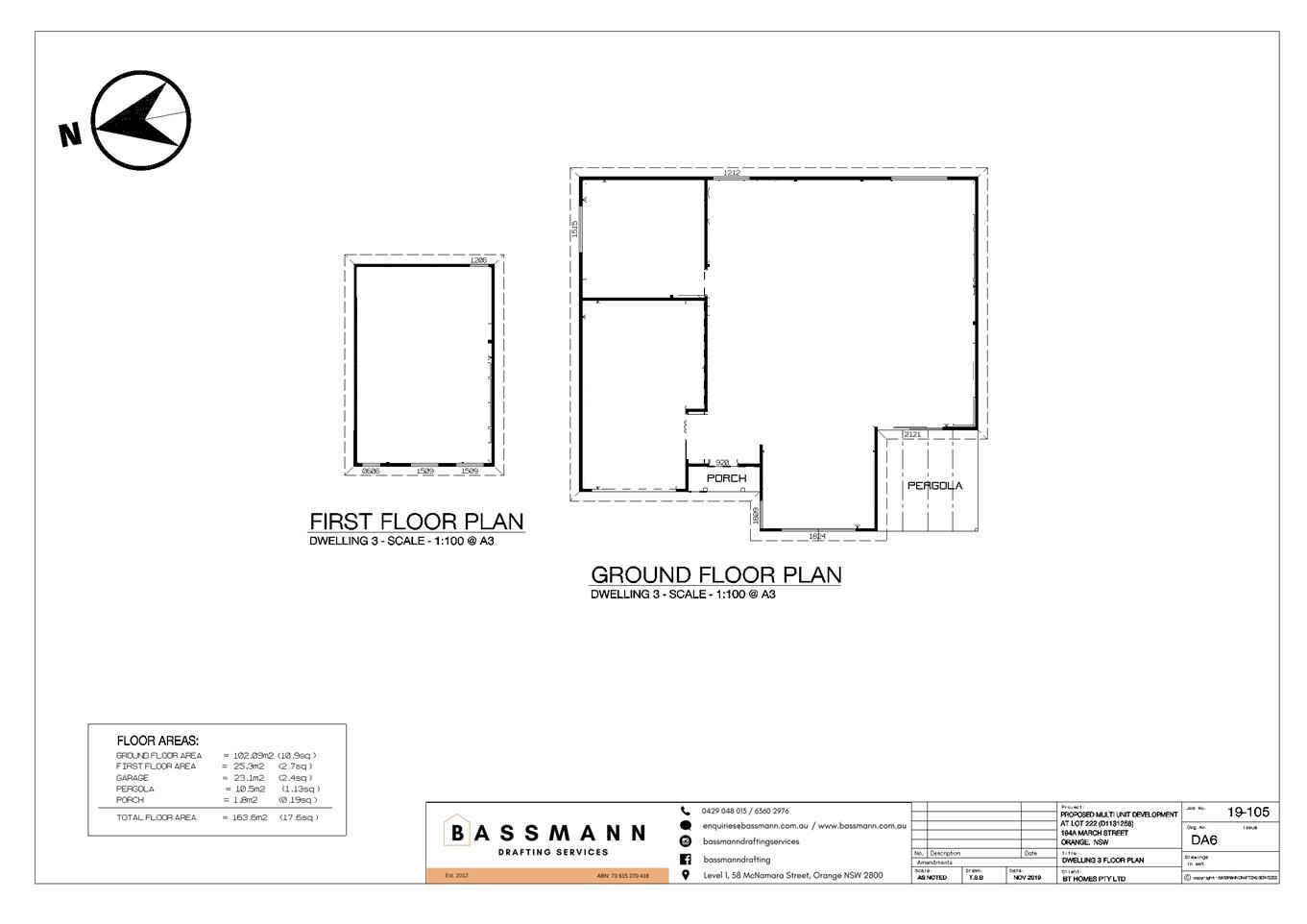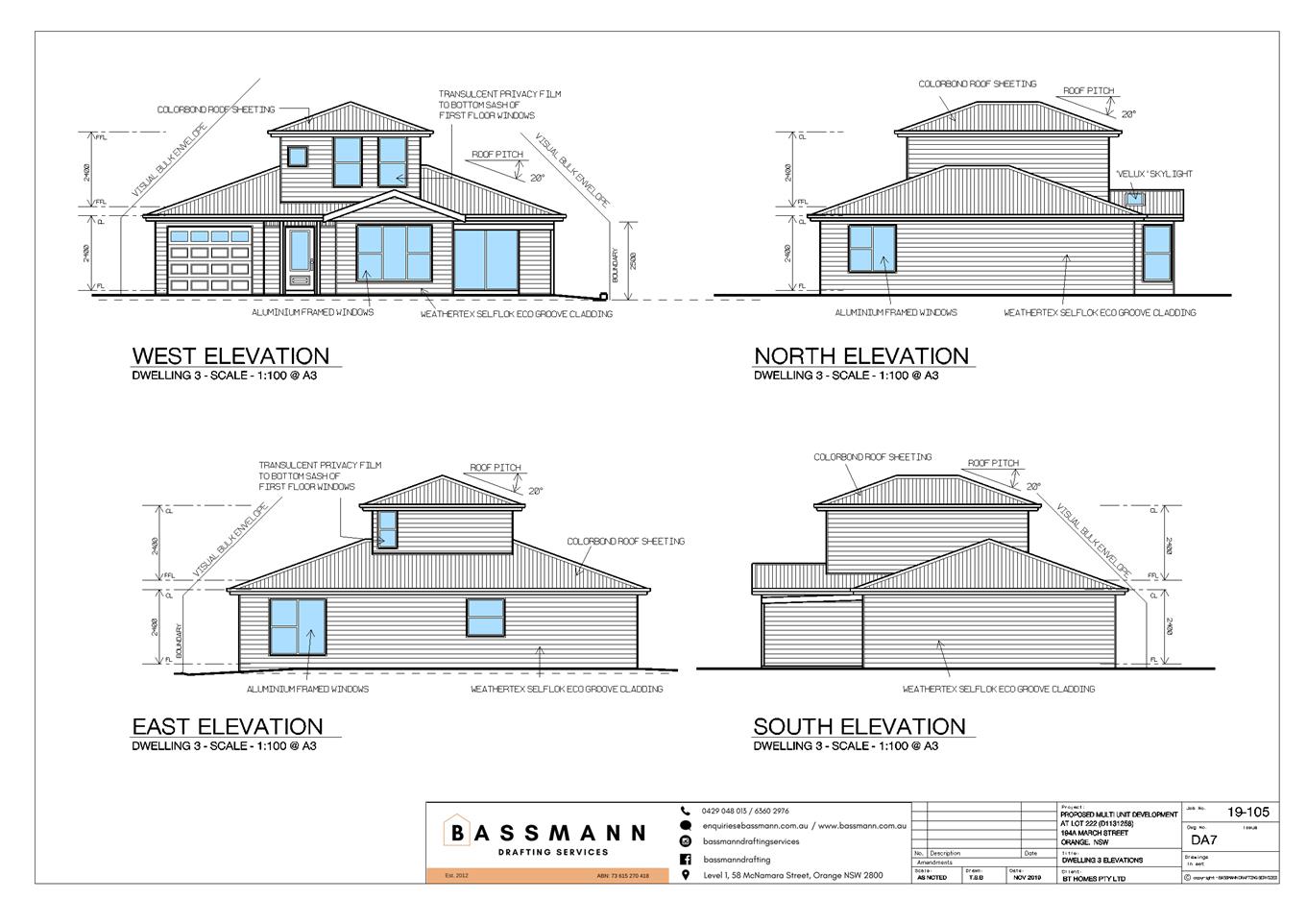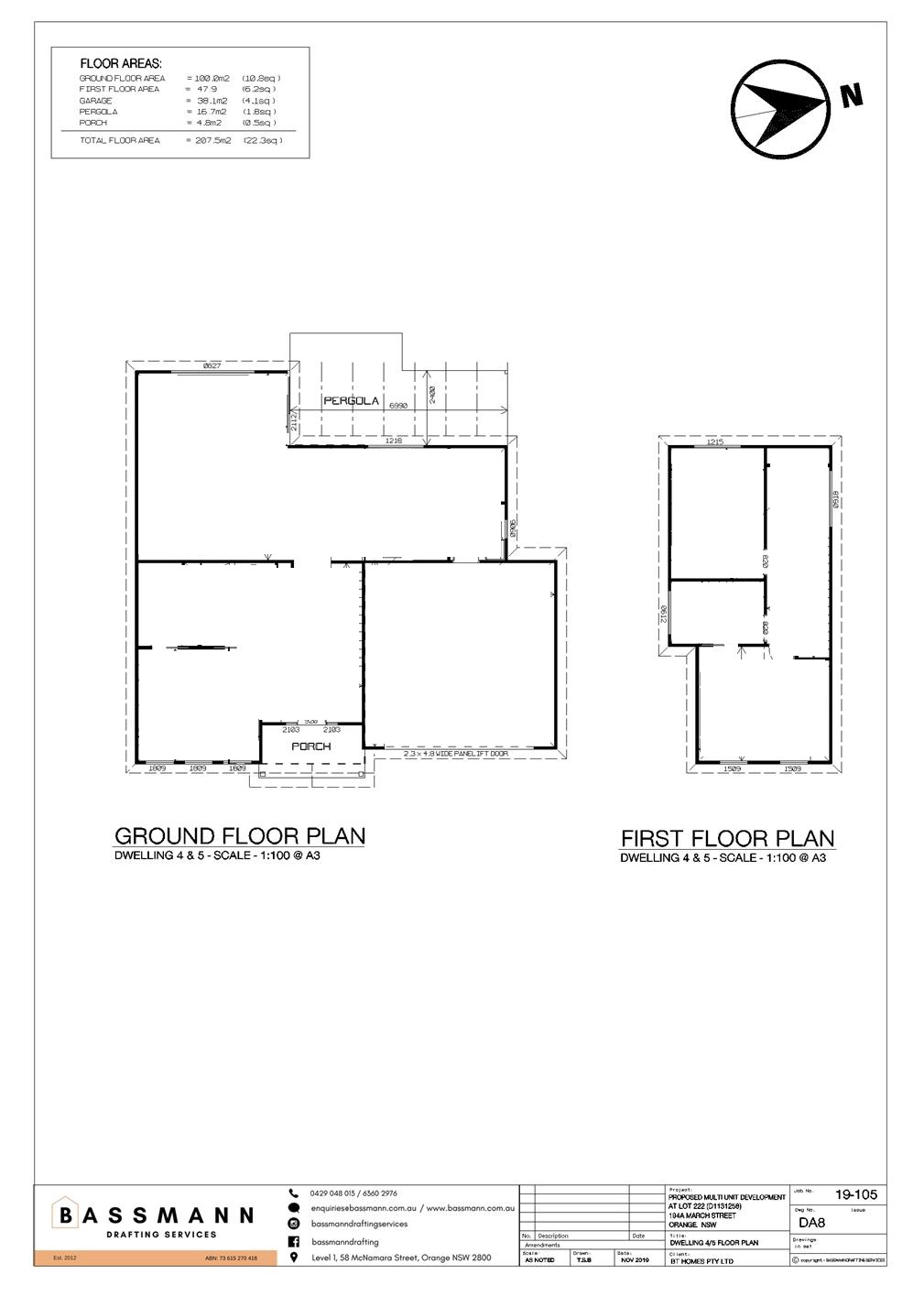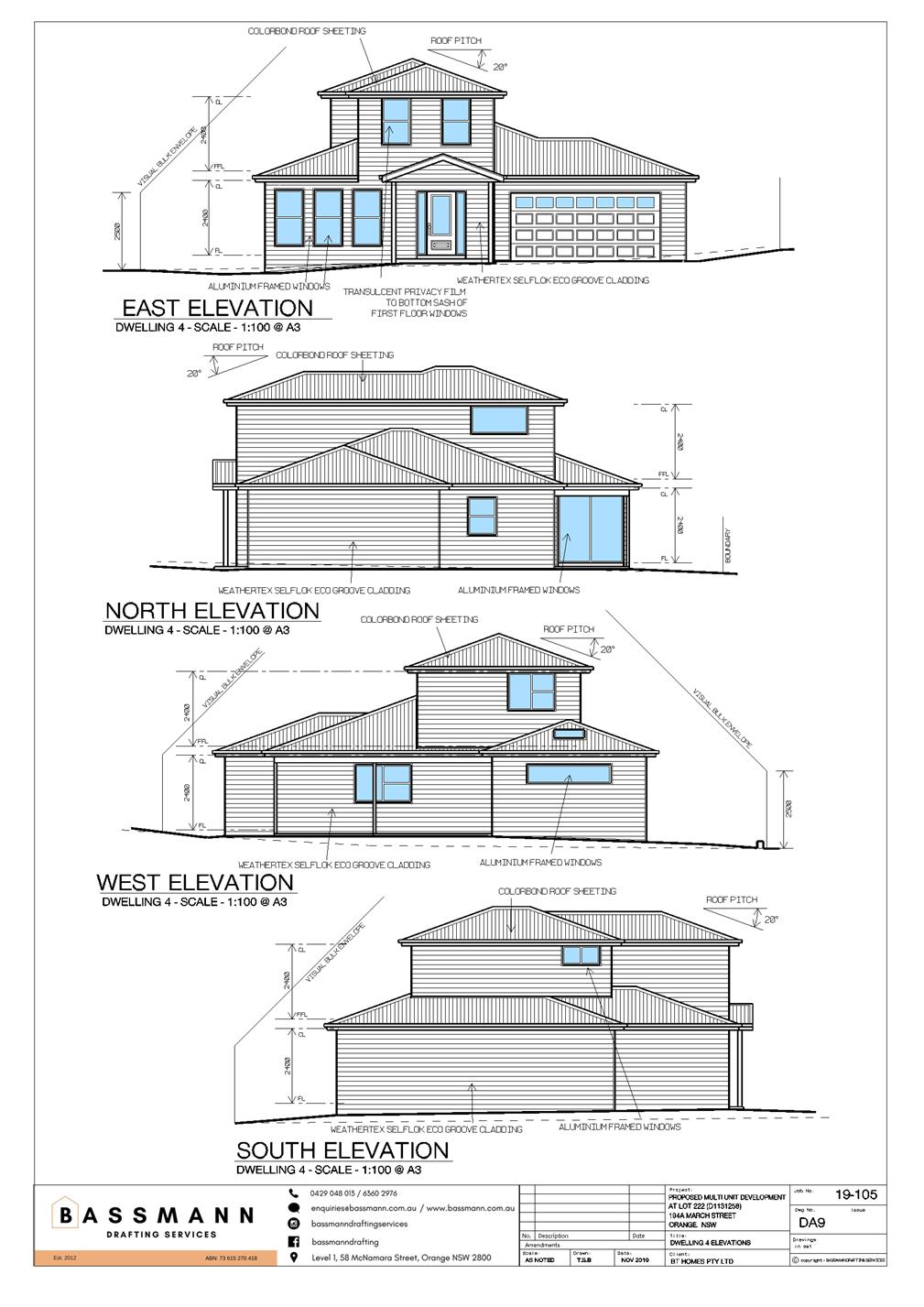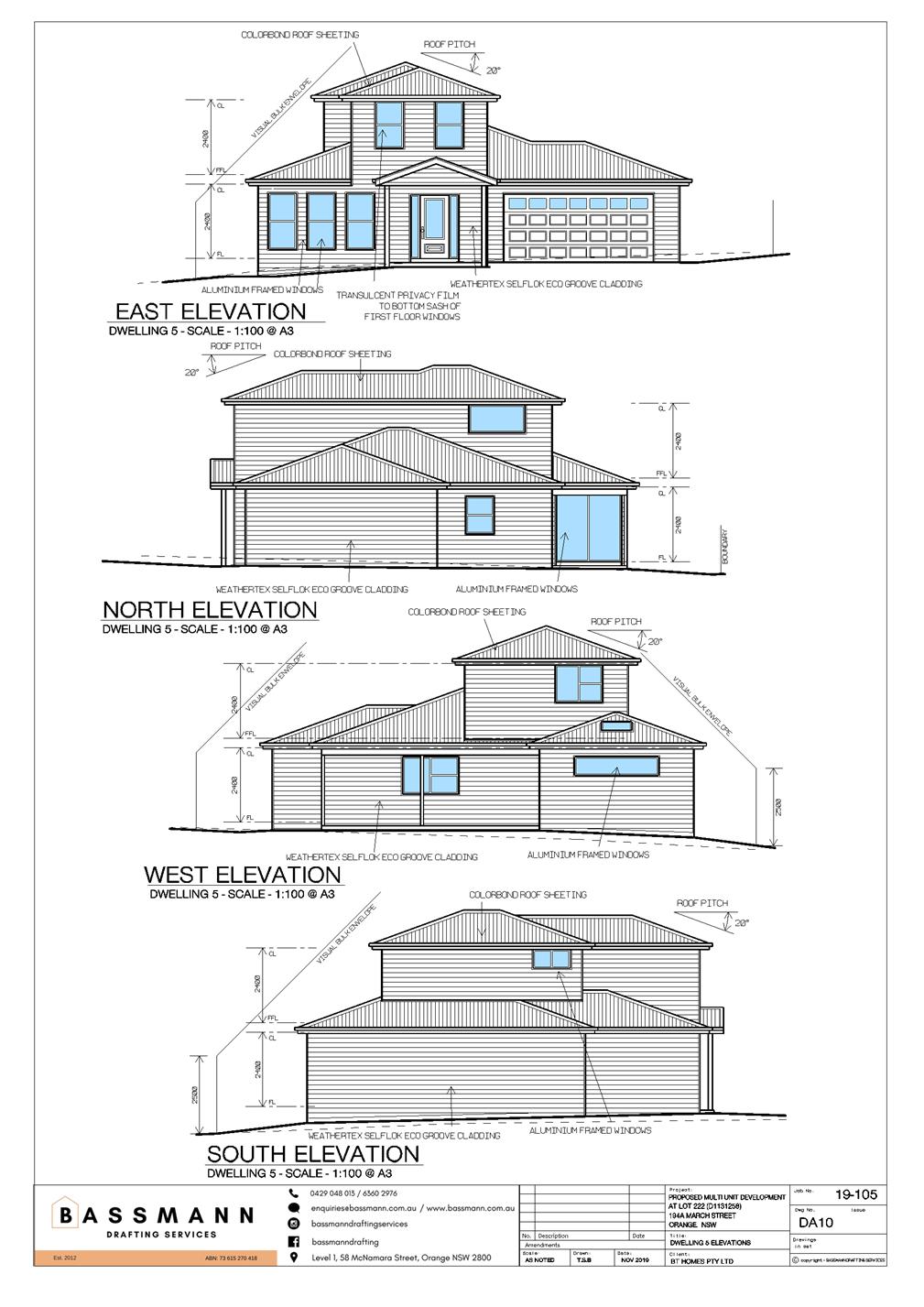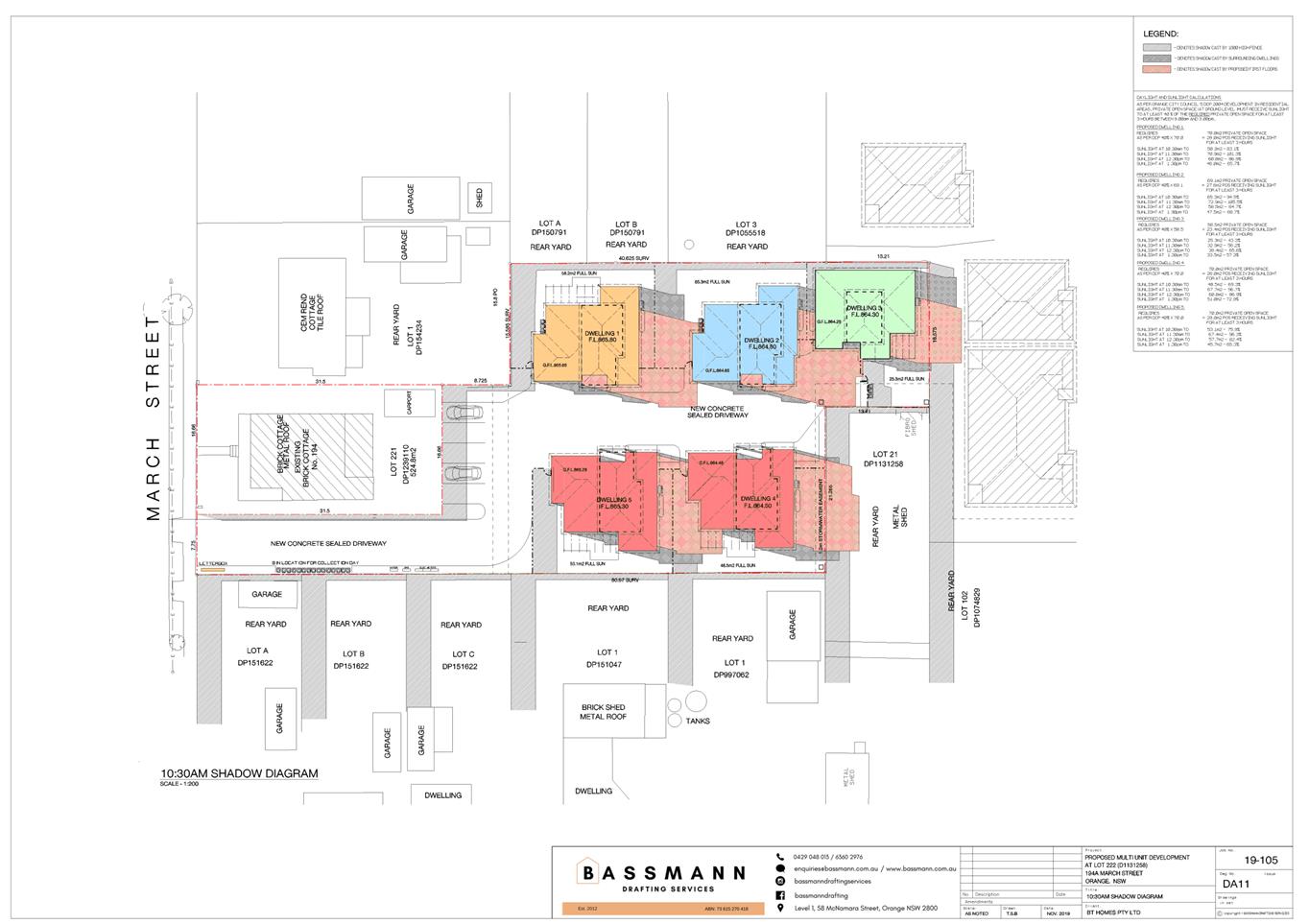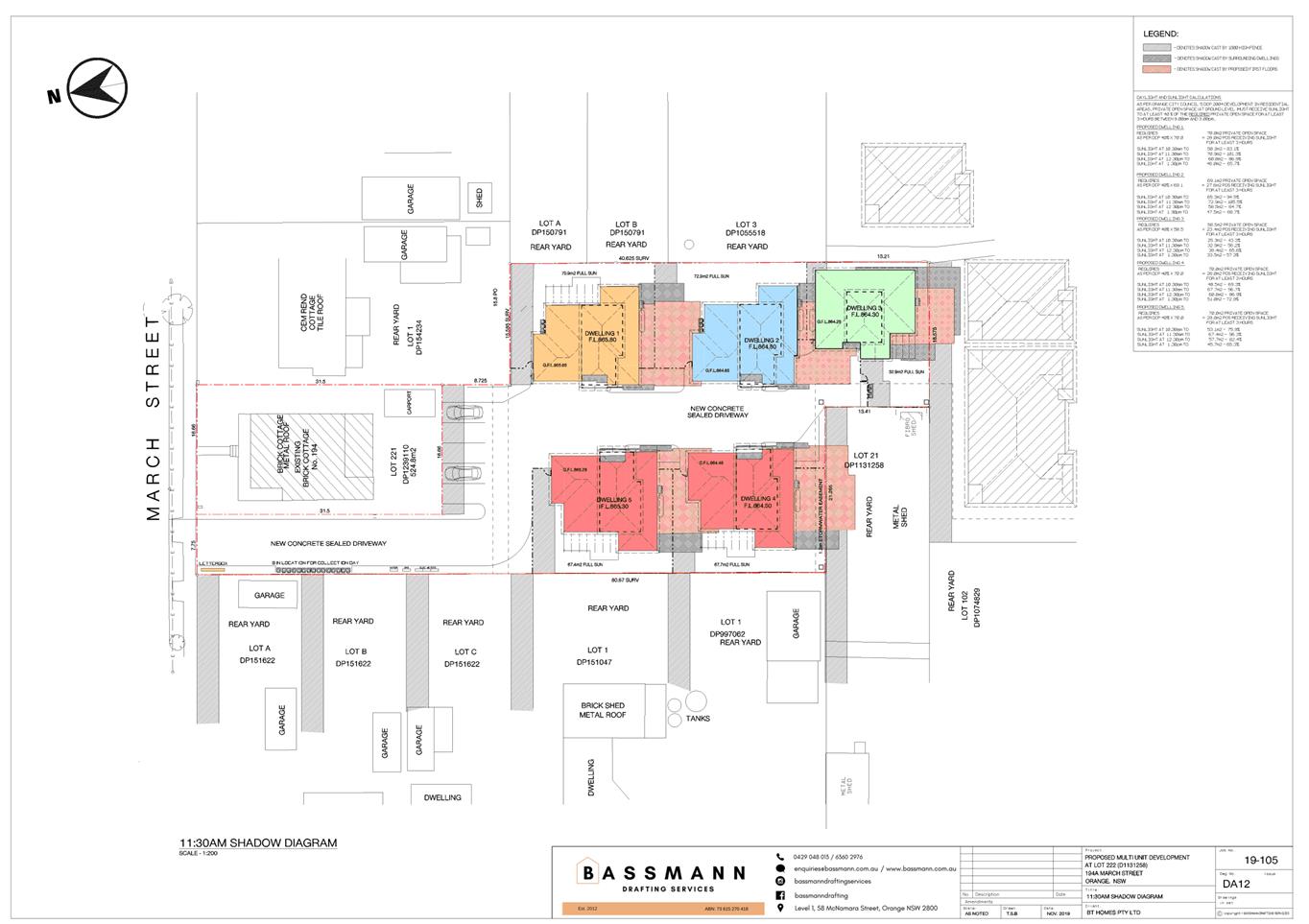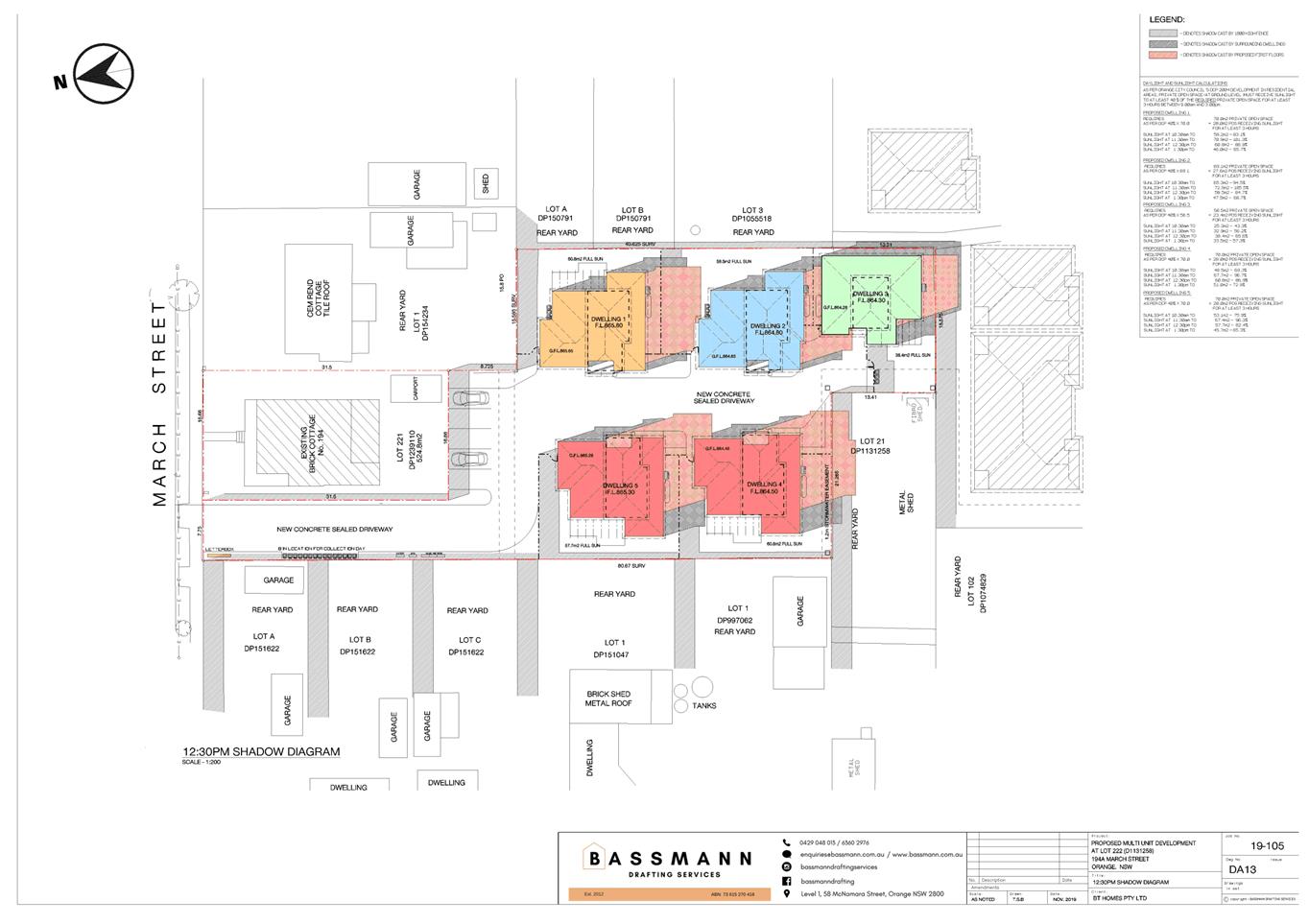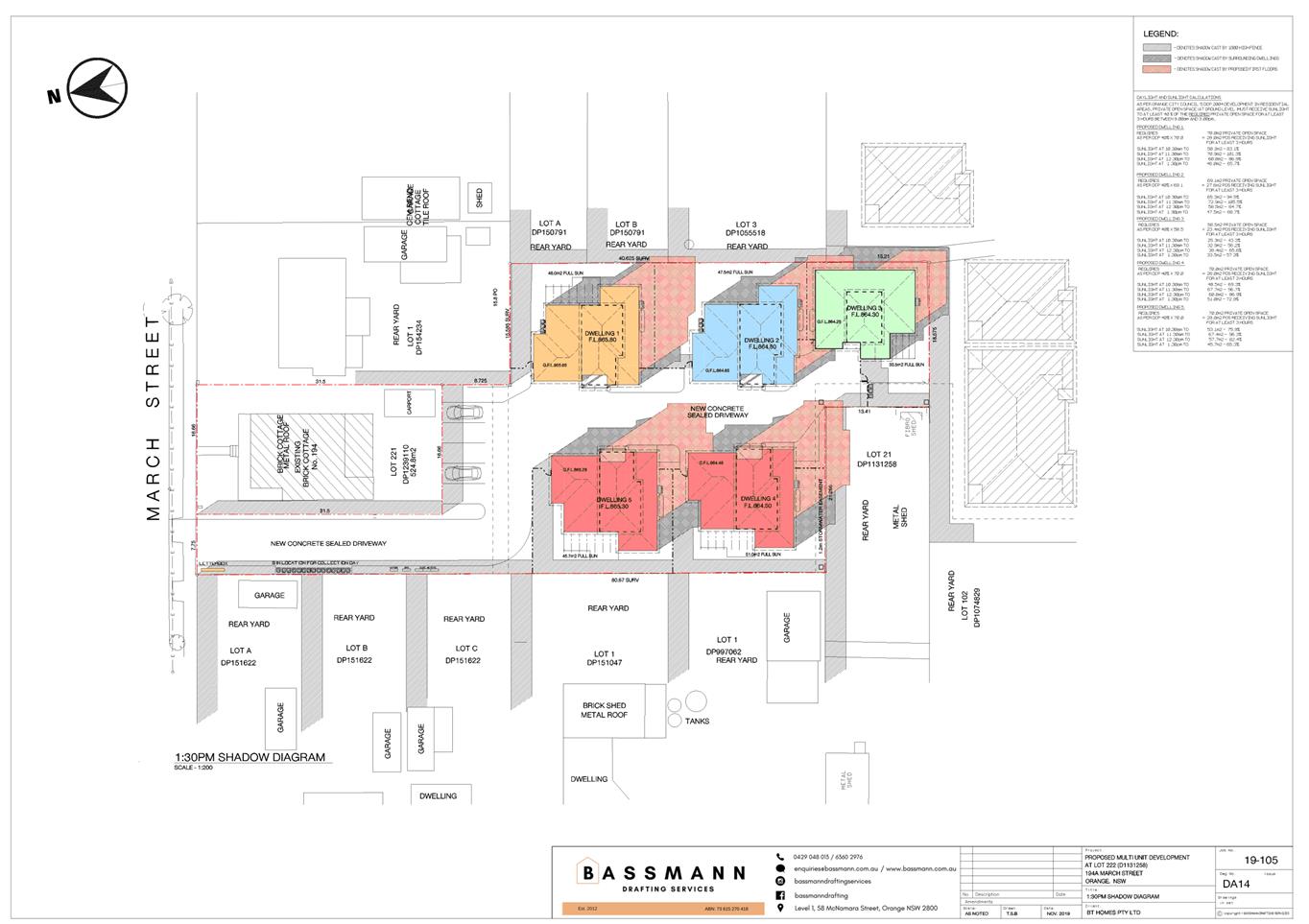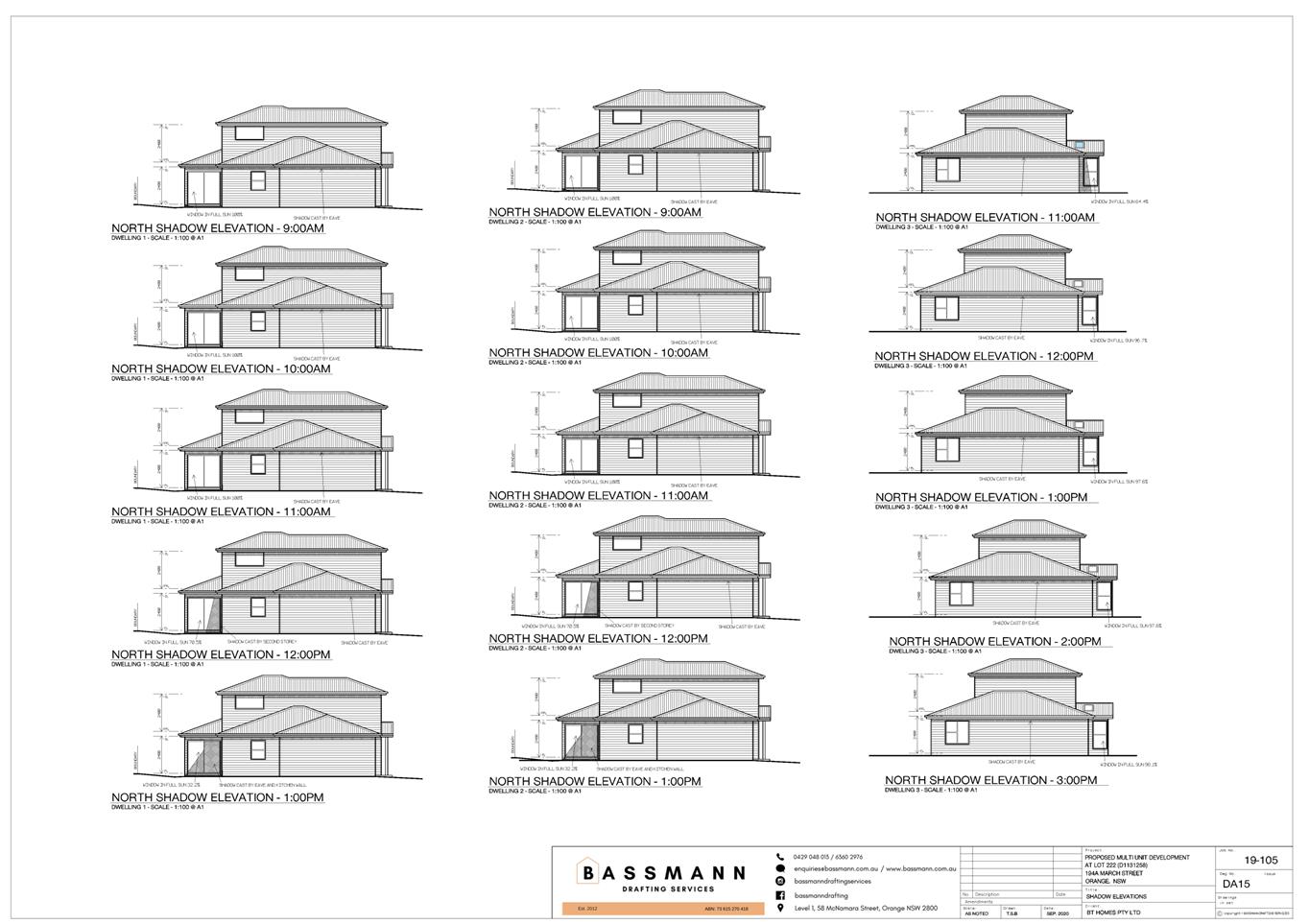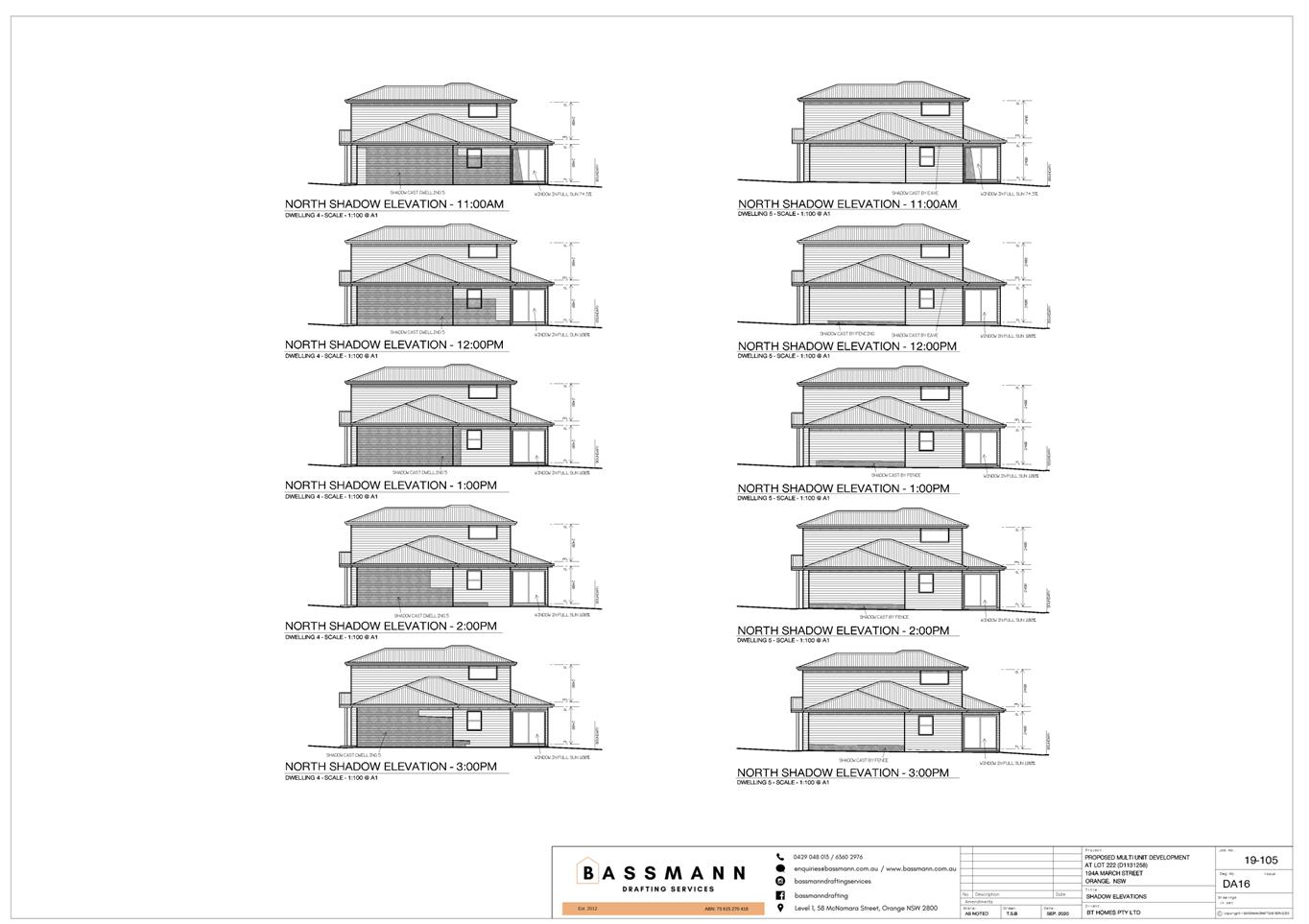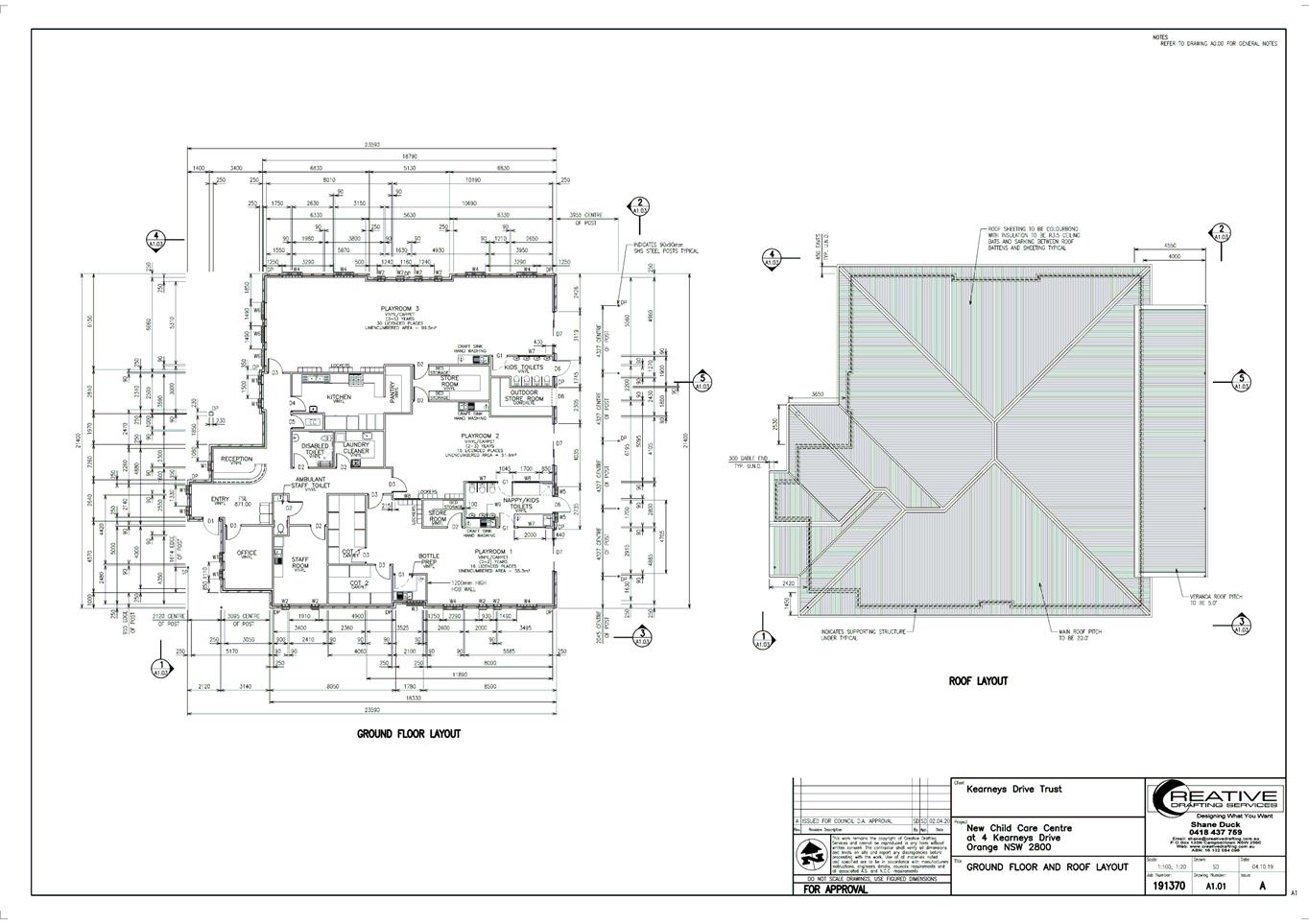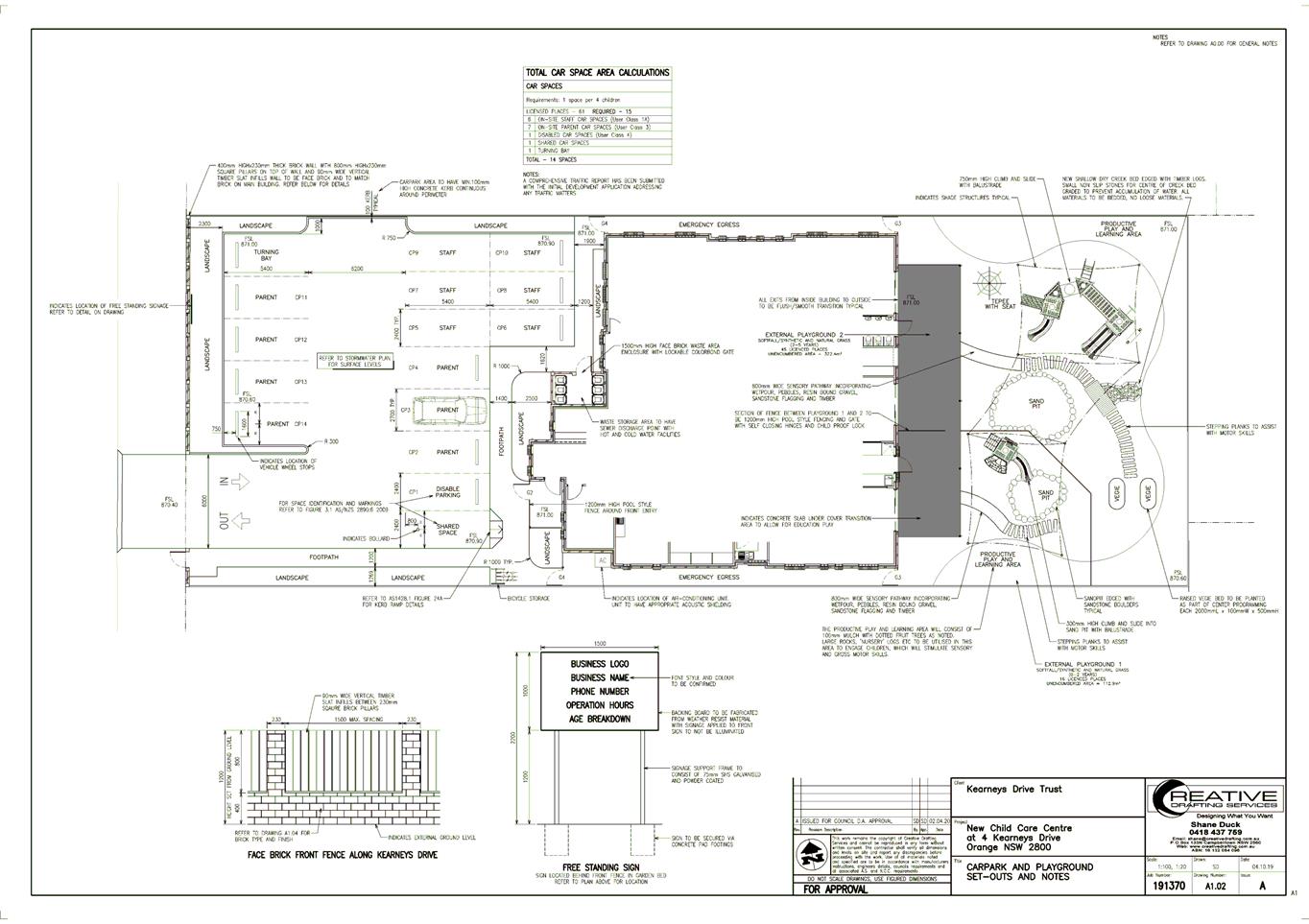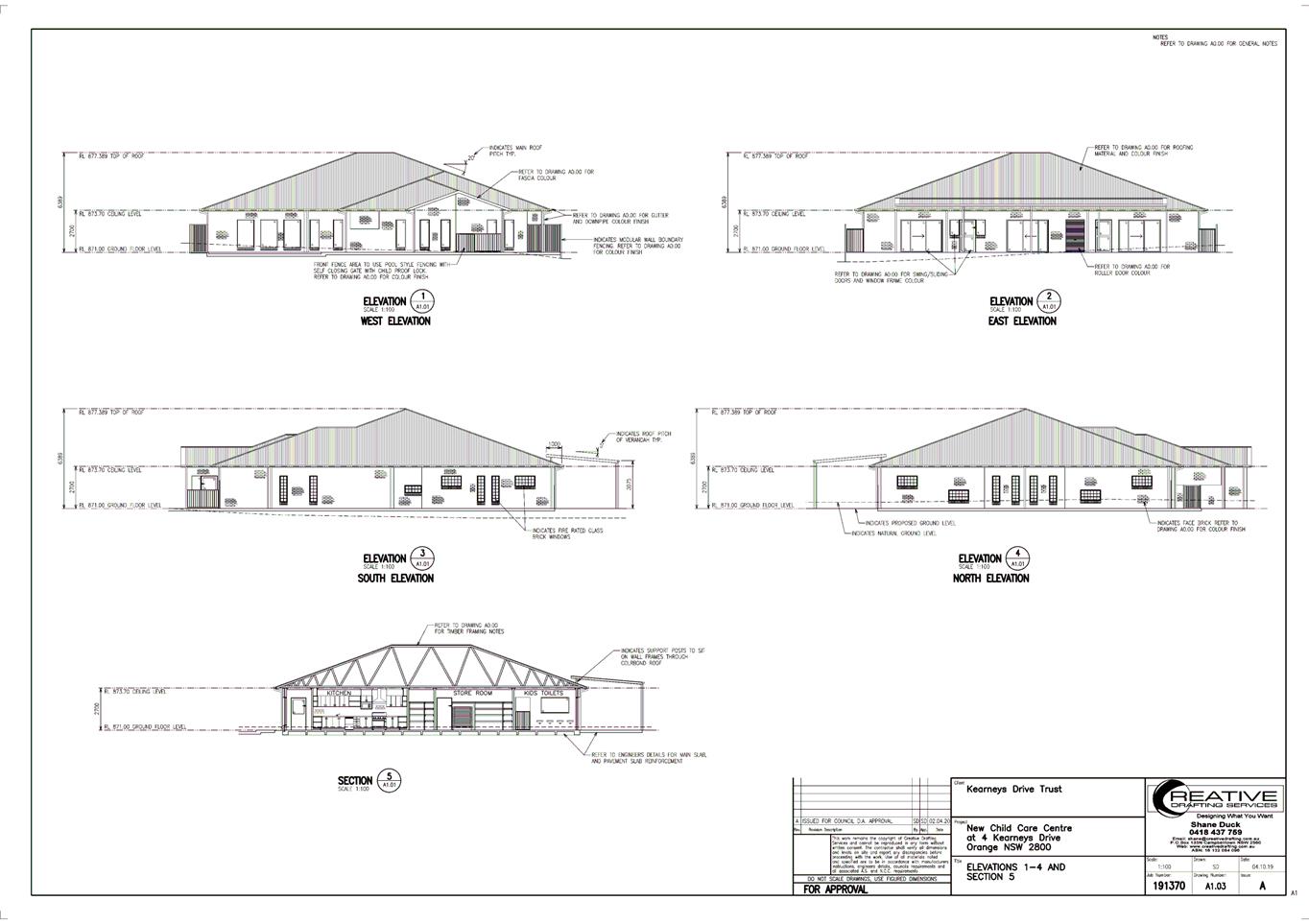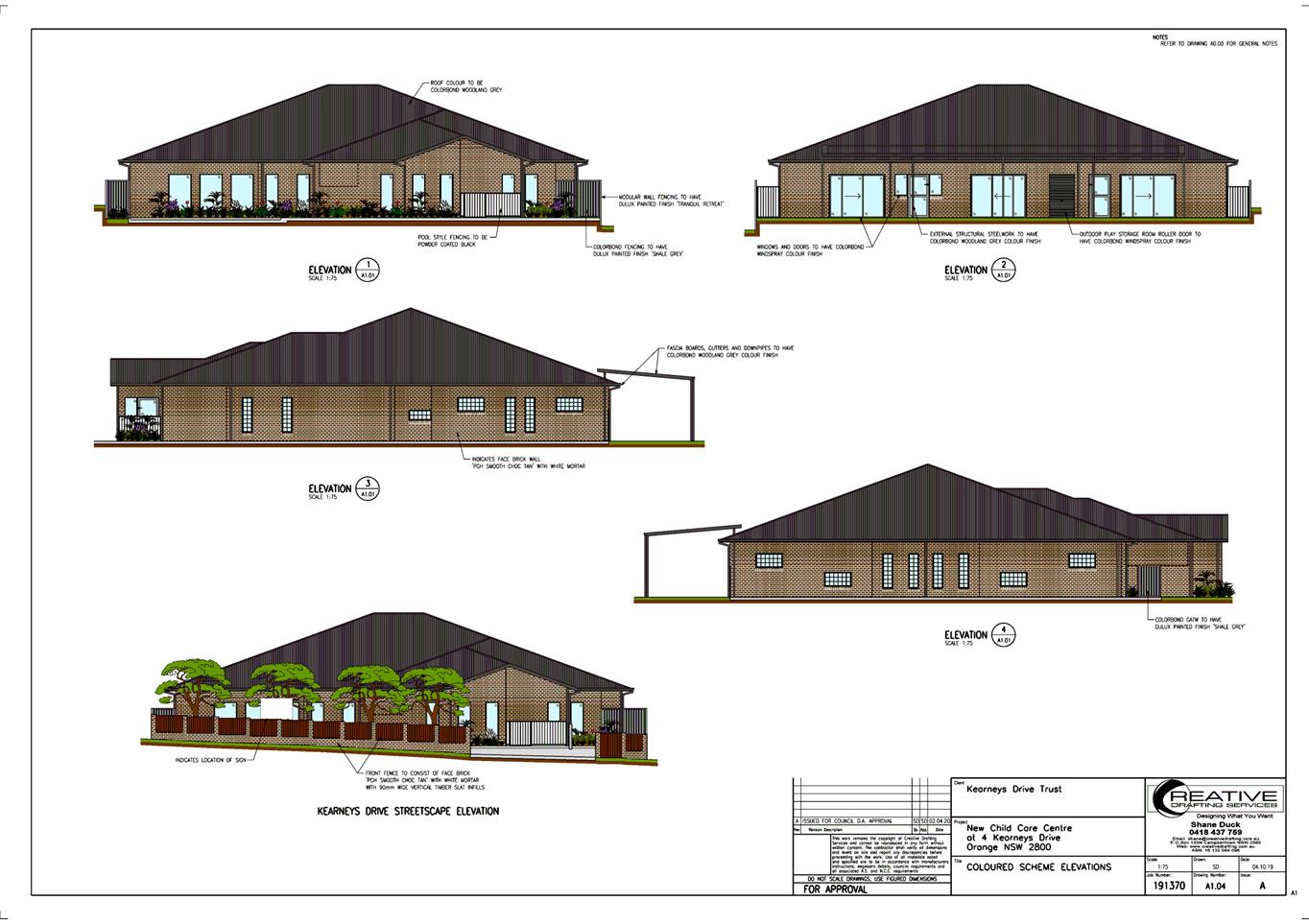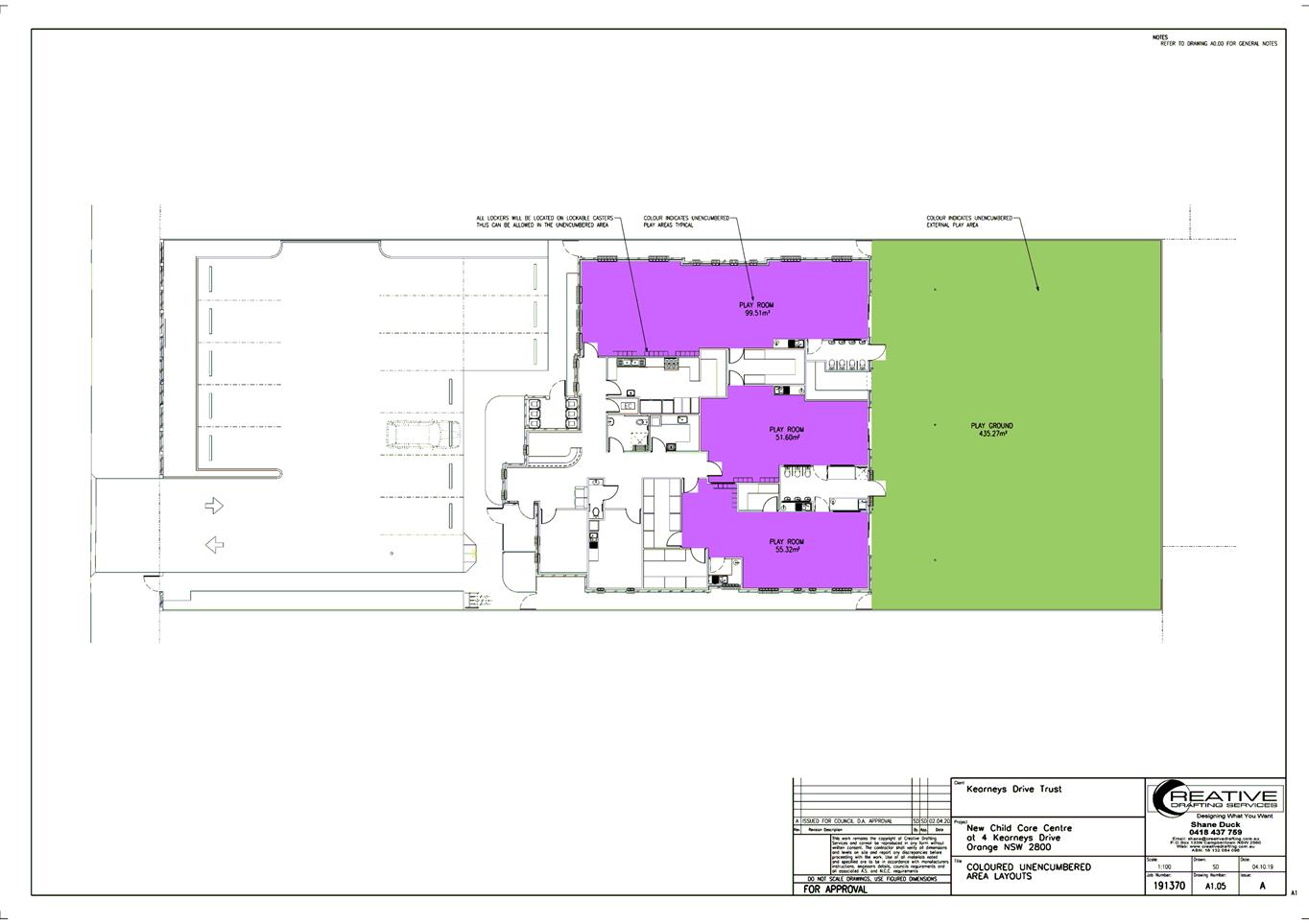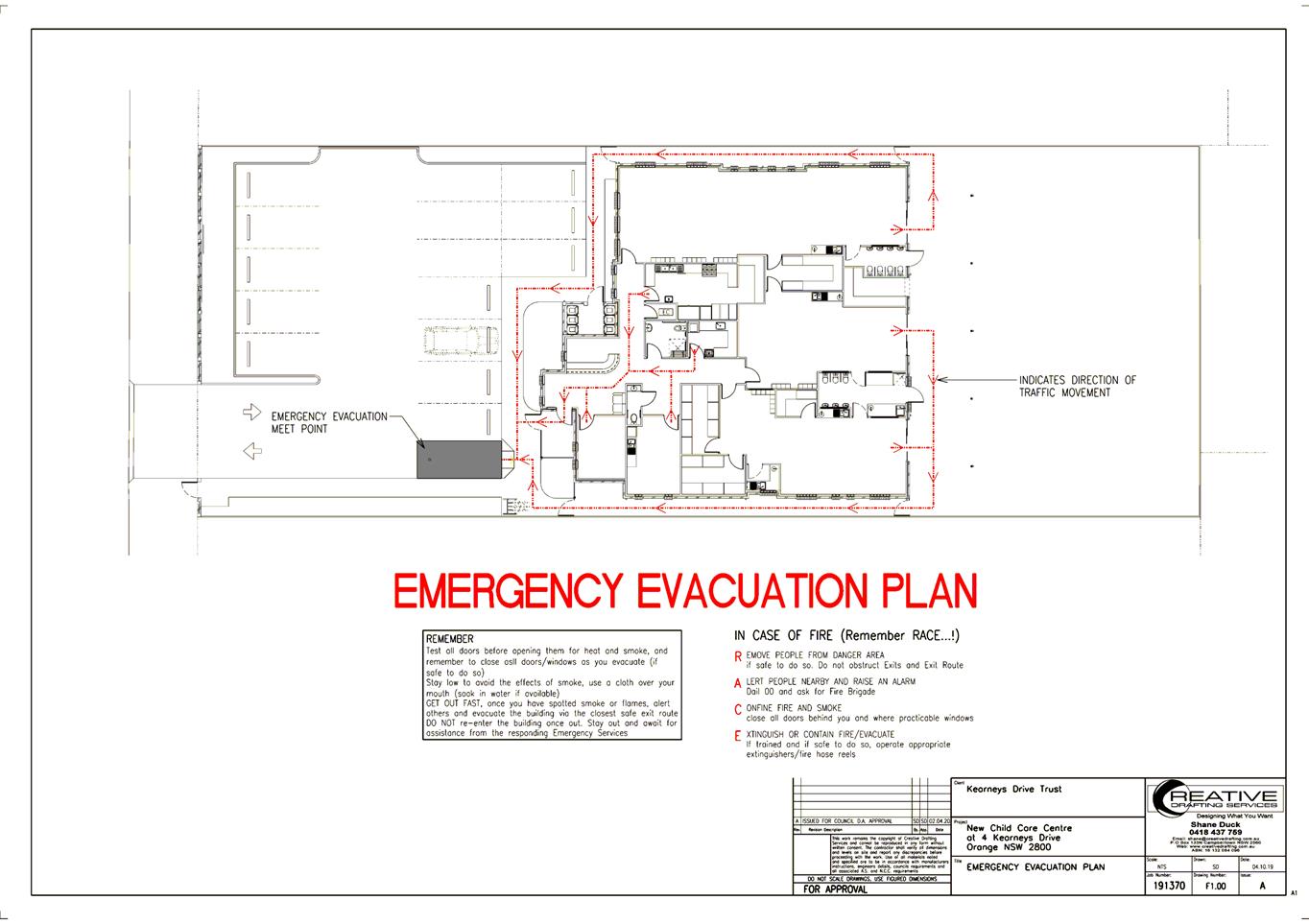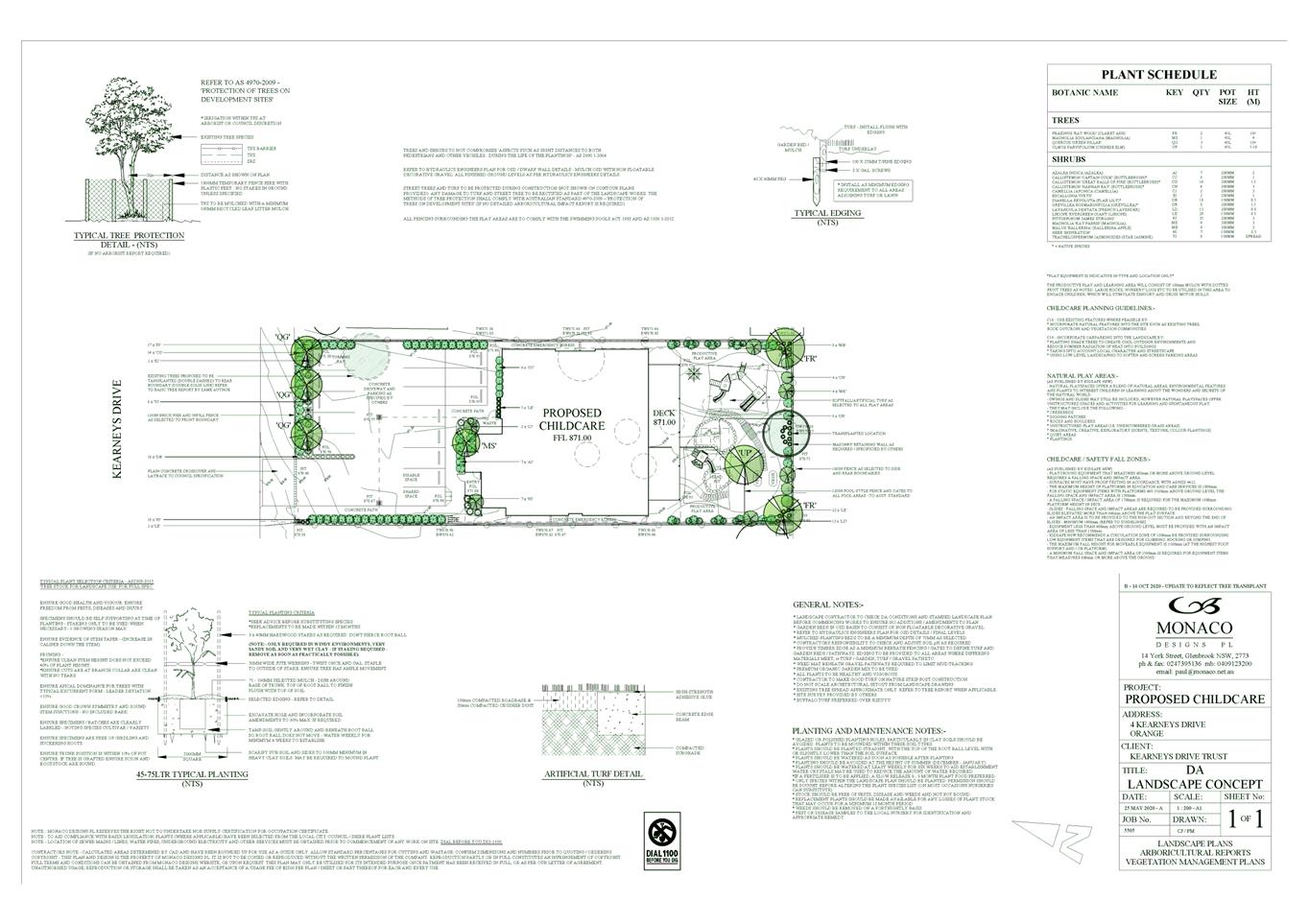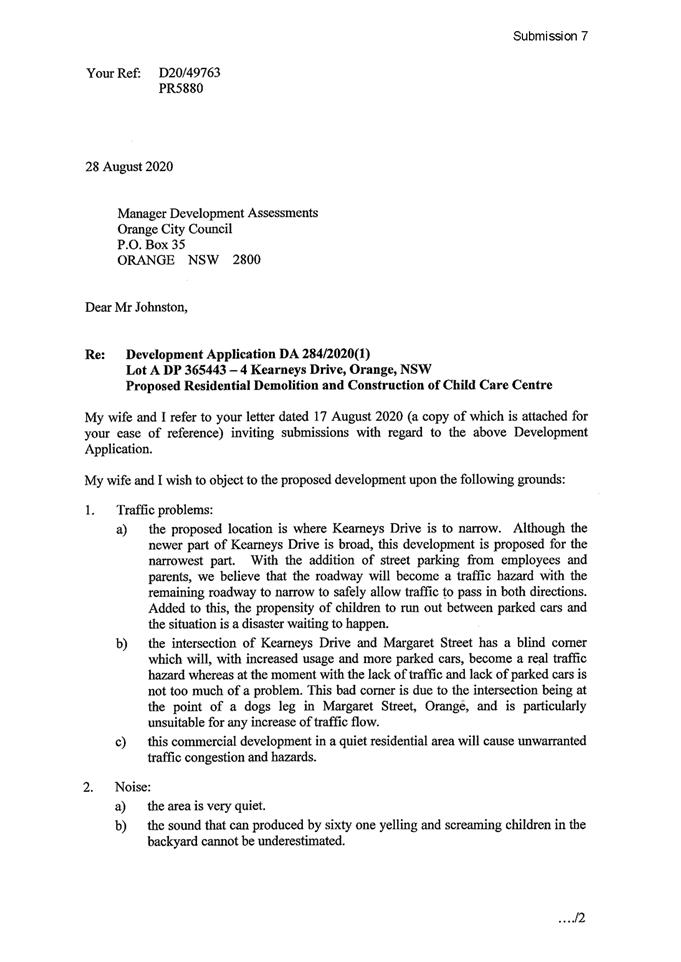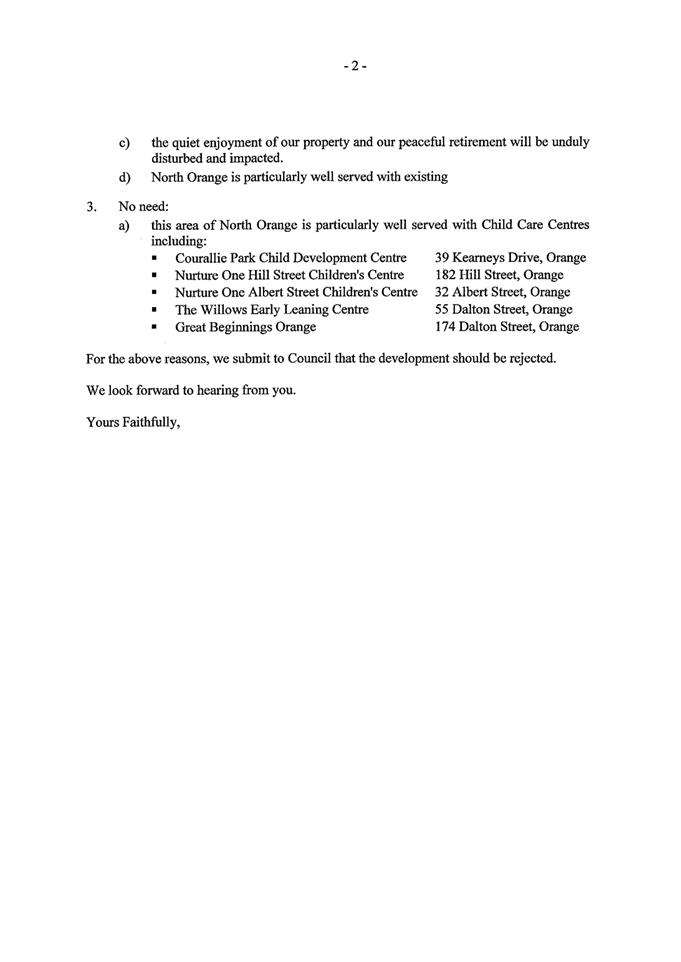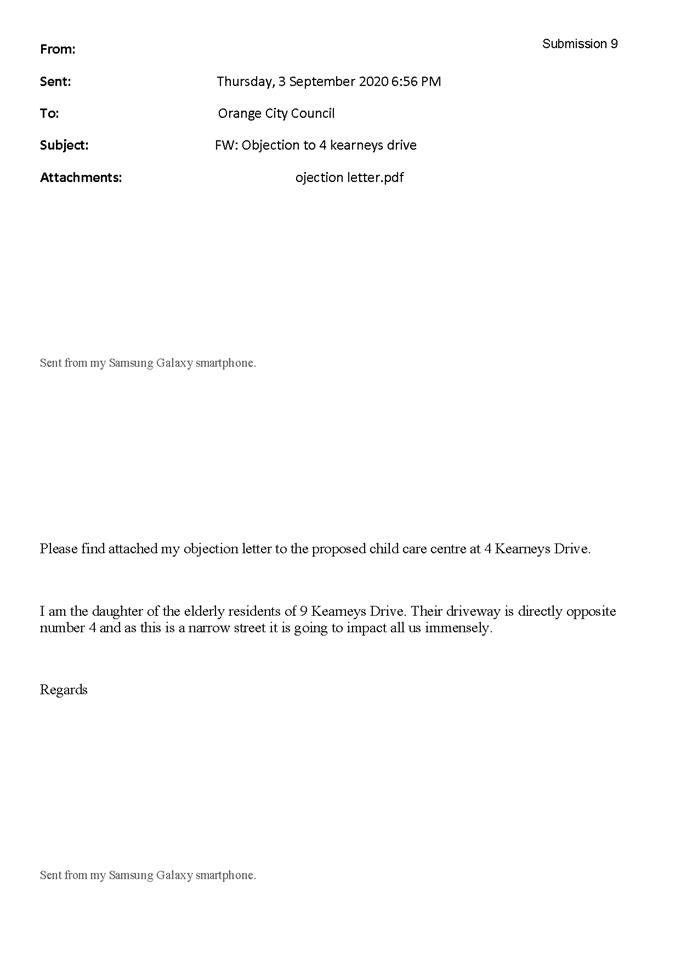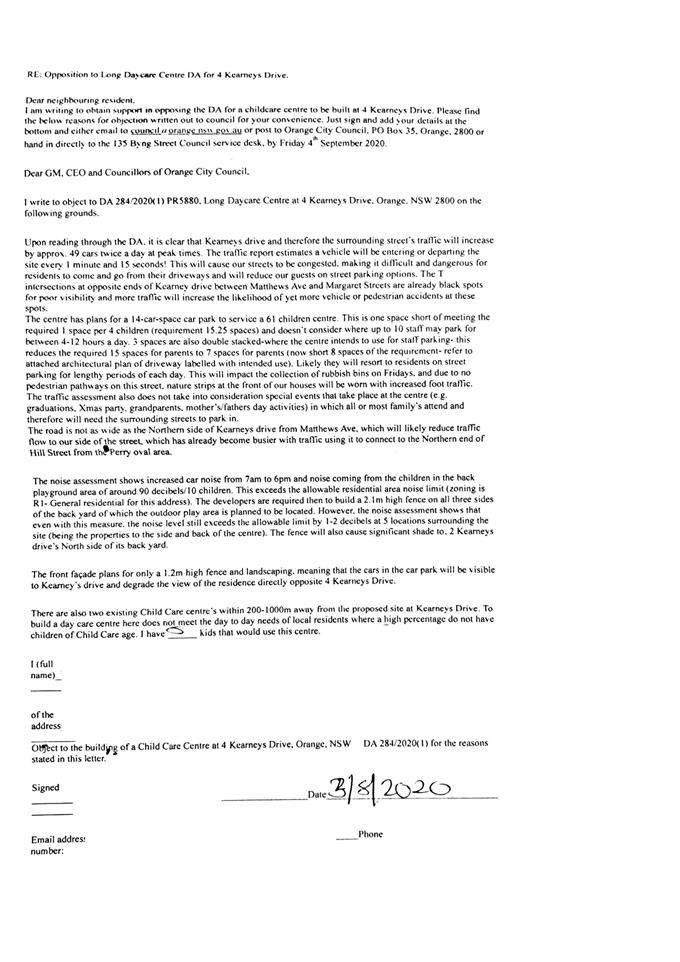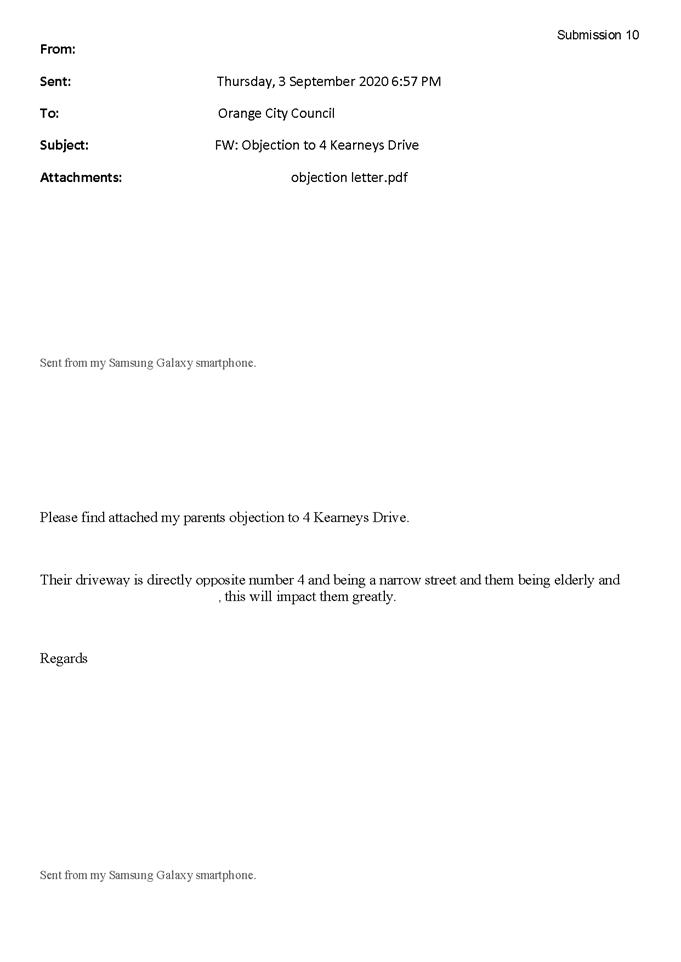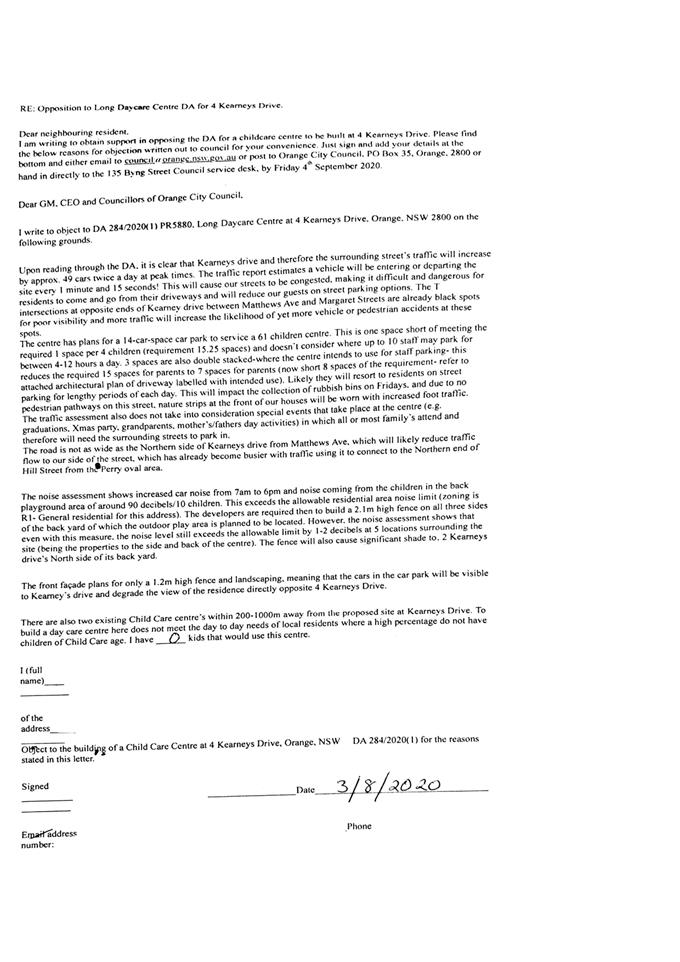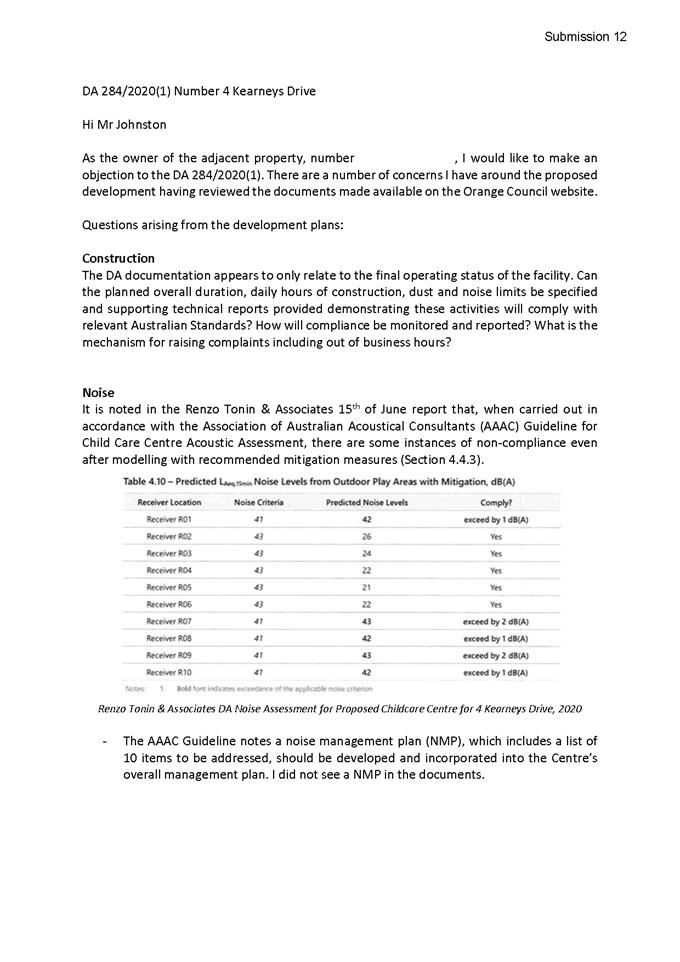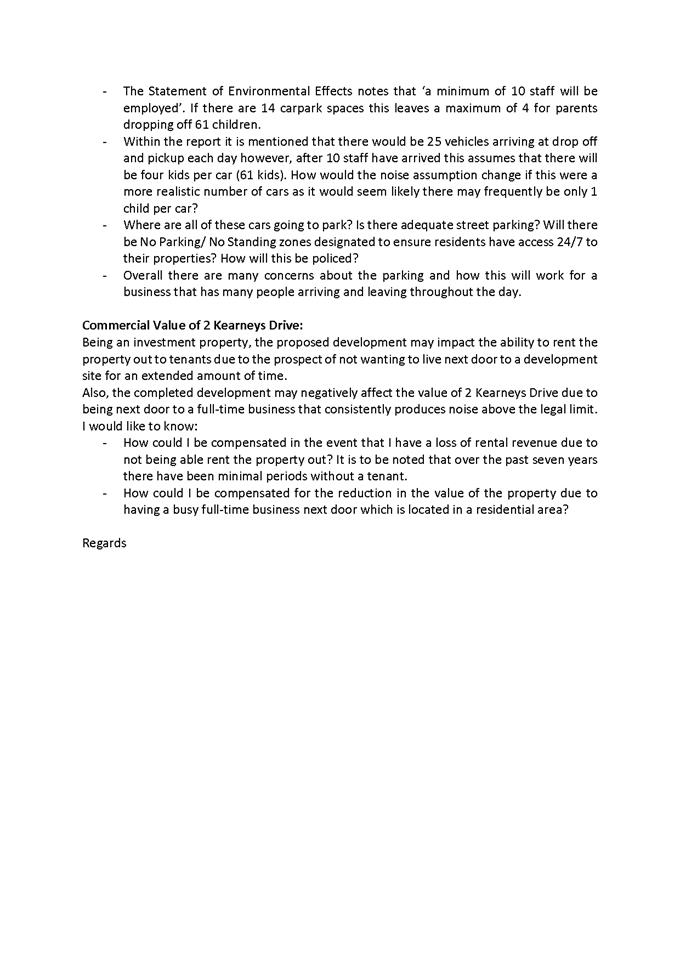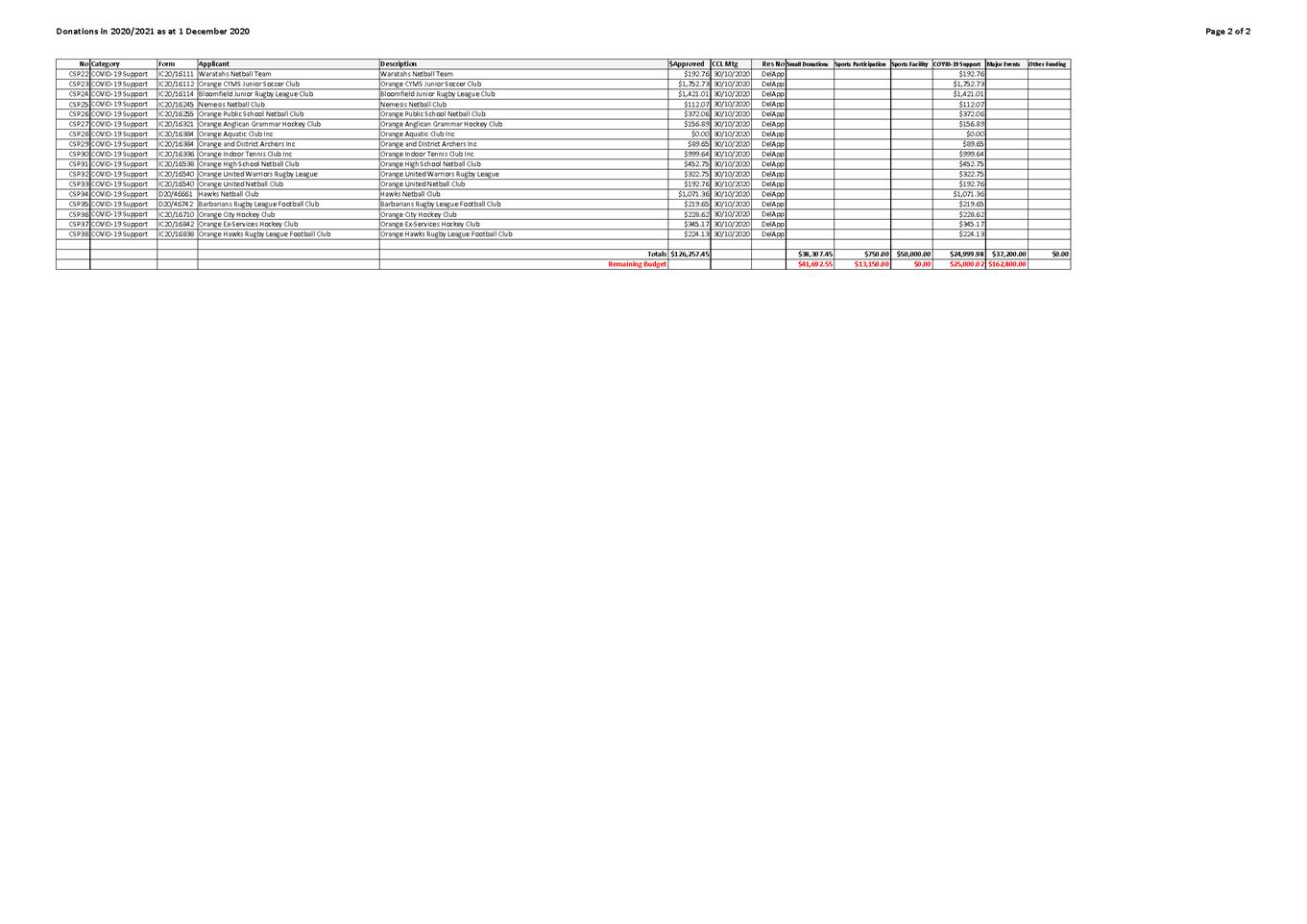
Ordinary Council Meeting
Agenda
15 December 2020
Notice is hereby given, in
accordance with the provisions of the Local Government Act 1993 that an Ordinary meeting of ORANGE CITY COUNCIL will be held in the
Council Chamber, Civic Centre, Byng
Street, Orange with an option of online conferencing platform ZOOM due to
COVID-19 requirements on Tuesday, 15 December 2020 commencing
at 7.00pm.
David
Waddell
Chief Executive Officer
For apologies please
contact Administration on 6393 8218.
1 Introduction
1.1 Apologies
and Leave of Absence
1.2 LIVESTREAMING
AND RECORDING
This Council Meeting is being livestreamed and
recorded. By speaking at the Council Meeting you agree to being livestreamed and
recorded. Please ensure that if and when you speak at this Council Meeting that
you ensure you are respectful to others and use appropriate language at all
times. Orange City Council accepts no liability for any defamatory or offensive
remarks or gestures made during the course of this Council Meeting. A recording
will be made for administrative purposes and will be available to Councillors.
1.3 Opening Prayer
1.4 Acknowledgement
of Country
I would like to acknowledge the Traditional Custodians
of the land on which we meet today, the people of the Wiradjuri Nation. I
pay my respects to Elders past and present, and extend those respects to
Aboriginal Peoples of Orange and surrounds, and Aboriginal people here with us
today.
1.5 Declaration
of pecuniary interests, significant non-pecuniary interests and less than
significant non-pecuniary interests
The
provisions of Chapter 14 of the Local Government Act, 1993 (the Act)
regulate the way in which Councillors and designated staff of Council conduct
themselves to ensure that there is no conflict between their private interests
and their public role.
The
Act prescribes that where a member of Council (or a Committee of Council) has a
direct or indirect financial (pecuniary) interest in a matter to be considered
at a meeting of the Council (or Committee), that interest must be disclosed as
soon as practicable after the start of the meeting and the reasons given for declaring
such interest.
As
members are aware, the provisions of the Local Government Act restrict any
member who has declared a pecuniary interest in any matter from participating
in the discussion or voting on that matter, and requires that member to vacate
the Chamber.
Council’s Code of Conduct provides that if members
have a non-pecuniary conflict of interest, the nature of the conflict must be
disclosed. The Code of Conduct also provides for a number of ways in which a
member may manage non pecuniary conflicts of interest.
|
Recommendation
It is recommended that Councillors now disclose any
conflicts of interest in matters under consideration by the Council at this
meeting.
|
2 Mayoral
Minutes
Nil
3 Confirmation of
Minutes of Previous Meeting
|
RECOMMENDATION
That the Minutes of the Ordinary
Meeting of Orange City Council held on 1 December 2020 (copies of which were
circulated to all members) be and are hereby confirmed as a true and accurate
records of the proceedings of the Council meeting held on 1 December 2020.
|
Attachments
1 Minutes
of the Ordinary Meeting of Orange City Council held on 1 December 2020
ORANGE CITY COUNCIL
MINUTES OF THE
Ordinary Council Meeting
HELD IN Council Chamber, Civic Centre, Byng Street, Orange
with an option of online conferencing platform ZOOM due to COVID-19
requirements
ON 1 December 2020
COMMENCING AT 7.00pm
1 Introduction
Cr R Kidd (Mayor), Cr G Taylor (Deputy Mayor), Cr K Duffy,
Cr J Hamling, Cr J McRae (Zoom), Cr T Mileto, Cr S Munro (Zoom), Cr S Nugent,
Cr S Romano (Zoom), Cr R Turner, Cr J Whitton
Chief Executive Officer, Acting
Director Corporate and Commercial Services (Redmond), Director Development
Services, Director Community, Recreation and Cultural Services, Director
Technical Services, Acting Manager Corporate Governance (Constantine), Manager
Financial Services, Executive Support Officer.
Nil
1.2 LIVESTREAMING
AND RECORDING
The Mayor advised that the meeting was being livestreamed
and recorded.
The Mayor Conducted an Acknowledgement of Country
1.5 Declaration
of pecuniary interests, significant
non-pecuniary interests and less than significant non-pecuniary interests
Cr McRae declared a significant pecuniary interest in items
2.2, 2.4 and 2.5 of the Planning and Development Committee Meeting as a
property owner in this area.
Cr Whitton declared a significant pecuniary interest in
items 2.2 and 2.5 of the Planning and Development Committee Meeting as a
property owner in this area
Cr Nugent declared a non-significant, non-pecuniary interest
in item 2.1 of the Finance Policy Committee as he is a committee member of
Goldseekers Orienteering.
THE MAYOR DECLARED THE ORDINARY
MEETING OF COUNCIL ADJOURNED FOR THE CONDUCT OF THE OPEN FORUM AT 7.04PM.
OPEN
FORUM
Planning and Development Committee
Meeting - Item 2.5 – Heritage Study Review – Post Exhibition and
Adoption
Brendan Stuart
outlined his concerns on the Heritage Study Review
THE MAYOR DECLARED THE ORDINARY
MEETING OF COUNCIL RESUME 7.09PM.
GOOD NEWS
FOLDER
Letter from Trojan Trays Australia thanking Mayor Kidd for
attending and speaking at their event.
2 Mayoral
Minutes
Nil
3 Confirmation
of Minutes of Previous Meeting
|
RESOLVED
- 20/425 Cr
J Hamling/Cr S Munro
That the Minutes of the
Ordinary Meeting of Orange City Council held on 17 November 2020 (copies of
which were circulated to all members) be and are hereby confirmed as a true
and accurate record of the proceedings of the Council meeting held on 17
November 2020.
|
THE MAYOR DECLARED THE ORDINARY
MEETING OF COUNCIL ADJOURNED FOR THE CONDUCT OF THE POLICY COMMITTEE MEETINGS
AT 7.11PM
THE MAYOR DECLARED THE ORDINARY
MEETING OF COUNCIL RESUMED AT 8.27PM
4 Notices
of Motion/Notices of Rescission
4.1 Orange Rail Action
Group Support
TRIM Reference: 2020/2359
|
|
RESOLVED
- 20/441 Cr
S Munro/Cr S Nugent
That Council endorse the Orange Rail Action Group Plan and
concepts for improved passenger rail services, presented to Council staff on
Monday 7 September 2020.
|
For: Cr Kidd, Cr Duffy, Cr Hamling, Cr McRae, Cr Mileto, Cr
Munro, Cr Nugent, Cr Romano, Cr Taylor, Cr Turner, Cr Whitton
Against:
Nil
Absent:
Nil
5 General
Reports
5.1 Low interest loan -
Orange Waratahs Sports Club Ltd
TRIM Reference: 2020/2227
|
|
RESOLVED
- 20/442 Cr
T Mileto/Cr R Kidd
That this item be deferred until the Council Meeting of 15
December 2020.
|
For: Cr Kidd, Cr Duffy, Cr Hamling, Cr McRae, Cr Mileto, Cr
Munro, Cr Nugent, Cr Romano, Cr Taylor, Cr Turner, Cr Whitton
Against:
Nil
Absent:
Nil
5.2 Orange Regional
Conservatorium Consultation Workshop - November 2020
TRIM Reference: 2020/2313
|
|
RESOLVED
- 20/443 Cr
K Duffy/Cr S Nugent
That the report on the Orange Regional Conservatorium
Consultation Workshop be acknowledged.
|
For: Cr Kidd, Cr Duffy, Cr Hamling, Cr McRae, Cr Mileto, Cr
Munro, Cr Nugent, Cr Romano, Cr Taylor, Cr Turner, Cr Whitton
Against:
Nil
Absent:
Nil
5.3 Roads and Transport
Congress - 16 and 17 November 2020
TRIM Reference: 2020/2328
|
|
RESOLVED
- 20/444 Cr
R Kidd/Cr K Duffy
That attendance by Cr Kidd and Cr Duffy at the Roads,
Regions and Resilience Transport Congress held in Wagga on 16/17 November
2020 along with the summary be noted.
|
For: Cr Kidd, Cr Duffy, Cr Hamling, Cr McRae, Cr Mileto, Cr
Munro, Cr Nugent, Cr Romano, Cr Taylor, Cr Turner, Cr Whitton
Against:
Nil
Absent:
Nil
5.4 Adoption of the
Blackmans Swamp Creek and Ploughmans Creek Floodplain Risk Management Study
and Plan - October 2020
TRIM Reference: 2020/2339
|
|
RESOLVED
- 20/445 Cr
R Kidd/Cr R Turner
That Council adopt the Blackmans Swamp Creek and
Ploughmans Creek Floodplain Risk Management Study and Plan, October 2020 but
defer the planning and development controls shown in Section 5.9 of the report
until such time that the Department of Planning Industry and Environment
allows flood controls on land above the 1% flood.
|
For: Cr Kidd, Cr Duffy, Cr Hamling, Cr McRae, Cr Mileto, Cr
Munro, Cr Nugent, Cr Romano, Cr Taylor, Cr Turner, Cr Whitton
Against:
Nil
Absent:
Nil
5.5 NetWaste Quotation
F3536 for Regional Household Chemical Collection 2021
TRIM Reference: 2020/2347
|
|
RESOLVED
- 20/446 Cr
S Nugent/Cr S Munro
That Council confirms its acceptance of the quotation
submitted by Environmental Treatment Solutions (ETS) dated 25 September 2020,
and to take part in the 2021 Regional Household Chemical Clean Out contract.
The contract will only be effective upon execution of the
contract document by both Council and ETS. Council is not legally bound until
the contract is executed by both parties.
|
For: Cr Kidd, Cr Duffy, Cr Hamling, Cr McRae, Cr Mileto, Cr
Munro, Cr Nugent, Cr Romano, Cr Taylor, Cr Turner, Cr Whitton
Against:
Nil
Absent:
Nil
5.6 2020 - 2021 Fees and
Charges Amendments and Additions
TRIM Reference: 2020/2402
|
|
RESOLVED
- 20/447 Cr
S Nugent/Cr J Hamling
Council resolves to place the following fees on exhibition
for the information of the community for a period of 28 days.
|
For: Cr Kidd, Cr Duffy, Cr Hamling, Cr McRae, Cr Mileto,
Cr Munro, Cr Nugent, Cr Romano, Cr Taylor, Cr Turner, Cr Whitton
Against: Nil
Absent: Nil
6 Closed
Meeting
In accordance with the Local Government Act 1993, and
the Local Government (General) Regulation 2005, in the opinion of the General
Manager, the following business is of a kind as referred to in Section 10A(2)
of the Act, and should be dealt with in a Confidential Session of the Council
meeting closed to the press and public.
In response to a question from the Mayor, the Chief
Executive Officer advised that no written submissions had been received
relating to any item listed for consideration by the Closed Meeting of Council.
The Mayor extended an invitation to any member of the public
present at the meeting to make a presentation to the Council as to whether the
meeting should be closed for a particular item.
|
RESOLVED - 20/448 Cr
J Whitton/Cr S Nugent
That Council adjourn into a Closed Meeting and members of
the press and public be excluded from the Closed Meeting, and access to the
correspondence and reports relating to the items considered during the course
of the Closed Meeting be withheld unless declassified by separate resolution.
This action is taken in accordance with Section 10A(2) of the Local
Government Act, 1993 as the items listed come within the following
provisions:
6.1 Sale
of land - Lady Peel Close/Escort Way, Orange
This item is classified CONFIDENTIAL under the
provisions of Section 10A(2) of the Local Government Act 1993, which permits
the meeting to be closed to the public for business relating to (c)
information that would, if disclosed, confer a commercial advantage on a
person with whom the Council is conducting (or proposes to conduct) business.
6.2 Submission
Redactions
This item is classified CONFIDENTIAL under the
provisions of Section 10A(2) of the Local Government Act 1993, which permits
the meeting to be closed to the public for business relating to (a) personnel
matters concerning particular individuals (other than councillors).
|
The Mayor declared the Ordinary Meeting of Council adjourned
for the conduct of the Closed Meeting at 8.42pm.
The Mayor declared the Ordinary
Meeting of Council resumed at 8.54pm.
7 Resolutions
from Closed Meeting
The Chief Executive Officer read out
the following resolutions made in the Closed Meeting of Council.
6.1 Sale of land - Lady
Peel Close/Escort Way, Orange
TRIM Reference: 2020/2354
|
|
Recommendation Cr
S Munro/Cr S Nugent
1
That Council sell Lot 202 DP1257565 (2 Lady Peel Close) for the sum of
$302,500.00 (GST incl).
2
That Council sell Lot 207 DP1257565 (372 The Escort Way) for the sum
of $330,000.00 (GST incl).
3
Authorise the Chief Executive Officer to negotiate the sale of Lots
201, 203, 206 and 208 DP1257765, negotiating within 10% of the listing price.
4
Authorise the Chief Executive Officer to complete the contractual
processes to complete the land sale for Lots 201, 202, 203, 206, 207 and 208
DP1257565.
5
That the proceeds of sale for Lots 201, 202, 203, 206, 207 and 208
DP1257565 be transferred to the Land Development Reserve.
6
That permission be granted for the use of the Council Seal on any
relevant document if required.
|
|
AMENDMENT Cr
K Duffy/Cr G Taylor
That this item be deferred.
|
|
THE AMENDMENT WAS WITHDRAWN
|
|
RESOLVED
- 20/449 Cr
S Munro/Cr S Nugent
1
That Council sell Lot 202 DP1257565 (2 Lady Peel Close) for the sum of
$302,500.00 (GST incl).
2 That
Council sell Lot 207 DP1257565 (372 The Escort Way) for the sum of
$330,000.00 (GST incl).
3
Authorise the Chief Executive Officer to negotiate the sale of Lots
201, 203, 206 and 208 DP1257765, negotiating within 10% of the listing price.
4
Authorise the Chief Executive Officer to complete the contractual
processes to complete the land sale for Lots 201, 202, 203, 206, 207 and 208
DP1257565.
5
That the proceeds of sale for Lots 201, 202, 203, 206, 207 and 208
DP1257565 be transferred to the Land Development Reserve.
6
That permission be granted for the use of the Council Seal on any
relevant document if required.
|
For: Cr Kidd, Cr Duffy, Cr Hamling, Cr McRae, Cr Mileto, Cr
Munro, Cr Nugent, Cr Romano, Cr Taylor, Cr Turner, Cr Whitton
Against:
Nil
Absent:
Nil
6.2 Submission Redactions
TRIM Reference: 2020/2415
|
|
RESOLVED
- 20/450 Cr
S Nugent/Cr K Duffy
That the information in this report be acknowledged.
|
For: Cr Kidd, Cr Duffy, Cr Hamling, Cr McRae, Cr Mileto, Cr
Munro, Cr Nugent, Cr Romano, Cr Taylor, Cr Turner, Cr Whitton
Against:
Nil
Absent:
Nil
Cr Munro advised that Fusion and the
Uniting Church will be providing a Christmas lunch and encouraged others to
volunteer.
The Meeting
Closed at 9.02PM.
This is Page Number 13 and the Final
Page of the Minutes of the Ordinary Meeting of Orange City Council held on 1
December 2020.
4 Notices
of Motion/Notices of Rescission
4.1 Aquatic
Centre Admission Fee - Australia Day 2021
RECORD
NUMBER: 2020/2549
I, CR Kevin Duffy, wish to move the
following Notice of Motion at the Council Meeting of 15 December 2020:
|
Motion
That Council allow free admission to the Orange Aquatic
Centre for Australia Day, Tuesday 26th January 2021.
|
Signed
Cr Kevin Duffy
STAFF COMMENT
Average daily admissions for the period 30 December to 5
January inclusive are 1,146 per day. The average admission revenue during this
period per day is $5,075 per day.
Estimated cost per day in entrance fees forgone is $5,075.
Financial Implications
Free entry for Australia Day will have a negative impact of
approximately $5,075 per day.
This amount is not included in Council’s Delivery /
Operational Plan.
POLICY AND GOVERNANCE IMPLICATIONS
Nil
4.2 Bulky
Waste Drop-off Service
RECORD
NUMBER: 2020/2550
We, CRS
Kevin Duffy and SAM ROMANO
wish to move the following Notice of Motion at the Council Meeting of 15
December 2020:
|
Motion
That Council resolves:
1 To
allow residents and ratepayers to deliver bulk waste/goods to the Ophir Road
Resource Recovery Centre free of charge.
2 That
this service be limited to a Ute Load/Table Top or 6 x 4 Trailer load.
|
Signed
Cr Kevin Duffy
STAFF COMMENT
Waste Services cannot be cross subsidised from the general
fund and as such fees are levied to cover costs of the service and future land
fill replacement. i.e. this funding cannot come out of general fund.
While staff understand the sentiment, the cost of any such
service will be borne by the waste reserves meaning the service will have an
impact on service delivery in the future.
Financial Implications
The current fees and charges are $47.65 per ute or trailer
load and if the service is approved this would draw down on the waste reserve
possibly requiring a special rate increase in the waste levies next Financial
Year.
POLICY AND GOVERNANCE IMPLICATIONS
Nil
5 General
Reports
5.1 Recommendations
and Resolutions from Policy Committees
TRIM
REFERENCE: 2020/2570
AUTHOR: Nick
Redmond, Acting Director Corporate and Commercial Services
EXECUTIVE SUMMARY
Council’s Policy Committees (Planning and Development
Committee, Employment and Economic Development Policy Committee, Infrastructure
Policy Committee, Sport and Recreation Policy Committee, Environmental
Sustainability Policy Committee, Finance Policy Committee and Services Policy
Committee) have delegation to determine matters before those Committees, with
the exception of items that impact on Council’s Delivery Operational
Plan.
This report provides minutes of the Policy Committees held
since the last meeting. Resolutions made by the Committees are for noting, and
Recommendations are presented for adoption or amendment by Council.
Link To Delivery/OPerational Plan
The recommendation in this report relates to the
Delivery/Operational Plan strategy “17.1 Collaborate - Provide
representative, responsible and accountable community governance”.
Financial Implications
Nil
Policy and Governance Implications
Nil
|
Recommendation
1 That
the resolutions made by the Planning and Development Committee at its meeting
held on 1 December 2020 be noted.
2 That
the resolutions made by the Employment and Economic Development Policy
Committee at its meeting held on 1 December 2020 be noted.
3 That
the resolutions made by the Infrastructure Policy Committee at its meeting held
on 1 December 2020 be noted.
2 That
the resolutions made by the Sport and Recreation Policy Committee at its
meeting held on 1 December 2020 be noted.
4 That
the resolutions made by the Environmental Sustainability Policy Committee at
its meeting held on 1 December 2020 be noted.
5 That the resolutions
made by the Finance Policy Committee at its meeting held on 1 December
2020 be noted.
6 That
the resolutions made by the Services Policy Committee at its meeting held on
1 December 2020 be noted.
|
further considerations
Consideration has been given to the recommendation’s
impact on Council’s service delivery; image and reputation; political;
environmental; health and safety; employees; stakeholders and project
management; and no further implications or risks have been identified.
SUPPORTING INFORMATION
Planning
and Development Committee
At the Planning and Development
Committee meeting held on 1 December 2020, all resolutions were made under
delegation, and the minutes are presented for noting.
Employment
and Economic Development Committee
At the Employment and Economic
Development Committee meeting held on 1 December 2020, all resolutions were
made under delegation, and the minutes are presented for noting.
Infrastructure
Policy Committee
At the Infrastructure Policy
Committee meeting held on 1 December 2020, all resolutions were made under
delegation, and the minutes are presented for noting.
Sport
and Recreation Policy Committee
At the Sport and Recreation Policy
Committee meeting held on 1 December 2020, all resolutions were made under
delegation, and the minutes are presented for noting.
Environmental
Sustainability Policy Committee
At the Environmental Sustainability
Policy Committee meeting held on 1 December 2020, all resolutions were made under
delegation, and the minutes are presented for noting.
Finance Policy Committee
At the Finance Policy Committee
meeting held on 1 December 2020, all resolutions were made under delegation,
and the minutes are presented for noting.
Services
Policy Committee
At the Services Policy Committee
meeting held on 1 December 2020, all resolutions were made under delegation,
and the minutes are presented for noting.
Attachments
1 PDC
1 December 2020 Minutes, 2020/2434⇩
2 EEDPC
1 December 2020 Minutes, 2020/2435⇩
3 IPC
1 December 2020 Minutes, 2020/2436⇩
4 SRPC
1 December 2020 Minutes, 2020/2439⇩
5 ESPC
1 December 2020 Minutes, 2020/2440⇩
6 FPC
1 December 2020 Minutes, 2020/2441⇩
7 SPC
1 December 2020 Minutes, 2020/2442⇩
Attachment 1 PDC 1 December
2020 Minutes
ORANGE CITY COUNCIL
MINUTES OF THE
Planning and Development
Committee
HELD IN COUNCIL CHAMBER, CIVIC CENTRE, BYNG STREET, ORANGE
WITH AN OPTION OF ONLINE CONFERENCING PLATFORM ZOOM DUE TO COVID-19
REQUIREMENTS
ON 1 December 2020
COMMENCING AT 7.11PM
1 Introduction
Cr R Turner (Chairperson), Cr R Kidd (Mayor), Cr G Taylor
(Deputy Mayor), Cr K Duffy, Cr J Hamling, Cr J McRae (Zoom), Cr T Mileto, Cr S
Munro (Zoom), Cr S Nugent, Cr S Romano (Zoom), Cr J Whitton
Chief Executive Officer, Acting Director Corporate and
Commercial Services (Redmond), Director Development Services, Director
Community, Recreation and Cultural Services, Director Technical Services,
Acting Manager Corporate Governance (Constantine), Manager Financial Services,
Executive Support Officer
Nil
1.1 DECLARATION
OF PECUNIARY INTERESTS, SIGNIFICANT NON-PECUNIARY INTERESTS AND LESS THAN
SIGNIFICANT NON-PECUNIARY INTERESTS
Cr McRae declared a significant, pecuniary interests in
items 2.2 - Development Application DA 402/2020(1) - 114 Moulder Street, 2.4 -
Development Application DA 133/2020(1) - 155 Kite Street and 115 Endsleigh
Avenue and 2.5 – Heritage Study Review - Post Exhibition and Adoption -
as she owns the property.
Cr Whitton declared a significant, pecuniary interest in
items 2.2 - Development Application DA 402/2020(1) - 114 Moulder Street and 2.5
– Heritage Study Review - Post Exhibition and Adoption – as he owns
property in the area.
2 General
Reports
2.1 Items
Approved Under the Delegated Authority of Council
TRIM Reference: 2020/2190
|
|
RESOLVED - 20/426 Cr
R Kidd/Cr K Duffy
That Council resolves to
acknowledge the information provided in the report by the Manager Development
Assessments on Items Approved Under the Delegated Authority of Council.
|
For: Cr Kidd, Cr Duffy, Cr Hamling, Cr McRae, Cr Mileto, Cr
Munro, Cr Nugent, Cr Romano, Cr Taylor, Cr Turner, Cr Whitton
Against:
Nil
Absent:
Nil
Cr Nugent asked for clarification
around the requirement for installation of disabled parking.
The Director Development Services
stated that the changes are in relation to the Occupation Certificate
conditions that require certain works to be completed before an Occupation
Certificate can be issued. The application was amended to permit Occupation and
the completion of the carpark at a later date.
|
QUESTION
TAKEN ON NOTICE
Cr Mileto asked for an update regarding the Men’s
Shed at Lucknow.
|
** Cr McRae and Cr Whitton left the chamber with the time
being 7.14pm. **
2.2 Development
Application DA 402/2020(1) - 114 Moulder Street
TRIM Reference: 2020/2329
|
|
Cr McRae declared a significant, pecuniary interest as
the property owner, left the meeting and did not participate in discussion or
voting on this item.
Cr Whitton declared a significant, pecuniary interest
as an owner of a property opposite this address, left the meeting and did not
participate in discussion or voting on this item.
|
|
RESOLVED - 20/427 Cr
S Nugent/Cr K Duffy
That Council consents to
development application DA 402/2020(1) for
Dwelling House (part demolition, alterations and additions (two storey))
at Lot 2 DP 13567 – 114 Moulder Street, Orange pursuant to the conditions of consent in the attached
Notice of Approval.
|
For: Cr Kidd, Cr Duffy, Cr Hamling, Cr Mileto, Cr Munro, Cr
Nugent, Cr Romano, Cr Taylor, Cr Turner
Against:
Nil
Absent:
Cr McRae, Cr Whitton
**Cr McRae and Cr Whitton returned
to the meeting with the time being 7.15pm**
2.3 Development
Application DA 210/2019(1) - Woodward Street - Duntryleague Guest House
TRIM Reference: 2020/2350
|
|
RESOLVED - 20/428 Cr
S Munro/Cr S Romano
That Council consents to
development application DA 210/2019(1) for
Alterations and Additions to Duntryleague Guest House (including upgrading
works and rear extension) at Lot 16 DP 1120534 - Woodward
Street, Orange pursuant to the conditions of
consent in the attached Notice of Approval.
|
For: Cr Kidd, Cr Duffy, Cr Hamling, Cr McRae, Cr Mileto, Cr
Munro, Cr Nugent, Cr Romano, Cr Taylor, Cr Turner, Cr Whitton
Against:
Nil
Absent:
Nil
** Cr McRae left the chamber with the time being 7.17pm.
**
2.4 Development
Application DA 133/2020(1) - 155 Kite Street and 115 Endsleigh Avenue
TRIM Reference: 2020/2352
|
|
Cr McRae declared a significant, pecuniary interest as
an owner of property in this area, left the meeting and did not participate
in discussion or voting on this item.
|
|
RESOLVED - 20/429 Cr
J Hamling/Cr K Duffy
That Council consents to
development application DA 133/2020(1) for
Demolition (ancillary structures and rear skillion of existing dwelling),
Hotel or Motel Accommodation (four storey building), Alterations and
Additions (existing building), and Business Identification Signage at Lot
11 DP 1002968, Lot 1 DP 770265, Lot 8 DP 1069072 - 155 Kite Street and
115 Endsleigh Avenue, Orange pursuant to the
conditions of consent in the attached Notice of Approval.
|
For: Cr Kidd, Cr Duffy, Cr Hamling, Cr Mileto, Cr Munro, Cr
Nugent, Cr Romano, Cr Taylor, Cr Turner, Cr Whitton
Against:
Nil
Absent:
Cr McRae
Cr Nugent asked for an explanation of
how the height issue of the development was addressed in the application.
The Director Development Services
advised that the LEP has provisions to exceed the height in certain
circumstances. It was considered to be more beneficial in terms of the
protection of heritage to have the motel building lower adjacent to the railway
footbridge in exchange for permitting the centre of the building to be above
the prescribed height limits.
|
MATTER
ARISING
Cr Turner requested that a letter be written to John
Holland Rail (or the new operator as required) to seek renovation of the foot
bridge.
|
2.5 Heritage
Study Review - Post Exhibition and Adoption
TRIM Reference: 2020/2362
|
|
Cr McRae declared a significant, pecuniary interest as
an owner of property in this area. Due to interest I previous item, Cr McRae
has already left the meeting and did not participate in discussion or voting
on this item.
Cr Whitton declared a significant, pecuniary interest
as an owner of property in this area, left the meeting and did not
participate in discussion or voting on this item.
|
|
RESOLVED - 20/430 Cr
R Turner/Cr S Munro
1 That
the report by Council’s Senior Planner be acknowledged.
2 That the following recommendations be
adopted:
· The
proposed Heritage Conservation Areas known as Bletchington, Newman Park and
Blackman’s Swamp Heritage Conservation Areas as described in the
Heritage Study Review and as shown on the accompanying maps be adopted.
· The
extension to the existing Central, Duration Cottages and Glenroi Heritage
Conservation Areas as described in the Heritage Study Review and as shown on
the accompanying maps be adopted.
· The
name of the existing Heritage Conservation Area known as Central Heritage
Conservation Area, be renamed: Dalton Central Heritage Conservation Area.
· The
name of the existing Heritage Conservation Area known as the Duration
Cottages Heritage Conservation Area be renamed: Glenroi Duration Cottages
Heritage Conservation Area.
· The
name of the existing Heritage Conservation Area known as Glenroi Heritage
Conservation Area be renamed: Endsleigh Heritage Conservation Area.
· The
name of the existing Heritage Conservation Area known as East Orange Heritage
Conservation Area be renamed: Bowen Heritage Conservation Area.
|
Continued over page
|
· The
following properties are recommended to be adopted as Local Heritage Items:
o 117
Sampson Street
o 49
Prince Street
o 139
Margaret Street
o 5
Hawkins Lane
o 9
Hawkins Lane
o 11
Hawkins Lane
o 3
Hawkins Lane
o 6
Hawkins Lane
o 4
Hawkins Lane
o 2
Hawkins Lane
o 20
Nile Street
o 22
Nile Street
o 22
Nile Street
o 26
Nile Street
o 171
Margaret Street
o 110
Matthews Avenue
o 125
Prince Street
o 125
Dalton Street
o 112
Dalton Street
o 121
Gardiner Road
o 123
Gardiner Road
o 102
Gardiner Road
o 106
Gardiner Road
o 108
Gardiner Road
o 105
Spring Street
o 15
Capps Lane, Huntley
o ‘Waverton’
76 Blunt Road, Huntley (as per the described curtilage)
o ‘Homeleigh’ 359 Phoenix Mine
Road, Huntley
|
For: Cr Kidd, Cr Duffy, Cr Hamling, Cr Mileto, Cr Munro, Cr
Nugent, Cr Taylor, Cr Turner
Against:
Cr Romano
Absent:
Cr McRae, Cr Whitton
Cr Nugent asked how Council took into
consideration the concerns such as those expressed by Mr Stuart.
The Director Development Services
stated that an information session was held with approximately 20 persons in
attendance which provided an opportunity to meet with Council’s heritage
advisors and discuss any concerns.
Cr Hamling asked if there were more hurdles
for home owner now in those heritage areas and whether the heritage advice was
free.
The Director Development Services
stated that where there are small maintenance issues, these can be exempt in
heritage areas and Council does provide a qualified heritage architect free of
charge.
Cr Romano asked if affected residents
got a say on their properties being deemed heritage.
The Director Development Services
stated that every house within the conservation areas received letters in
regards to the process. If they are added to the list, the homes would have
been inspected to determine significance.
|
QUESTION
TAKEN ON NOTICE
Cr Duffy asked why the Heritage Study Review report does
not address carparks, in particular the Eastern side of Wraprite which was
the original Onley car park and what was the reason for this?
|
**Cr
McRae and Cr Whitton returned to the meeting with the time being 7.41pm**
The Meeting
Closed at 7.44PM
Employment and Economic Development
Policy Committee 15 December 2020
Attachment 2 EEDPC 1
December 2020 Minutes
ORANGE CITY COUNCIL
MINUTES OF THE
Employment and Economic
Development Policy Committee
HELD IN COUNCIL CHAMBER, CIVIC CENTRE, BYNG STREET, ORANGE
WITH AN OPTION OF ONLINE CONFERENCING PLATFORM ZOOM DUE TO COVID-19
REQUIREMENTS
ON 1 December 2020
COMMENCING AT 7.44pm
1 Introduction
Cr T Mileto (Chairperson), Cr R Kidd (Mayor), Cr G Taylor
(Deputy Mayor), Cr K Duffy, Cr J Hamling, Cr J McRae (Zoom), Cr S Munro (Zoom),
Cr S Nugent, Cr S Romano (Zoom), Cr R Turner, Cr J Whitton
Chief Executive Officer, Acting Director Corporate and
Commercial Services (Redmond), Director Development Services, Director
Community, Recreation and Cultural Services, Director Technical Services, Acting
Manager Corporate Governance (Constantine), Manager Financial Services,
Executive Support Officer
APOLOGIES AND LEAVE OF ABSENCE
Nil
1.1 DECLARATION OF PECUNIARY INTERESTS,
SIGNIFICANT NON-PECUNIARY INTERESTS AND LESS THAN SIGNIFICANT NON-PECUNIARY
INTERESTS
Nil
2 Committee
Minutes
2.1 Minutes
of the Economic Development Community COMMITTEE held 21 October 2020
TRIM Reference: 2020/2243
|
|
RESOLVED - 20/431 Cr
R Kidd/Cr S Nugent
1 That
Council acknowledge the reports presented to the Economic Development
Community Committee at its meeting held on 21 October 2020.
2 That
the minutes of the Economic Development Community Committee at its meeting
held on 21 October 2020 be adopted.
|
For: Cr Kidd, Cr Duffy, Cr Hamling, Cr McRae, Cr Mileto, Cr
Munro, Cr Nugent, Cr Romano, Cr Taylor, Cr Turner, Cr Whitton
Against:
Nil
Absent:
Nil
2.2 Minutes
of the Economic Development Community COMMITTEE held 18 November 2020
TRIM Reference: 2020/2391
|
|
RESOLVED - 20/432 Cr
R Kidd/Cr J Whitton
1 That
Council acknowledge the reports presented to the Economic Development
Community Committee at its meeting held on 18 November 2020.
2 That
the minutes of the Economic Development Community Committee at its meeting
held on 18 November 2020 be adopted.
|
For: Cr Kidd, Cr Duffy, Cr Hamling, Cr McRae, Cr Mileto, Cr
Munro, Cr Nugent, Cr Romano, Cr Taylor, Cr Turner, Cr Whitton
Against:
Nil
Absent:
Nil
The Meeting
Closed at 7.46PM.
Infrastructure Policy Committee
15 December 2020
Attachment 3 IPC 1
December 2020 Minutes
ORANGE CITY COUNCIL
MINUTES OF THE
Infrastructure Policy
Committee
HELD IN COUNCIL CHAMBER, CIVIC CENTRE, BYNG STREET, ORANGE
WITH AN OPTION OF ONLINE CONFERENCING PLATFORM ZOOM DUE TO COVID-19
REQUIREMENTS
ON 1 December 2020
COMMENCING AT 7.46pm
1 Introduction
Cr J Whitton (Chairperson), Cr R Kidd (Mayor), Cr G Taylor
(Deputy Mayor), Cr K Duffy, Cr J Hamling, Cr J McRae (Zoom), Cr T Mileto, Cr S
Munro (Zoom), Cr S Nugent, Cr S Romano (Zoom), Cr R Turner
Chief Executive Officer, Acting Director Corporate and
Commercial Services (Redmond), Director Development Services, Director
Community, Recreation and Cultural Services, Director Technical Services, Acting
Manager Corporate Governance (Constantine), Manager Financial Services,
Executive Support Officer
APOLOGIES AND LEAVE OF ABSENCE
Nil
1.1 DECLARATION OF PECUNIARY INTERESTS,
SIGNIFICANT NON-PECUNIARY INTERESTS AND LESS THAN SIGNIFICANT NON-PECUNIARY INTERESTS
Nil
2 Committee
Minutes
2.1 Minutes
of the City of Orange Traffic Committee Meeting - 10 November 2020
TRIM Reference: 2020/2296
|
|
RESOLVED - 20/433 Cr
S Romano/Cr S Munro
That Council resolves:
1 To
acknowledge the reports presented to the City of Orange Traffic Committee at
its meeting of 10 November 2020.
2 To
determine Recommendations 3.1, 3.2, 3.3, 3.4 and 3.5 from the minutes of the
City of Orange Traffic Committee meeting of 10 November 2020 being:
3.1 That
Council install stop signs and double barrier line marking at the Chapman
Street and Spring Street intersection as per figure 2 in this report.
3.2 That
Council install “No Stopping” signs at the Racecourse Road and
Kenna Street intersection, 10 metres from the corner, as per Figure A of this
report.
3.3 That
this item be deferred until blackspot funding is announced.
3.4 That
Council adopt Coronation Drive (TF 223) Lines and Signs.
3.5 That
Council allow Taxis to undertake a U-Turn at the Anson Street layback near
the Ex-Services Club and that this be reviewed in 6 months.
3 That
the remainder of the minutes of the City of Orange Traffic Committee Meeting
of 10 November 2020 be adopted.
|
For: Cr Kidd, Cr Duffy, Cr Hamling, Cr McRae, Cr Mileto, Cr
Munro, Cr Nugent, Cr Romano, Cr Taylor, Cr Turner, Cr Whitton
Against:
Nil
Absent:
Nil
Cr Mileto asked if there was any more
information regarding the crossing alterations after the near miss on the rail
crossing.
The Director Technical Services
stated that with Chapman Street being a straight line and Spring Street bending
around it will support John Holland Rail’s improvements to safety with a
Stop Sign on Chapman Street and discussion on a realignment of the intersection
with centre lines markings.
Cr McRae asked if U-Turns would be
permitted both North and Southbound.
The Director Technical Services
stated that the U-Turn would only be permitted for taxis heading south to
collect passengers at the Ex-Services Club. The Northbound No U-Turn sign
will stand.
Cr Duffy asked if the Traffic
Committee collected data on how accidents occurred.
The Director Technical Services
stated that the State collects data where there was a significant
accident/injury otherwise minor accidents do not get recorded.
|
QUESTION
TAKEN ON NOTICE
Cr Munro asked if the Line Markings in the Woolworths
Carpark were to be re-painted before Christmas.
|
3 General
Reports
|
TRIM Reference: 2020/2326
|
|
RESOLVED - 20/434 Cr
J Hamling/Cr S Nugent
That the information provided in the report on Current
Works be acknowledged.
|
For: Cr Kidd, Cr Duffy, Cr Hamling, Cr McRae, Cr Mileto, Cr
Munro, Cr Nugent, Cr Romano, Cr Taylor, Cr Turner, Cr Whitton
Against:
Nil
Absent:
Nil
|
QUESTION
TAKEN ON NOTICE
Cr Taylor asked if Council could receive a report on
Council’s rights and what can and cannot be enforced in relation to
long grass.
|
|
QUESTION
TAKEN ON NOTICE
Cr Mileto requested a status update on the Fire Hydrant
Audits particularly in Lucknow and Springhill.
|
Cr Nugent asked for an expected
completion date of Stage 3 of the Southern Feeder Road.
The Director Technical Services
advised that the current closed section is due for re-opening in Mid-February
2021 then works will move to the other section towards the Mitchell Highway
with completion due around June 2021.
The Meeting
Closed at 8.11PM
Sport and Recreation Policy
Committee
15 December 2020
Attachment 4 SRPC 1
December 2020 Minutes
ORANGE CITY COUNCIL
MINUTES OF THE
Sport and Recreation Policy
Committee
HELD IN Council Chamber, Civic Centre, Byng Street, Orange
ON 1 December 2020
COMMENCING AT 8.12pm
1 Introduction
Cr J Hamling (Chairperson), Cr R Kidd (Mayor), Cr G Taylor
(Deputy Mayor), Cr K Duffy, Cr J McRae (Zoom), Cr T Mileto, Cr S Munro (Zoom),
Cr S Nugent, Cr S Romano (Zoom), Cr R Turner, Cr J Whitton
Chief Executive Officer, Acting Director Corporate and
Commercial Services (Redmond), Director Development Services, Director
Community, Recreation and Cultural Services, Director Technical Services,
Acting Manager Corporate Governance (Constantine), Manager Financial Services,
Executive Support Officer
APOLOGIES AND LEAVE OF ABSENCE
Nil
1.1 DECLARATION OF PECUNIARY INTERESTS,
SIGNIFICANT NON-PECUNIARY INTERESTS AND LESS THAN SIGNIFICANT NON-PECUNIARY
INTERESTS
Nil
2 Committee
Minutes
2.1 Minutes
of the Orange Showground Community Committee – 2 September 2020
TRIM Reference: 2020/2213
|
|
RESOLVED - 20/435 Cr
R Kidd/Cr S Munro
1 That
Council acknowledge the reports presented to the Orange Showground Community
Committee at its meeting held on 2 September 2020.
2 That
the minutes of the Orange Showground Community Committee at its meeting held
on 2 September 2020 be adopted.
|
For: Cr Kidd, Cr Duffy, Cr Hamling, Cr McRae, Cr Mileto, Cr
Munro, Cr Nugent, Cr Romano, Cr Taylor, Cr Turner, Cr Whitton
Against:
Nil
Absent:
Nil
2.2 Minutes
of the Australia Day Community Committee Meeting – 14 October 2020
and 4 November 2020
TRIM Reference: 2020/2152
|
|
RESOLVED - 20/436 Cr
R Turner/Cr T Mileto
1 That
Council acknowledge the reports presented to the Australia Day Community
Committee at its meetings of 14 October 2020 and 4 November 2020.
2 That
the remainder of the minutes of the Australia Day Community Committee
Meetings of 14 October 2020 and 4 November 2020 be adopted.
|
For: Cr Kidd, Cr Duffy, Cr Hamling, Cr McRae, Cr Mileto, Cr
Munro, Cr Nugent, Cr Romano, Cr Taylor, Cr Turner, Cr Whitton
Against:
Nil
Absent:
Nil
Cr McRae asked if not supporting the
Environmental Citizen Award sponsored by Return and Earn for the Australia Day
awards had an effect on the city’s ability to obtain an additional
facility.
The Director Technical Services
stated that the Manager Waste Services and Technical Support is currently
working with a local provider to install another facility.
Cr Mileto congratulated staff on the
condition of the fields and facilities at Jack Brabham Park which have received
positive feedback from the Women’s Soccer Association while holding their
Twilight Competition.
The Meeting Closed
at 8.20pm
Environmental Sustainability Policy
Committee
15 December 2020
Attachment 5 ESPC 1
December 2020 Minutes
ORANGE CITY COUNCIL
MINUTES OF THE
Environmental Sustainability
Policy Committee
HELD IN Council Chamber, Civic Centre, Byng Street, Orange
ON 1 December 2020
COMMENCING AT 8.21pm
1 Introduction
Cr S Nugent (Chairperson), Cr R Kidd (Mayor), Cr G Taylor
(Deputy Mayor), Cr K Duffy, Cr J Hamling, Cr J McRae (Zoom), Cr T Mileto, Cr S
Munro (Zoom), Cr S Romano (Zoom), Cr R Turner, Cr J Whitton
Chief Executive Officer, Acting
Director Corporate and Commercial Services (Redmond), Director Development
Services, Director Community, Recreation and Cultural Services, Director
Technical Services, Acting Manager Corporate Governance (Constantine), Manager
Financial Services, Executive Support Officer
APOLOGIES AND LEAVE OF ABSENCE
Nil
1.1 DECLARATION OF PECUNIARY INTERESTS,
SIGNIFICANT NON-PECUNIARY INTERESTS AND LESS THAN SIGNIFICANT NON-PECUNIARY
INTERESTS
Nil
2 Committee
Minutes
2.1 Minutes
of the Parks, Trees and Waterways Community Committee meeting held on 21
October 2020
TRIM Reference: 2020/2271
|
|
RESOLVED - 20/437 Cr
R Kidd/Cr J Whitton
1 That
Council acknowledge the reports presented to the Parks, Trees and Waterways
Community Committee at its meeting held on 21 October 2020.
2 That
Council determine recommendation 3.1 from the minutes of the Parks, Trees and
Waterways Community Committee meeting of 21 October 2020.
3.1 Updated Charter
1 That
the Charter for the Parks, Trees and Waterways Community
Committee be adopted with the inclusion of meeting frequency being quarterly
on the third Wednesday of the month.
3 That
the remainder of the minutes of the Parks, Trees and Waterways Community
Committee at its meeting held on 21 October 2020 be adopted.
|
For: Cr Kidd, Cr Duffy, Cr Hamling, Cr McRae, Cr Mileto, Cr
Munro, Cr Nugent, Cr Romano, Cr Taylor, Cr Turner, Cr Whitton
Against:
Nil
Absent:
Nil
2.2 Minutes
of the Companion Animal Community Committee - 9 November 2020
TRIM Reference: 2020/2344
|
|
RESOLVED - 20/438 Cr
J Hamling/Cr S Munro
1 That
Council acknowledge the reports presented to the Companion Animals Community
Committee at its meeting held on 9 November 2020.
2 That
Council determine recommendations 3.1 and 3.3 from the minutes of the Companion
Animals Community Committee meeting of 9 November 2020.
3.1.1. That
the dog bag and dispenser be relocated to near the access gate at the
Showground.
3.1.2. That
the good news story regarding the North Orange off leash and responsible pet
ownership be published.
3.3.1. That
Council investigate the possibility of another location for the off leash
area in West Orange.
3.3.2. That
Council as part of the planning of green space of the Shiralee subdivision,
give consideration to providing an off leash area.
3.3.3 That
Council look into using some of the allocated funds for off leash areas to
replace the fence at Bloomfield Park along the Bargwanna Road boundary
thereby making the area safer for dogs.
3 That
the remainder of the minutes of the Companion Animals Community Committee at
its meeting held on 9 November 2020 be adopted.
|
For: Cr Kidd, Cr Duffy, Cr Hamling, Cr McRae, Cr Mileto, Cr
Munro, Cr Nugent, Cr Romano, Cr Taylor, Cr Turner, Cr Whitton
Against:
Nil
Absent:
Nil
|
MATTER
ARISING
Cr Kidd requested Councils Communication Team put something
out to the community regarding responsible animal ownership coming into the
Christmas period.
|
The Meeting
Closed at 8.24PM
Finance Policy Committee
15 December 2020
Attachment 6 FPC 1
December 2020 Minutes
ORANGE CITY COUNCIL
MINUTES OF THE
Finance Policy Committee
HELD IN COUNCIL CHAMBER, CIVIC CENTRE, BYNG STREET, ORANGE
WITH AN OPTION OF ONLINE CONFERENCING PLATFORM ZOOM DUE TO COVID-19
REQUIREMENTS
ON 1 December 2020
COMMENCING AT 8.24Pm
1 Introduction
Cr K Duffy (Chairperson), Cr R Kidd (Mayor), Cr G Taylor
(Deputy Mayor), Cr J Hamling, Cr J McRae (Zoom), Cr T Mileto, Cr S Munro
(Zoom), Cr S Nugent, Cr S Romano (Zoom), Cr R Turner, Cr J Whitton
Chief Executive Officer, Acting Director Corporate and
Commercial Services (Redmond), Director Development Services, Director
Community, Recreation and Cultural Services, Director Technical Services,
Acting Manager Corporate Governance (Constantine), Manager Financial Services,
Executive Support Officer
APOLOGIES AND LEAVE OF ABSENCE
Nil
1.1 DECLARATION OF PECUNIARY INTERESTS,
SIGNIFICANT NON-PECUNIARY INTERESTS AND LESS THAN SIGNIFICANT NON-PECUNIARY
INTERESTS
Cr Nugent declared a non-significant, non-pecuniary interest
in item 2.1 – Request for Financial Assistance – Event Sponsorship
Funding Round 3 – events January to March 2021 - as a committee member of
Goldseekers Orienteering.
2 General
Reports
2.1 Request
for Financial Assistance - Event Sponsorship Funding Round 3 - Events January
to March 2021
TRIM Reference: 2020/2369
|
|
Cr Nugent declared a non-significant, non-pecuniary
interest in this item as a committee member of Goldseekers Orienteering,
stayed in the chamber and participated in discussion and voting on this item.
|
|
RESOLVED - 20/439 Cr
J Hamling/Cr R Turner
1 That
funding of $500 be made from the Event Sponsorship Program to City of Orange
Veterans Golf Incorporated for the City of Orange Veterans Week of Golf
Tournaments Event.
2 That
funding of $2,500 be made from the Event Sponsorship Program to Rotary Club
of Orange Inc. for the Great Volcanic Mountain Challenge Event.
3 That
funding of $1,500 be made from the Event Sponsorship Program to Orange
Daybreak Rotary Club for the Orange Biggest Garage Sale Event.
4 That
funding of $4,200 be made from the Event Sponsorship Program to Orange
Chamber Music Festival Incorporated for the Orange Chamber Music Festival
Event.
5 That
funding of $3,000 be made from the Event Sponsorship Program to Wangarang for
the Wangarang Charity Golf Challenge Event.
6 That
funding of $2,000 be made from Councils Donation fund to the Cancer Council
for the Star of Orange Dance for Cancer event.
|
For: Cr Kidd, Cr Duffy, Cr Hamling, Cr McRae, Cr Mileto, Cr
Munro, Cr Nugent, Cr Romano, Cr Taylor, Cr Turner, Cr Whitton
Against:
Nil
Absent:
Nil
The Meeting
Closed at 8.25PM
Services Policy Committee
15 December 2020
Attachment 7 SPC 1
December 2020 Minutes
ORANGE CITY COUNCIL
MINUTES OF THE
Services Policy Committee
HELD IN COUNCIL CHAMBER, CIVIC CENTRE, BYNG STREET, ORANGE
WITH AN OPTION OF ONLINE CONFERENCING PLATFORM ZOOM DUE TO COVID-19
REQUIREMENTS
ON 1 December 2020
COMMENCING AT 8.26pm
1 Introduction
Cr S Munro (Chairperson) (Zoom), Cr R Kidd (Mayor), Cr G
Taylor (Deputy Mayor), Cr K Duffy Cr J Hamling, Cr J McRae (Zoom), Cr T Mileto,
Cr S Nugent, Cr S Romano (Zoom), Cr R Turner, Cr J Whitton
Chief Executive Officer, Acting
Director Corporate and Commercial Services (Redmond), Director Development
Services, Director Community, Recreation and Cultural Services, Director
Technical Services, Acting Manager Corporate Governance (Constantine), Manager
Financial Services, Executive Support Officer
APOLOGIES AND LEAVE OF ABSENCE
Nil
1.1 DECLARATION OF PECUNIARY INTERESTS,
SIGNIFICANT NON-PECUNIARY INTERESTS AND LESS THAN SIGNIFICANT NON-PECUNIARY
INTERESTS
Nil
2 Committee
Minutes
2.1 Minutes
of the Clifton Grove Community Committee meeting held on 4 November 2020
TRIM Reference: 2020/2236
|
|
RESOLVED - 20/440 Cr
S Romano/Cr J McRae
1 That
Council acknowledge the reports presented to the Clifton Grove Community
Committee at its meeting held on 4 November 2020.
2 That
the minutes of the Clifton Grove Community Committee at its meeting held on 4
November 2020 be adopted.
|
For: Cr Kidd, Cr Duffy, Cr Hamling, Cr McRae, Cr Mileto, Cr
Munro, Cr Nugent, Cr Romano, Cr Taylor, Cr Turner, Cr Whitton
Against:
Nil
Absent:
Nil
The Meeting Closed
at 8.27PM
5.2 Statement
of Investments - November 2020
TRIM
REFERENCE: 2020/2319
AUTHOR: Julie
Murray, Financial Accountant
EXECUTIVE SUMMARY
The purpose of this report is to provide a statement of
Council’s investments held as at 30 November 2020.
Link To Delivery/OPerational Plan
The recommendation in this report relates to the
Delivery/Operational Plan strategy “17.2 Collaborate - Ensure financial
stability and support efficient ongoing operation”.
Financial Implications
Nil
Policy and Governance Implications
Nil
|
Recommendation
That Council resolves:
1 To note the Statement
of Investments as at 30 November 2020.
2 To
adopt the certification of the Responsible Accounting Officer.
|
further considerations
Consideration has been given to the recommendation’s
impact on Council’s service delivery; image and reputation; political;
environmental; health and safety; employees; stakeholders and project
management; and no further implications or risks have been identified.
SUPPORTING INFORMATION
Section 212(1) of the Local Government (General) Regulation
2005 requires that a written report be presented each month at an Ordinary
Meeting of the Council detailing all money that Council has invested under
Section 625 of the Local Government Act 1993.
As at 30 November 2020, the investments held by Council in
each fund is shown below:
|
|
30/11/2020
|
31/10/2020
|
|
General
Fund
|
74,191,923.58
|
64,197,538.73
|
|
Water
Fund
|
59,706,595.16
|
63,433,342.66
|
|
Sewer
Fund
|
53,144,050.39
|
53,762,850.09
|
|
|
|
|
|
Total
Funds
|
187,042,569.13
|
181,393,731.48
|

A reconciliation of Council’s investment portfolio
provides a summary of the purposes for which Council’s investments are
being held. The summary is as follows:
|
30/11/2020
|
31/10/2020
|
|
Externally
Restricted
|
|
|
|
- General Fund
|
28,633,855.13
|
27,997,761.50
|
|
- Water Fund
|
59,706,595.16
|
63,433,342.66
|
|
- Sewer Fund
|
53,144,050.39
|
53,762,850.09
|
|
Internally
Restricted
|
21,557,442.57
|
24,397,707.81
|
|
Unrestricted
|
24,000,625.88
|
11,802,069.42
|
|
Total
Funds
|
187,042,569.13
|
$181,393,731.48
|
The unrestricted cash position movements during the month
are normal as projects commence and income is received. Movements may also
arise following processing of income received between funds or into restricted
assets to appropriately allocate for the purposes Council has determined. Council’s
cash flow is monitored on a daily basis and some investments have been redeemed
rather than rolled over to support operational requirements.
Due to Covid 19 the State Government moved the due date for
the 1st instalment of rates from 31 August 2020 to 30 September 2020, however,
the 2nd instalment remained due on 30 November 2020. This timing has led to the
significant increase in the unrestricted general funds for the month of
November.

Portfolio Advice
Council utilises the services of an
independent investment advisor in maintaining its portfolio of investments.
Council’s current investment advisor is Imperium Markets, an independent
asset consultant that works with wholesale investors to develop, implement and
manage their investment portfolio. Imperium Markets is a leading provider of
independent investment consulting services to a broad range of institutional
investors including government agencies, superannuation funds and
not-for-profit organisations.
Imperium Markets major services
provided to Council include:
· Quarterly
portfolio summary reports
· Advice
on investment opportunities, in particular Floating Rate Note products
· Advice
on policy construction
· Year-end
market values for Floating Note Rate products held by Council.
Portfolio Performance
Council’s current Long Term Financial Plan establishes
the benchmark for Council’s interest on investments at “75 basis
points above the current cash rate”. The cash rate as at 30 November 2020
had dropped to 0.10 per cent. The weighted average interest rate of
Council’s investment portfolio at the same reporting date was 1.18 per
cent which continues to exceed Council’s benchmark i.e. the cash rate of
0.10 per cent plus 0.75 per cent (or 85 basis points).

Council has also utilised the AusBond Bank Bill Index to
provide a further benchmark focused towards long term investments. As at 30
November 2020, the AusBond rate was 0.90 per cent. The weighted average
interest rate of Council’s investment portfolio at the same reporting
date was 1.18 per cent.

Council’s Investment Policy establishes limits in
relation to the maturity terms of Council’s investments as well as the
credit ratings of the institutions with whom Council can invest.
The following tables provide a dissection of Council’s
investment portfolio as required by the Policy. The Policy identifies the
maximum amount that can be held in a variety of investment products or with
institutions based on their respective credit ratings.
Table 1 shows the percentage held by Council (holdings) and
the additional amount that Council could hold (capacity) for each term to
maturity allocation in accordance with limits established by Council’s
Policy.
Table
1: Maturity – Term Limits
|
Term to Maturity Allocation
|
Maximum
|
Holding
|
Remaining Capacity
|
|
0 - 3 Months
|
100.00%
|
17.62%
|
82.38%
|
|
3 - 12 Months
|
100.00%
|
53.31%
|
46.69%
|
|
1 - 2 Years
|
70.00%
|
16.55%
|
53.45%
|
|
2 - 5 Years
|
50.00%
|
12.51%
|
37.49%
|
|
5+ Years
|
25.00%
|
0.00%
|
25.00%
|
Table 2 shows the total amount held, and the weighted
average interest rate (or return on investment), by credit rating. The credit
rating is an independent opinion of the capability and willingness of a
financial institution to repay its debts, or in other words, the
providers’ financial strength or creditworthiness. The rating is
typically calculated as the likelihood of a failure occurring over a given
period, with the higher rating (AAA) being superior due to having a lower
chance of default. However, it is generally accepted that this lower risk will
be accompanied by a lower return on investment.
The level of money held in the bank accounts has been added
to the table to illustrate the ability of Council to cover the operational
liabilities that typically occur (for example payroll, materials and contracts,
utilities).
Table 2: Credit Rating Limits
|
Credit
Rating
|
Maximum
|
Holding
|
Remaining
Capacity
|
Value
|
Return
on Investment
|
|
Bank
Accounts
|
100.00%
|
8.58%
|
91.42%
|
$16,055,278.07
|
0.10%
|
|
AAA
|
100.00%
|
0.00%
|
100.00%
|
N/A
|
N/A
|
|
AA
|
100.00%
|
39.97%
|
60.03%
|
$74,756,160.00
|
1.27%
|
|
A
|
60.00%
|
25.61%
|
34.39%
|
$47,900,000.00
|
1.10%
|
|
BBB
& NR
|
40.00%
|
25.84%
|
14.16%
|
$48,331,131.06
|
1.25%
|
|
Below
BBB
|
0.00%
|
0.00%
|
0.00%
|
N/A
|
N/A
|
Certification by Responsible
Accounting Officer
I, Jason Cooke, hereby certify that all investments have
been made in accordance with Section 625 of the Local Government Act 1993,
Clause 212 of the Local Government (General) Regulation 2005 and
Council’s Investment Policy.
5.3 Low
Interest Loan - Orange Waratahs Sports Club Ltd
RECORD
NUMBER: 2020/2490
AUTHOR: Julie
Murray, Financial Accountant
EXECUTIVE Summary
Council sought some further information regarding the report
on the provision of a low interest loan for Orange Waratahs Sports Club Ltd included
in the Council business paper for its meeting held 1 December 2020.
Link To Delivery/OPerational Plan
The recommendation in this report relates to the
Delivery/Operational Plan strategy “2.2 Live - Ensure the sporting and
recreational facilities, programs and activities are accessible and affordable
to support healthy lifestyle choices”.
Financial Implications
There are no further financial implications outside those
outlined in the report attached.
Policy and Governance Implications
There are no policy or governance implications.
The Audit Office of NSW has not issued advice on providing
these type of loans with each decision a matter for individual Councils.
|
Recommendation
That Council resolves:
1 That
Council notes this further information regarding the provision of a low
interest loan to Orange Waratah Sports Club Ltd.
2 That
the provision of a low interest loan is subject to the review of the Orange
Waratah Sports Club Ltd published financial reports for the year ending 30
June 2020, if satisfactory.
3 That
Council provides Orange Waratah Sports Club Ltd a loan of $100,000.00 at an
interest rate of 1.5% repayable over a five year term in quarterly
instalments.
4 That
the loan be funded from Councils unrestricted cash.
5 That
the loan be secured over the property held by Orange Waratah Sports Club Ltd.
6 That
the Chief Executive Officer be authorised to execute all relevant documents.
7 That
approval be granted for use of the Council Seal on all relevant documents if
required.
|
further considerations
Consideration has been given to the recommendation’s
impact on Council’s service delivery; image and reputation; political;
environmental; health and safety; employees; stakeholders and project
management; and no further implications or risks have been identified.
SUPPORTING INFORMATION
A number of queries were raised
regarding this matter following the Council meeting held 1 December 2020.
Responses to these queries are in
italics.
1. Has
the club sought loan funds from elsewhere? If so, what was the outcome?
Orange
Waratah Sports Club has been unable to apply for funding until it held an
approved DA for the extension of the Red Shed which has now been received, of
which this amenities block forms part. The users of the facility have pledged
$20,000 towards the construction. The project in its entirety has a total cost
of $300,000.
2. Has
the Club published balance sheets for this year as required by lenders?
This
information has been requested from the club, and to date has not been received.
3. Has
Council enough surplus money to fund a cheaper loan to a commercial entity
operating poker machines?
Yes,
as at 30 June 2020 Council held $13,787,000 in unrestricted cash.
4. Has
Council borrowed from its lenders at a higher rate than offered by Waratahs?
Council
last borrowed funds in June 2020 at 1.54%, however the Reserve Bank cash rate
has decreased further from 0.25% to 0.10% during November 2020.
5. How
long did Council have to wait for repayment from the last borrower?
The
last low interest rate loan was paid in accordance with the payment arrangement
negotiated with Council after an application to convert the loan to a grant was
rejected by Council.
6. Has
Waratahs applied for other grants?
This
information has been requested from the club, and to date has not been
received.
7. Does
this set a precedent for other organisations?
The
precedent has been set in prior years with low interest loans to Duntryleague
and The Orange Aboriginal Medical Service. Any future approaches would be
assessed on a case by case basis.
8. With
regards to the earlier 1.2 million spending announcement, was that funded by a
loan and is so who from (Building/shed)?
No
response on funding was received, the only works carried out on the site of
this value is the extension and renovation of the Clubhouse.
Once the Financial reports have been
received a comprehensive review will be performed.
STAFF COMMENT
The request for the low interest low
is for the sole purpose of constructing an amenities building adjacent to the
existing sports shed that is used as an administration and marshalling area for
sports such as little athletics and touch football.
Its purpose is to service the grounds
that are used by all users and is of benefit to the community.
Current users of the facility
include:
· Little
athletics
· Touch
Football
· AFL
· Dog
Obedience
· Relay
for Life
· New
Year’s Eve
· Small
schools carnivals
· AFL,
Touch and Soccer Carnivals
· Junior
Soccer
· Senior
Soccer
Attachments
1 Copy
of Report - CCL 1 December 2020 Low Interest Loan - Orange Waratahs Sports Club
Ltd, D20/74676⇩
Council
Meeting
15 December 2020
Attachment 1 Copy of
Report - CCL 1 December 2020 Low Interest Loan - Orange Waratahs Sports Club
Ltd





5.4 City
Presentation Management Practices and Service Agreement
RECORD NUMBER: 2020/2498
AUTHOR: Scott
Maunder, Director Community, Recreation and Cultural Services
EXECUTIVE Summary
At the meeting on 3 November
2020 – Cr Duffy requested:
QUESTION TAKEN ON
NOTICE
Cr Duffy requested a
report be provided on the upkeep of the City with Long Grass on ovals and
walkways, the contractor requirements and schedules for what is looked after
and what is not.
The Chief Executive
Officer advised a report will be provided on the City’s Presentation.
Link To Delivery/OPerational Plan
The recommendation in this report relates to the
Delivery/Operational Plan strategy “5.2 Live - Ensure the community
services provided by Council are professionally managed, integrated and meet
demonstrated needs”.
Financial Implications
Nil
Policy and Governance Implications
Nil
|
Recommendation
That Council acknowledge the report.
|
further considerations
Consideration has been given to the recommendation’s
impact on Council’s service delivery; image and reputation; political;
environmental; health and safety; employees; stakeholders and project
management; and no further implications or risks have been identified.
SUPPORTING INFORMATION
Council manages approximately 4.1
Million square metres of open space through a mix of Council staff, Contractors
and labour hire staff.
Council staff are responsible for
approximately 70% of the open space whilst contactors are engaged to service
the remaining 30%.
This excludes the maintenance of
footpath edging, water filtration sites and gardens maintenance.
Depending on the area it is
maintained to a different level, or service level. For example Cook Park is
maintained at the highest level whilst East Orange Channel is maintained at the
lowest level.
Irrespective of who is conducting the
works (Council or Contractors) every area of Parks and Open Space has the
following requirements:
· Parks
and open space areas are to be visited per their service level, with
maintenance performed as required to meet the performance criteria specified
for each work activity.
· The
active playing surface of summer sports fields is mown on a weekly basis and at
times twice per week depending on the season.
· Parks
with Playgrounds will be mown fortnightly irrespective of level.
· The
Recreation Ground at Spring Hill is to be maintained to the performance
requirements for Cricket Ovals in Season.
· Spring
Hill and Lucknow village mowing includes mowing of verges that are not
maintained by residents.
· Contractor
is to ensure provision of own site traffic management/control activities as
required for compliance with WorkSafe NSW / RMS regulations.
The services levels are:
|
Service Level
|
Corresponding Park Category
|
Activity
|
Maintenance frequency
|
|
1
|
Regional
|
All activities as specified and required.
|
Weekly Visitation
|
|
2
|
District
|
All activities as specified and required
|
Visit Every Two Weeks
|
|
3
|
Local
|
All activities as specified and required
|
Visit Every Four Weeks
|
|
4
|
Linear/Ancillary/
Natural Area
|
All activities as specified and required
|
Visit Every Six Weeks
|
Each area also has performance
criteria for work activities that are applicable for that area. The work areas
are:
· Weed
control
· Care
of trees and shrubs
· Gardens
· Grass
mowing
· Gravel
footpath repairs
· Open
space litter collection
· Open
space graffiti removal
· Water
supply – irrigation systems
For example the performance criteria
for Grass Mowing is
1420 Grass
mowing (HMO) - Activity Specification
Standards
AS 2657-1985 Powered
rotary lawnmowers
AS 3792 Ride-on
lawnmowers
AS 3792.1-1990 Field
guides for traffic control
AS 4057-1992 Powered
walk-behind and hand-held lawn trimmers and lawn edge trimmers –
Mechanical safety requirements and test methods
|
ACTIVITY
DEFINITION (What work is included?)
|
|
This activity covers mowing of all classifications
of parks and recreation areas and those areas classified by Council as
‘grassed areas’.
This activity includes edge
trimming along footpath edges, around trees, shrubs, access chambers,
hydrants, posts, poles, under and around seats and tables.
|
|
PERFORMANCE DISTRESS AND
DEFECTS (What do we look for?)
|
|
Grass growth impeding safe and
intended usage of parks and recreation areas and creating an unsightly
appearance to parks/area users.
|
|
PERFORMANCE
CRITERIA (Why do we do it?)
|
|
Grass mowing creates a neat
appearance to the parks and recreation areas and allows for safe usage.
|
|
PERFORMANCE
STANDARDS (What is required?)
|
|
Grassed areas are to be maintained
at the following target growth limits.
1 < 75 mm
2 < 100 mm
3 < 100 mm
4 < 150 mm
|
|
The height of grass after cutting
is to be no less than 50 mm.
Cricket Ovals are to be maintained
during playing season at < 40 mm, and no less than 25mm.
Do not make wheel ruts more than
5 mm deep into the grass surface during mowing.
Note all sites shall be mown a
minimum of 12 times during the growing season (September to May)
|
|
WORK METHOD
REQUIREMENTS (Contractors undertaking to provide quality)
|
|
1.
|
Litter and deciduous leaf
accumulation (in season) retrievable by hand up to ½ cubic metre per
hectare shall be removed prior to mowing and disposed of at a recycling
centre, for suitable material, or a legal tipping facility.
|
|
2.
|
Heavy litter or deciduous leaf
accumulation (in season) or ‘dumped refuse’ not meeting the
definition above shall be removed after issue of a work order by the
Superintendent and will be treated as an extension of this activity and paid
as Dayworks.
|
|
3.
|
No skidding, dragging or
detrimental mowing operations permitted with clippings evenly distributed
across the site.
|
|
4.
|
Equipment will be maintained and
operated so as to minimise the danger of projecting stones or debris in a
dangerous fashion. Grass and other debris shall not be projected into open
surface drains, grates or culverts.
|
|
5.
|
The operators shall be fully trained
in the safety requirements contained in:
|
|
|
AS 2657
|
Powered rotary lawnmowers
|
|
|
AS 3792.1
|
Ride-on lawnmowers
|
|
|
AS 4057
|
Powered walk-behind and
hand-held lawn trimmers and lawn edge trimmers – Mechanical safety
requirements & test methods.
|
|
6.
|
The operator(s) shall be fully
trained to carry out the works specified and briefed on requirements
necessary to avoid damage to natural regeneration of native vegetation or
landscaped areas as indicated at the commencement of the contract and from
time to time during the contract period.
|
|
7.
|
Hand mowing and/or trimming and/or
weed spraying shall be undertaken along footpath edges, around trees, shrubs,
access chambers, hydrants, posts, poles and around seats and tables.
|
|
8.
|
Remove grass cuttings and debris from
cutting operation from roads, tracks, paths, walkways, paved areas and
reserve furniture.
|
|
9.
|
Mowing shall cease during periods
of Total Fire Ban where areas are open to dry grass or bushland with high
fuel load. Council approval for mowing during Fire Bans is required in all
areas which are not regularly watered and protected by perimeter walkways or
gardens that act as firebreaks.
|
|
10.
|
Mulching mowers shall be used
wherever possible.
|
|
11.
|
Grass cuttings shall not be left in
windrows.
|
|
1) CHECKLIST
(For a programmed Work item)
|
|
|
1.
|
Litter clearance is adequate to
allow mowing?
|

Yes
|

No
|
|
2.
|
Resultant mown growth height is 50
to 75 mm.
|

Yes
|

No
|
|
3.
|
Regeneration area noted in this
sector.
|

Yes
|

No
|
|
4.
|
Conservation of Heritage site noted
in this sector
|

Yes
|

No
|
|
5.
|
Noxious weeds noted?
|

Yes
|

No
|
|
|
If ‘Yes’ eradication
method appropriate.
|
………………………………………………….…..
|
|
|
|
|
|
|
|
|
|
|
|
HIGH PRIORITY AREAS
High priority areas such as Orange
Botanic Gardens have an additional internal service level agreement and an
agreement with the Friends of the Botanic Gardens to undertake the works.
ELEMENTS THAT AFFECT ACTIVITIES
1. Rain
The main uncontrollable element that
affects the performance is rain. Often in periods of high rain, as has recently
been experienced, the ground can be too wet to enable equipment to access the
site to perform the activity.
Areas that are susceptible to this
constraint include:
· Moulder
Park
· International
Gardens
· Spring
Hill
2. Equipment
Specialist equipment is required to
perform the activities and depending on the season the availability of
equipment limits the capacity to engage additional contractors or labour hire
to perform the tasks.
An analogy is that headers are
required to conduct a harvest and in good years of high crop growth there are
limited headers available to conduct additional works.
3. Contractors
Council manages its contractors
through a tender process which governs the works to the standards required and
referred to above.
Barnes Prestige Pty Ltd are the
contractor engaged under the tender to provide services.
Council has been working with Barnes
Prestige for many years and enjoy a strong working relationship.
The tender was conducted in 2017 and
the current tender is in place until 31 August 2023.
OTHER MATTERS
1. Private
Property
Long Grass on private property is a
matter for the Rural Fire Service to issue orders to the landowner for the
maintenance of that land.
2. Levels
of Service
Levels of service are able to be
adjusted to reflect the desires of the community or Council.
An increase in the level of service,
for example a shift from Level 2 to Level 1 will result in additional time and
resources to achieve that outcome. There will be an additional expense through
either increased contractor costs or increased staff and equipment cost.
Attachments
1 Council
Parks and Open Space Maintenance List - Internal, D20/75229⇩
2 Scope
of Works - Tender - Maintenance of Public Open Space - 2020, D17/30226⇩
3 Orange
Botanic Gardens - Service Maintenance Levels, D20/75053⇩
4 Friends
of the Botanic Gardens - Memorandum of Understanding - June 2020, D20/75231⇩
5 Request
for Tender - Maintenance of Public Open Space, D17/32096⇩
Council
Meeting
15 December 2020
Attachment 1 Council
Parks and Open Space Maintenance List - Internal

Council
Meeting
15 December 2020
Attachment 2 Scope of
Works - Tender - Maintenance of Public Open Space - 2020














































Council Meeting
15 December 2020
Attachment 3 Orange
Botanic Gardens - Service Maintenance Levels
Orange Botanic
Gardens – Service Maintenance levels
The service maintenance levels incorporate
the value of each area, the maintenance and development required, the current
level of maintenance and identifies any maintenance gap. The maintenance
levels being prepared need to be achievable and realistic in terms of the
long-term sustainability of the Gardens.
The maintenance and development of the Orange
Botanic Gardens now falls under the Horticultural Services Unit since the
inception of this unit three years ago in the City Presentation section of
Council. The first full-time supervisor of the Gardens was appointed by
Council in 1995.
The area of maintenance and the continued
development of collections in the Gardens has led to an increase in the
maintenance requirements. The area of the Gardens has also increased
since the conception of the gardens and now incorporates a
‘precinct’. This precinct includes the area surrounding the Orange
Adventure Playground, Café (adjacent to the Gardens), the retention
basin located on Roselawn Avenue, incorporating a pedestrian entrance to the
Gardens and the undeveloped Council owned land to the west of the Gardens
(triangle land) that is currently being developed in a roundabout which will
need to be landscaped as the entrance to the Gardens.
The total area maintained by Council’s Orange
Botanic Gardens staff is currently 19.1998 hectares. The Gardens are a
regional tourist attraction and with that there is an expectation from
regional, interstate and local visitors on the level of service provided.
Maintenance and development of the Orange
Botanic Gardens is currently undertaken by Council staff with some assistance
from volunteers.
Ratings of areas maintained in the Orange
Botanic Gardens
|
Level of service
|
Areas
|
Technical Level of
Service
|
|
High
|
· Orchard area
· Front entrance garden
· Viburnum Garden
· Winter Garden
v Sensory Garden
· Silver Birches
· Weeping Elm Lawn
· Carpark area
· CHFC(Clover Hill
Function Centre) surrounds
v Areas maintained with
assistance from volunteers
|
This level of service is for garden areas of
exceptional quality with more thorough maintenance. They require more
frequent maintenance when including the maintenance of infrastructure such as
irrigation systems.
· Weeds sprayed monthly
· Rubbish removed twice
a week
· Lawn edges are
trimmed fortnightly
· Automatic irrigation
systems are checked every 6 weeks during use. Hoses moved daily when in use
· Pest & disease
control is carried out as part of the Orchard maintenance programme (orchard
is sprayed fortnightly from Sept-May). Other pest & disease control
is carried out using IPM (Integrated Pest Management) control
· Summer and spring
annual display is developed yearly
· Areas are pruned
annually
· Tree maintenance
carried out as required (including pruning of orchard)
|
|
Medium
|
· Low Shrub Garden
· Australian Grasses
· Rosaceae
· Viburnum Garden
· Winter Garden
v Heritage Rose Garden
· Proteaceae
· Rhododendron Garden
· Orange Adventure
Playground
v Areas maintained with
assistance from volunteers
|
This level of service is more
appropriate for botanic collections of the gardens. These may have a
heritage status or may simply demand greater attention due to botanic or
aesthetic value.
· Weeds sprayed every 2
months during growing season
· Rubbish removed
weekly
· Lawn areas to be
mowed weekly during growing season. Hand mowing areas completed weekly during
growing season. Ride-on mowing areas completed fortnightly during growing
season. Outfront mowing of areas completed weekly during peak growing season
and fortnightly during non-peak growing season
· Lawn edges are
trimmed fortnightly
· Automatic irrigation
systems are checked every 6 weeks during use. Hoses moved daily when in use.
· Pest & disease
control is carried out using IPM (Integrated Pest Management) control
· Areas are pruned
annually. Roses are pruned yearly with hedges pruned twice a year
· Tree maintenance
carried out annually
· Mulching carried out
every 18 months
|
|
Low
|
· Meadows
· Juniperus &
sundials
· Exotic Trees &
Shrubs
· Magnolias
· Australian Conifers
· Canobolas Garden
· Bush Regeneration
Hill
· Plants of the Orange
area
· Eucalypt Woodland
· Island
· Maple Hill
· Wetlands / Marsh
|
Maintain plants in high condition with
minimal level of landscaping. This service maintenance level provides a
straightforward level of garden maintenance that aims to keep the garden
healthy and aesthetically pleasing for visitors.
· Weeds sprayed every 3
months during growing season
· Rubbish removed
weekly
· Lawn areas to be
mowed weekly during growing season. Hand mowing areas completed weekly during
growing season. Ride-on mowing areas completed fortnightly during growing
season. Outfront mowing of areas completed weekly during peak growing season
and fortnightly during non-peak growing season
· Automatic irrigation
systems are checked every 6 weeks during use. Hoses moved daily when in use
· Pest & disease
control is carried out using IPM (Integrated Pest Management) control
· Areas are pruned
annually
· Tree maintenance
carried out annually
· Mulching carried out
every 2 years
|
Other maintenance carried out by staff
includes:
· Path maintenance -
paths are sprayed for weeds every 6 weeks and renovated yearly and after storm
events, which may cause erosion. Paved areas are cleared of leaves
and leaf litter weekly.
· Park furniture
maintenance - this includes a yearly oiling of timber furniture located in the
Gardens – there are currently 41 park benches installed throughout the
Gardens.
· Event preparation -
areas are prepared for events including weddings, musical events and gatherings
that are booked to occur in the Gardens.
Orange
Botanic Gardens
Volunteers
The
commitment of Council to volunteering in the Orange Botanic Gardens continues
however there are limitations on the expectation of volunteers. Works
that have been carried out by volunteers in the past are now required to be
carried out by staff or qualified contractors due to OH&S
legislation. These include the use of machinery and the use of chemicals
in a public place. Volunteers continue to play many important roles in
the Gardens.
Volunteers are currently involved in the
maintenance of specific areas of the Gardens, including the Sensory Garden and
the Heritage Rose Garden. Ageing of volunteers has required that maintenance
work previously carried out by volunteers is now needed to be undertaken by
staff.
Council Meeting
15 December 2020
Attachment 4 Friends
of the Botanic Gardens - Memorandum of Understanding - June 2020


Council Meeting
15 December 2020
Attachment 5 Request
for Tender - Maintenance of Public Open Space














































5.5 Development
Application DA 59/2020(1) - 194A March Street
RECORD
NUMBER: 2020/2528
AUTHOR: Kelly
Walker, Senior Planner
EXECUTIVE
Summary
|
Application
lodged
|
19
February 2020, amended proposal received 19 August 2020 (183 Stop Days)
|
|
Applicant/s
|
T &
S Flowers Pty Ltd
|
|
Owner/s
|
Flowers
Funds Management Pty Ltd
|
|
Land
description
|
Lot 222
DP 1239110 - 194A March Street, Orange
|
|
Proposed
land use
|
Multi
Dwelling Housing (five dwellings), and Subdivision (six lot Community title)
|
|
Value of
proposed development
|
$1,600,000
|
Council's consent is sought for
five new dwellings and subdivision (six lot Community title) at Lot 222 DP
1239110 - 194A March Street, Orange (see Figure 1). The first stage of the
proposal involves the construction of the dwelling houses and services, and the
second stage involves the subdivision to create one Community lot and five
residential lots.
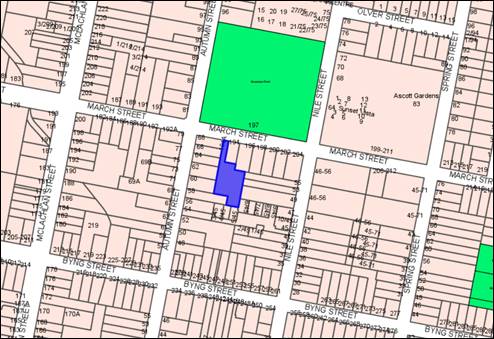
Figure 1 - locality plan
It is noted that the original proposal lodged with Council
involved the construction of seven dwelling houses, and an eight lot Community
title subdivision. Following the initial public exhibition period, where 18
submissions from 16 submitters were received opposing the development, and
discussions with Council staff, the applicant revised the proposal reducing the
density of dwellings and lots on the site. The amended proposal was
re-exhibited to neighbours and original submitters, and
nine submissions were received. The main outstanding issues raised by objectors
relate to the density, scale, and height of the dwellings proposed, and the
resulting heritage impacts. This is discussed in detail in the main body of the
report.
It is noted that Council recently
resolved to adopt the ‘Draft Heritage Study review’ at the Planning
and Development Committee meeting of 1 December 2020. The next step is for
Council’s strategic planning staff to commence the process of amending
the Orange Local Environmental Plan 2011 (LEP) to formalise the
study’s recommendations into Council’s planning scheme. Of
particular interest to this proposal is the recommended expansion of the
Heritage Conservation Area to include the precinct around Newman Park, which
would include the subject site. However, this study has no determinative or
legal weight until such time as a draft LEP amendment is placed on public
exhibition, and as such is not relevant to this particular assessment.
Notwithstanding this, the subject site is currently considered to be in a
heritage setting given the proximity to adjacent and nearby heritage listed
items. As such, the relevant heritage planning provisions need to be given
consideration in the assessment of this application, which are discussed in
detail in the “LEP Clause 5.10 Heritage” assessment later in
this report.
It is considered that the amended proposal requires some
minor design changes in regards to use of materials, colours and landscaping to
be acceptable in this setting, and that recommended conditions of consent can
address these matters. This is discussed in more detail in the “LEP
Clause 5.10 Heritage” assessment later in this report.
Overall, the amended proposal will not contravene the
planning regime that applies to the land. Impacts of the development are considered
to be within reasonable limit, consistent with applicable standards, and
addressed by appropriate conditions of development consent, as discussed in the
main body of this report. Approval of the application is recommended, as set
out in the attached draft Notice of Approval.
DECISION FRAMEWORK
Development in Orange is governed by two key documents Orange
Local Environment Plan 2011 (LEP) and Orange Development Control Plan
2004 (DCP). In addition the Infill Guidelines are used to guide
development, particularly in the heritage conservation areas and around
heritage items.
Orange Local Environment Plan 2011 – The
provisions of the LEP must be considered by the Council in determining the
application. LEPs govern the types of development that are permissible or
prohibited in different parts of the City and also provide some assessment
criteria in specific circumstances. Uses are either permissible or not. The
objectives of each zoning and indeed the aims of the LEP itself are also to be
considered and can be used to guide decision making around appropriateness of
development.
Orange Development Control Plan
2004 – the DCP provides guidelines for development. In general it is
a performance based document rather than prescriptive in nature. For each
planning element there are often guidelines used. These guidelines indicate
ways of achieving the planning outcomes. It is thus recognised that there may
also be other solutions of merit. All design solutions are considered on merit
by planning and building staff. Applications should clearly demonstrate how the
planning outcomes are being met where alternative design solutions are
proposed. The DCP enables developers and architects to use design to achieve
the planning outcomes in alternative ways.
DIRECTOR’S COMMENT
The proposed development is permissible subject to receiving
development consent. The applicant amended the proposal part way through
the assessment in an attempt to address concerns raised by both Council staff
and the community. The application was notified on two separate occasions. It
is considered that the amended proposal can now be supported by Council subject
to the adoption of the recommended conditions of consent contained in the
attached Notice. The recommended conditions in part require some design changes
in regards to use of materials, colours and landscaping so as to ensure that
the development is acceptable in this setting.
Overall, the amended proposal will not contravene the
planning regime that applies to the land. Impacts of the development are
considered to be within reasonable limit, consistent with applicable standards,
and addressed by appropriate conditions of development consent. The development
will contribute to the diversity of housing forms in the precinct in a manner that is considered consistent with the
neighbourhood character.
FINANCIAL IMPLICATIONS
Nil
POLICY/GOVERNANCE IMPLICATIONS
Nil
Link To Delivery/OPerational Plan
The recommendation in this report relates to the
Delivery/Operational Plan strategy “10.1 Preserve - Engage with the
community to ensure plans for growth and development are respectful of our
heritage”.
Financial Implications
Nil
Policy and Governance Implications
Nil
|
Recommendation
That Council consents to
development application DA 59/2020(1)
for Multi Dwelling Housing (five dwellings) and Subdivision (six lot
Community title) at Lot 222 DP 1239110 - 194A March Street,
Orange pursuant to the conditions of consent in the
attached Notice of Approval.
|
further considerations
Consideration has been given to the recommendation’s
impact on Council’s service delivery; image and reputation; political;
environmental; health and safety; employees; stakeholders and project
management; and no further implications or risks have been identified.
SUPPORTING INFORMATION
Consent is sought for residential development of land at
194A March Street, comprising multi dwelling housing (five dwellings), and a
six lot Community title subdivision in two stages as follows:
Stage 1 - Construction of five new detached dwellings
and associated site works and servicing.
Stage 2 - Community title subdivision to create six
(6) lots, comprising one communal lot and five residential lots to contain one
dwelling on each residential lot.
The proposed site and
subdivision layout is depicted in Figure 2 below.

Figure 2 - proposed subdivision plan (from sheet 4 by
Peter Basha Planning & Development)
The proposed dwellings will each
be two storey in height and detached. Each dwelling will contain
three bedrooms, two bathrooms, open-plan kitchen/dining/living area, and
laundry. Each dwelling will also comprise an attached double garage, with the
exception of proposed Dwelling 3 which has a single garage. Separate private open
space will be provided for each dwelling. Landscaping and visitor parking is
proposed, as depicted in Figure 2 above.
External finishes for the dwellings will comprise Weathertex
Selflock Eco Groove wall cladding, Colorbond roof sheeting, panel lift garage
doors, and aluminium-framed glazing. Perimeter and internal fencing will be
erected, and site landscaping installed.
Subdivision of the development
site will follow the construction of the dwellings, so that each dwelling will
be on its own Community lot, as follows:
|
Proposed
Lot
|
Improvements
|
Lot
Area
|
|
Community
Lot 1
|
Community
property – vehicle access/driveway areas, services, visitor parking,
bin collection area, etc.
|
798.4m2
|
|
Community
Lot 2
|
Dwelling
1
|
315.3m2
|
|
Community
Lot 3
|
Dwelling
2
|
333m2
|
|
Community
Lot 4
|
Dwelling
3
|
249.4m2
|
|
Community
Lot 5
|
Dwelling
4
|
291.9m2
|
|
Community
Lot 6
|
Dwelling
5
|
328m2
|
BACKGROUND AND HISTORY
Council refused a boarding house
proposal on the subject site on 14 August 2018 (DA 86/2018(1)) due to
the design and siting of the buildings being incompatible with the character of
the local area, adverse impacts to the heritage setting, and adverse
residential amenity impacts. The subject land has since been sold to a new
owner and developer.
Council approved subdivision of the
subject land excising the original dwelling house (fronting March Street) onto
its own lot in June 2017, and a subsequent modification of that subdivision in
November 2017 (DA 158/2017(2)).
MATTERS FOR CONSIDERATION
Section 1.7 - Application of Part
7 of the Biodiversity Conservation Act 2016 and Part 7A of the Fisheries
Management Act 1994
Section 1.7 of the EP&A Act
identifies that Part 7 of the Biodiversity Conservation Act 2016
(BC Act) and Part 7A of the Fisheries Management Act 1994 have
effect in connection with terrestrial and aquatic environments.
There are four triggers known to
insert a development into the ‘Biodiversity Offset Scheme’
(i.e. the need for a Biodiversity Development Assessment Report to be
submitted with a DA):
· Trigger
1: development occurs in land mapped on the Biodiversity Values
Map (OEH) (clause 7.1 of BC Regulation 2017).
· Trigger
2: development involves clearing/disturbance of native vegetation above a
certain area threshold (clauses 7.1 and 7.2 of BC Regulation 2017).
· Trigger
3: development is otherwise likely to significantly affect threatened
species (clauses 7.2 and 7.3 of BC Act 2016).
· Trigger
4: development proposed to occur in an Area of Outstanding Biodiversity
Value (clause 7.2 of BC Act 2016).
In consideration of Triggers 1 and
4, the site is not within land mapped on the Biodiversity Values Map or LEP
Biodiversity Map, or in an Area of Outstanding Biodiversity Value.
In consideration of Trigger 2, the
proposal does not involve the clearing of any vegetation, where the subject
site is already clear of trees, and does not contain any native grasses.
The proposal has been amended to take into account the neighbouring trees
which overhang the boundary. Most of the trees in the area are
introduced/exotic species. Overall, and in regards to Trigger 3, it is
considered that the development is unlikely to significantly affect any
threatened species or communities.
Section 4.15
Section 4.15 of the Environmental
Planning and Assessment Act 1979 requires Council to consider various
matters, of which those pertaining to the application are listed below.
PROVISIONS OF ANY ENVIRONMENTAL
PLANNING INSTRUMENT s4.15(1)(a)(i)
Orange Local Environmental Plan
2011
Part 1 - Preliminary
Clause 1.2 - Aims of Plan
The broad aims of the LEP are set out under Subclause 2.
Those relevant to the application are as follows:
(a) to encourage
development which complements and enhances the unique character of Orange as a
major regional centre boasting a diverse economy and offering an attractive
regional lifestyle,
(b) to provide for
a range of development opportunities that contribute to the social, economic
and environmental resources of Orange in a way that allows present and future generations
to meet their needs by implementing the principles for ecologically sustainable
development,
(e) to provide a
range of housing choices in planned urban and rural locations to meet
population growth,
(f) to
recognise and manage valued environmental heritage, landscape and scenic
features of Orange.
The
application is considered to be consistent with the above objectives as
outlined below and in the subsequent sections in this report:
· there are no aspects of the proposal that would
adversely impact on the character of Orange as a major regional centre. Indeed,
ongoing development of residential lands will contribute to the role of the
City as a major centre
· there are no aspects of the proposal that would
compromise the principles of ecologically sustainable development
· the proposal will contribute to the City’s range
and supply of housing choices
· the proposal will not adversely affect the value of heritage, landscape and scenic features
of the city, which are discussed in greater detail in the main body of this
report.
Clause 1.6 - Consent
Authority
This
clause establishes that, subject to the Act, Council is the consent authority
for applications made under the LEP.
Clause 1.7 - Mapping
The subject site is identified
on the LEP maps in the following manner:
|
Land
Zoning Map:
|
Land
zoned R1 General Residential
|
|
Lot
Size Map:
|
No
Minimum Lot Size
|
|
Heritage
Map:
|
Not
a heritage listed item or within a heritage conservation area, but located
within a heritage setting, with heritage listed items immediately adjacent
and opposite the site. The recently Council adopted Heritage Study for the
City includes the subject land in a draft Heritage Conservation Area.
|
|
Height
of Buildings Map:
|
No
building height limit
|
|
Floor
Space Ratio Map:
|
No
floor space limit
|
|
Terrestrial
Biodiversity Map:
|
No
biodiversity sensitivity on the site
|
|
Groundwater
Vulnerability Map:
|
Groundwater
vulnerable
|
|
Drinking
Water Catchment Map:
|
Not
within the drinking water catchment
|
|
Watercourse
Map:
|
Not
within or affecting a defined watercourse
|
|
Urban
Release Area Map:
|
Not
within an urban release area
|
|
Obstacle
Limitation Surface Map:
|
No restriction
on building siting or construction
|
|
Additional
Permitted Uses Map:
|
No
additional permitted use applies
|
|
Flood
Planning Map:
|
Not
within a flood planning area
|
Those matters that are of relevance are addressed in detail
in the body of this report.
Clause 1.9A - Suspension of
Covenants, Agreements and Instruments
Clause 1.9A is applicable and states in part:
(1) For the purpose of enabling
development on land in any zone to be carried out in accordance with this Plan
or with a consent granted under the Act, any agreement, covenant or other
similar instrument that restricts the carrying out of that development does not
apply to the extent necessary to serve that purpose.
(2) This clause does not apply:
(a) to a covenant
imposed by the Council or that the Council requires to be imposed, or
(b) to
any relevant instrument under Section 13.4 of the Crown Land Management
Act 2016, or
(c) to
any conservation agreement within the meaning of the National Parks and
Wildlife Act 1974, or
(d) to
any Trust agreement within the meaning of the Nature Conservation Trust Act
2001, or
(e) to
any property vegetation plan within the meaning of the Native Vegetation Act
2003, or
(f) to
any biobanking agreement within the meaning of Part 7A of the Threatened Species
Conservation Act 1995, or
(g) to
any planning agreement under Subdivision 2 of Division 7.1 of the Environmental
Planning and Assessment Act 1979.
The property has numerous easements
in relation to sewerage and water drainage, which extend into neighbouring lots
to the North and South. The proposed site layout takes these easements into
account to ensure they will not be adversely affected. Council staff are not
aware of the title of the subject property being affected by any of the other
instruments listed above.
Part 2 - Permitted or Prohibited Development
Clause
2.1 - Land Use Zones
The subject site is located within the R1 General
Residential Zone. The proposed development is defined as multi dwelling
housing and subdivision, which are permitted in the
R1 zone with the consent of Council.
Clause 2.3 - Zone Objectives and Land Use Table
The objectives for land zoned R1
General Residential are:
· To
provide for the housing needs of the community.
· To
provide for a variety of housing types and densities.
· To
enable other land uses that provide facilities or services to meet the day to
day needs of residents.
· To
ensure development is ordered in such a way as to maximise public transport
patronage and encourage walking and cycling in close proximity to settlement.
· To
ensure that development along the Southern Link Road has an alternative access.
The proposal is
not contrary to the relevant R1 zone objectives as follows:
· the
proposed development will provide additional housing stock to accommodate the
housing needs of the community
· the
development will contribute to the variety of housing types and densities in
the area, and will complement the developing neighbouring residential density
as discussed in the LEP Clauses 5.10 and DCP assessments later in this report
· the
area is serviced by public transport and is in walking distance to local
schools, shops, and recreation facilities (parks, sports, and the likes)
· the
site does not have frontage or access to the Southern Link Road.
Clause 2.6 - Subdivision -
Consent Requirements
Clause 2.6 is applicable and
states:
(1) Land
to which this Plan applies may be subdivided but only with development consent.
Consent is sought for Community lot
subdivision in accordance with this clause.
Part 3 - Exempt and Complying Development
The application is not exempt or
complying development.
Part 4 - Principal Development Standards
Clause 4.1 - Minimum Subdivision Lot Size
This clause requires the subdivision of land to be equal to
or greater than the size nominated for the land under the Minimum Lot Size Map.
The LEP does not nominate a minimum lot size for this lot, as such, the
proposal is consistent with this clause.
Clause 4.1AA - Minimum Subdivision Lot Size for Community
Title Schemes
This clause applies to the subdivision of land under a
community title scheme in the RU1, E2, E3 and E4 zones. The proposal
involves community title subdivision, however the subject land is zoned R1, and
therefore this clause does not apply.
Clause 4.1B - Minimum Lot Sizes for Dual Occupancy, Multi
Dwelling Housing and Residential Flat Buildings
This clause sets a minimum lot size for multi dwelling
development (i.e. three or more dwelling houses on one lot) in R1 zones as
1,250m2. This subject land is 2,316m²
in size, and therefore is consistent with this clause.
Part 5 - Miscellaneous Provisions
5.10 - Heritage
Conservation
The subject land is considered to
be within a “heritage setting” given the character of the
surrounding area, and the proximity of the site to numerous heritage items, as
set out below. LEP Clause 5.10 is applicable and states in part:
(4) Effect
of Proposed Development on Heritage Significance The consent authority
must, before granting consent under this clause in respect of a heritage item
or heritage conservation area, consider the effect of the proposed development
on the heritage significance of the item or area concerned.
The subject land is located in the
vicinity of the following Heritage Items (see Figure 3):
· 68
Autumn Street (corner of March Street) - Dwelling which retains the distinctive
features from the original art deco style, including the external character
with distinctive rendered masonry walls, semi-circular rooms and a sympathetic
garden setting. It complements the streetscape and is one of a significant
group of the same style and builder (Crossman), contributing as a Heritage
Item.
· 197
March Street - ‘Newman Park’ - a civic landscaped park of 2
hectares, significant for its exotic trees of more than 100 years in age. The
park was constructed in 1890 and the trees were planted in the 1890s. The
16 Oak trees were added at the end of World War One by servicemen and pupils of
East Orange Public School to commemorate former pupils who had died in the war.
The park complements the streetscape and contributes to the area, and is highly
valued by the community.
· 81
Autumn Street - ‘Rowena House’ - the late Victorian buff brick
residence with hipped roof and brick chimneys has retained the distinctive
original features, including the bullnose return verandah with cast iron
brackets, and a cottage garden, which complements the streetscape and
contributes as a Heritage Item.
· 45-71
Spring Street, 206-212 March Street and 46‑56 Nile Street -
‘East Orange Public School’ - the school precinct is of social
significance to the local community, historically marking the mature growth of
East Orange and the early buildings, including the 1925 classical block. Mature
trees with cultural landscape significance exist in the grounds. The school
complements the streetscape and contributes as a Heritage Item, and is highly
valued by the community.
· 199-211
March Street (corner Nile Street) - ‘Buena Vista Boys' Home’ - a
fine rendered and painted masonry residence in the Gothic style which has
retained the distinctive original features, including the verandah, slate roof,
chimneys and decorative mouldings. It is a rare building type and style, and
complements the streetscape and contributes as a Heritage Item.

Figure 3 - listed buildings and items (in beige
hashing)
Draft Heritage Study
It is noted that Council recently resolved to adopt the
‘Draft Heritage Study review’ at the Planning and Development
Committee meeting of 1 December 2020. Recommendations include renaming some of
the existing Heritage Conservation Areas to reflect their heritage, new
Heritage Conservation Areas, and extension of the existing Heritage
Conservation Areas and list of Heritage items. Of particular interest to this
proposal is the recommended expansion of the Heritage Conservation Area of
Newman Park, which would include the subject site (see Figure 4).

Figure 4 - proposed Newman Park Heritage Conservation
Area
(within orange line are, red hashing shows existing
Heritage Conservation Area,
beige hashing shows listed Heritage Items)
The next step is for
Council’s strategic planning staff to commence the process of seeking to
amend the LEP to formalise the study’s recommendations, which involves
further public consultation, and requires State government endorsement. Importantly,
this study has no determinative or legal weight until such time as a draft LEP
amendment is placed on public exhibition, and as such cannot be taken into
account in this particular assessment. Notwithstanding this, and as discussed
above, the subject site is already within a heritage setting and the relevant
heritage planning provisions need to be given consideration.
Character
of the Local Area
In order to consider the effect the proposal has on the
significance of the heritage setting an assessment of character needs to be
undertaken. In defining the relevant character of the local area, reference
tools include the Orange LEP, Orange DCP, Council’s Infill
Guidelines, the Burra Charter, ‘Design in
Context: Guidelines for Infill Development in the Historic Environment’
(NSW Heritage Office and Royal Australian Institute of Architects, 2005), and
relevant Case Law.
The character of this particular precinct and streetscape
has been examined by Council staff and Council’s Heritage Advisor, and is
considered to be made up of the following elements:
· Generally level topography, with Blackmans Swamp Creek
nearby to the South East.
· Significant mature vegetation in wide tree lined streets,
established public and private landscaped gardens, and areas of public open
space.
· The property immediately in front of the subject site (194
March Street) contains a single storey, brick dwelling with hipped roof,
rendered chimneys and return verandah.
· Adjacent heritage listed house at 68 Autumn Street
comprises an art deco building, which differs from its surrounding buildings
but maintains the overall scale and pattern of surrounding development, and is
set within landscaped gardens with mature trees.
· Surrounding suburban area has a predominant historic
context comprising a generally unified pattern of development and character of
traditional, detached dwellings, incorporating:
- modelled roofs
with hips and gables, chimneys, and verandahs
- predominately
single storey in height, with varying roof heights (older dwellings typically
have higher roofs than post-war aged dwellings)
- a mix of
external materials, finishes, detailing, and colours
- generous side
setbacks and dwelling curtilages with view corridors to rear
- generous front
setbacks and landscaped front and rear gardens
- garages and
carports typically located towards the rear of dwellings.
· Intact original Bungalows in the Autumn Street streetscape,
which back on to the site where the new dwellings are proposed.
· Heritage listed school nearby, comprising early buildings,
open space, and significant mature trees.
· Heritage listed Newman Park opposite the site comprising
generous public open space and significant mature trees.
· Other heritage listed buildings in the vicinity comprise
distinctive original architectural features set within landscaped gardens.
Departures
from the historical built character include a two storey mixed use building at
49 Nile Street (Simply Nile café and residence); recent unit
developments to the rear of the subject site, which comprise smaller lot sizes
and single storey contemporary dwellings; recent seniors housing to the north
and east of Newman Park on Nile Street comprising single storey contemporary
units; and Ascott Gardens aged care facility comprising multiple large buildings
and small units in addition to the heritage listed building on the site.
Thus
the existing character of the area is the combination of local aspects
including style, scale, and materials. In particular:
· Scale: The height is predominantly single storey.
· Form: The form is generally hipped pitched roofs with some
gable elements.
· Siting: The predominant setbacks are minimal to one side of
each dwelling and the width sufficient for vehicle access to the rear while
frontages range from 5-7m. Contemporary infill has adopted an axe handle use of
the side setback for access to the rear.
· Materials and colour: The materials and colours of earlier
buildings are brick with later buildings in painted render, and the basalt base
is in use early and interpreted in later buildings. Earlier buildings reflect
their long-life materials while later and contemporary buildings opt for
shorter-life painted surfaces.
· Detailing: The detailing generally reflects the periods and
amenity with porches, gables and front verandahs to produce identity, and
awnings for amenity and shading to the general elevations. Fenestration is
generally double hung windows, lintels expressed, and chimneys penetrate roofs.
· Landscape: The buildings in the vicinity include generous
planted front gardens within the setback, while the narrow side accommodates
the minimum hard area and the other side accommodates the driveway and rear
access. The rear areas vary and include soft landscape and mature trees or
similar, plus garden sheds, while the typical new single storey villa units
include a 3m setback between the drive and building front for soft landscaping.
Planning
principles established by the Courts state that an assessment of character
shall include existing character, as well as the desired future character. The
controls in the LEP and DCP are relevant in determining the likely future
character of the local area.
Examples
of LEP permitted uses in the R1 zone include boarding houses, child care
facilities, community facilities, hostels, multi dwelling housing, places of
public worship, residential flat buildings (i.e. multi-storey blocks of units),
seniors housing, and tourist and visitor accommodation. State polices also
permit other uses such as health care and educational facilities in the zone.
The LEP does not set height limits in the residential zones, where the DCP
guidelines are relied upon for appropriate scale and bulk (i.e. bulk to be
progressively set back from the boundaries, heights along the street to be
comparable to adjacent development, etc.). Generally larger sites can build
higher than smaller sites, as there is more space to provide the setback
progression. Furthermore, the State code allows two-storied dwelling houses,
multi dwelling housing, and attached housing generally up to 8.5m in height as
complying development (i.e. without needing a DA from Council).
Based
on the current planning policies and anticipated future planning strategies, it
is reasonably expected that these types of uses will be more intensive than the
predominant single dwelling houses of the area, including varying contemporary
designs, and increased bulk, scale, heights, site coverage, traffic levels,
parking demand, etc. It is also anticipated that two-storied infill development
will become more common in Orange in the near future as the population
increases and availability of land decreases. Thus two-storied development is
expected and considered reasonable in residential zones and heritage settings,
providing they meet the relevant design principles and planning requirements.
Recently there have already been more intensive types of infill development in
the immediate surrounds, including multi dwelling housing and seniors housing
units as discussed in the existing character assessment above.
Furthermore,
it is important to note that the heritage planning policies do not preclude
development from occurring in a heritage setting, but rather provides
additional requirements to be taken into consideration as discussed above and
below.
In
light of the comments above, it is considered that the desired future character
for the locality is for it to remain a predominantly residential area,
characterised by dwellings in a landscaped setting, with supporting
neighbourhood uses and buildings as permitted by the relevant planning
policies.
Character
and Heritage Assessment of Proposed Development
An
important aspect of good design is having regard to the context of the site and
its surroundings, with particular consideration to the existing and desired
character of the area (as discussed above). ‘Design in Context’ states
that to achieve a successful infill design the following design criteria
applies:
· character - new buildings must harmonise with their
surroundings
· scale - size in relation to surrounding buildings or
landscape
· form - overall shape and volume, and the arrangement of its
parts
· siting - should add sympathetically to the local
streetscape and the grain of the area
· materials and colour - should recognise characteristic
materials, textures and colours used locally and in adjacent buildings
· detailing - common details that contribute to the special
character of an area should be identified, and inform or inspire design.
Furthermore,
planning principles established by the Courts discuss compatibility
with character which are relevant to this application. In particular Project
Venture Developments v Pittwater Council [2005] NSWLEC 191 sets out the
following principles:
· the design of a development does not need to be the
“same” to be compatible, but it should respond to the desirable
elements of the character of the area
· consideration needs to be given to whether the proposal's
appearance is in harmony with the buildings around it, and it is generally
accepted that buildings can exist together in harmony without having the same
density, scale, or appearance
· buildings do not have to be the same height to be
compatible, and it is easier to achieve compatibility when the height change is
gradual rather than abrupt
· landscaping is also an important contributor to urban
character, and where canopy trees define the character, new developments must
provide opportunities for planting canopy trees.
The
initial development lodged with Council, which proposed seven residential
dwellings, was considered to be inconsistent with the predominant character of
the area due to inappropriate density, setbacks, and spacing, and lack of
opportunity to plant suitable plants and deep rooted trees. Design and siting
feedback was provided to the applicant, and an amended application was
submitted to Council reducing the density of dwellings down to five, and
increasing setbacks, spacing, landscaping opportunities, etc. accordingly.
In its current amended form, it is considered that the
design and siting of the proposed dwelling houses and lot layouts are generally
consistent with the established character of the local area for the following
reasons:
· setbacks, form, scale, bulk and siting in relation to the
boundaries and neighbouring dwellings will harmonise with the surrounding built
form, landscape, and character. These aspects are also consistent with the
requirements of the DCP (discussed later in this report)
· although each of the dwellings are two storied in height,
the bulk of the proposed first floor elements have been inset into the central
part of the ground floor footprint, which is an effective means of modulating
the development, and stepping the building bulk away from the boundaries and
neighbours. This is in accordance with good design principles for infill
development and established case law
· the subject land is a battleaxe site, thus most of the
streetscape principles do not apply, and the proposed two storey configuration
of the dwellings will be not be readily visible from the wider streetscape
(i.e. between and over the existing neighbouring dwellings) when viewed from
March, Autumn, Nile, and Byng Streets, thus will not compromise the historical
significance of nearby listed items or the wider heritage setting
· the spacing between the proposed buildings generally relate
to the pattern of the surrounding area, which includes a mix of small and
larger lot sizes
· proposed areas of open space is reasonably sympathetic to
the open nature and mature landscaping which characterises the area, consistent
with other contemporary development in the immediate area
· proposed siting and hard surface coverage (buildings, car
parking areas, driveways etc.) is reasonable compared to the mixed
surrounding pattern of development and grain of the area
· the use of front porches is a positive contribution to both
amenity and identity as it provides a contemporary interpretation of the
traditional element and the practical weathering inherent of the verandah
· the rear and side setbacks are suitable for accommodating
waste bins, water tanks, side access, plantings, deep rooted trees, etc.
· the overall design of the proposed buildings, including
their scale, roof form, porches, and fenestrations reasonably recognise and
interpret the characteristic and traditional elements of the surrounding built
form.
Notwithstanding
these comments, the proposed building materials, detailing, and colours need
amending to ensure the proposal has a compatible visual appearance in the
surrounding context. Following a review of the initial proposal, staff
requested additional information and amendments from the applicant in this
regard, including:
- Incorporation
of distinctive or individual features to distinguish one dwelling from the next
(as they are essentially all the same), through material use, colours, awnings,
etc.
- Use of face
brick at ground floor level to recognise characteristic materials, textures and
colours used locally and in adjacent buildings, as well as in recent
contemporary buildings, along with the use of sheet cladding at first floor
level, rather than the proposed weatherboard style cladding which is not
appropriate in the surrounding context.
- Submission of a
colour scheme to reflect the surrounding character.
- Submit a
photo-montage or long elevations to show the proposed dwellings in context of
one another and existing dwellings.
The
amended application did not take any of these recommendations into account.
A proposed colour scheme was submitted with the amendment, however is not
considered appropriate, as the modern bright grey colours and weatherboard
style cladding will not fit in with the surrounding character. Further, the
single colour scheme for all five houses is not supported due to the visual
impact on bulk, scale, heritage, etc.
Council’s
Heritage Advisor recommends the following changes:
· Submit amended scheme elevations to demonstrate that each
of the five houses includes a set of unique identifying materials and colours
based on the following:
- traditional darker coloured face bricks to all ground floor
levels
- tilting garage doors in a complementary colour (but not White
or light reflective colour)
- powder-coated window and door fenestrations in timber
colours
- sheeting to the first floor walls above 1500mm (in place of
weatherboards)
- porch details for each of the five houses to have one of
the following: traditional timber posts, an expressed contemporary steel frame,
circular columns, and rendered masonry column piers
- Colorbond roofs from the following colours: Shale Grey,
Windspray, and Woodland Grey with contrasting gutters/fascias
- traditional awnings to windows on north, west and east
elevations
- traditional rolled flashings, standard quad gutters, and
circular downpipes.
· Submit an amended landscape plan to illustrate the
provision of outdoor spaces, traditional timber fencing to the March Street driveway
and Windspray Metroll Corodeck to other boundaries, at least one tree with a
mature height of 6-8m to deep soil areas in each dwelling lot, additional
ground cover plantings, and a charcoal/basalt pigment through-coloured
driveway.
Staff
concur with these recommended changes. Although important elements of the
proposal, these matters can be dealt with via conditions of consent which are
required to be satisfied prior to the issuing of a Construction Certificate, as
they do not affect the main principle of the proposal, site layout, servicing,
or overall scale and bulk of the buildings, which will remain unchanged.
Overall, it is considered that the proposal is acceptable in terms of heritage
provisions, on the basis of these recommended changes being made.
It is noted than an assessment of heritage compatibility
relates to the cultural values and historical significance of the setting, and
does not relate to residential amenity impacts to future occupants or
neighbouring dwellings, which is discussed later in this report under the
“Development Control Plan 2004” assessment section. Submissions
from neighbours are discussed in the “Any Submissions” section
later in this report.
Part 6 - Urban Release Area
Not relevant to the application. The subject site is not
located in an Urban Release Area.
Part 7 - Additional Local Provisions
7.1
- Earthworks
Clause
7.1 applies. This clause states in part:
(3) Before granting development
consent for earthworks, the consent authority must consider the following matters:
(a) the likely disruption of, or
any detrimental effect on, existing drainage patterns and soil stability in the
locality of the development,
(b) the effect of the development
on the likely future use or redevelopment of the land,
(c) the quality of the fill or the
soil to be excavated, or both,
(d) the effect of the development
on the existing and likely amenity of adjoining properties,
(e) the source of any fill material
and the destination of any excavated material,
(f) the likelihood of disturbing
relics,
(g) the proximity to and potential
for adverse impacts on any waterway, drinking water catchment or
environmentally sensitive area,
(h) any measures proposed to
minimise or mitigate the impacts referred to in paragraph (g).
The
site is relatively flat, and proposed earthworks are limited to creating
building slabs, driveways and related servicing requirements. Earthworks will
need to be carried out in a manner that will protect neighbouring trees near
and overhanging site boundaries, and Tree Protection Zone (TPZ) conditions
of consent are recommended to this effect.
Council’s Development
Engineers will require full engineering details prior to works to ensure
driveways and services can be constructed to the appropriate standards, and
will not adversely impact on the environment. Conditions of consent are
recommended in relation to this, and to require sediment control measures to be
implemented onsite prior to works commencing to ensure that loose dirt and
sediment does not escape the site boundaries.
The site is not known to be
contaminated, nor is the site known to contain any Aboriginal, European or
archaeological relics. The site is not in proximity to any waterway, drinking
water catchment or sensitive area.
In
consideration of this clause, the proposal is considered to be acceptable
subject to the conditions of consent discussed above.
7.3 - Stormwater Management
Clause 7.3 is applicable. This
clause states in part:
(3) Development
consent must not be granted to development on land to which this clause applies
unless the consent authority is satisfied that the development:
(a) is
designed to maximise the use of water permeable surfaces on the land having
regard to the soil characteristics affecting onsite infiltration of water, and
(b) includes,
where practical, onsite stormwater retention for use as an alternative supply
to mains water, groundwater or river water, and
(c) avoids
any significant impacts of stormwater runoff on adjoining downstream
properties, native bushland and receiving waters, or if that impact cannot be
reasonably avoided, minimises and mitigates the impact.
Council’s Development Engineer notes that the
development is required to provide onsite stormwater detention to limit
post-development peak flows to that of pre-development peak flows. Some natural
detention will occur through the use of a 3,000L rainwater tank on each
dwelling. Conditions of consent are recommended in regards to this
requirements, and to satisfy Clause 7.3.
7.6 - Groundwater Vulnerability
The
subject land is identified as ‘Groundwater Vulnerable’ on the Groundwater
Vulnerability Map. Clause 7.6 applies. This clause states in part:
(3) Before determining a
development application for development on land to which this clause applies,
the consent authority must consider:
(a) whether
or not the development (including any onsite storage or disposal of solid or
liquid waste and chemicals) is likely to cause any groundwater contamination or
have any adverse effect on groundwater dependent ecosystems, and
(b) the
cumulative impact (including the impact on nearby groundwater extraction for
potable water supply or stock water supply) of the development and any other
existing development on groundwater.
In consideration of Clause 7.6,
there are no aspects of the proposed residential development that will impact
on groundwater and related ecosystems.
Clause 7.11 - Essential
Services
Clause 7.11 applies and states:
Development
consent must not be granted to development unless the consent authority is satisfied
that any of the following services that are essential for the proposed
development are available or that adequate arrangements have been made to make
them available when required:
(a) the
supply of water,
(b) the
supply of electricity,
(c) the
disposal and management of sewage,
(d) storm
water drainage or onsite conservation,
(e) suitable
road access.
In consideration of this clause, the listed utility
services are available or can be made available to the land, and will be
adequate for the proposal. Conditions of
consent are included on the attached Notice of Approval requiring extension,
augmentation and/or upgrading of urban utility services to the standards
required to service the proposed dwellings/lots.
Council’s
Development Engineer notes that the proposed access
handle driveway is considered satisfactory for two-way low speed passing
(driveway is central in access handle and has no kerbs). The common driveway
has sufficient width to allow vehicles to pass, turn around inside the site,
and access garages, as demonstrated by the submitted turn path analysis.
Water and sewer headwork contributions are applicable,
based on five x three bedroom dwellings (one credit for a three bedroom
dwelling exists for the site), pursuant to Section 64 of the
Local Government Act 1993. Relevant conditions of consent are
attached.
The site frontage to March Street will not accommodate the
kerbside placement and collection of waste, recycling, and organic bins for the
proposed dwellings. Conditions of consent are recommended requiring a run‑cost
agreement be entered into with a waste collection contractor. Occupants can
leave their bins at the proposed designated area towards the end of the
driveway on collection day, but they must be returned for storage with the
respective dwellings on other days.
STATE ENVIRONMENTAL PLANNING
POLICIES
State Environmental Planning
Policy 55 - Remediation of Land
State Environmental Planning
Policy 55 - Remediation of Land (SEPP 55) is applicable. Pursuant to Clause
7 Contamination and remediation to be considered in determining development
application:
(1) A
consent authority must not consent to the carrying out of any development on
land unless:
(a) it
has considered whether the land is contaminated, and
(b) if
the land is contaminated, it is satisfied that the land is suitable in its
contaminated state (or will be suitable, after remediation) for the purpose for
which the development is proposed to be carried out, and
(c) if
the land requires remediation to be made suitable for the purpose for which the
development is proposed to be carried out, it is satisfied that the land will
be remediated before the land is used for that purpose.
In consideration of this clause, the potential for
contamination of the site is considered to be low. The subject land is well
established for residential use. The site is not known to have been used for a
Table 1 activity that may cause contamination as identified in the
SEPP 55 –Remediation of Land Planning Guidelines. Further
investigation of the site for any potential land contamination is considered
unnecessary in conjunction with the current
proposal.
State
Environmental Planning Policy (Building Sustainability Index: BASIX) 2004
The BASIX SEPP is applicable to this proposal as residential
accommodation. The applicant has submitted multi dwelling
BASIX Certificate for the proposal which demonstrates that the amended
proposal meets the NSW Government’s requirements for sustainability
(water, thermal comfort and energy).
PROVISIONS OF ANY DRAFT
ENVIRONMENTAL PLANNING INSTRUMENT THAT HAS BEEN PLACED ON EXHIBITION
4.15(1)(a)(ii)
State Environmental Planning
Policy Draft Remediation of Land
The Draft Remediation of Land SEPP
is applicable, and requires in part that consideration be given to potential
contamination on nearby or neighbouring properties and groundwater. Land
adjoining the site is not identified as being contaminated, and
the contamination status of neighbouring residential lands is unlikely to
adversely impact on the proposed development.
Draft Orange Local Environmental Plan 2011 (Amendment 24)
Draft Amendment 24 involves various
administrative amendments to the LEP including updated maps, and new and
amended clauses. The proposed development is not contrary to any matter
contained in the Draft Amendment. It is noted that Amendment 24 does not
include the Draft Heritage Study recommendations previously discussed, which
will be subject to a separate future LEP amendment.
DESIGNATED DEVELOPMENT
The proposed development is not
designated development.
INTEGRATED DEVELOPMENT
The proposed development is not
integrated development.
PROVISIONS OF ANY DEVELOPMENT
CONTROL PLAN s4.15(1)(a)(iii)
Development Control Plan 2004
The following parts of DCP 2004 are
applicable to the proposed development:
· Part 2
- Natural Resource Management
· Part 3
- General Considerations
· Part 4
- Special Environmental Considerations
· Part 5
- General Considerations for Zones and Development
· Part 7
– Development in Residential Zones
The relevant matters in Parts 2, 3 and 4 were considered in
the foregoing LEP assessment. The relevant matters in Part 5 are addressed
later in this report (refer “Any Submissions” section). Part
7 is assessed below.
DCP Part 7 - 7.7 Design Elements for Residential Development
Neighbourhood Character
The DCP sets the following Planning
Outcomes in regard to Neighbourhood Character:
Site layout and building design
enables the:
· creation
of attractive residential environments with clear character and identity
· use
of site features such as views, aspect, existing vegetation and landmarks
· buildings
are designed to complement the relevant features and built form that are
identified as part of the desired neighbourhood character
· the
streetscape is designed to encourage pedestrian access and use.
Neighbourhood character has been
discussed extensively in the LEP Clause 5.10 heritage assessment earlier in
this report. It is considered that subject to some changes in materials,
colours and detailing, the proposed dwellings will complement the heritage
setting and desired future character of the surrounding area.
The proposal will not adversely impact on pedestrian access
associated with the residential street. All vehicles associated with the
development will enter and exit the site in a forward direction. Sight lines
within March Street are appropriate to avoid conflict with pedestrians.
In terms of neighbourhood function, the proposed development
will provide for a continuation of residential landuse, will supplement housing
needs in the community, and will contribute to the variety of housing types and
densities in the neighbourhood.
Building Appearance
The DCP sets the following Planning Outcomes in regard to
Building Appearance:
· the
building design, detailing and finishes relate to the desired neighbourhood
character, complement the residential scale of the area, and add visual
interest to the street
· the
frontages of buildings and their entries face the street
· garages
and car parks are sited and designed so that they do not dominate the street
frontage.
As previously discussed in the LEP Clause 5.10 heritage
assessment earlier in this report, the overall design of the dwellings is
considered acceptable subject to the recommended changes to materials, colours
and detailing being adopted so as to ensure that they will harmonise and
complement dwellings on adjoining lands and the wider heritage setting. It is
noted that other than direct views down the driveway, the proposed dwellings
will not be readily visible from the street due to separation distance, and
existing dwellings fronting the streets on neighbouring lots.
Each proposed dwelling incorporates an attached garage and
front door facing the communal driveway/Community lot. Proposed garages will
not present to March Street, therefore will not dominate the street.
Heritage
The DCP sets the following Planning Outcomes in regard to
Heritage:
· Heritage
buildings and structures are efficiently re-used.
· New
development complements and enhances the significance of a heritage item or
place of heritage significance listed in the Orange Heritage Study.
· Significant
landscape features are retained including original period fences and period
gardens.
Heritage was addressed in detail in the LEP Clause 5.10
assessment earlier in this report, which took into account the DCP heritage
planning outcomes. Overall it is considered that the proposed development will
be acceptable in the heritage setting, subject to some changes to materials,
colours, detailing, and landscaping. These matters have been addressed through
conditions in the attached Notice of Determination.
Setbacks
The DCP sets the following Planning Outcomes in regard to
Setbacks:
· street
setbacks contribute to the desired neighbourhood character, assist with the integration
of new development and make efficient use of the site
· street
setbacks create an appropriate scale for the street considering all other
streetscape components.
The subject site is a battleaxe lot with no street frontage,
other than the existing driveway and proposed mailboxes. Neighbourhood
character has been addressed above. Adverse streetscape impacts are not
anticipated as a result of this proposal.
Front Fences and Walls
The DCP sets the following Planning Outcomes in regard to
Fences and Walls:
· Front
fences and walls:
- assist
in highlighting entrances and creating a sense of identity within the
streetscape
- are
constructed of materials compatible with associated housing and with fences
visible from the site that positively contribute to the streetscape
- provide
for facilities in the street frontage area such as mail boxes.
The proposal does not involve the erection of front fencing
given it is a battleaxe lot as discussed above.
Visual Bulk
The DCP sets the following Planning Outcome in regard to
Visual Bulk:
· Built
form accords with the desired neighbourhood character of the area with:
- side
and rear setbacks progressively increased to reduce bulk and overshadowing
- site
coverage that retains the relatively low density landscaped character of
residential areas
- building
form and siting that relates to landform, with minimal land shaping (cut and
fill)
- building
height at the street frontage that maintains a comparable scale with the
predominant adjacent development form
- building
to the boundary where appropriate.
The
following comments are made in relation to these planning outcomes:
- setbacks,
scale, form and siting of bulk in relation to the boundaries are consistent
with the surrounding built form as discussed previously in the LEP Clause 5.10
heritage assessment
- side and rear setbacks are
progressively increased to reduce bulk and overshadowing, and the spacing
between the proposed buildings relate to the pattern of the surrounding area as
discussed previously in the LEP Clause 5.10 heritage assessment
- the proposed site coverage
by hardstand areas (car parking, driveway, etc) and areas of open space and
landscaping is reasonable compared with adjoining lands, and consistent with
recent contemporary infill development in the immediate surrounds
- the subject land is a
battleaxe site, therefore does not have street frontage. The proposed two
storey building height and bulk, when viewed from the surrounding streets, will
be consistent with the surrounding built form due to the modulated design
previously discussed in the LEP Clause 5.10 heritage assessment
- the proposed buildings will
be wholly contained within the DCP prescribed visual bulk envelope plane
- minimal land shaping is
required given that the site is relatively level
- building to the boundary is
not appropriate nor proposed in this case
- a total building
footprint of 694.8m2 is proposed, and based on a site area of 2,316m2
the development will have site coverage of 30%, which is in compliance with the
maximum 50% prescribed for multi dwelling housing development.
Overall, it is considered that the visual impacts in terms
of bulk and scale are in accordance with the above DCP planning outcomes,
as well as good design principles for infill development and established case
law.
Walls and Boundaries
The DCP sets the following Planning Outcome in regard to
Walls and Boundaries:
· Building
to the boundary is undertaken to provide for efficient use of the site taking
into account:
- the
privacy of neighbouring dwellings and private open space
- the
access to daylight reaching adjoining properties
- the
impact of boundary walls on neighbours.
The proposal does not involve construction of buildings on
the boundary, and provides for suitable setbacks from side and rear boundaries.
Visual bulk was assessed above, and privacy and solar access assessments are
carried out below.
Daylight and
Sunlight
The DCP sets the following Planning Outcome in regard to
Daylight and Sunlight:
· Buildings
are sited and designed to ensure:
- daylight
to habitable rooms in adjacent dwellings is not significantly reduced
- overshadowing
of neighbouring secluded open spaces or main living area windows is not
significantly increased
- consideration
of Council’s Energy Efficiency Code.
Overshadowing of Private Open Space
Pursuant to the DCP Guidelines:
Sunlight is to be available to
at least 40% of required open space for dwellings within the development and
those on adjoining lands for at least three hours between 9am and 3pm.
The applicant has submitted shadow diagrams and calculations
to demonstrate that the proposed development complies with the DCP. As set out
in the following table, the proposed areas of open space for each of the
dwellings will receive adequate winter sun:
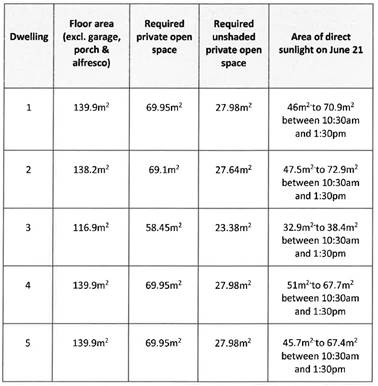
The DCP also requires the proposed
development to comply with these guidelines for areas of private open space on
adjoining properties. As shown in the submitted shadow diagrams, most of the
shadows created on neighbouring land are caused by existing boundary fence
shadows. The outdoor areas of neighbouring dwellings to the east and west will
have some minor overshadowing, but due to lot sizes and orientations, compliance
will be achieved, and impacts will not be adverse.
Southern neighbours will be the most affected due to
orientation. The neighbour at number 58 Autumn Street will have some
overshadowing from proposed Dwelling 4, but will be within reasonable limits
due to most of the shadowing falling on a shed and other outbuildings. The
neighbour at Unit 5/45 Nile Street has a very small northern back yard, and
proposed Dwelling 3 will create some additional overshadowing. Based on the
shadow diagrams provided, there will be shadowing over and above the boundary
fence until about 1pm, meaning they will only receive two hours of sunlight of
the required three hours. It is noted that due to the bulk of the second storey
element of this proposed dwelling being set back from the ground floor and
boundaries, shadows cast by first floor element will not be significantly
different from shadows cast by the ground floor level. As such, reducing the
height of this proposed dwelling will do little to mitigate this impact, and a
reduction in dwelling footprint (i.e. so it is further from the southern
boundary) would be a better outcome. Staff raised overshadowing issues with the
applicant during discussions, and while the reduction in overall density/unit
numbers on the site has improved overall shadowing impacts, this one particular
neighbour will still be impacted.
On balance, this non-compliance is considered within
reasonable limits for the following reasons:
- this
is only DCP non-compliance of the proposed development
- the
DCP three hour sunlight criteria is only a guideline, not a prescribed standard
- the
overarching planning outcomes for daylighting can be met, that is, the increase
in overshadowing to this neighbour is not significant
- daylighting
to the neighbour’s Northern windows can still be achieved, as discussed
below.
Overshadowing of Dwellings
Pursuant to the DCP Guidelines:
Sunlight to at least 75%
of North facing living area windows within the development and on adjoining
land is to be provided for a minimum of four hours on 21 June; or not further
reduced than existing where already less.
The proposed dwellings will each contain North facing living
room windows, some with pergolas. Submitted shadow diagrams indicate that
compliance will be achieved in accordance with the DCP, both internally (i.e.
the proposed dwellings), and Northern living rooms windows for adjoining
dwellings.
Views
The DCP sets the following Planning Outcomes in regard to
Views:
· building
form and design allow for residents from adjacent properties to share prominent
views where possible
· views
including vistas of heritage items or landmarks are not substantially affected
by the bulk and scale of the new development.
There are no particular views or vistas to be taken into
account, other than the wider heritage streetscape. For the reasons discussed
in the LEP Clause 5.10 heritage assessment, and DCP outcomes above, adverse
impacts are unlikely in this regard.
Visual Privacy
The DCP sets the following Planning Outcome in regard to
Visual Privacy:
· Direct
overlooking of principal living areas and private open spaces of other
dwellings is minimised firstly by:
- building
siting and layout
- location
of windows and balconies
and secondly by:
- design
of windows or use of screening devices and landscaping.
In regards to the ground floor levels and areas of outdoor
space, the proposed site layout and building design will provide acceptable
visual privacy for proposed and adjoining dwellings due to the following:
· Perimeter
and internal fencing will be installed.
· Ground
floor levels will be commensurate with existing natural ground levels, and
boundary fencing will limit opportunities for overlooking between existing and
proposed dwellings windows.
· Living
room openings will overlook associated open space areas, and will not oppose
windows in other dwellings due to boundary fencing and levels.
· Opposing
open spaces will have minimal interface due to boundary fencing and levels.
· Dwelling
entries will be recessed in individual porches.
In regards to the first floor/second storey component of
each dwelling house, State Environmental Planning Policy (Exempt and
Complying Development Codes) 2008 provides guidance on when privacy screens
are required, as follows:
· first
floor/second storey windows at least 3m but not more than 6m from a side or
rear boundary
· applies
to habitable room windows less than 1.5m above the finished floor level
· does
not apply to bedroom windows less than 2m2 in area.
All proposed dwellings include first floor bedroom windows
between 3-6m from rear boundaries, but they are all less than 2m2
each. It is not considered reasonable or necessary to erect privacy screens on
small-medium sized bedroom windows, as it is not expected that occupants will
spend much time looking out of these. Furthermore, neighbouring dwellings are
located a sufficient distance from the proposed dwellings, therefore the
marginal opportunities for overlooking will be limited to garden areas and not
directly at neighbour’s windows. The DCP requires a separation distance
of 9m between upper level windows and living room windows of adjacent
dwellings, and the development complies in this regard. Proposed Dwelling 3 is
located in closer proximity to the unit development to the south and
south-west, however its upper level bedroom windows are only located towards
the west, where the neighbouring dwelling is some distance away. All other
upper level windows are to bathrooms and stairwells, where privacy impacts will
also be minimal.
All dwellings also include first floor bedroom windows
overlooking the common driveway area, however only proposed Dwellings 2 and 4
windows are located directly opposite each other. Although this provides
opportunity for some internal impacts, it is considered that the separation
distance between them (7.75m) is sufficient to minimise impacts, occupants are
unlikely to spend much time looking out of these windows, and occupants are
likely to have window furnishings to individually control their bedroom
privacy. Furthermore, future occupants could individually erect privacy screens
at a later date if they choose too.
It is noted that the applicant has proposed translucent
privacy screens to the some of the upper level windows in an attempt to address
privacy impacts, however, staff do not generally support the use of these film
type of screens for privacy mitigation due to their poor performance and
temporary nature. Notwithstanding this, it is considered that privacy screens
are not required for this proposal, as discussed above.
Acoustic Privacy
The DCP sets the following Planning
Outcome in regard to Acoustic Privacy:
· Site
layout and building design:
- protect
habitable rooms from excessively high levels of external noise
- minimise
the entry of external noise to private open space for dwellings close to major
noise sources
- minimise
transmission of sound through a building to affect other dwellings.
The proposed dwellings are
sufficiently separated to maintain adequate acoustic privacy. It is not
expected that noise levels for the residential use of the proposed lots and
dwellings will be over and above expected and surrounding noise levels.
Security
The DCP sets the following Planning Outcomes in regard to
Security:
· the
site layout enhances personal safety and minimises the potential for crime,
vandalism and fear
· the
design of dwellings enables residents to survey streets, communal areas and
approaches to dwelling entrances.
The proposal is considered acceptable in in regard to safety
and security the design of the dwellings will offer reasonable opportunities
for surveillance of the internal driveway and common areas; the site has
reasonable access control due to internal garages and perimeter and internal
fencing; and the landscape design will not restrict sight lines.
Circulation and
Design
The DCP sets the following Planning
Outcome in regard to Circulation and Design:
· accessways
and parking areas are designed to manage stormwater
· accessways,
driveways and open parking areas are suitably landscaped to enhance amenity
while providing security and accessibility to residents and visitors
· the
site layout allows people with a disability to travel to and within the site
between car parks, buildings and communal open space.
Access to the proposed dwellings
will be via a shared private driveway from March Street. As discussed
previously, the driveway is considered suitable for the proposal, and will to
meet Council’s development standards.
Car Parking
The DCP sets the following Planning
Outcomes in regard to Car Parking:
· Parking
facilities are provided, designed and located to:
- enable
the efficient and convenient use of car spaces and access ways within the site
- reduce
the visual dominance of car parking areas and access ways.
· Car
parking is provided with regard to the:
- the
number and size of proposed dwellings
- requirements
of people with limited mobility or disabilities.
Pursuant to DCP 2004, onsite parking
is required for three+ bedroom dwellings at a rate of 1.5 spaces per
dwelling; with visitor parking required at a rate of 0.2 space per dwelling.
Based on five dwellings, the proposed development will require 8.5 (i.e. nine)
onsite car parking spaces.
Fourteen car parking spaces will be
provided on the development site, in compliance with the DCP as follows:
· a
double garage for each of the proposed Dwellings 1, 2, 4 and 5 (eight spaces)
· a
single garage for proposed Dwelling 3 (one space)
· visitor
parking spaces in the shared/common area (five spaces).
Overall, ample car parking can be
provided on the site.
Private Open Space
The DCP sets the following Planning
Outcomes in regard to Private Open Space:
Private open space is clearly
defined for private use.
· Private
open space areas are of a size, shape and slope to suit the reasonable
requirements of residents including some outdoor recreational needs and service
functions.
· Private
open space is:
- capable
of being an extension of the dwelling for outdoor living, entertainment and
recreation
- accessible
from a living area of the dwelling
- located
to take advantage of outlooks; and to reduce adverse impacts of overshadowing
or privacy from adjoining buildings
- orientated
to optimise year round use.
Private open space for the proposed
dwellings will generally comply with the DCP Guidelines as follows:
· Each
of the proposed dwellings will be provided with open space that complies with
the minimum requirement in terms of area (i.e. 50% of the gross floor area of
the dwelling):
|
Dwelling
|
POS
Required (m2)
|
POS
Provided (m2)
|
DCP
Compliance
|
|
Dwelling 1
|
73.95
|
112.2
|
Yes
|
|
Dwelling 2
|
72.3
|
136
|
Yes
|
|
Dwelling 3
|
63.7
|
68
|
Yes
|
|
Dwelling 4
|
73.95
|
142.6
|
Yes
|
|
Dwelling 5
|
73.95
|
95.4
|
Yes
|
· Private
open space for each dwelling will have a minimum dimension of 3m and will
accommodate an area of 5m x 5m.
· Private
open space for the dwellings will be located behind the building line of each
dwelling, will be provided with a northerly aspect, and will be directly
accessible off main living room areas.
· As
outlined previously, the solar access to each area of private open space on the
winter solstice is considered satisfactory.
Open Space and Landscaping
The DCP sets the following Planning Outcomes in regard to
Open Space and Landscaping:
· the
site layout provides open space and landscaped areas which:
- contribute
to the character of the development by providing buildings in a landscaped
setting
- provide
for a range of uses and activities including stormwater management
- allow
cost effective management
· the
landscape design specifies landscape themes consistent with the desired neighbourhood
character; vegetation types and location, paving and lighting provided for
access and security
· major
existing trees are retained and protected in a viable condition whenever
practicable through appropriate siting of buildings, access ways and parking
areas
· paving
is applied sparingly and integrated in the landscape design.
A landscape plan has been submitted in support of the
proposal. As previously discussed, the landscaping plan is not considered
sufficient, particularly in terms of ground level plantings. Notably, only one
hedging species and one grass species has been proposed for all dwellings and
the common areas, and no middle level (i.e. shrubs) or groundcovers have been
including in the landscaping design. The proposal will not adequately
contribute to the overall landscaped setting of the surrounds, nor provide any
differentiation from one dwelling to the next. It is considered that a wider
variety of species should be used across the site, and each dwelling could have
individualised front garden plantings. An amended landscaping plan, via
condition of consent, is recommended to ensure the development integrates the
development into the neighbourhood and meets the DCP provisions.
The amended plan should also incorporate the changes recommended by
Council’s heritage advisor as previously discussed in terms of plantings,
fencing, and driveway colour.
Stormwater
The DCP sets the following Planning Outcomes in regard to
Stormwater:
· Onsite
drainage systems are designed to consider:
- downstream
capacity and need for onsite retention, detention and re-use
- scope
for onsite infiltration of water
- safety
and convenience of pedestrians and vehicles
- overland
flow paths.
· Provision
is made for onsite drainage which does not cause damage or nuisance flows to
adjoining properties.
Conditions are recommended in relation to stormwater
management of the development as discussed in the LEP assessment earlier in
this report.
Erosion
and Sedimentation
The DCP sets the following Planning Outcome in regard to
Erosion and Sedimentation:
· Measures
implemented during construction to ensure that the landform is stabilised and
erosion is controlled.
An erosion and sediment control plan will be required in
conjunction with the engineering design plans for the development. A condition
of consent is recommended in relation to this matter.
DCP Part 7 - 7.2 Residential
Subdivision
The DCP sets the following (applicable) Planning Outcomes in
regard to urban residential subdivision:
· lots
below 500m2 indicate a mandatory side setback to provide for solar
access and privacy
· lots
below 350m2 indicate existing or planned house layouts, which
identify how privacy, solar access, vehicular access and private open space
needs are to be achieved
· lots
are fully serviced and have direct frontage and access to a public road
· design
and construction complies with the Orange Development and Subdivision Code.
The subject land will be subdivided into six Community lots,
one communal lot for access, bin collection, services, visitor parking, etc.
and five residential lots to contain a dwelling house each. The proposal will
satisfy the above planning outcomes as follows:
· The
residential lots will range in area between 249.4m² and 333m². As
demonstrated in the previous sections of this report, the proposed lots will be
of sufficient area to provide a reasonable standard of residential amenity to
the proposed dwellings, in compliance with the DCP (Part 7.5 - Merit-Based
Approach to Residential Development in Orange).
· The
proposed development will be connected to urban utility services, and the
proposed lots will have legal and practical access to March Street.
· The
subdivision design and construction is capable of complying with the Orange
Development and Subdivision Code, and conditions of consent are recommended to
this effect.
INFILL GUIDELINES
Development in a heritage setting must be assessed against
Council’s Infill Guidelines. Heritage was
addressed in detail in the LEP Clause 5.10 assessment earlier in this report,
which took the Infill Guidelines into consideration. It was concluded that
overall the proposed development will be acceptable in the heritage setting,
subject to some changes to materials, colours, detailing, and landscaping.
DEVELOPMENT CONTRIBUTIONS
EP&A Act Section 7.11 Development Contributions
Development contributions are
applicable to the proposed development, pursuant to Orange Development
Contributions Plan 2017 (Remainder of LGA) as follows:
|
Open
Space and Recreation
|
Five x
three-bed dwellings @ 4,106.71 less
one x
standard lot @ 4,106.71
|
16,426.84
|
|
Community
and Cultural
|
Five x
three-bed dwellings @ 1,190.93 less
one x
standard lot @ 1,190.93
|
4,763.72
|
|
Roads
and Traffic Management
|
Five x
three-bed dwellings @ 5,420.71 less
one x standard
lot @ 5,420.71
|
21,682.84
|
|
Local
Area Facilities
|
Not
applicable
|
-
|
|
Plan
Preparation & Administration
|
Five x
three-bed dwellings @ 321.55 less
one x
standard lot @ 321.55
|
1,286.20
|
|
TOTAL:
|
|
$44,159.60
|
Conditions of consent are included on the attached Notice of
Approval requiring payment of the relevant contributions.
PROVISIONS PRESCRIBED BY THE
REGULATIONS s4.15(1)(a)(iv)
Demolition of a Building (clause 92)
The proposal does not involve the demolition of a building.
Fire Safety Considerations
(clause 93)
The proposal does not involve a change of building use for
an existing building.
Buildings to be Upgraded
(clause 94)
The proposal does not involve the rebuilding, alteration,
enlargement or extension of an existing building.
BASIX Commitments (clause 97A)
As discussed earlier in this report, a BASIX Certificate has
been submitted in support of the proposed development which demonstrates
compliance with the NSW Government’s requirements for sustainability in
terms of water, thermal comfort and energy.
THE LIKELY IMPACTS OF THE
DEVELOPMENT s4.15(1)(b)
Visual and Heritage Impacts
It is acknowledged that the proposed development will have
visual and heritage impacts, as it involves the construction of new dwellings
and the planting of new landscaping on a currently vacant lot in a heritage
setting. The purpose of this report, and the role of Council staff, is to
assess whether those impacts are within reasonable limits, having regard
to the relevant planning legislation, policies, guidelines, and
court-established planning principles.
As established by case law, an infill
development does not need to be the “same” to be compatible, but it
should respond to the desirable elements of the character of the area. The
Courts generally accept that buildings can exist together in harmony without
having the same height, density, scale, or appearance as adjoining buildings.
Notwithstanding the recommended changes to landscaping, materials, colours and
detailing (as discussed in detail in the main body of this report), the general
siting, spacing, scale and bulk of the proposed development has been designed
in accordance with good practice standards and relevant planning policies.
On balance, it is considered that
the visual and heritage impacts of the amended proposed site layout and
building design are reasonable and acceptable, subject to the recommended
changes via conditions of consent. These changes will ensure the proposed
buildings will harmonise with the existing and desired future character of the
surrounding heritage setting.
Overall adverse visual and heritage
impacts are unlikely.
Neighbourhood Amenity Impacts
The proposal will provide and
retain a reasonable standard of residential amenity for the proposed dwellings
(i.e. future occupants) and those on adjoining lands in respect of visual bulk,
solar access, privacy, etc. The proposed development will provide for a
continuation of residential land use, albeit in a more compact form, and will
not alter the function of the neighbourhood.
The development is unlikely to have
adverse impacts on neighbour privacy due to site layout, window placement,
separation distances to neighbours windows, and lot orientations. As discussed
in the DCP assessment section of this report, privacy screens are not
considered necessary in this case.
There will be some minor
overshadowing impacts to one of the neighbouring units, as discussed in the DCP
assessment section of this report, however these impacts are considered within
reasonable limits.
Traffic and Parking Impacts
The anticipated traffic volume
increase will represent only a minor proportion of total traffic volumes in the
area, and is well within the existing road capacity. As outlined previously,
site access, driveways, and onsite manoeuvring areas are capable of meeting
Council’s development and subdivision standards, and as such are unlikely
to adversely impact on pedestrian safety. Onsite car parking exceeds with the
requirements of the DCP, and as such impacts to street parking are not
anticipated.
Overall, adverse traffic and
parking impacts are unlikely.
Environmental Impacts
The subject land is contained
within an established residential precinct and comprises cleared vacant land.
Significant vegetation, threatened species or ecological endangered communities
or their habitats are unlikely to be present. The site is not in proximity to
any waterway, drinking water catchment, or other sensitive area. Onsite
stormwater detention will be required to limit post‑development peak
flows to those of pre‑development peak flows. Sediment control measures,
as required by conditions, will prevent loose dirt and sediment escaping the
site and polluting downstream waterways and adjacent lands. Overall, adverse
environmental and biodiversity impacts are unlikely.
THE SUITABILITY OF THE SITE
s4.15(1)(c)
The subject land is suitable for
the development due to the following:
· the
proposal is permitted on the subject land pursuant to the R1 General
Residential zoning
· the
site is of sufficient area and dimensions to accommodate multi dwelling housing
and provide a suitable standard of residential amenity for future and neighbour
occupants
· the
site has direct frontage and access to a public road
· there
is no known contamination on the land
· all
utility services are or can be made available and adequate
· the
site is not subject to natural hazards
· the
subject land has no known biodiversity or habitat value
· the
site is not in proximity to any waterway or drinking water catchment
· the
site is not known to contain any Aboriginal, European or archaeological relics
ANY SUBMISSIONS MADE IN
ACCORDANCE WITH THE ACT s4.15(1)(d)
Initial Proposal
The initial proposal involved seven
dwellings/units as ‘multi dwelling housing’, which was defined as
"advertised development" pursuant to Council’s Community
Consultation Plan 2019 (CPP). The application was advertised in the Central
Western Daily on Thursday, 5 March 2020 and neighbouring properties
notified. Exhibition closed on Thursday, 26 March 2020. At the end of
that period 18 submissions were received from 16 submitters. A further two
submissions were received outside the exhibition period and have been included
in this assessment.
Planning related issues that were
raised by submitters include the following:
- character
impacts (including poor quality design, materials, fencing, etc.)
- inconsistent
density with surrounds
- two
storey design out of keeping with surrounds
- heritage
impacts
- lack
of open space, greenery, and landscaping
- impacts
to existing trees near boundaries
- stormwater
and environmental impacts
- privacy
impacts from two storey height
- safety
impacts (fire safety, driver sightlines, pedestrian safety)
- traffic
and parking impacts
- waste
storage impacts
- noise
impacts
- shadowing
impacts
- bulk
and scale impacts (height, mass)
- not
designed to be environmentally appropriate or energy efficient
- proposed
utilities impact on land with water, gas and sewerage running along
the boundary fence with neighbours.
Some of the submissions raise the
matter of Council’s Draft Heritage Study, noting that if this had been
advanced quicker and included this site as a Heritage Conservation Area, then
this subject proposal would not be permissible, and/or could be rejected. This
is an incorrect assumption, as multi dwelling housing is permitted in the R1
zone, regardless of its heritage status. As discussed earlier in this report,
heritage does not preclude a development from occurring, only provides
additional assessment criteria. Furthermore, and most importantly, the subject
land is already in a heritage setting, and thus the heritage provisions
contained in Council’s LEP and DCP apply to this assessment, regardless
of whether the site is included in a formalised Heritage Conservation Area or
not.
Amended Proposal
The amended proposal reduced the
development to five dwellings/units, and was advertised in the Central Western
Daily on Thursday, 8 October 2020 and neighbouring properties were notified.
Exhibition closed on Friday, 23 October 2020, and a further nine submissions
were received opposing the development. It is noted that some of the
submissions were from Orange residents who do not live in the immediate
surrounds, but are generally interested in the proposed development.
Concern 1: Heritage values,
neighbourhood character, streetscape – two storey design out of keeping;
design, materials and colours out of keeping; impacts to views from Newman Park
and surrounding streetscape; timber fences should be required/Colorbond fencing
inappropriate; lack of greenery.
Staff comments: These
matters have been discussed extensively in the main body of the report and
overall is considered to be acceptable. Staff agree that the materials and
colours need amending so that they are in keeping with neighbourhood character,
and conditions of consent are recommended in regards to this matter, as well as
in regard to appropriate fencing for the development. It is considered that
steel fencing for the majority of the boundaries is appropriate, as there are
ample examples of this type of material being used in the area, and furthermore,
such fences can be erected without needing consent from Council.
Concern 2: Bulk and scale
– visual impacts from two storey design; number of units too dense; site
coverage too high; lack of greenery; building up to boundaries/fence lines is
inappropriate.
Staff comments: This has
been discussed extensively in the main body of the report, and is considered to
be acceptable. The proposal does not involve building up to the boundaries,
where most proposed dwellings will be around 3m from the boundary, with the
exception of proposed Dwelling 3, which is closer at 996mm from the boundary,
but still complies with the DCP and BCA requirements.
Concern 3: Overlooking,
visual privacy, and acoustic privacy impacts – picture windows; looking
down on neighbours from upper floors; privacy screens should be erected;
privacy films not suitable.
Staff comments: This has
been discussed in the main body of the report, and impacts are considered to be
within reasonable limits. Most neighbouring dwellings are sufficiently
separated from the development, and upper level windows on proposed Dwelling 3
which is closer to neighbours have been orientated away from those dwellings.
No picture windows or living rooms are proposed on the upper levels, and the
proposed small-medium sized first floor bedroom windows are unlikely to result
in significant overlooking impacts.
Concern 4: Traffic impacts
– traffic levels, noise, pedestrian safety, driveway width too narrow,
and lack of emergency vehicle access.
Staff comments: This has been discussed the main body
of the report, where it is considered that adverse traffic, parking and safety
impacts are unlikely. The driveway is considered suitable for the proposal and
meets Council’s standards. Specific emergency vehicle access is not
required for a development of this scale.
Concern 5: Stormwater and
run-off impacts.
Staff comments: This matter was discussed in the LEP
section of this report. Conditions of consent are recommended for onsite
stormwater detention to ensure run-off levels remain unchanged, which involves
measures to slow run-off flows before entering Council’s existing system.
Concern 8: Utilities impact
on land with water, gas, and sewerage running along the boundary
fence with neighbours (i.e. to the west).
Staff comments: It is considered reasonable that
services would be located in the driveway, whether the development involved one
or multiple dwellings. Most of these services will be indiscernible to
neighbours at most times, other than the routine checking of meters, which is
unlikely to cause much disturbance.
Concern 9: Impacts to
neighbouring trees
Staff comments: The proposal has been amended to take
into account neighbours trees, through the reduction in the number of dwellings
on the site, thus increasing the setbacks from boundaries and neighbours trees.
Conditions of consent are recommended in regards to setting up TPZs during
construction to protect trees and their root zones. It is noted that this
application does not give any consent or approval to alter any existing
vegetation, and any likely tree disputes between neighbours is a civic issue.
Concern 10: Waste impacts.
Staff comments: This matter has been discussed the
main body of the report, where a run‑cost agreement will need to be
entered into for waste collection. Waste bins can only be stored in the
communal driveway are on collection day, where bins will need to be kept with
their respective dwellings on all other days. There is ample room for each
dwelling to store three bins within their lot. It is acknowledged that there
will be some noise and inconvenience on waste collection days, but this is an
existing situation for all residences in the area, and will be within
reasonable limit.
Concern 11: Family
dwellings should not have stairs, or the master bedroom upstairs.
Staff comments: This is not a planning issue, and
potential future occupants can decide whether they are willing to live in a
dwelling with stairs. All but one of the proposed dwellings have the master
bedroom at ground floor level.
Concern 12: This
application is similar to the boarding house DA on the land which was refused,
therefore this one should also be refused for the same reasons.
Staff comments: It is
considered that this subject application is not similar enough to the refused
boarding house DA to be directly comparable. The boarding house DA involved
three boarding house buildings comprising 24 rooms and first floor balconies
and walkways. That DA was refused due to the excessive bulk of the three large
buildings, lack of spacing between the buildings, extensive need for privacy
screening, extensive car parking/hard surfaced areas, and lack of open space
and landscaping. The subject proposal involves five residentially scaled
buildings with suitable spacing between them and the boundaries, five onsite
car parking spaces, and more open space and opportunities for suitable
landscaping to be provided. The proposal is considered acceptable subject to
some material, colour, detailing and landscaping changes as discussed extensively
throughout the report, and the only non-compliance of minor overshadowing
impacts to one neighbour does not warrant a recommendation for refusal. It is
also noted that a redesign of the boarding house proposal could have rendered
it acceptable in terms of visual, heritage and amenity impacts.
Concern 13: Draft Heritage
Study - some of these submissions raise this issue again, which has been
addressed above. References to this study being ‘approved’ is
incorrect, as previously discussed.
It is noted that two other submissions were received in the
period between the exhibition periods (i.e. “late submissions”),
which raise concerns already expressed during both submission periods. As such,
these submissions do not need to be separately addressed, as all matters have
been discussed above.
PUBLIC INTEREST
s4.15(1)(e)
The proposed development is considered to be of minor
interest to the wider public due to the relatively localised nature of
potential impacts. The proposal is not inconsistent with any relevant policy
statements, planning studies, guidelines, etc. that have not been considered in
this assessment.
SUMMARY
The proposed development is permissible with the consent of
Council. The proposed development complies with the relevant aims, objectives
and provisions of Orange LEP 2011 (as amended) and DCP 2004. A
Section 4.15 assessment of the development indicates that the development
is acceptable in this instance. Attached is a draft Notice of Approval
outlining a range of conditions considered appropriate to ensure that the
development proceeds in an acceptable manner.
COMMENTS
The requirements of the Environmental Health and Building
Surveyor and the Engineering Development Section are included in the attached
Notice of Approval.
Attachments
1 Notice
of Approval, D20/74825⇩
2 Plans,
D20/74523⇩
3 Submissions,
D20/74471⇩
Council
Meeting
15 December 2020
Attachment 1 Notice
of Approval
|

|
ORANGE CITY COUNCIL
Development
Application No DA
59/2020(1)
NA20/ Container
PR27939
|
NOTICE OF DETERMINATION
OF A DEVELOPMENT
APPLICATION
issued under the Environmental
Planning and Assessment Act 1979
Section 4.18
|
Development
Application
|
|
|
Applicant
Name:
|
T & S Flowers Pty
Ltd
|
|
Applicant
Address:
|
C/- Peter Basha
Planning & Development
PO Box 1827
ORANGE
NSW 2800
|
|
Owner’s
Name:
|
Flowers Funds
Management Pty Ltd
|
|
Land
to Be Developed:
|
Lot 222 DP 1239110 -
194A March Street, Orange
|
|
Proposed
Development:
|
Multi Dwelling
Housing (five dwellings) and Subdivision (six lot Community title)
|
|
|
|
|
Building Code of
Australia
building
classification:
|
Class to be
determined by the Certifier
|
|
|
|
|
Determination made
under
Section 4.16
|
|
|
Made
On:
|
15 December 2020
|
|
Determination:
|
CONSENT GRANTED
SUBJECT TO CONDITIONS DESCRIBED BELOW:
|
|
|
|
|
Consent to Operate
From:
|
16 December 2020
|
|
Consent to Lapse On:
|
16 December 2025
|
Terms
of Approval
The reasons for the imposition of conditions
are:
(1) To ensure a quality
urban design for the development which complements the surrounding environment.
(2) To maintain
neighbourhood amenity and character.
(3) To ensure compliance
with relevant statutory requirements.
(4) To ensure the utility
services are available to the site and adequate for the development.
(5) To prevent the proposed
development having a detrimental effect on adjoining land uses.
(6) Because the development
will require the provision of, or increase the demand for, public amenities and
services.
(7) To minimise the impact
of development on the environment.
Conditions
(1) The development must be
carried out in accordance with:
(a) Plans
numbered Job
number 19-105, Sheet DA1-16 dated Nov 2019, prepared by Bassman Drafting
Services (16 sheets); and
Subdivision plan,
reference 19071DA, Figure/sheet number 4, prepared by Peter Basha Planning
& Development, and dated 12.08.2020
(b) statements
of environmental effects or other similar associated documents that form part
of the approval
as amended in
accordance with any conditions of this consent.
(2) All building work must
be carried out in accordance with the provisions of the Building Code of
Australia.
(3) A sign is to be erected
in a prominent position on any site on which building work, subdivision work or
demolition work is being carried out:
(a) showing
the name, address and telephone number of the principal certifying authority
for the work, and
(b) showing
the name of the principal contractor (if any) for any building work and a
telephone number on which that person may be contacted outside working hours,
and
(c) stating
that unauthorised entry to the site is prohibited.
Any such sign is to be maintained while the
building work, subdivision work or demolition work is being carried out.
(4) In
the case of residential building work for which the Home Building Act 1989
requires there to be a contract of insurance in force in accordance with Part 6
of the Act, evidence that such a contract of insurance is in force is to be
provided to the Principal Certifying Authority before any building work
authorised to be carried out by the consent commences.
(5) Residential
building work within the meaning of the Home Building Act 1989 must not
be carried out unless the principal certifying authority for the development to
which the work relates (not being the council) has given the council written
notice of the following information:
(a) in
the case of work for which a principal contractor is required to be appointed:
(i) the
name and the licence number of the principal contractor, and
(ii) the
name of the insurer by which the work is insured under Part 6 of that Act,
(b) in
the case of work to be done by an owner-builder:
(i) the
name of the owner-builder, and
(ii) if
the owner-builder is required to hold an owner-builder permit under that Act,
the number of the owner-builder permit.
If arrangements for doing the residential
building work are changed while the work is in progress so that the information
under this condition becomes out of date, further work must not be carried out
unless the principal certifying authority for the development to which the work
relates (not being the council) has given the council written notice of the
updated information.
(6) Where any excavation
work on the site extends below the level of the base of the footings of a
building on adjoining land, the person having the benefit of the development
consent must, at the person’s own expense:
(a) protect
and support the adjoining premises from possible damage from the excavation,
and
(b) where
necessary, underpin the adjoining premises to prevent any such damage.
Note: This
condition does not apply if the person having the benefit of the development
consent owns the adjoining land or the owner of the adjoining land has given
consent in writing to this condition not applying.
CONSTRUCTION OF FIVE DWELLINGS
|
PRIOR TO THE ISSUE OF A CONSTRUCTION
CERTIFICATE
|
(7) An
approval under Section 68 of the Local Government Act is to be sought
from Orange City Council, as the Water and Sewer Authority, for alterations to
water and sewer. No plumbing and drainage is to commence until approval is
granted.
(8) Prior to the issuing of a
Construction Certificate, the payment of $44,159.60 shall be made to Council in accordance with Section 7.11 of the Act
and the Orange Development Contributions Plan 2017 (Remainder of
LGA) for the provision of the following public facilities:
|
Open
Space and Recreation
|
5 x 3-bed dwellings @
4,106.71 less
one x standard lot @
4,106.71
|
16,426.84
|
|
Community
and Cultural
|
5 x 3-bed dwellings @
1,190.93 less
one x standard lot @
1,190.93
|
4,763.72
|
|
Roads and
Traffic Management
|
5 x 3-bed dwellings @
5,420.71 less
one x standard lot @
5,420.71
|
21,682.84
|
|
Local
Area Facilities
|
Not applicable
|
-
|
|
Plan
Preparation & Administration
|
5 x 3-bed dwellings @
321.55 less
one x standard lot @
321.55
|
1,286.20
|
|
TOTAL:
|
|
$44,159.60
|
The contribution shall be indexed
quarterly in accordance with the Orange Development Contributions Plan 2017,
which may be inspected at the Orange Civic Centre, Byng Street, Orange, or on
Council’s website.
(9) Prior to the issuing of
a Construction Certificate, amended scheme elevation drawings shall be
submitted to, and be approved by Councils Manager Development Assessments. The
elevations shall provide a set of unique materials and colours for each of the
five dwellings based on the following:
- traditional
darker coloured face bricks to all ground floor levels, and
- tilting
garage doors in a complementary colour (but not White or other light-reflective
colour), and
- powder-coated
window and door fenestrations in timber colours, and
- sheeting to
the first floor walls above 1500mm (in place of weatherboards, which are not
acceptable), and
- porch
details for each of the 5 houses to have one of the following: traditional
timber posts, an expressed contemporary steel frame, circular columns, and
rendered masonry column piers, and
- Colorbond
roofs from the following colours: Shale Grey, Windspray, and Woodland Grey with
contrasting gutters/fascias, and
- traditional
awnings to windows on north, west, and east elevations, and
- traditional
rolled flashings, standard quad gutters, and circular downpipes.
(10) Prior
to the issuing of a Construction Certificate, an amended landscaping plan
prepared by a suitable qualified person shall be submitted to and be approved
by Council’s Manager Development Assessments. The amended plan shall
include the following:
- illustrate
the provision of outdoor spaces and their surfaces, grasses etc., and
- comprise
traditional timber fencing to the March Street driveway and Windspray Metroll
Corodeck to other boundaries, and
- comprise at
least one tree with a mature height of 6-8m to deep soil areas in each dwelling
lot, and
- comprise at
least 3 other trees with a mature height of 6-8m to deep soil areas in the
communal areas, taking into account neighbouring boundary trees, and
- comprise
additional ground cover plantings, using at least two varied species, and
- comprise
shrub plantings using at least two varied species, and
- each
dwelling to have unique plantings to their frontage (i.e. use a different
species or alternating species for each house), and
- comprise a
charcoal/basalt pigment through-coloured driveway.
(11) Engineering plans,
showing details of all proposed work and adhering to any engineering conditions
of development consent, are to be submitted to, and approved by, Orange City
Council or an Accredited Certifier (Categories B1, C3, C4, C6) prior to the
issuing of a Construction Certificate.
(12) A water and soil
erosion control plan is to be submitted to Orange City Council or an Accredited
Certifier (Categories B1, C3, C4, C6) for approval prior to the issuing of a
Construction Certificate. The control plan is to be in accordance with the
Orange City Council Development and Subdivision Code and the Landcom, Managing
Urban Stormwater; Soils and Construction Handbook.
(13) The development’s
stormwater design is to include stormwater detention within the development,
designed to limit peak outflows from the land to the pre-existing natural
outflows up to the 100 year ARI frequency, with sufficient allowance in
overflow spillway design capacity to safely pass flows of lower frequency (that
is, a rarer event) without damage to downstream developments. Where
appropriate, the spillway design capacity is to be determined in accordance
with the requirements of the Dam Safety Committee.
The design of the detention storage is to be
undertaken using the ILSAX/DRAINS rainfall-runoff hydrologic model or an
approved equivalent capable of assessing runoff volumes and their temporal
distribution as well as peak flow rates. The model is to be used to calculate
the flow rates for the existing and post-development conditions. The developed
flows are to be routed through the proposed storage within the model so that
the outflows obtained are no greater than the flows obtained for the
pre-existing natural flows. A report detailing the results of the analysis,
which includes:
· catchment plan showing
sub-catchments under existing and developed conditions;
· schematic diagram of
the catchment model showing sub areas and linkages;
· tabulation detailing
the elevation, storage volume and discharge relationships; and
· tabulation for the
range of frequencies analysed, the inflows, outflows and peak storage levels
for both existing and developed conditions;
together with copies of the data files for the
model and engineering design plans of the required drainage system are to be
submitted to Orange City Council upon application for a Construction
Certificate.
(14) Engineering
plans providing complete details of the proposed driveway and car parking areas
are to be submitted to Orange City Council or an Accredited Certifier
(Categories B1, C3, C4, C6) upon application for a Construction Certificate.
These plans are to provide details of levels, cross falls of all pavements,
proposed sealing materials and proposed drainage works and are to be in
accordance with Orange City Council Development and Subdivision Code. The
subject driveway shall comprise a charcoal/basalt pigment.
(15) Proposed dwellings 1 to
5 are to be provided with interlot stormwater drainage. A grated concrete
stormwater pit is to be constructed within each dwellings yard area.
Engineering plans for this drainage system are to be approved by Orange City
Council or an Accredited Certifier (Categories B1, C3, C4, C6) prior to the
issuing of a Construction Certificate.
(16) The proposed dwellings
shall be connected to the existing 150mm-diameter sewer junction. Internal
sewer lines servicing the dwellings from the sewer junction shall be
constructed as private sewer mains constructed to Australian Standard AS/NZS
3500. The sewer junction location shall be shown on the civil engineering
plans.
(17) Payment
of contributions for water, sewer and drainage works is required to be made
at the contribution rate applicable at the time that the payment is made.
The contributions are based on 4.0 ETs for water supply headworks and 4.0 ETs
for sewerage headworks. A Certificate of Compliance, from Orange City
Council in accordance with the Water Management Act 2000, will be issued
upon payment of the contributions. This Certificate of Compliance is to be
submitted to the Principal Certifying Authority prior to the issuing of a
Construction Certificate.
(18) Dwellings 1 to 5 shall
be served by a single potable water meter located within the proposed common
Lot. Internal
water lines servicing the multi-dwelling development from the meter shall be
constructed as a private water main. Engineering plans of the meter location and
size shall be submitted to Orange City Council for approval prior to the
issuing of a Construction Certificate.
(19) Plans detailing
compliance with Fire and Rescue NSW – Fire Hydrants for Minor
Residential Development and Fire and Rescue NSW – Access for Fire
Brigade Vehicles and Firefighters is to be submitted to the Principal Certifying
Authority for approval prior to the issuing of a Construction Certificate.
(20) A
Road Opening Permit in accordance with Section 138 of the Roads Act 1993
must be approved by Council prior to a Construction Certificate being issued
or any intrusive works being carried out within the public road or footpath
reserve.
|
PRIOR TO WORKS COMMENCING
|
(21) Prior
to works commencing, Tree Protection Zones (TPZs) shall be established around
all neighbouring trees which overhang the boundary in accordance with the
relevant Standards, and shall be maintained during construction works, to the
satisfaction of Council’s Manager City Presentation. No fill material
shall be stored or placed within the TPZ during or post construction.
It is noted this consent does not approve any
pruning or removal of neighbouring trees. If pruning or removal is required,
please check any requirements for separate consent/approval and all relevant
legislation in this regard.
(22) A
temporary onsite toilet is to be provided and must remain throughout the
project or until an alternative facility meeting Council’s requirements
is available onsite.
(23) The
location and depth of the sewer junction/connection to Council’s sewerage
system is to be determined to ensure that adequate fall to the sewer is
available.
(24) Soil
erosion control measures shall be implemented on the site.
(25) A
Construction Certificate application is required to be submitted to, and issued
by Council/Accredited Certifier prior to any excavation or building works being
carried out onsite.
|
DURING CONSTRUCTION/SITEWORKS
|
(26) A
Registered Surveyor’s Certificate identifying the location of the
building on the site must be submitted to the Principal Certifying Authority.
(27) All
construction/demolition work on the site is to be carried out between the hours
of 7.00 am and 6.00 pm Monday to Friday inclusive, 7.00 am to
5.00 pm Saturdays and 8.00 am to 5.00 pm Sundays and Public
Holidays. Written approval must be obtained from the General Manager of Orange
City Council to vary these hours.
(28) All
construction works are to be strictly in accordance with the Reduced Levels
(RLs) as shown on the approved plans.
(29) All services (water,
sewer and stormwater) shall be laid outside the easement unless there is a
direct connection to the main within that easement.
(30) All materials on site
or being delivered to the site are to be contained within the site. The
requirements of the Protection of the Environment Operations Act 1997
are to be complied with when placing/stockpiling loose material or when
disposing of waste products or during any other activities likely to pollute
drains or watercourses.
(31) No portion of the
building - including footings, eaves, overhang and service pipes - shall
encroach into any easement.
(32) Any adjustments to
existing utility services that are made necessary by this development
proceeding are to be at the full cost of the developer.
(33) The provisions and
requirements of the Orange City Council Development and Subdivision Code are to
be applied to this application and all work constructed within the development
is to be in accordance with that Code.
The developer is to be entirely responsible for
the provision of water, sewerage and drainage facilities capable of servicing
all the dwellings from Council’s existing infrastructure. The developer
is to be responsible for gaining access over adjoining land for services where
necessary and easements are to be created about all water, sewer and drainage
mains within and outside the lots they serve.
(34) All driveway and
parking areas are to be sealed with bitumen, hot mix or concrete and are to be
designed for all expected loading conditions (provided however that the minimum
pavement depth for gravel and flush seal roadways is 200mm) and be in
accordance with the Orange City Council Development and Subdivision Code.
(35) The existing 150mm
diameter sewer main is to be accurately located. Where the main is positioned
adjacent to any proposed building work, measures are to be taken in accordance
with Orange City Council Policy - Building over and/or adjacent to sewers
ST009.
|
PRIOR TO THE ISSUE OF AN OCCUPATION
CERTIFICATE
|
(36) Prior to the issuing of
an Occupation Certificate, a 1.8m high fence shall be provided around the
perimeter of the development, excluding the frontage, in accordance with the
amended and approved landscaping plan (as required by Condition 10). A fence
shall be provided between each proposed dwelling on the development lot, at a
height of at least 1.5m and no greater than 1.8m. The height of all fences
shall be measured from the highest finished ground level adjacent to each part
of that fence.
(37) Prior
to the issuing of an Occupation Certificate landscaping shall be installed in
accordance with the amended and approved plans (as required by Condition 10)
and shall be permanently maintained to the satisfaction of Council's Manager
Development Assessments.
(38) The
proponent shall enter into a private service agreement with Council’s
waste contractor for the collection of garbage, recycling, and organic waste
associated with all dwellings from the driveway bin collection area. Details of
the service agreement shall be provided to Council prior to issue of an
Occupation Certificate.
(39) No
person is to use or occupy the building or alteration that is the subject of
this approval without the prior issuing of an Occupation Certificate.
(40) Finished
ground levels are to be graded away from the buildings and adjoining properties
and must achieve natural drainage. The concentrated flows are to be dispersed
down slope or collected and discharged to the stormwater drainage system.
(41) Where
Orange City Council is not the Principal Certifying Authority, a final
inspection of water connection, sewer and stormwater drainage shall be undertaken
by Orange City Council and a Final Notice of Inspection issued, prior to the
issue of either an interim or a final Occupation Certificate.
(42) The cut and fill is to
be retained and/or adequately battered and stabilised (within the allotment)
prior to the issue of an Occupation Certificate.
(43) A Certificate of
Compliance, from a Qualified Engineer, stating that the stormwater detention
basin complies with the approved engineering plans is to be submitted to the
Principal Certifying Authority prior to the issuing of an Occupation
Certificate.
(44) Certification from
Orange City Council is required to be submitted to the Principal Certifying
Authority prior to the issue of an Occupation Certificate stating that all
works relating to connection of the development to Council assets, works on
public land, works on public roads, stormwater, sewer and water reticulation
mains and footpaths have been carried out in accordance with the Orange City
Council Development and Subdivision Code and the foregoing conditions, and that
Council will take ownership of the infrastructure assets.
(45) A
Road Opening Permit Certificate of Compliance is to be issued for the works by
Council prior to any Occupation/Final Certificate being issued for the
development.
(46) All
of the foregoing conditions are to be at the full cost of the developer and to
the requirements and standards of the Orange City Council Development and
Subdivision Code, unless specifically stated otherwise. All work required by
the foregoing conditions is to be completed prior to the issuing of an
Occupation or Subdivision Certificate, unless stated otherwise.
(47) Finished
colours and building materials for the development must be consistent with the
approved amendments required by Condition 9 of this consent.
|
MATTERS FOR THE ONGOING PERFORMANCE AND
OPERATION OF THE DEVELOPMENT
|
(48) Waste
bins for all dwellings may be placed in the bin collection bay within the
driveway on collection days only, for collection by private contractor.
Kerbside placement of bins is not permitted. At all other times, bins
shall be stored with the respective dwellings.
COMMUNITY TITLE SUBDIVISION
|
DURING CONSTRUCTION/SITEWORKS
|
(49) Any adjustments to
existing utility services that are made necessary by this development
proceeding are to be at the full cost of the developer.
|
PRIOR TO THE ISSUE OF A SUBDIVISION
CERTIFICATE
|
(50) A
private service agreement for the collection of garbage, recycling and organic
waste associated with all dwellings shall be incorporated into the Community
Management Statement prior to the issuing of a Subdivision Certificate.
The waste service agreement shall not be amended or deleted without Council
approval.
(51) Prior to the issuing of
the Subdivision Certificate, a Surveyor’s Certificate or written
statement is to be provided to the Principal Certifying Authority, stating that
the buildings within the boundaries of the proposed Lots comply in respect to
the distances of walls from boundaries.
(52) Application
shall be made for a Subdivision Certificate under Section 6.3(1)(d) of the Act.
(53) Application is to be
made to Telstra/NBN for infrastructure to be made available to each individual
lot within the development. Either a Telecommunications Infrastructure
Provisioning Confirmation or Certificate of Practical Completion is to be
submitted to the Principal Certifying Authority confirming that the specified
lots have been declared ready for service prior to the issue of a Subdivision
Certificate.
(54) A Notice of Arrangement
from Essential Energy stating arrangements have been made for the provision of
electricity supply to the development, is to be submitted to the Principal
Certifying Authority prior to the issue of a Subdivision Certificate.
(55) All services are to be
contained within the allotment that they serve. A Statement of Compliance, from
a Registered Surveyor, is to be submitted to the Principal Certifying Authority
prior to the issuing of a Subdivision Certificate.
(56) A Certificate of
Compliance, from a Qualified Engineer, stating that the stormwater retention
basin comply with the approved engineering plans is to be submitted to the
Principal Certifying Authority prior to the issuing of a Subdivision
Certificate.
(57) All engineering
conditions of this development consent relating to the servicing of all
dwellings are to be completed prior to the issuing of a Subdivision
Certificate.
(58) Where stormwater
crosses land outside the lot it favours, an easement to drain water is to be
created over the works. A Restriction-as-to-User under section 88B of the NSW
Conveyancing Act 1919 is to be created on the title of the burdened
allotment(s) requiring that no structures are to be placed on the site, or
landscaping or site works carried out on the site, in a manner that affects the
continued operation of the interlot drainage system. The minimum width of the
easement is to be as required in the Orange City Council Development and
Subdivision Code.
(59) Prior
to the issue of a Subdivision Certificate the following conditions
‘a’ to ‘e’ must be included in the Community Title
Management statement:
a. water
and sewer mains constructed a private services by the developer must accord
with at least the National Plumbing Code standards; and
b. Orange
City Council makes no representation that the private water and sewer related
services provided to the development are suitable; and
c. if
a request is made at any time in the future by the
developer or future owner to Orange City Council to extend the private services
for any reason, then such extension shall be at Orange City Council standards
including appropriate easements and must be constructed, funded and transferred
by the applicant; and
d. Orange
City Council will not provide maintenance services to the private services; and
e. clauses
a-e shall
not be deleted, varied or modified without the written consent of Orange City
Council.
(60) Prior to the issue of a
Subdivision Certificate evidence shall be provided of the payment of water and
sewer headworks charges and s711 contributions for the multi dwelling
development.
(61) Certification from
Orange City Council is required to be submitted to the Principal Certifying
Authority prior to the issue of a Subdivision Certificate stating that all
works relating to connection of the development to Council assets, works on
public land, works on public roads, stormwater, sewer and water reticulation
mains and footpaths have been carried out in accordance with the Orange City
Council Development and Subdivision Code and the foregoing conditions, and that
Council will take ownership of the infrastructure assets.
(62) All
of the foregoing conditions are to be at the full cost of the developer and to
the requirements and standards of the Orange City Council Development and Subdivision
Code, unless specifically stated otherwise. All work required by the foregoing
conditions is to be completed prior to the issuing of an Occupation or
Subdivision Certificate, unless stated otherwise.
(1) The
applicant is advised that this consent does not approve any pruning or removal
of neighbouring trees. If pruning or removal is required, please check any
requirements for separate consent/approval and all relevant legislation in this
regard.
Other
Approvals
(1) Local
Government Act 1993 approvals granted under Section 68.
Nil
(2) General
terms of other approvals integrated as part of this consent.
Nil
Right
of Appeal
If you are dissatisfied with this decision,
Section 8.7 of the Environmental Planning and Assessment Act 1979
gives you the right to appeal to the Land and Environment Court. Pursuant to
Section 8.10, an applicant may only appeal within 6 months after the date the
decision is notified.
|
Disability
Discrimination Act 1992:
|
This application has been assessed in
accordance with the Environmental Planning and Assessment Act 1979. No
guarantee is given that the proposal complies with the Disability
Discrimination Act 1992.
The applicant/owner is responsible to ensure
compliance with this and other anti-discrimination legislation.
The Disability Discrimination Act
covers disabilities not catered for in the minimum standards called up in the
Building Code of Australia which references AS1428.1 - "Design for
Access and Mobility". AS1428 Parts 2, 3 and 4 provides the most
comprehensive technical guidance under the Disability Discrimination Act
currently available in Australia.
|
|
|
|
|
Disclaimer
- S88B of the Conveyancing Act 1919 - Restrictions on the Use of Land:
|
The applicant should note that there could be
covenants in favour of persons other than Council restricting what may be
built or done upon the subject land. The applicant is advised to check the
position before commencing any work.
|
|
|
|
|
Signed:
|
On behalf of the consent authority ORANGE
CITY COUNCIL
|
|
Signature:
|
|
|
Name:
|
PAUL JOHNSTON - MANAGER DEVELOPMENT
ASSESSMENTS
|
|
Date:
|
16 December 2020
|
Council Meeting
15 December 2020
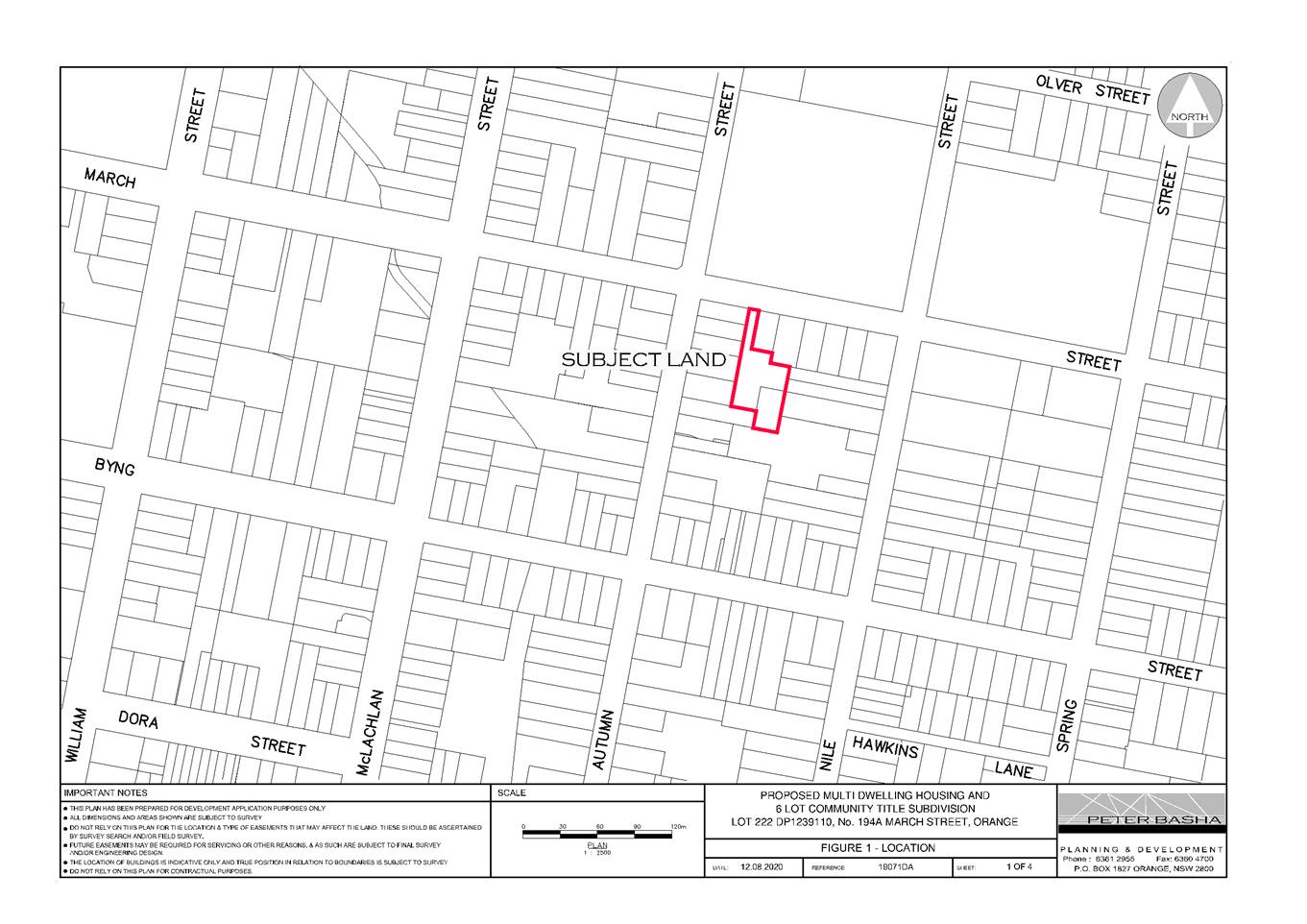
Council
Meeting
15 December 2020


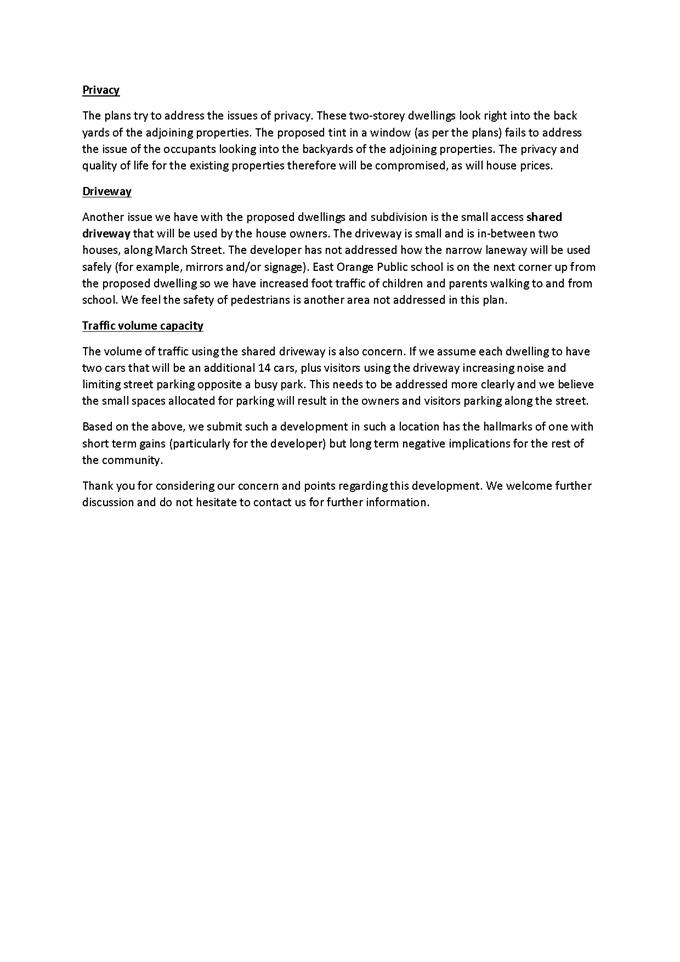

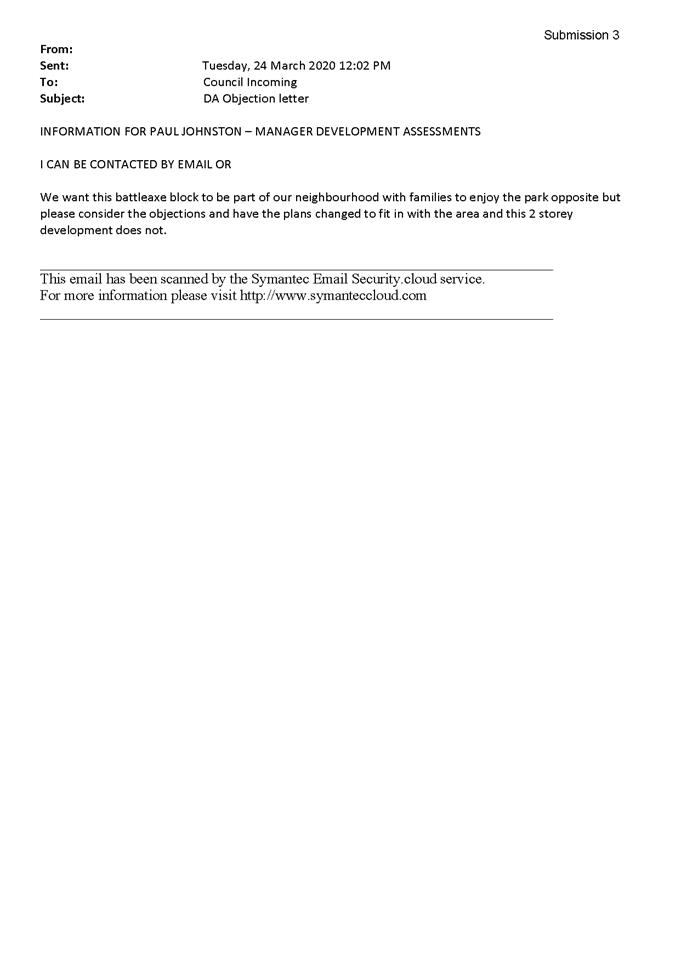

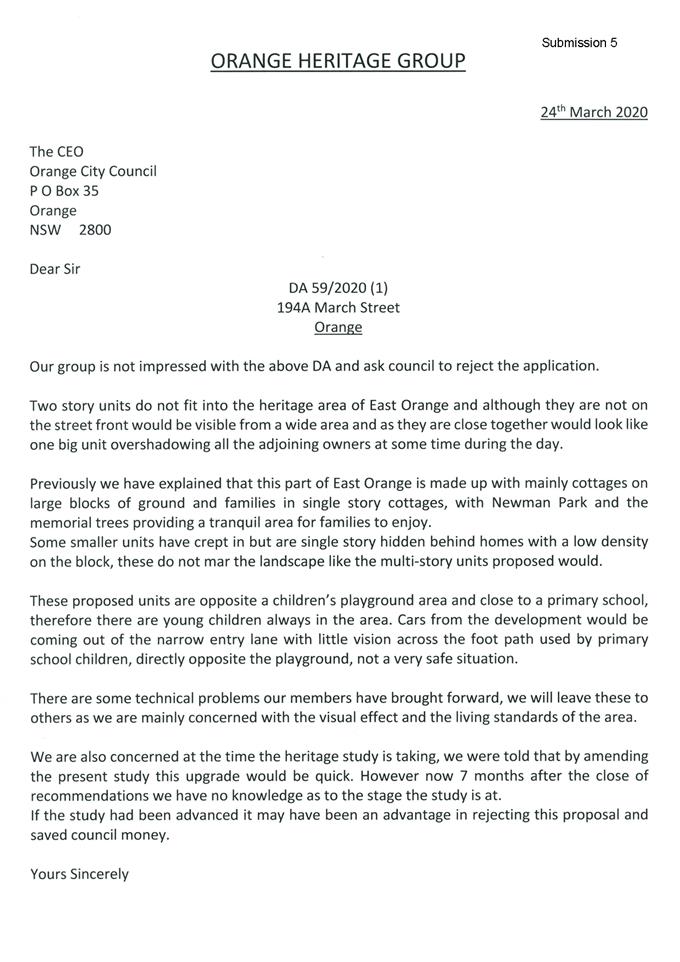
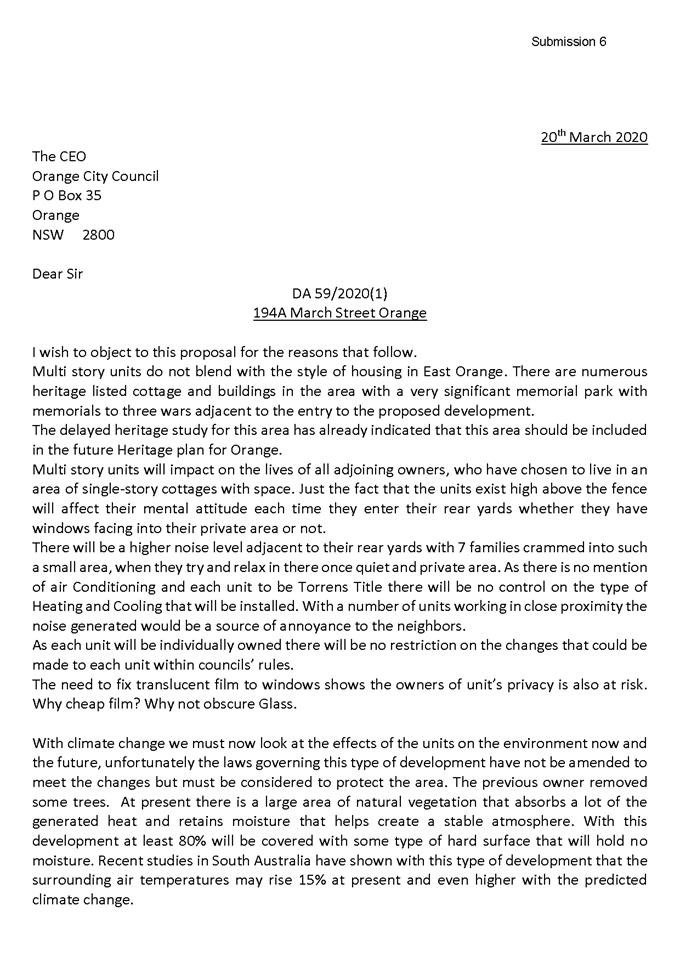
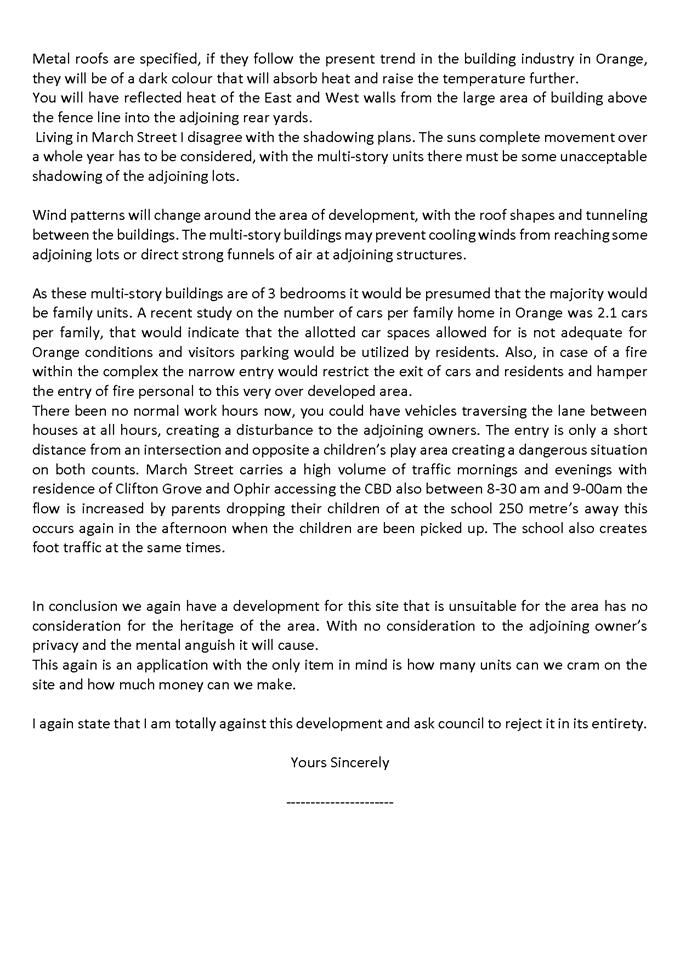
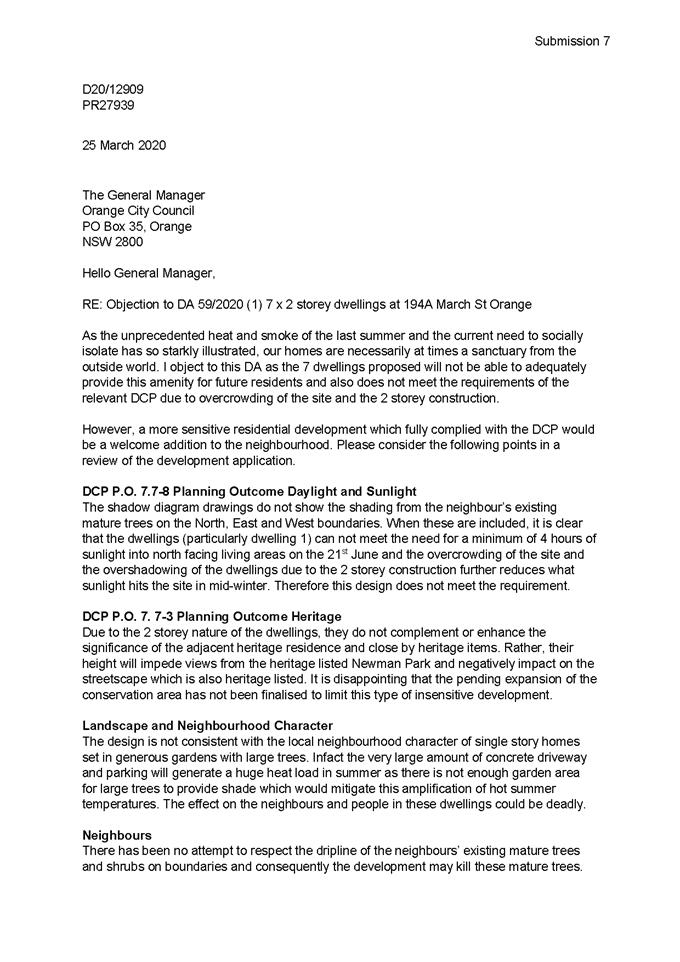

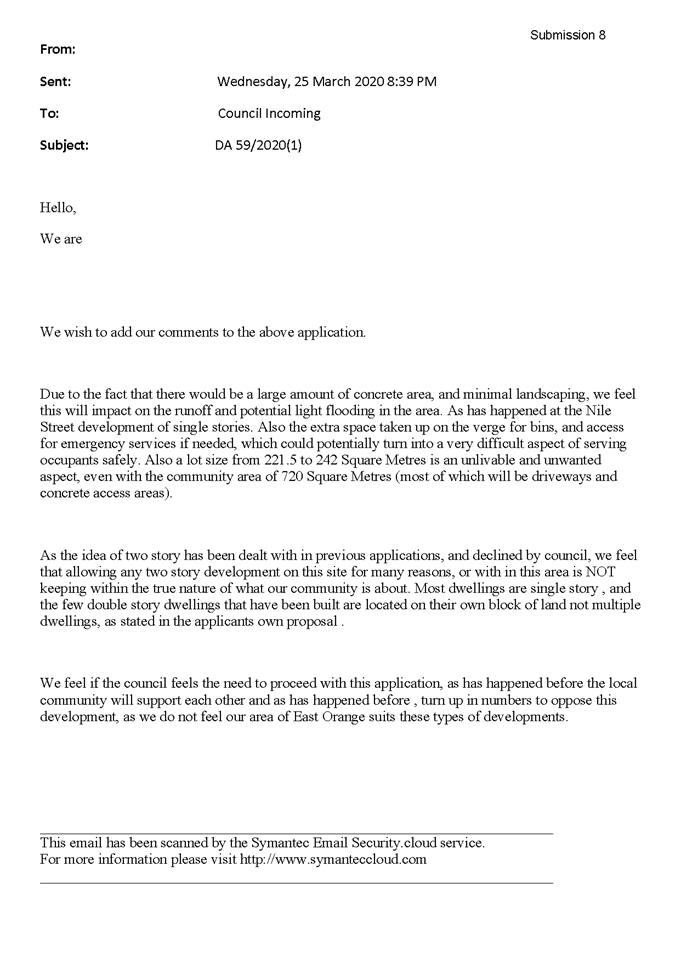
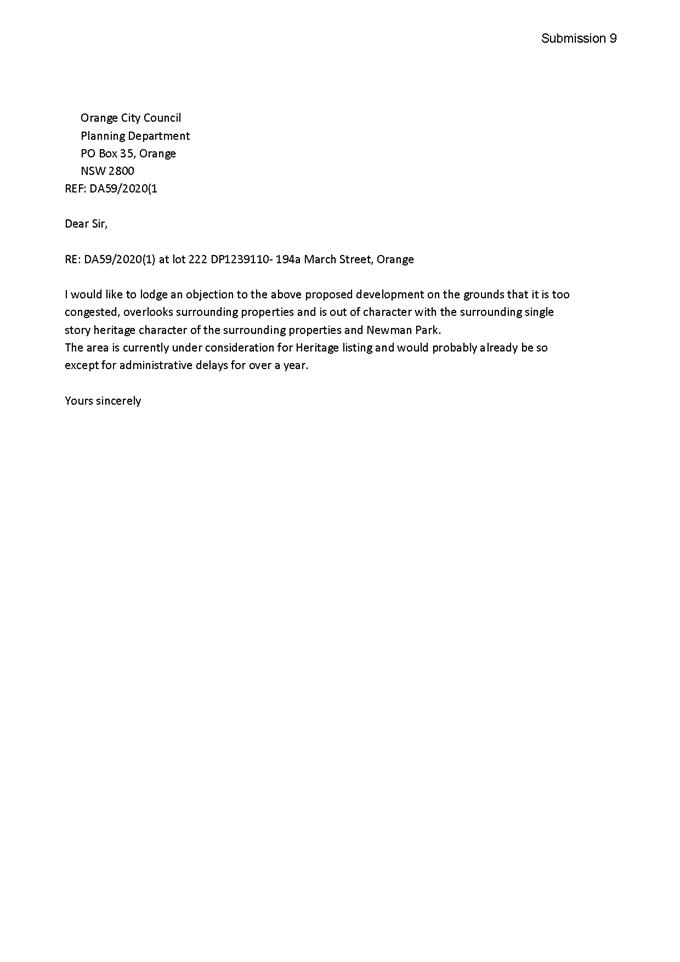
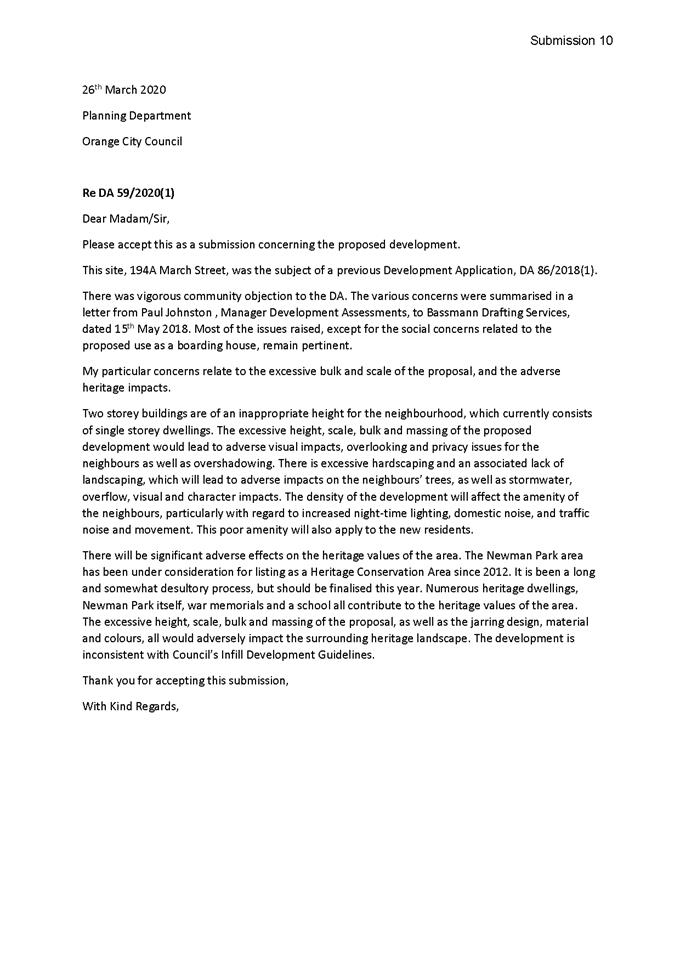


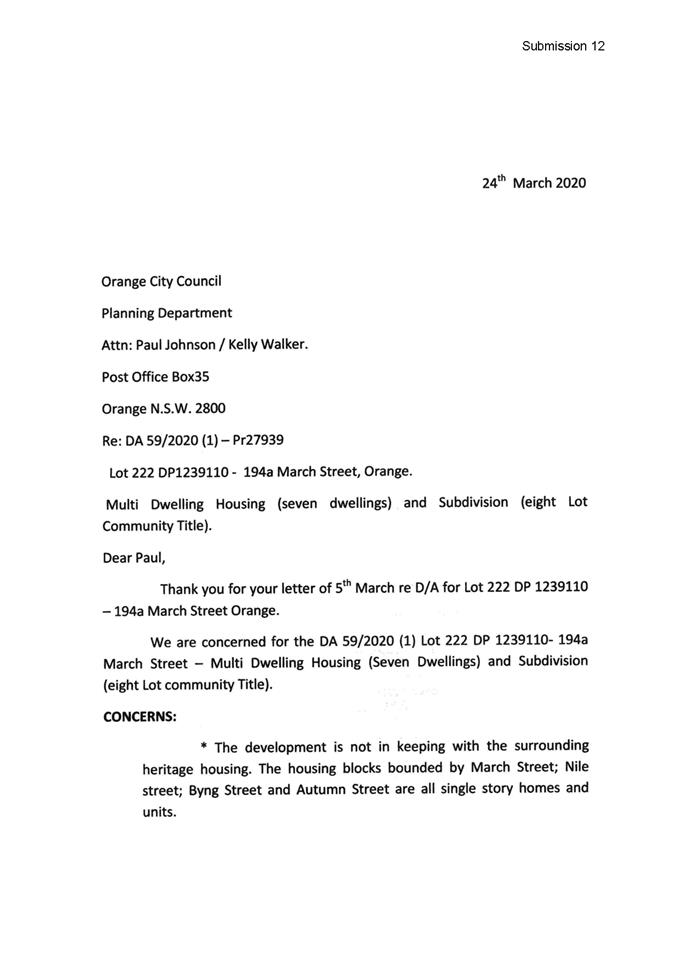
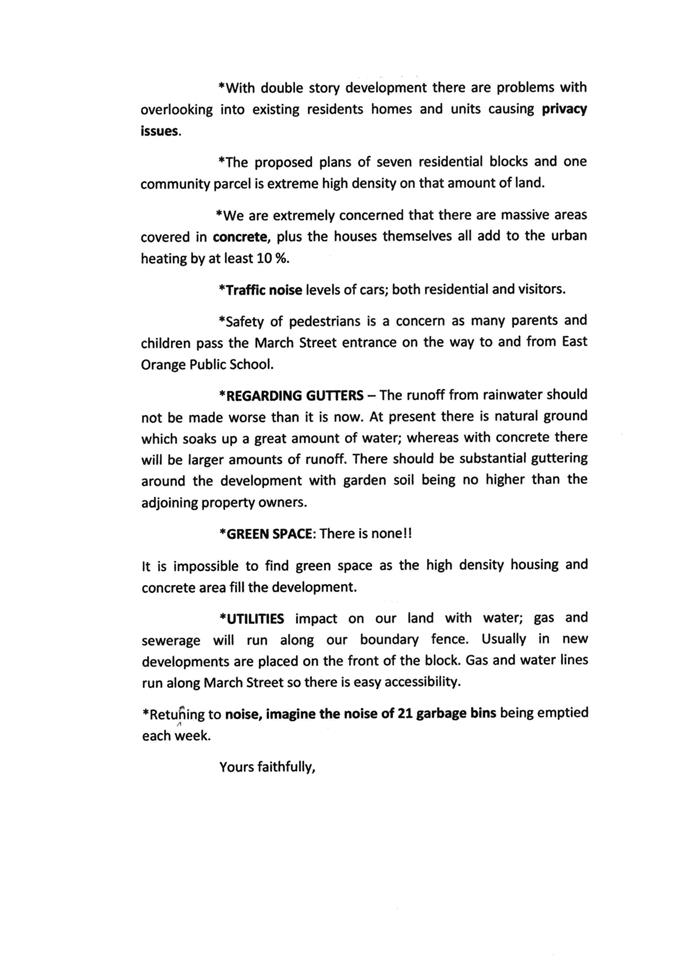
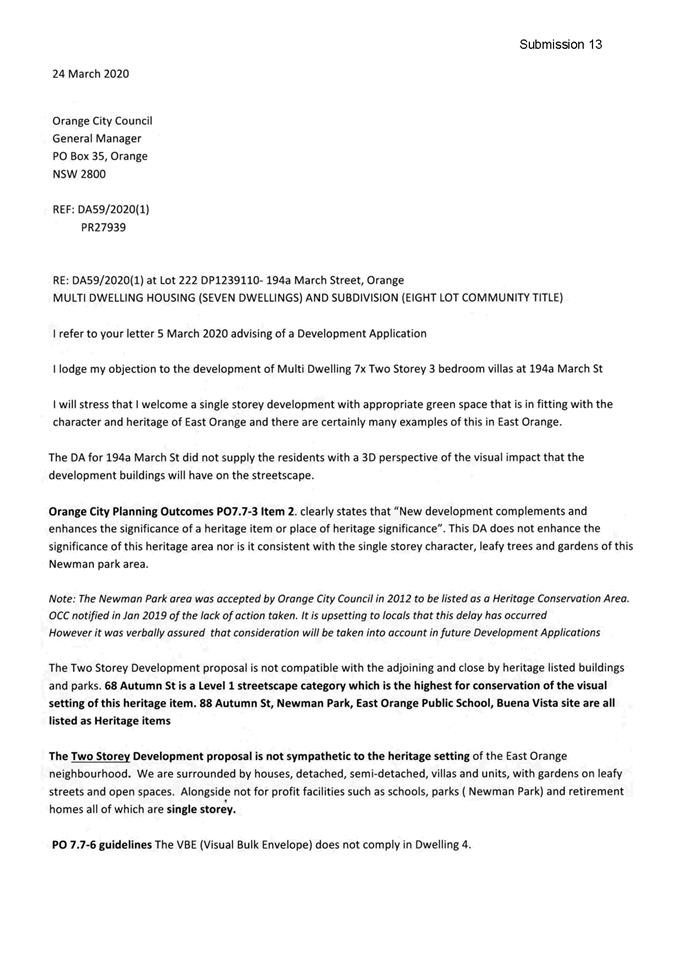


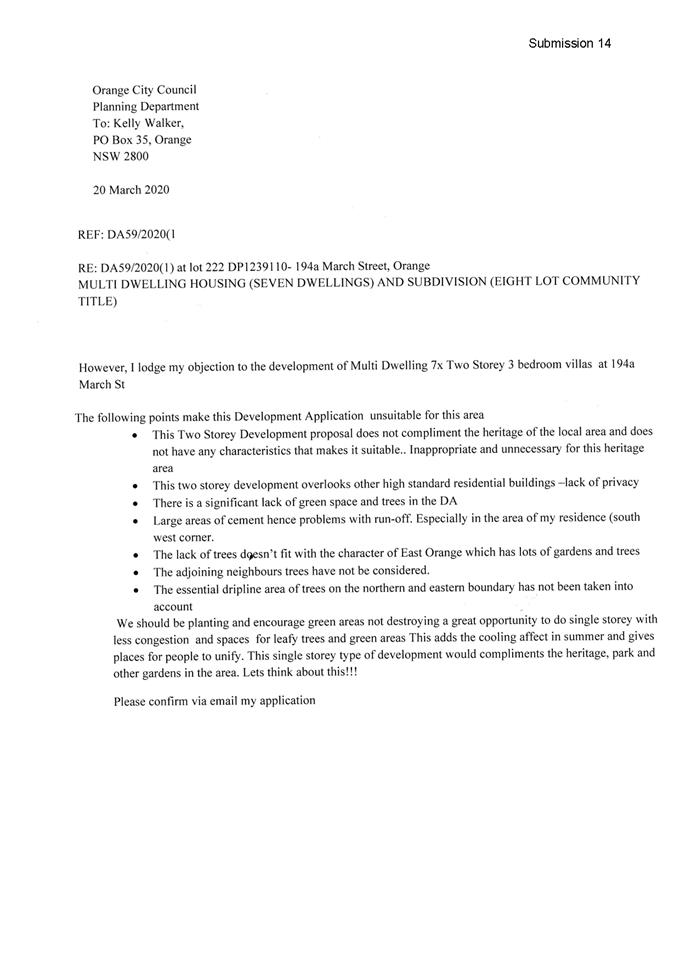
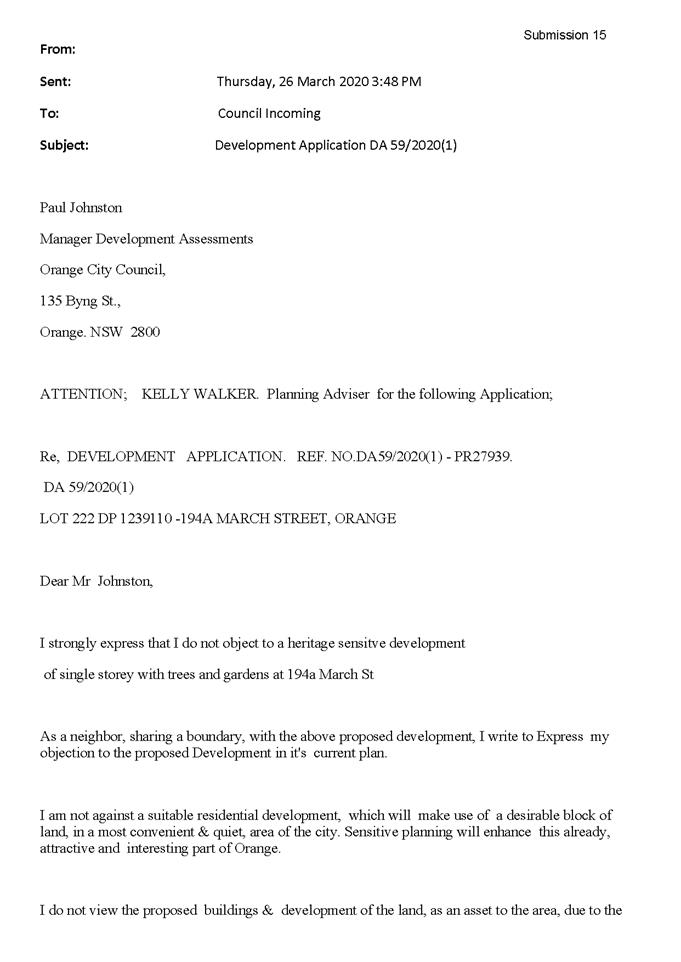
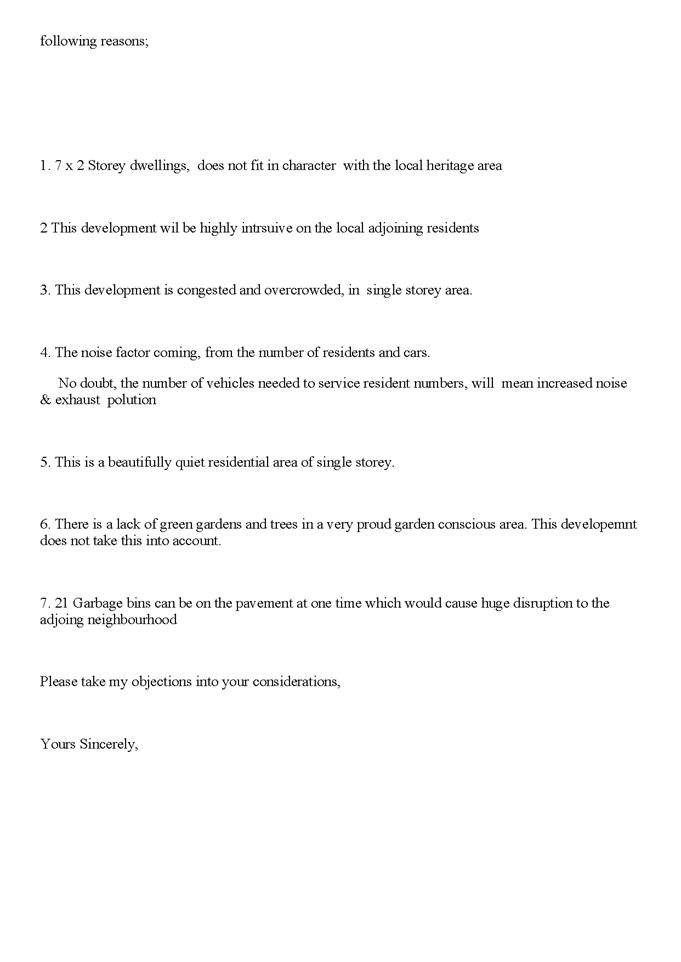

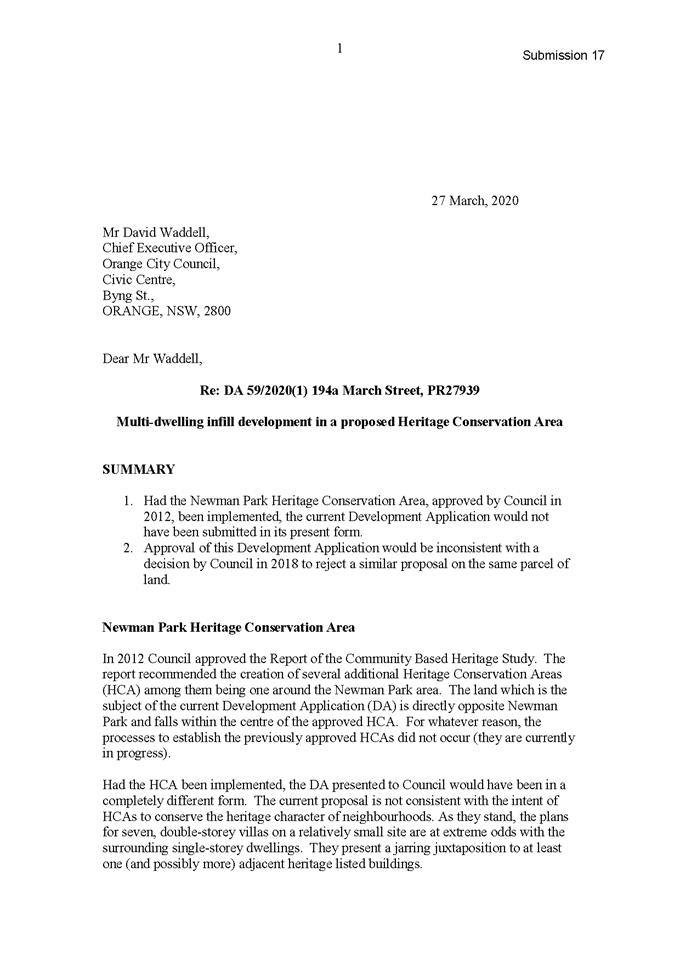
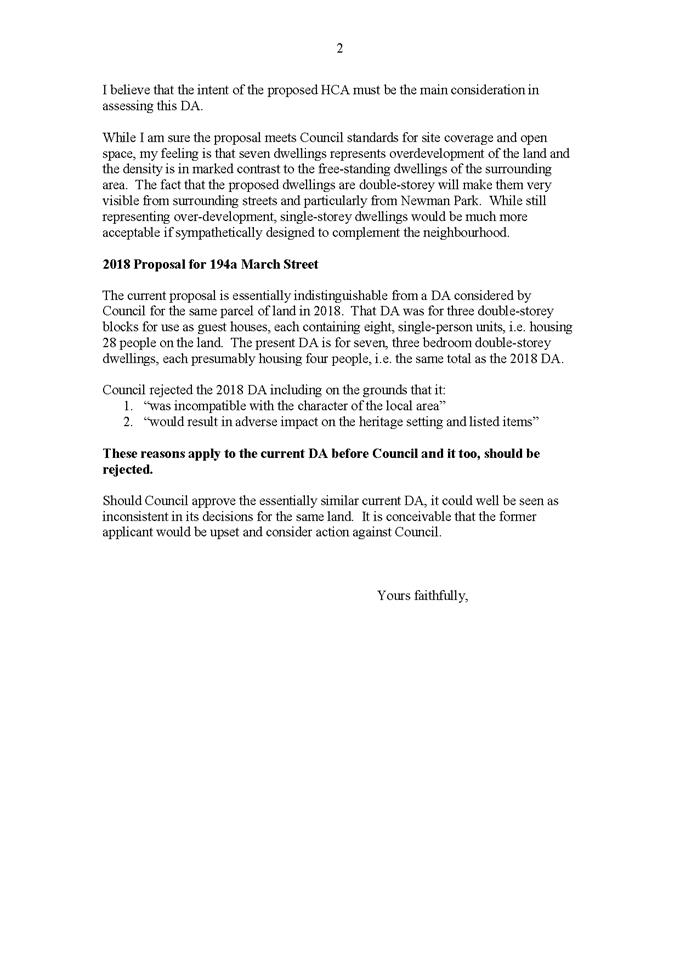

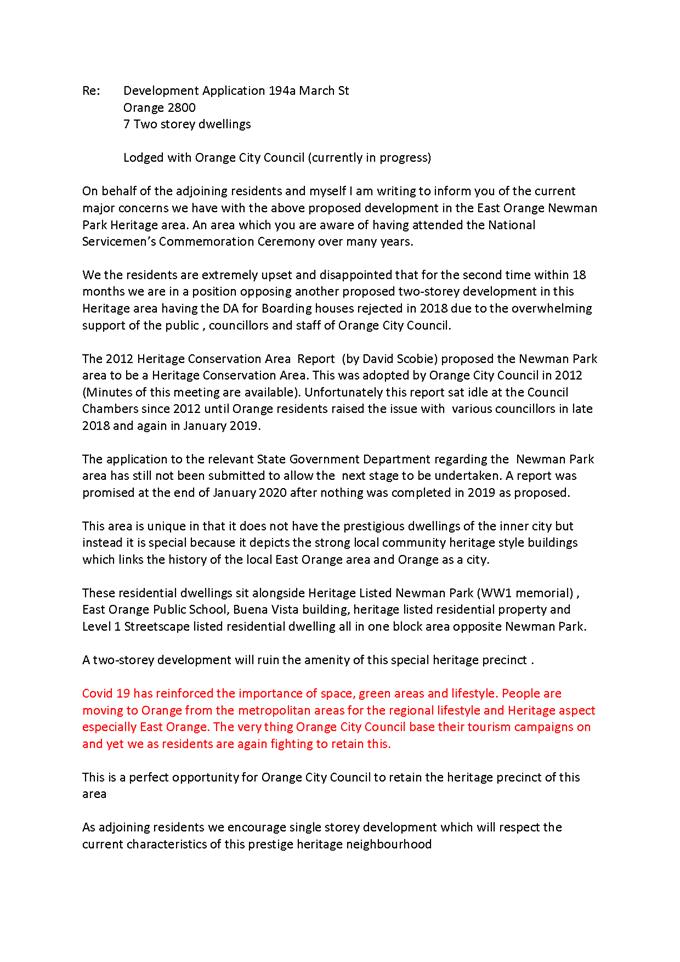
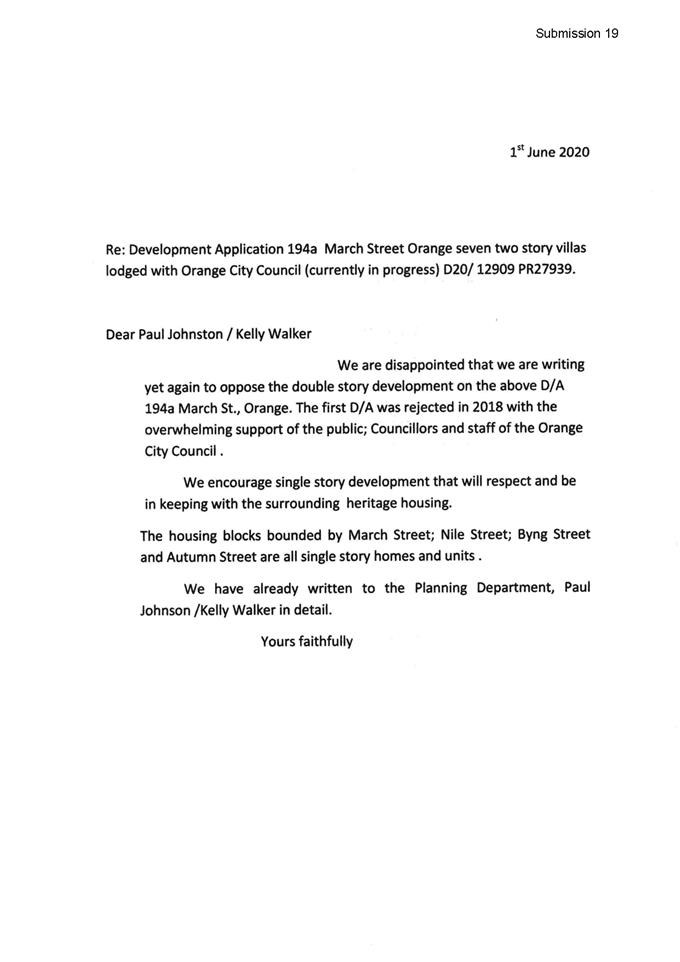
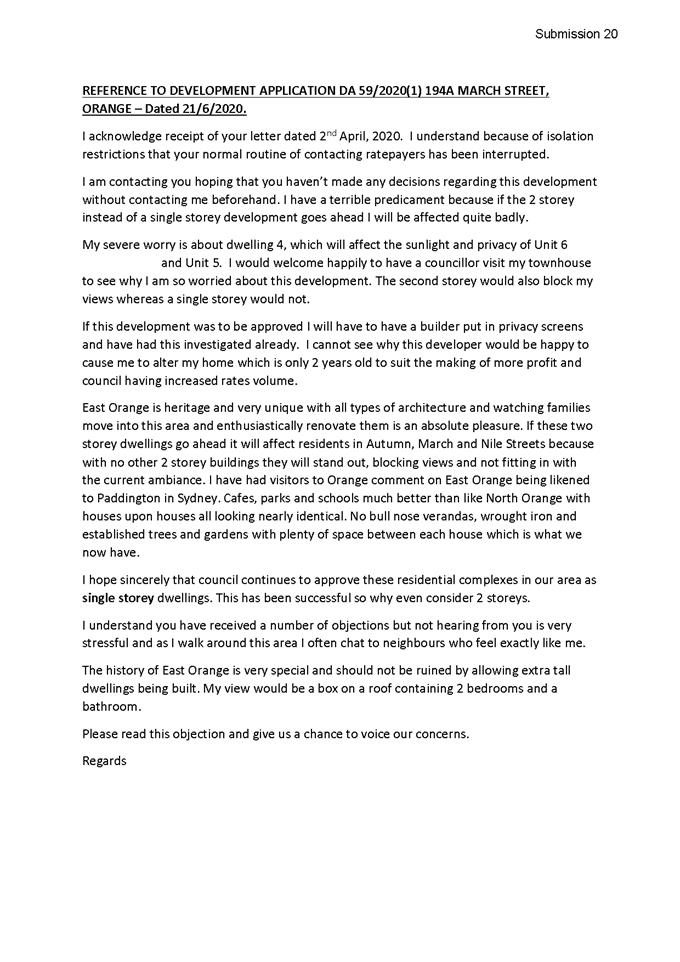

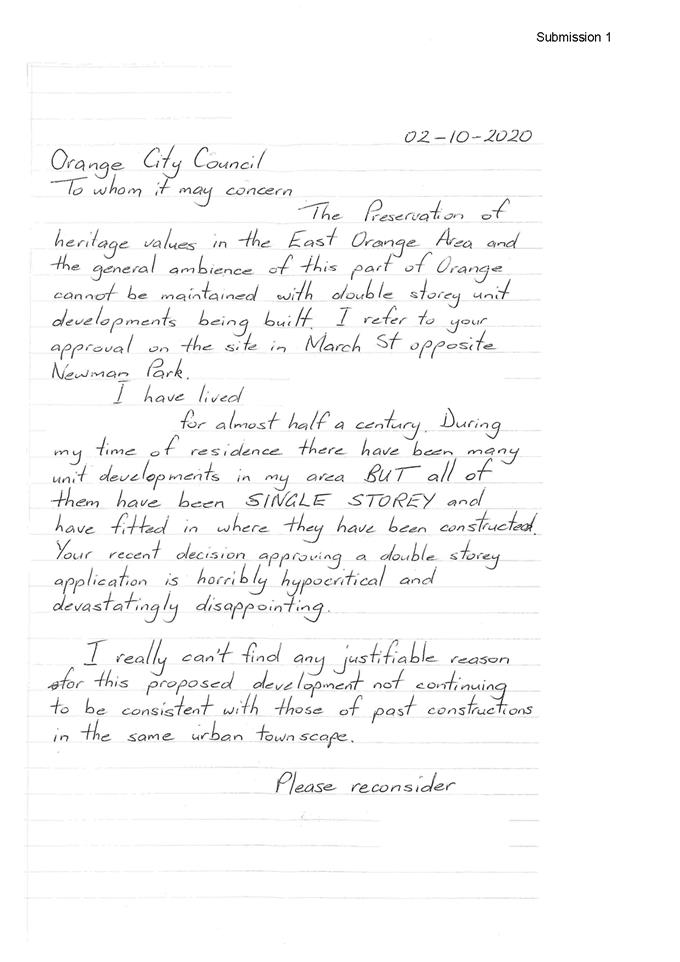
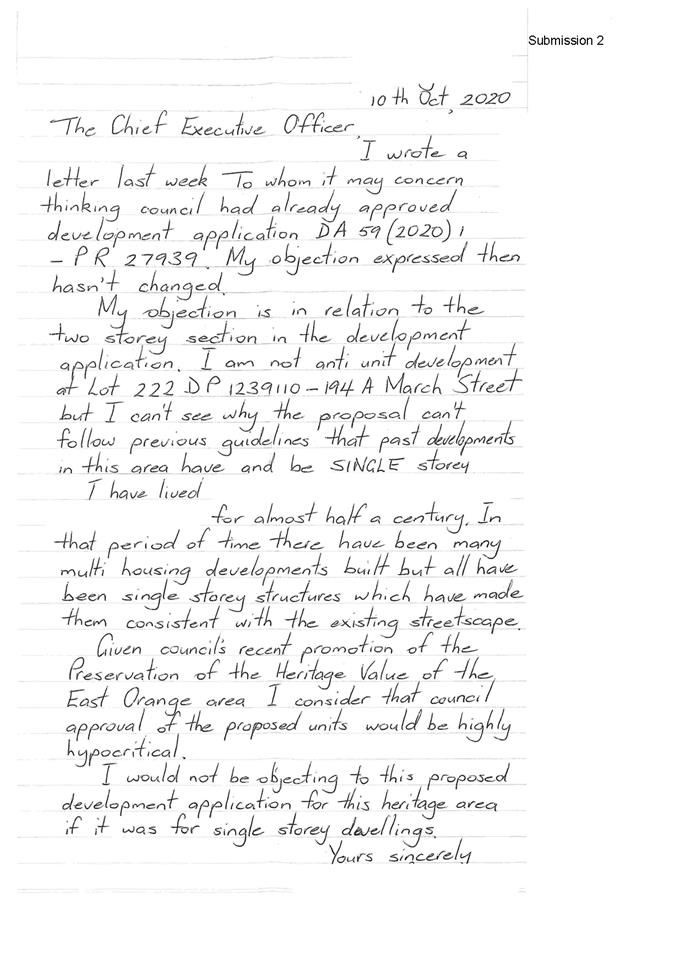
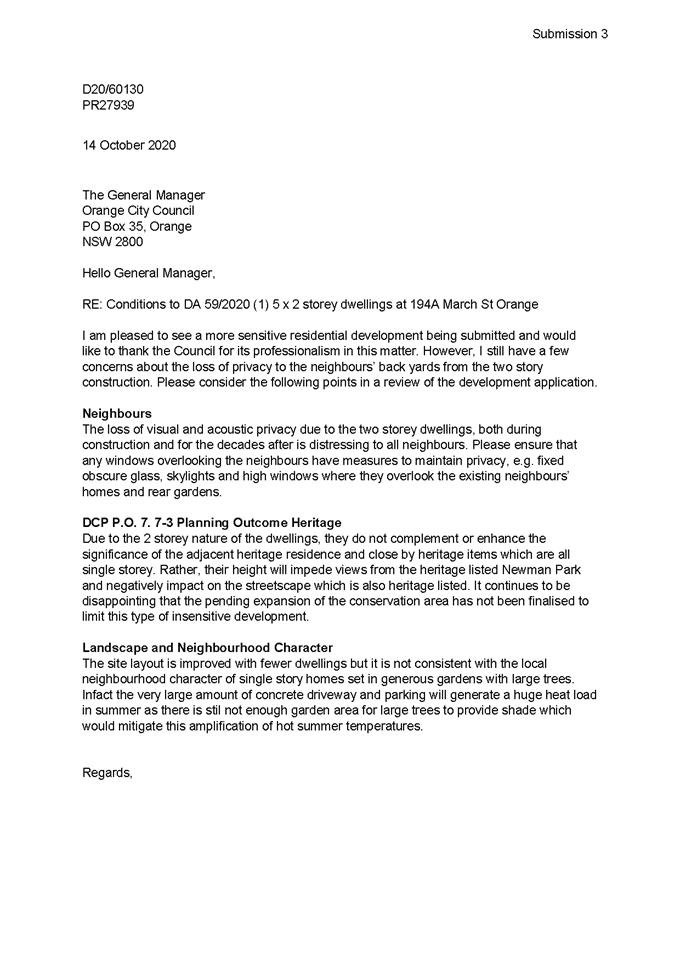
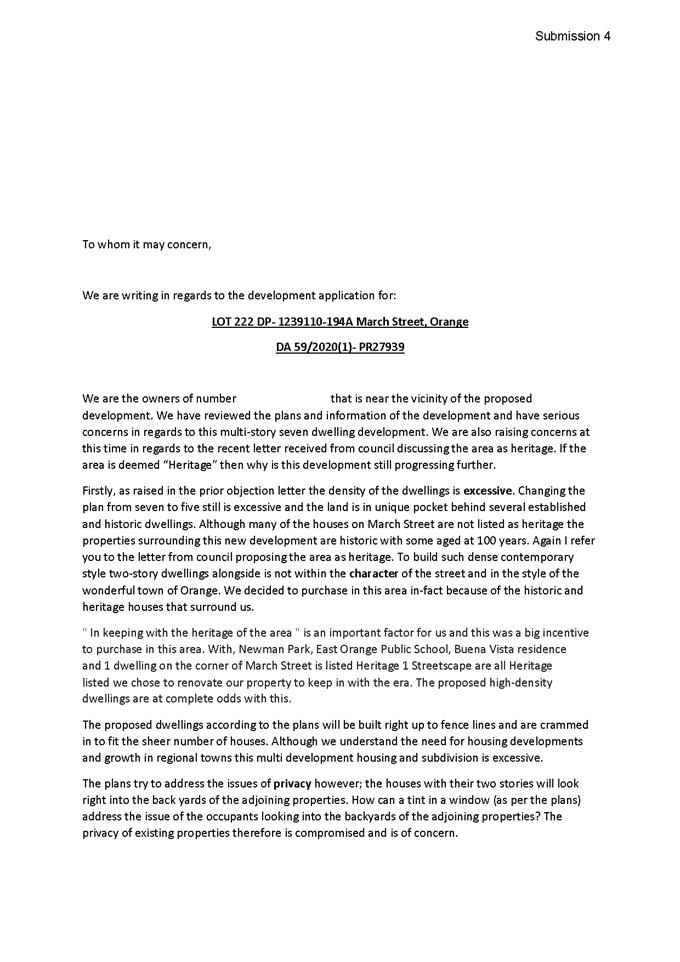

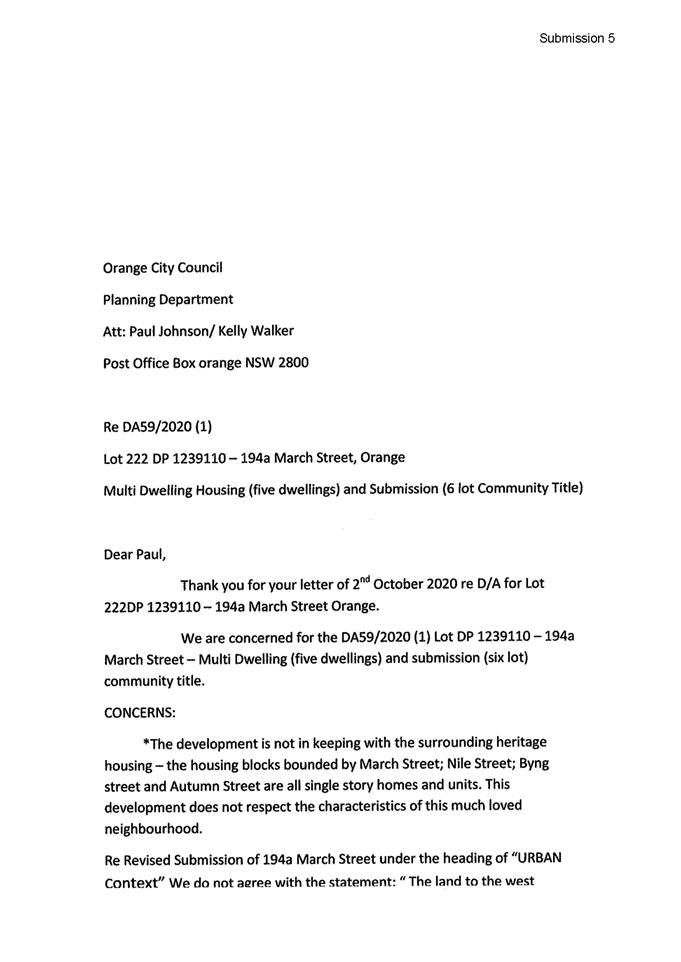
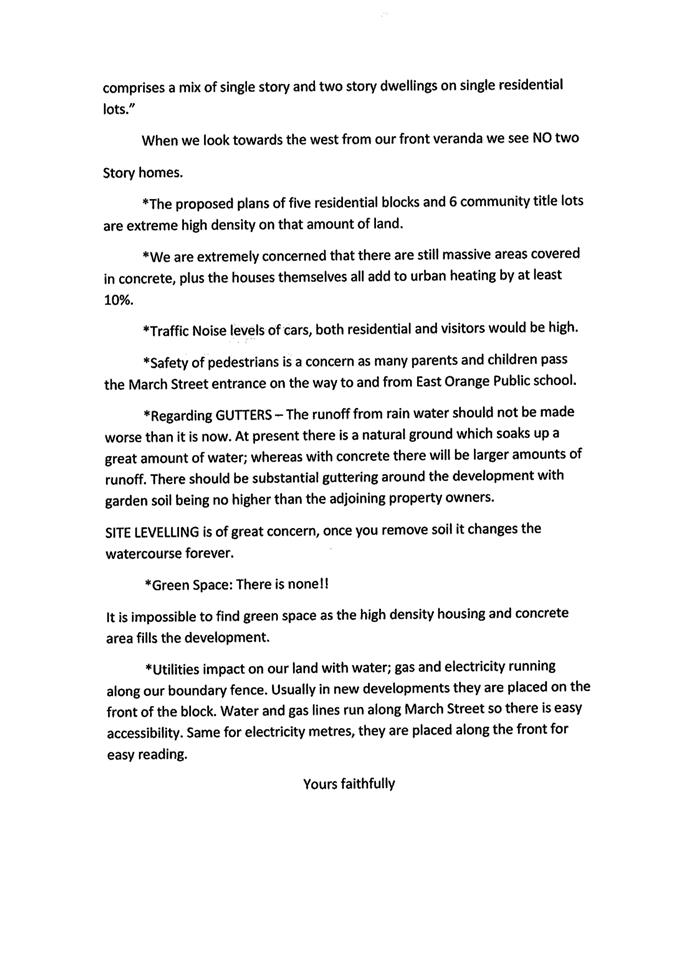
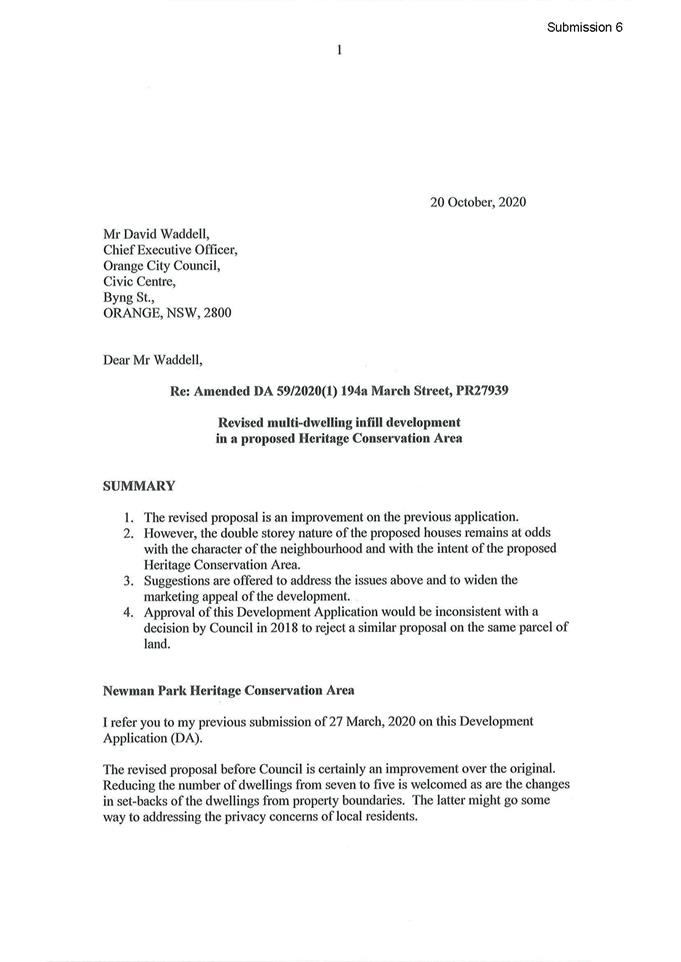
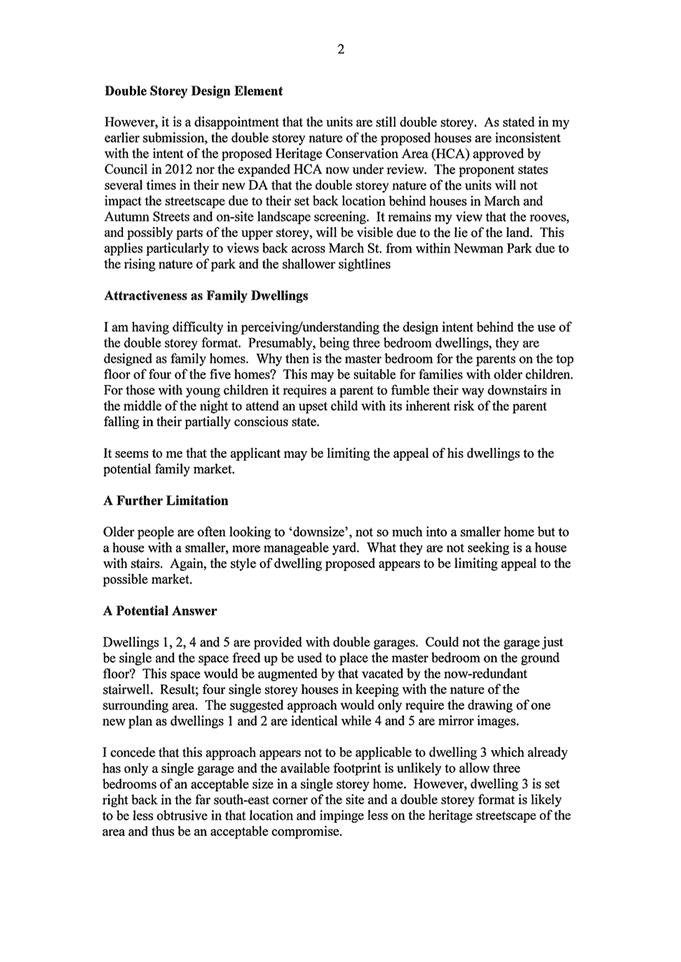
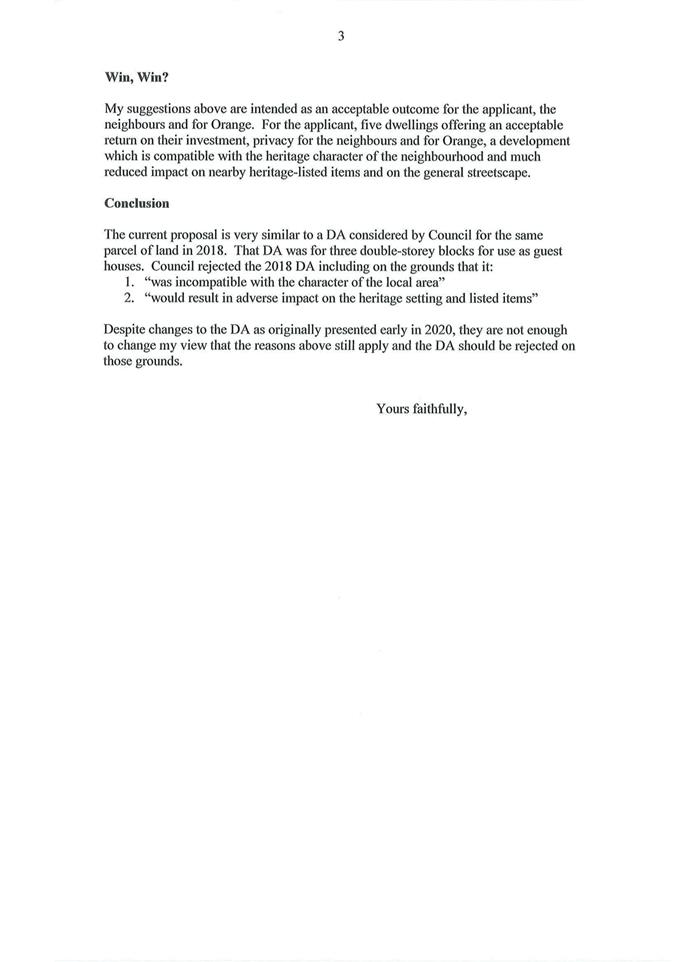
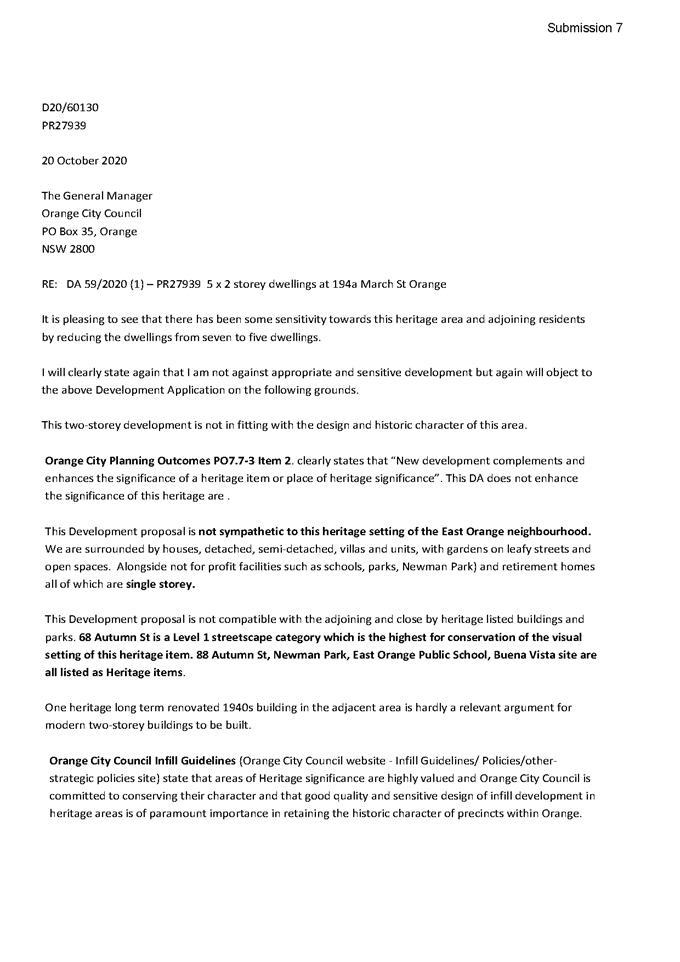
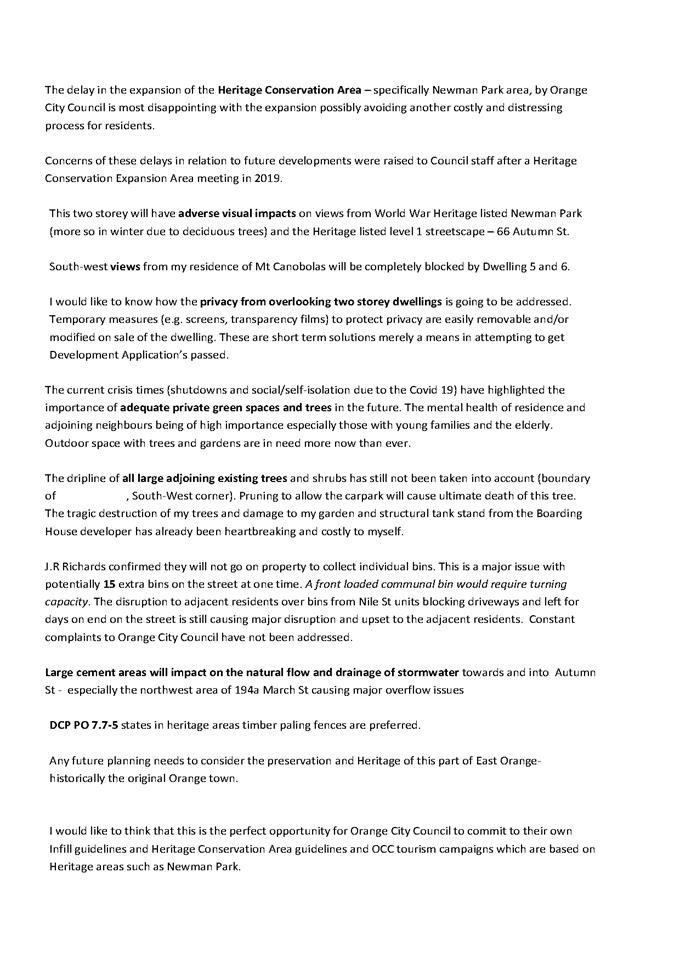

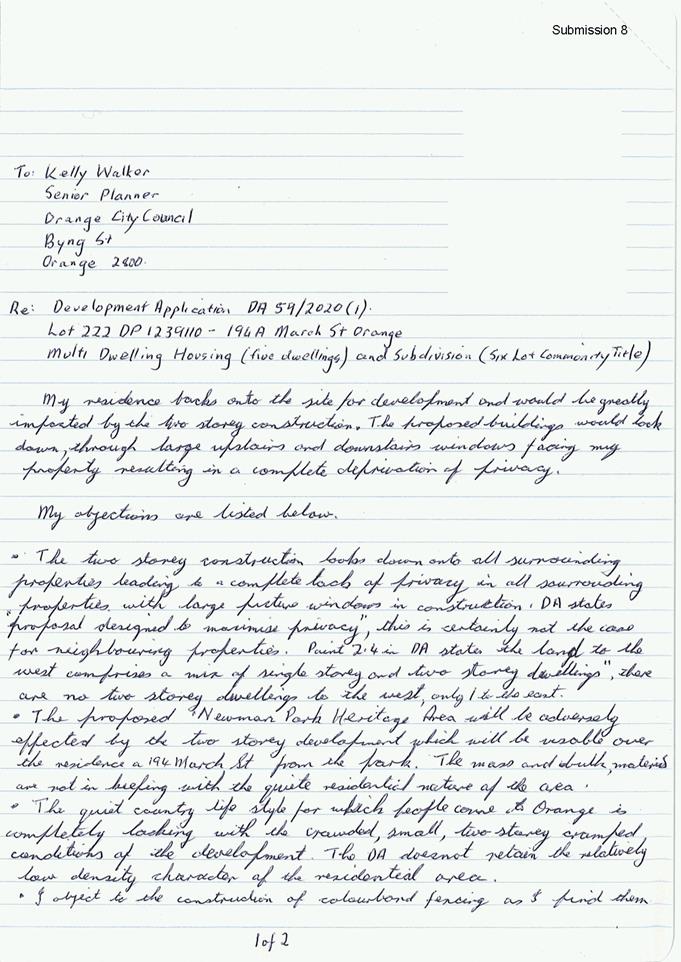

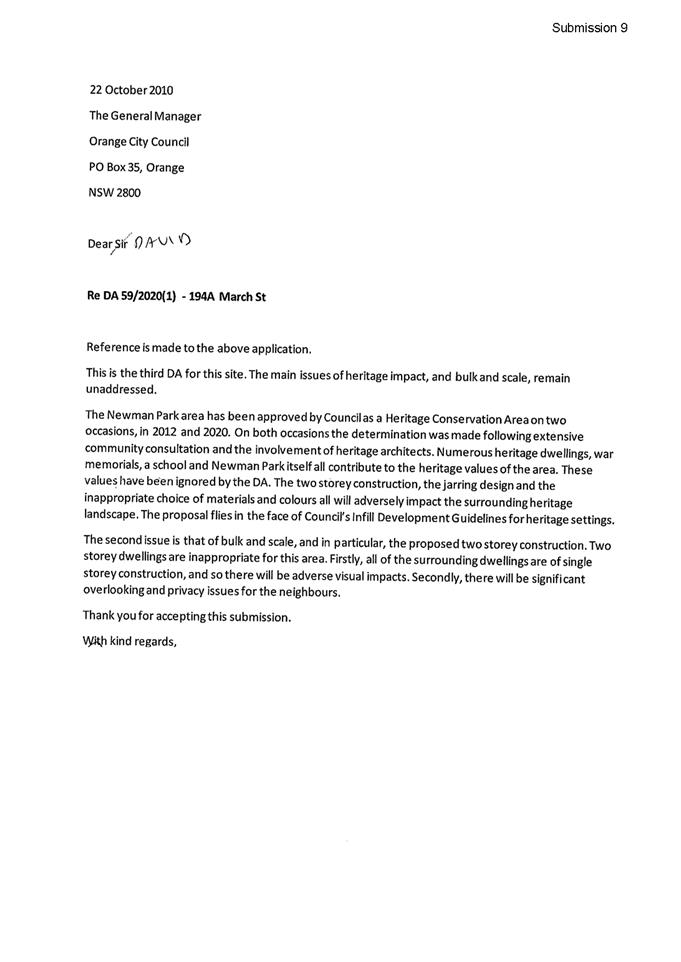
5.6 Development
Application DA 284/2020(1) - 4 Kearneys Drive
RECORD
NUMBER: 2020/2508
AUTHOR: Summer
Commins, Senior Planner
EXECUTIVE
Summary
|
Application
lodged
|
31 July
2020
Amendments
submitted 4 November 2020
72 STOP
days
|
|
Applicant/s
|
Mr S
Muffet
|
|
Owner/s
|
Nile
Street Pty Ltd
|
|
Land
description
|
Lot A DP
365443 - 4 Kearneys Drive, Orange
|
|
Proposed
land use
|
Demolition
(existing dwelling and outbuildings) and Centre-based Child Care Facility
|
|
Value of
proposed development
|
$1,131,627.00
(MCG Quantity Surveyors April 2020)
|
Council's consent is sought for development of land at 4 Kearneys
Drive, Orange, for a centre-based child care facility.
The proposal involves demolition of existing improvements on
the land, and construction of a purpose-built child care centre and associated
site works. The proposed care facility will provide 61 child care places for
children aged between 0-5 years.
Notable planning matters for the proposed development
include:
· Non-compliance
with development controls relating to onsite car parking.
· The
impact of the proposal on neighbourhood character and function.
· The
operational impacts on residential amenity (noise and traffic).
· The
impacts on the landscape character of the site and setting.
The proposal comprises advertised development in accordance
with Council’s Community Participation Plan 2019. Public and written
notice of the application was given. At the completion of the exhibition
period, twelve submissions were received. The issues raised in the submissions
generally relate to noise impacts and traffic management.
Staff assessment of the application was informed by the Land
and Environment Court Judgment relating to Australian Child Care Solutions Pty
Ltd V Orange City Council [2017] NSW LEC1737). Proceedings related to
Council’s refusal of a development application for a proposed child care centre
at 36-40 Turner Crescent. The appeal was dismissed by the LEC and the
application determined by refusal.
As outlined in this report, it is considered that the
proposed development will extend the site beyond its capacity, and be contrary
to the established neighbourhood character and function. Impacts of the
proposed development will exceed acceptable limits. The impacts cannot be
suitably mitigated via consent conditions. Refusal of the application is
recommended.

Figure 1 - locality plan
DECISION FRAMEWORK
Development in Orange is governed by two key documents
Orange Local Environment Plan 2011 and Orange Development Control Plan 2004. In
addition the Infill Guidelines are used to guide development, particularly in
the heritage conservation areas and around heritage items.
Orange Local Environment Plan 2011 – The
provisions of the LEP must be considered by the Council in determining the
application. LEPs govern the types of development that are permissible or
prohibited in different parts of the City and also provide some assessment
criteria in specific circumstances. Uses are either permissible or not. The
objectives of each zoning and indeed the aims of the LEP itself are also to be
considered and can be used to guide decision making around appropriateness of
development.
Orange Development Control Plan 2004 – the DCP
provides guidelines for development. In general it is a performance based
document rather than prescriptive in nature. For each planning element there
are often guidelines used. These guidelines indicate ways of achieving the
planning outcomes. It is thus recognised that there may also be other solutions
of merit. All design solutions are considered on merit by planning and building
staff. Applications should clearly demonstrate how the planning outcomes are
being met where alternative design solutions are proposed. The DCP enables
developers and architects to use design to achieve the planning outcomes in
alternative ways.
DIRECTOR’S COMMENT
It is considered that the impacts of
the proposed centre-based child care facility will exceed acceptable limits, as
they relate to car parking demands; neighbourhood and landscape character; and
the acoustic environment. The identified impacts cannot be mitigated via
consent conditions. The proposed development will extend the site beyond its
capacity. Refusal of the application is recommended.
Link To Delivery/OPerational Plan
The recommendation in this report
relates to the Delivery/Operational Plan strategy “10.1 Preserve - Engage
with the community to ensure plans for growth and development are respectful of
our heritage”.
Financial Implications
Nil
Policy and Governance Implications
Nil
|
Recommendation
That
Council REFUSES Development Application DA 284/2020(1) for Demolition (existing dwelling and
outbuildings) and Centre-based Child Care Facility at Lot A
DP 365443 – 4 Kearneys Drive, Orange, on the following grounds:
1 Insufficient
onsite car parking will be provided to accommodate the parking demands of the
development.
2 The
development will have adverse noise impacts for adjoining dwellings.
3 The
development will have adverse impact on the landscape character of the site
and setting.
4 The development will be inconsistent with the
neighbourhood character and function.
5 The development is not in the public interest.
|
further considerations
Consideration has been given to the
recommendation’s impact on Council’s service delivery; image and
reputation; political; environmental; health and safety; employees;
stakeholders and project management; and no further implications or risks have
been identified.
SUPPORTING INFORMATION
Staff assessment of the application
was informed by the Land and Environment Court Judgment relating to Australian
Child Care Solutions Pty Ltd V Orange City Council [2017] NSW LEC1737).
Proceedings related to
Council’s refusal of a development application for a proposed child care
centre at 36-40 Turner Crescent. The appeal was dismissed by the LEC and the
application determined by refusal.
The following Final Remark is made
on the Court Judgement:
A lower scale development
would be more respective of residential character. I find that the proposed
development pushes the site beyond its capacity. A less intense use…
would increase the development’s compatibility with the surrounding
residential area.
A smaller centre would meet
the day-to-day needs of residents as contemplated by the objectives of the
zoning. It would also allow for more generous parking arrangements, and result
in an overall less intrusive and more compatible development. A smaller, lower,
less bulky building (or buildings) could be placed on the site so as to reduce
visual and other amenity impacts, including traffic movements.
As outlined in this report, it is
considered that the Final Remark above is relevant to the proposed development,
in relation to car parking provision, building design and amenity impacts.
THE PROPOSAL
Council's consent is sought for
development of land at 4 Kearneys Drive, Orange, for a centre-based child care
facility.
Demolition
The proposal involves demolition of
the following improvements on the subject land:
· Brick
and tile dwelling house circa 1960.
· Attached
carport and two detached metal sheds.
· Concrete
driveways.
· Trees
and tree groups.
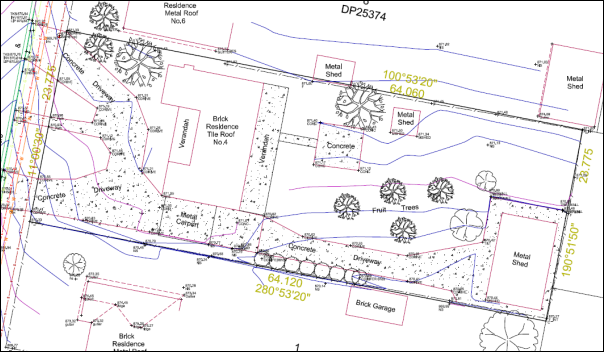
Figure 2 – subject land - improvements to be
removed
Construction
A purpose-built child care centre
will be constructed on the cleared parcel. The proposed building will comprise
a single storey structure of modern domestic design and scale.
The building will have a footprint
of some 22m x 24m, and total floor area of 410.5m2.
The building will have frontage to Kearneys Drive and be set back some 22m
from the front boundary.
Construction materials will comprise
concrete slab on ground, face brick external walls, Colorbond roof sheeting and
aluminium-framed openings. The proposed building will contain:
· Entry
foyer with reception area, office and staff room.
· Three
age group-specific playrooms with adjacent bathrooms, stores and sleeping
rooms.
· Kitchen,
laundry and store rooms.
· External
waste storage area.
The proposed building is
depicted below (see Figures 3 and 4).
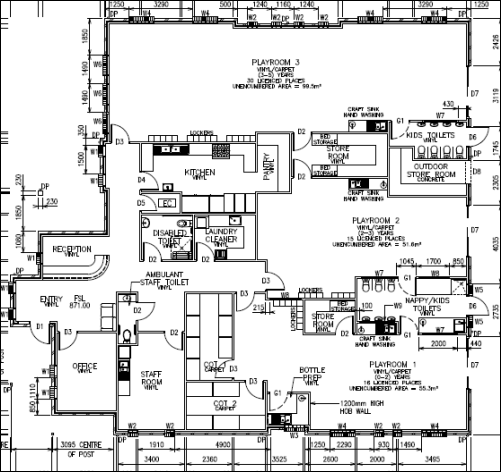
Figure 3 – proposed floor plan
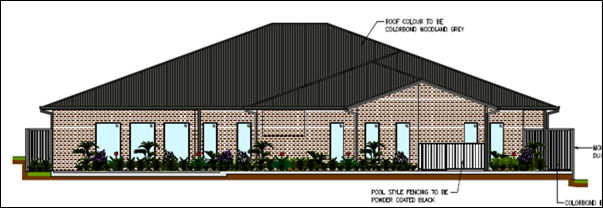
Figure 4 – proposed front (west) elevation to
Kearneys Drive
Site Works
The proposal involves various site works including:
· An
altered 6m wide footpath crossing and driveway via Kearneys Drive.
· Construction
of an at-grade car park at the site frontage, containing 14 car parking spaces
(standard, tandem and accessible).
· New
front fencing to Kearneys Drive comprising 1.2m high brick piers with infill
timber slats.
· New
fencing to side and rear boundaries comprising 1.8m-2.1m high modular walls.
· Retaining
walls to the side and rear boundaries of variable heights (250mm–560mm).
· External
playground at the rear of the building.
· Site
landscaping.
· Placement
of a pylon sign at the front boundary, with overall height of 2.2m, and signage
panel of 1m x 1.5m.
The proposed site layout is
depicted below (see Figure 5).
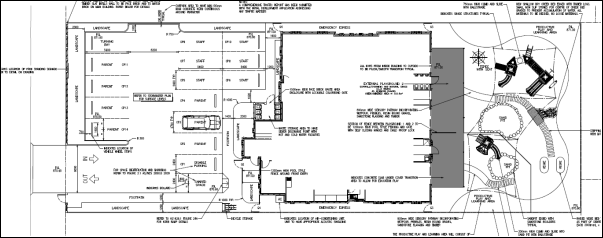
Figure 5 – proposed site layout
The proposed child care centre will
provide 61 long day child care places for children aged between 0-5 years, and
operate between the hours of 7am and 6pm Monday to Friday. The child care
centre will employ ten staff members.
MATTERS FOR CONSIDERATION UNDER
THE ENVIRONMENTAL PLANNING AND ASSESSMENT ACT 1979
Section 1.7 - Application of
Part 7 of the Biodiversity Conservation Act 2016 and Part 7A of the
Fisheries Management Act 1994
Pursuant to Clause 1.7:
This
Act has effect subject to the provisions of Part 7 of the Biodiversity Conservation Act 2016 and Part 7A of the Fisheries Management Act 1994 that relate to the operation of this Act in connection
with the terrestrial and aquatic environment.
In consideration of this section, the proposed development
is not likely to significantly affect a threatened species:
· The
subject and adjoining lands are not identified as biodiversity sensitive on the
Orange LEP 2011 Terrestrial Biodiversity Map.
· The
proposal involves removal of a number of trees/tree groups over the site.
A Basic Tree Assessment was submitted in support of the proposal (Monaco
Designs Pty Ltd, 1 May 2020). Trees to be removed include (common named) Pyrus,
fruit, Acacia, Thuja and Irish Strawberry. Three trees are subject to Tree
Preservation Order pursuant to Orange DCP 2004, namely Acacia longifolia,
Thuja CV and Arbutus unedo. None of the trees to be removed form
part of the Blakely’s Box Gum Grassy Woodland; and clearing thresholds
prescribed by regulation will not be exceeded (0.25ha).
· The
land is not located in an area of high biodiversity value. The land is a highly
disturbed urban environment and trees to be removed do not form part on an
endangered ecological community. The development is not likely to give rise to
any significant impact upon any endangered ecologically communities, threatened
species or their habitat.
Based on the foregoing consideration, a Biodiversity
Assessment Report is not required and the proposal suitably satisfies the
relevant matters at Clause 1.7.
Section 4.15 Evaluation
Provisions of any
Environmental Planning Instrument S4.15(1)(a)(i)
Orange Local Environmental Plan
2011
Part 1 - Preliminary
Clause 1.2 Aims of Plan
The
particular aims of Orange LEP 2011 relevant to the proposal include:
(a) to encourage development which complements
and enhances the unique character of Orange as a major regional centre boasting
a diverse economy and offering an attractive regional lifestyle,
(b) to
provide for a range of development opportunities that contribute to the social,
economic and environmental resources of Orange in a way that allows present and
future generations to meet their needs by implementing the principles for
ecologically sustainable development,
(f) to
recognise and manage valued environmental heritage, landscape and scenic
features of Orange.
As outlined in this report, the proposed development will
adversely impact on residential amenity/lifestyle afforded to the subject
residential neighbourhood. The landscape values of the site and setting are
undervalued in the proposed site layout and building design. To this effect,
the proposal will be contrary to the Aims of the Plan.
Clause 1.6 Consent Authority
Clause 1.6 is applicable and
states:
The consent authority for the
purposes of this Plan is (subject to the Act) the Council.
Clause 1.7 Mapping
The subject site is identified
on the LEP maps in the following manner:
|
Land Zoning Map:
|
Land zoned R1 General Residential
|
|
Lot Size Map:
|
No minimum lot size
|
|
Heritage Map:
|
Not a heritage item or conservation
area
|
|
Height of Buildings Map:
|
No building height limit
|
|
Floor Space Ratio Map:
|
No floor space limit
|
|
Terrestrial Biodiversity Map:
|
No biodiversity sensitivity on the
site
|
|
Groundwater Vulnerability Map:
|
Groundwater vulnerable
|
|
Drinking Water Catchment Map:
|
Not within the drinking water
catchment
|
|
Watercourse Map:
|
Not within or affecting a defined
watercourse
|
|
Urban Release Area Map:
|
Not within an urban release area
|
|
Obstacle Limitation Surface Map:
|
No restriction on building siting
or construction
|
|
Additional Permitted Uses Map:
|
No additional permitted use applies
|
|
Flood Planning Map:
|
Not within/within a flood planning
area
|
Those matters that are of relevance are addressed in detail
in the body of this report.
Clause 1.9A Suspension of
Covenants, Agreements and Instruments
Clause 1.9A is applicable and
states in part:
(1) For the purpose of enabling
development on land in any zone to be carried out in accordance with this Plan
or with a consent granted under the Act, any agreement, covenant or other
similar instrument that restricts the carrying out of that development does not
apply to the extent necessary to serve that purpose.
(2) This
clause does not apply:
(a) to a covenant
imposed by the Council or that the Council requires to be imposed, or
(b) to
any prescribed instrument within the meaning of Section 183A of the Crown Lands Act 1989, or
(c) to
any conservation agreement within the meaning of the National Parks and Wildlife Act 1974, or
(d) to
any Trust agreement within the meaning of the Nature
Conservation Trust Act 2001, or
(e) to
any property vegetation plan within the meaning of the Native Vegetation Act 2003, or
(f) to
any biobanking agreement within the meaning of Part 7A of the Threatened Species Conservation Act 1995, or
(g) to
any planning agreement within the meaning of Division 6 of Part 4 of the Act.
In
consideration of this clause, Council staff are not aware of the title of the
subject property being affected by any of the above.
Part 2 - Permitted or Prohibited Development
Clause
2.1 Land Use Zones
The
subject land is zoned R1 General Residential.
The
proposal is defined as demolition and centre-based child care
facility.
The
proposal is permitted with consent in the R1 zone.
Clause 2.3 Zone Objectives and Land Use Table
The objectives of the R1 General Residential zone are:
· To
provide for the housing needs of the community.
· To
provide for a variety of housing types and densities.
· To
enable other land uses that provide facilities or services to meet the day to
day needs of residents.
· To
ensure development is ordered in such a way as to maximise public transport
patronage and encourage walking and cycling in close proximity to settlement.
· To
ensure that development along the Southern Link Road has an alternative access.
Centre-based child care
facilities are a permitted and complementary landuse in the R1 zone, and
not generally contrary to the Zone objectives. Notwithstanding, as outlined in
this report, it is considered that the particular development as proposed is
not suitable for this site as a consequence of arising impacts.
Clause 2.7
Demolition Requires Development Consent
Pursuant to Clause 2.7:
The demolition of a building
or work may be carried out only with development consent.
Consent is sought for demolition
of existing improvements on the land in accordance with this clause.
Part 3 - Exempt and Complying Development
The application is not exempt or complying development.
Part 4 - Principal Development Standards
The
Part 4 Development Standards do not apply to the subject land or proposed
development.
Part 5 - Miscellaneous Provisions
The Miscellaneous Provisions do not apply to the
application.
Part 6 - Urban Release Area
Not relevant to the application. The subject site is not
located in an Urban Release Area.
Part 7 - Additional Local Provisions
Clause
7.3 Stormwater Management
Clause 7.3 is applicable. This
clause states in part:
(3) Development
consent must not be granted to development on land to which this clause applies
unless the consent authority is satisfied that the development:
(a) is
designed to maximise the use of water permeable surfaces on the land having
regard to the soil characteristics affecting onsite infiltration of water, and
(b) includes,
where practical, onsite stormwater retention for use as an alternative supply
to mains water, groundwater or river water, and
(c) avoids
any significant impacts of stormwater runoff on adjoining downstream
properties, native bushland and receiving waters, or if that impact cannot be
reasonably avoided, minimises and mitigates the impact.
The proposed development may be
designed to satisfy the requirements of Clause 7.3.
Clause 7.6
Groundwater Vulnerability
The
subject land is identified as Groundwater Vulnerable on the Groundwater
Vulnerability Map. Clause 7.6 applies. This clause states in part:
(3) Before
determining a development application for development on land to which this
clause applies, the consent authority must consider:
(a) whether
or not the development (including any onsite storage or disposal of solid or
liquid waste and chemicals) is likely to cause any groundwater contamination or
have any adverse effect on groundwater dependent ecosystems, and
(b) the
cumulative impact (including the impact on nearby groundwater extraction for
potable water supply or stock water supply) of the development and any other
existing development on groundwater.
In consideration of Clause 7.6,
there are no aspects of the proposed development that will impact on
groundwater and related ecosystems. Water and sewer reticulation are connected
to the subject land.
Clause 7.11 Essential Services
Clause 7.11 applies and states:
Development consent must not be
granted to development unless the consent authority is satisfied that any of
the following services that are essential for the proposed development are
available or that adequate arrangements have been made to make them available
when required:
(a) the
supply of water,
(b) the
supply of electricity,
(c) the
disposal and management of sewage,
(d) stormwater
drainage or onsite conservation,
(e) suitable
road access.
In consideration of this clause, the listed utility services
are available to the site and adequate for the proposed development.
STATE ENVIRONMENTAL PLANNING
POLICIES
State Environmental Planning Policy 55 Remediation of
Land
SEPP
55 is applicable and states in part:
(1) A
consent authority must not consent to the carrying out of any development on
land unless (a) it has considered whether the land is contaminated.
(2) Before
determining an application for consent to carry out development that would
involve a change of use on any of the land specified in Subclause (4), the
consent authority must consider a report specifying the findings of a
preliminary investigation of the land concerned carried out in accordance with
the contaminated land planning guidelines.
(4) The land concerned is:
(c) to
the extent to which it is proposed to carry out development on it for
residential, educational, recreational or child care purposes, or for the
purposes of a hospital—land:
(i) in
relation to which there is no knowledge (or incomplete knowledge) as to whether
development for a purpose referred to in Table 1 to the contaminated land
planning guidelines has been carried out, and
(ii) on
which it would have been lawful to carry out such development during any period
in respect of which there is no knowledge (or incomplete knowledge).
The
proposal involves change of use of the subject land from residential to child
care purposes. Pursuant to Clauses 2 and 4 above, a Preliminary Site
Investigation (PSI) was submitted in support of the proposal (Martens
Consulting Engineers May 2020).
The
PSI finds that the subject and adjoining lands have longstanding residential
use (circa 1960), with low potential for onsite environmental impact.
Notwithstanding, potential contamination sources on the
land may be associated with past dwelling construction and maintenance
(asbestos, pesticides and heavy metals); and past shed/garage construction and
use (asbestos, pesticides, heavy metals and hydrocarbons). The PSI recommends further soil sampling analysis following
demolition and site clearing works.
Council’s
Environmental Health Officer advises as follows in relation to the
contamination status of the subject land:
The PSI provided by Martens
Consulting Engineers found, through an assessment of historical and recent land
uses for the site and surrounding area as well as a core sample and site visit,
that contamination on the site is unlikely.
The report advised a detailed
site contamination assessment could be undertaken post-demolition works. They
recommended any soil that is to be removed from the site has a formal waste
classification assessment prior to movement.
While contamination is
unlikely, conditions are included to address unexpected contamination finds on
the site during works, and the aforementioned recommendation for waste
classification on removed soil.
Based
on the foregoing, assessment staff are satisfied that the subject land will be
suitable for use as a child care centre from a contamination perspective.
Should the application be approved, the EHO conditions referenced above would
be imposed.
State Environmental Planning
Policy (Educational Establishments and Child Care Facilities) 2017
SEPP (Educational Establishments and Child Care Facilities)
2017 is applicable. The relevant provisions of the SEPP are considered below.
Clause 5 - Interpretation
The proposed development is defined as a “centre-based
child care facility” pursuant to Clause 5.
Clause 22 - Centre-based child care facility -
concurrence of Regulatory Authority required for certain development
Indoor unencumbered floor space will comply with
Regulation 107 of the Education and Care Services National Regulations
pursuant to Clause 22. Indoor floor space of 198.25m2 is
required (based on 3.25m2 x 61 children) and 206.48m2
provided over three playrooms.
Outdoor unencumbered space requirements will comply
with Regulation 108 of the Education and Care Services National
Regulations, pursuant to Clause 22. Outdoor play space of 427m2
is required (based on 7m2 x 61 children) and 435.27m2 provided.
Based on the compliance with the Regulations for indoor and
outdoor unencumbered floor space, notice to and concurrence of the Regulatory
Authority for NSW under the Children (Education and Care Services) National Law
(NSW) is not required for the proposed development.
Clause 23 - Centre-based child
care facility - matters for consideration by consent authorities
The provisions of the Child Care Planning Guideline
(Department of Planning and Environment 2017) are considered in the following
assessment pursuant to Clause 23.
CHILD CARE PLANNING GUIDELINE
Part 2 - Design Quality Principles
Principle 1 - Context
The development context comprises a low density, established
residential neighbourhood, circa 1960. Dwellings are detached and single
storey, and of mixed finishes and forms typical of the era. Building footprints
and massing are generally modest. Private landscaping is well established and
front fences are a feature in the streetscape. Dwellings address the Kearneys
Drive frontage with setbacks of some 6+m. The immediate neighbourhood is
exclusively residential, with no non-residential landuses nearby to the site.
The street is subject to residential traffic only. A centre-based child care
facility could be a complementary landuse in this setting, subject to
sympathetic design.
Principle 2 - Built Form
The proposed building will comprise a modern domestic design
and scale. The building design and detailing will reasonably relate to the
mixed domestic architectural forms within the established neighbourhood (hipped
roof profiles, wall height and external finishes). Furthermore, the building
will be single storey, consistent with adjoining improvements.
Building massing however, will exceed the prevailing
footprint in the low density setting. Indeed, the proposed development will
comprise site coverage of some 30%, compared with a typical site coverage for
this streetscape of 15%. Consequently, the bulk of the building footprint will
be disparate to the adjoining cottages (refer residential context at Figure 6
below).
The proposed building will be sited
a minimum 22m from the front boundary to Kearneys Drive. The building siting
will interrupt the pattern of development in this precinct and will not relate
to the established streetscape building line; indeed, dwellings to the north
and south on Kearneys Drive have setbacks of some 6m and 8.5m respectively. The
front setbacks in this streetscape comprise landscaped front yards and
driveways. The proposed carpark will present an expansive hardstand space in
the residential context, notwithstanding some screening afforded by front
fencing and landscaping. This design outcome will result in a substantial
adverse impact on the existing streetscape.
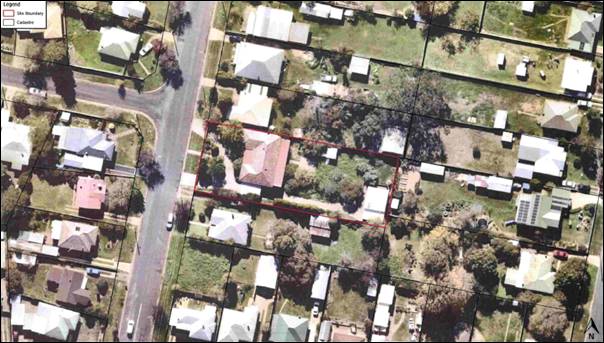
Figure 6 – residential context
Principle 3 - Adaptive Learning
Spaces
The proposal will provide purpose-built indoor learning
spaces that are ‘fit-for-purpose, enjoyable and easy to use.’
Outdoor play spaces will be immediately adjacent and accessible via indoor play
rooms. Age-specific internal playrooms will be provided to cater for various
ages and abilities. Indoor and outdoor play spaces will provide various
settings and facilities for interaction.
Principle 4 - Sustainability
The proposed building will incorporate energy efficient
influences in the design.
Principle 5 - Landscape
A landscape plan was submitted
in support of the proposal (see Figure 7 below). The landscape design
concept for the site will incorporate transplanting and retention of the
Magnolia in the front setback; perimeter plantings to the car park and rear
playground; and landscape beds at the building entrance.
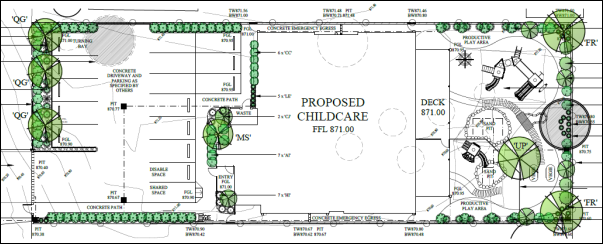
Figure 7 – proposed landscape concept
Council’s Manager City Presentation (MCP) generally
supports the proposed landscape design concept for the site, excepting
amendments relating to minimum tree size, species substitution and planting of
a street tree.
There are two relevant matters to the landscape design
concept:
1. The
proposal originally involved removal of a Magnolia CV from the front setback
(Tree 3 in Figure 6 below). The subject tree has a height of 7m and spread
of 6m. MCP does not support removal of the tree to facilitate car parking for
the development, ‘as the subject tree is a sound example and one of
the larger intact specimens noted in the LGA.’
The proponent was advised of
Council’s position on this matter, and amended the landscape design to
include transplanting of the Magnolia to the rear playground.
MCP is generally amenable to
transplanting, subject to retention of the Magnolia in the front setback to
retain the streetscape landscape character.
Notwithstanding, it is the
opinion of assessment staff that the Magnolia should be retained in its current
location. The subject tree makes a positive and substantial contribution to the
streetscape view corridor and landscape character. Furthermore, the success of
the transplantation is not guaranteed. A preferred outcome for development of
the land would be an amended car park design and construction to retain the
Magnolia in its current location. This design outcome would inevitably result
in a reduced number of car parking spaces being provided on the land which in
turn raises questions over the capacity of the site to accommodate a childcare
facility of this size.
A Prunus species tree is located
on the adjoining land to the north (6 Kearneys Drive), nearby to the common
boundary (Tree 5 in Figure 8 below). The subject tree has a height of 7m and
spread of 12m. MCP advises that the tree will require significant pruning to
facilitate the proposed building; and the construction works for the child care
centre will be within Tree Protection Zone (TPZ) and Structural Root Zone (SRZ)
of the subject tree.
Council’s City Presentation
Manager has advised that the tree is likely to die in due course as a
consequence of the proposed development.
The potential future loss of the tree
would alter the landscape character of the rear yard at 6 Kearneys Drive which
is not acceptable; and minimise the landscape buffer/screen between the child
care centre and adjoining dwelling.
A preferred outcome for the development would be a greater
setback for this part of the building from the northern boundary to remove
construction from the TPZ and SRZ.
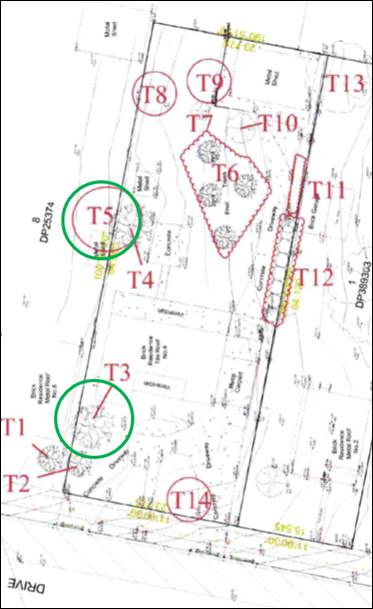
Figure 8 – tree survey
Principle 6 – Amenity
The proposed child care centre will provide a high standard
of amenity for users:
· Learning
spaces will be efficient and functional, with direct access to bathrooms, sleep
rooms, stores and service areas.
· Indoor
playrooms will provide ideal learning and play environments, with generous
natural light, ventilation and outlook.
· The
facility will provide ‘comfortable, diverse and attractive spaces to
learn, play and socialise.’
· Outdoor
play spaces will be immediately adjacent and accessible via indoor play rooms.
The proposed child care centre will adversely impact on
residential amenity for adjoining dwellings in Kearneys Drive and Clinton
Street in relation to acoustic privacy (see following sections of this report).
Impacts on residential amenity in relation to visual privacy and solar access
are considered to be within reasonable limit (as outlined below).
Principle 7 – Safety
The proposed child care facility is considered suitable in
relation to surveillance, access control, territorial enforcement and space
management. Crime prevention measures will include extensive glazing of
building elevations to provide expansive sightlines over the site; external
lighting; appropriate landscape design; perimeter fencing and gates; building
maintenance and site beautification (ongoing).
The proposed development was referred to the Crime
Prevention Officer at Central West Police District. It is advised:
‘Central West Police
District have no concerns about crime risk in relation to this development
contingent on the adherence to National Quality Framework and State Government
requirements relating to Childcare Centre.’
Part 3 - Matters for
Consideration
3.1 - Site Selection and Location
Objective: to ensure that appropriate zone conditions are
assessed when selecting a site
Noise
A Noise Assessment was submitted in support of the proposal
(Renzo Tonin & Associates June 2020).
Noise associated with the proposed child care facility will
be generated by outdoor play; mechanical plant; traffic noise in the car park;
and traffic noise in local streets generated by vehicles associated with the
centre.
Residential properties
potentially impacted by noise emissions from the proposed development are shown
below (see Figure 9).
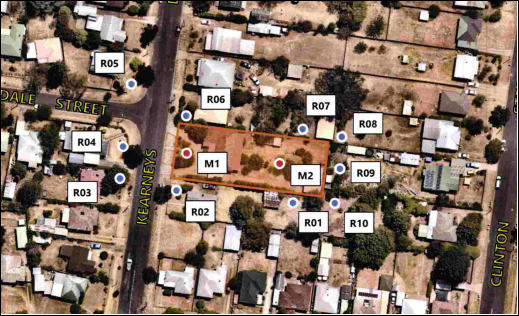
Figure 9 – noise ‘receiver
locations’ shown as blue dot
The submitted noise assessment recommends implementation of
physical and operational mitigation measures including (but not be limited to):
- a
2.1m high boundary fence to outdoor play area
- limiting
child numbers in outdoor play area
- no
amplified music in outdoor play area
- signs
requesting low volume interactions in the car park.
Council’s EHO has reviewed the submitted noise report
and advises:
The noise report provided from
Renzo Tonin & Associates noted that the predicted noise levels solely from
children utilising the outdoor play areas would exceed identified noise
trigger values [contained in the NSW Noise Policy for Industry] by between 1
and 2dbA at several of the nearby receivers, even with the recommended
increase of boundary fence height to 2.1m. While this level may be a negligible
exceedance in terms of actual perceived volume, the report has not factored in
mechanical plant noise from air conditioning units on the development, as no
mechanical plant plans were provided. Another noise assessment report is
required that addresses mechanical plant included to manage this.
Suggested actions for
administrative and operational management of noise from the Renzo Tonin report
has been factored in to the facility’s management plan that was provided
with the application.
Council’s EHO further advises:
The Association of Australian
Acoustical Consultants Guideline for Child Care Centre Acoustic Assessment V.3.
recommends that noise emitted from a (non-time limited) play area should not
exceed 5dbA about background level.
The submitted acoustic report
indicates that noise from the proposed (non-time limited) outdoor play area will
reach the 5dBA limit though not exceed it, when the recommended physical
and operational management controls are in place.
Given the noise emissions
are predicted to exceed project trigger levels, and is on the borderline of the
AAC guidelines without a limitation on the hours of outdoor play (meaning it
could go all day in theory), it is considered that noise is likely to become
offensive in nature to surrounding residents.
The guidelines also state that
the cumulative noise emitted from drop off/pick up, mechanical plant, and
indoor play, should not exceed 5dB above background. Given the assessment
provided does not take into account mechanical plant at all, it isn’t
possible to properly assess this factor.
The provision of 2.1m high acoustic fencing to support the
development is a design element that is not evident in the surrounding
locality. The provision of a fence of this height will be inconsistent with the
character of the area and will dominate the visual setting of adjoining
properties. Typically fencing in this locality comprises side fencing with a
height of between 1.5 and 1.8m. Based on the foregoing, it is considered that
the proposal will have unreasonable impacts on the neighbourhood character and
the surrounding acoustic environment.
Visual Privacy
The proposed site layout and building design will not
adversely impact on visual privacy for adjoining dwellings:
· Finished
floor and ground levels will be slightly below existing natural ground levels,
and thereby minimise overlooking from the development site to adjoining dwelling.
· A 1.8m
and 2.1m high solid perimeter fencing will be installed to the side and rear
boundaries adjacent to adjoining dwellings. Should the application be approved,
fencing conditions will be imposed to this effect.
· Landscaping
will be provided to the site perimeters.
· Playroom
openings in the north and south façade will comprise (fire-rated) glass
bricks. The glazing form will minimise overlooking to the opposing dwellings.
Notwithstanding, perimeter fencing will prevent overlooking.
· The proposed
building will be sufficiently removed from the eastern (rear) boundary to
prevent overlooking from within the building of the adjoining dwellings in
Clinton Street.
Odour
A screened waste storage area will be located on the front
(east) façade near the building entrance, and well-removed from
adjoining dwellings. Odour impacts are not anticipated.
Traffic Matters
A Traffic and Parking Impact Assessment was submitted in
support of the proposal (Traffic Solutions Pty Ltd, June 2020). The
Assessment concludes:
a. The
access driveway proposed to serve the development is suitably located and will
provide very good sight distance in both directions along Kearneys Drive.
b. The
proposed development satisfies the related geometric design specification contained
in the Australian Standards for off-street parking and vehicular access.
c. The
off-street parking provided in the proposed development is one car space short
of the RMS and Council requirements, however, there is ample street frontage to
cater for this shortfall, without any unacceptable amenity impacts on adjoining
properties.
d. The
proposal has a potential net increase in estimated peak hour traffic flows in
the order of 48 vehicle trips in the morning and 42 [vehicle trips in the
evening], which will not have any unacceptable traffic impacts upon Kearneys
Drive or the surrounding road network.
The above conclusions are considered in the following
assessment.
A. Access
Access to the subject land will be
via widened 6m footpath crossing and driveway to Kearneys Drive, adjacent to
the southern boundary. Council’s Assistant Development Engineer concurs
that reasonable sight distances will be afforded along Kearneys Drive to the
north and south.
B. Car
Park Design
The proposed car park layout does not comply with AS
2890.1-2004 Off-street Car Parking in relation to proposed tandem car
parking spaces numbered 6, 8 and 10 (see Figure 10). Furthermore, tandem
parking is not permitted under Orange DCP 2004, which requires car park design
and construction to comply with AS 2890.1-2004.
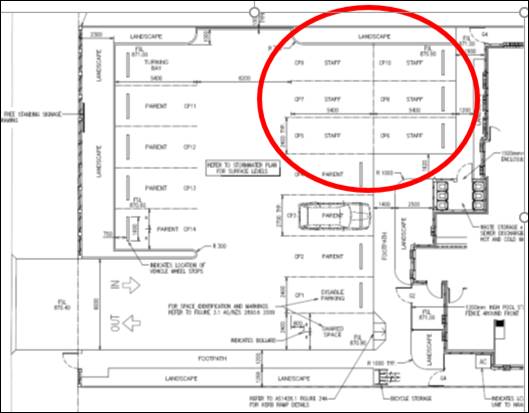
Figure 10 – proposed car park (part site plan)
It is noted that the proponent was
variously advised pre- and post- DA lodgement that tandem parking would not be
supported for the proposed development.
Contrary to staff advice, the proponent has not been
amenable to deleting the tandem spaces as requested. Instead, justification for
the tandem car spaces has been submitted in support of the proposal from an
alternative traffic engineer (McLaren Traffic Engineering November 2020).
The supporting information provides as follows:
1. Whilst
AS 2890.1-2004 is silent with respect to any advice, provision or restriction
related to tandem (or stacked) car parking, the fact that it is silent cannot
be constructed to prohibit tandem car parking for specific land uses.
2. Tandem
parking is a commonly accepted provision for employee parking, residential
uses, commercial and industrial tenancies as well as for single dwellings. The
acceptance of tandem car parking for employees and residences can be found in
many council DCPs for numerous local government areas in NSW, other states and
throughout Australia.
3. The
use and acceptance of tandem car parking is common within the traffic and
engineering transport planning profession.
4. Many
examples exist for a range of land uses whereby tandem (or stacked) car parking
exists with no adverse effects.
5. The
reason for acceptance of tandem car parking is that it is usually approved on
the basis that it can be readily managed in operational and practical terms.
6. Tandem
car parking in single dwellings is fully understood to be reasonable as only
one family resides on the property such that its use can be managed in
practice. The same logic applies to … other land uses where the tandem
spaces are allocated to individual tenants on the same parcel of land.
7. The
practice of tandem staff car parking in child care centres is also very common
from our experience in over 300 child care centre applications…
8. The
subject child care centre is under the control of centre management and it is
usual for an Operational Plan of Management to be conditioned that manages many
aspects of a child care centre, including the practical management of its own
onsite car parking.
For the above listed reasons,
the proposed car parking layout is supported, subject to the three tandem
spaces being assigned to staff that do not need to enter or leave these spaces
during the weekday 7am-9am (children arrival) and 2.30pm-6pm
(children departure) peak periods…
The following comments are made in relation to the proposed
tandem car parking spaces for the development:
· Tandem
car parking is not recognised as a parking layout in AS 2890.1-2004.
· Orange
DCP 2004-15.5 prescribes the design and layout of parking areas is to comply
with AS 2890.1-2004.
· It is
Council’s practice to prohibit tandem parking for commercial developments
in the City.
· Council
has not consented to other child care centres with tandem parking spaces.
· The
need for tandem car parking suggests the proposed development is extending
the site beyond its capacity with adverse cumulative effects for the
surrounding residential area (Australian Child Care Solutions Pty Ltd V Orange
City Council [2017] NSW LEC1737).
· Council’s
Assistant Development Engineer advises:
The applicant’s request
for stack parking is rejected. Council’s DCP requires off street parking
to be in accordance with AS/NZS 2890.1:2004. Tandem parking is not a recognised
or accepted method of off street parking under AS/NZS 2890.1:2004. The applicant’s
interpretation of onsite parking arrangements (tandem parking) under AS/NZS
2890.1:2004 is not accepted.
Should the application be approved, a condition of consent
could be imposed requiring the car parking layout be amended to delete tandem
parking spaces numbered 6, 8 and 10.
Furthermore, an additional condition could be imposed
requiring the car park layout be amended to a 3A user class standard pursuant
to AS 2890.1. The amended layout would improve car park manoeuvring, including
catering for the expected service vehicle (courier van).
C. Car
Parking Requirements
Pursuant to DCP 2004, onsite
parking is required for child care centres at a rate of one space for
every four children in attendance.
Based on 61 proposed child care places, 15.25 (i.e. 16)
onsite car parking spaces are required for the proposed development. With
deletion of tandem car spaces numbered 6, 8 and 10, eleven onsite parking
spaces will be provided. This comprises a shortfall of 4.25 (i.e. five)
spaces on the DCP requirement.
Should the application be approved, a condition could be
imposed limiting the number of child care places to 44. This would have the
effect of achieving compliance with the DCP, reducing demand for on-street
parking and thereby maintaining traffic amenity along Kearneys Drive.
This is not a preferred outcome. The proposed building has
been designed to accommodate 61 child care places, and exceeds the SEPP floor
area requirements for a centre of 44 children. Furthermore, as established
earlier, the scale of the building is contrary to the neighbourhood character
and built form. The proposed layout would significantly affect the visual
character of the locality.
D. Traffic
Generation and Network Capacity
Council’s Assistant
Development Engineer advises as follows in relation to traffic generation and
the capacity of the local road network:
‘The anticipated traffic
volume increase is well within the existing road capacity and will not impact
on pedestrian safety. The existing road network has sufficient capacity
to cater for the identified AM and PM traffic peaks. Kearneys Drive has a width
of 11.0m kerb to kerb, thereby providing two parking lanes and two way traffic
flow. ‘No standing’ signs are not proposed as part of any
traffic control measures as Kearneys Drive.’
Objective:
To ensure that the site selected for a proposed child care facility is suitable
for the use.
Surrounding landuses comprise
residential accommodation. A child care centre is a permitted and complementary
landuse in the zone. The subject land is suitable for use as a child care
centre-based on lot size, configuration, dimensions and frontage. The proposed
centre however, is considered to extend the site beyond its capacity with
reference to acoustic and parking non-compliances; and adverse impacts on
established vegetation.
The development site has shared
boundaries with residential properties to the north and south on Kearneys
Drive; and east on Clinton Street. A solid acoustic wall, 2.1m in height would
be required on the common boundaries to achieve near-compliance with minimum
noise standards. The wall is likely to visually encroach upon private open
spaces for the adjoining dwellings, when partly erected atop retaining walls up
to 500mm. The interface between the development and adjoining dwellings is
considered unsatisfactory on this basis.
The development site is not subject
to environmental risks such as flooding, landslip or bushfires. The site is
considered suitable for child care use from a contamination perspective, subject
to ‘unexpected finds’ conditions, should the application be
approved. There are no incompatible social activities and users in the vicinity
of the development site.
Objective: To
ensure that sites for child care facilities are appropriately located.
The site is well-located to attract
facility users in surrounding residential neighbourhoods. The development site
is serviced by public transport.
Objective: To
ensure that sites for child care facilities do not incur risks from
environmental, health or safety hazards.
The subject land is not in
proximity to landuses with arising adverse environmental impacts prescribed in
the Guideline. The site does not contain any known environmental hazard or
risk. The site is considered suitable for child care use from a contamination
perspective, subject to ‘unexpected finds’ conditions, should the
application be approved.
3.2 - Local Character,
Streetscape and the Public Domain Interface
Objective: To
ensure that the child care facility is compatible with the local character and
surrounding streetscape.
As considered in the foregoing
assessment, the proposed building massing and siting is considered to be
contrary to the prevailing built form in the streetscape.
Objective: To
ensure clear delineation between the child care facility and public spaces.
New front fencing and signage to
Kearneys Drive, and front setback landscaping will establish a transition
between public and private spaces. The building will address Kearneys Drive for
passive surveillance and connectivity with the public domain.
Objective: To
ensure that front fences and retaining walls respond to and complement the
context and character of the area and do not dominate the public domain.
Front fencing, 1.2-1.5m high, is a
feature in this streetscape. The proposed front fence will relate to fencing
height and forms on adjoining residential parcels. The proposed fence will be
suitable to provide some screening of vehicle areas in the front setback, and
ensure the facility will remain visually permeable in the streetscape.
3.3 - Building Orientation,
Envelope and Design
Objective: To
respond to the streetscape and site, while optimising solar access and
opportunities for shade.
As outlined previously, the
development will provide acceptable visual privacy for adjoining dwellings on
Kearneys Drive and Clinton Street (with reference to fencing, landscaping,
interface with opposing landuses and finished surface levels). Internal and
external play spaces will have access to sunlight. Internal and external solar
access will be provided to the adjoining southern dwelling (i.e. most impacted)
in accordance with the requirements of DCP 2004.
Objective: To
ensure that the scale of the child care facility is compatible with adjoining
development and the impact on adjoining buildings is minimised.
The proposed building will be
single storey and of consistent height with adjoining dwellings on Kearneys
Drive and Clinton Street. The building massing and footprint however, will be
disparate to the cottage built form nearby to the site. The required acoustic
walls will also differ to existing boundary fences, with potential for visual
bulk encroachment on adjoining dwellings.
Objective: To
ensure that setbacks from the boundary of a child care facility are consistent
with the predominant development within the immediate context.
As considered above, the building
siting will not relate to the established streetscape building line on Kearneys
Drive. The proposal will adversely impact upon the pattern of development
within this length of street.
Objective: To
ensure that the built form, articulation and scale of development relates to
its context and buildings are well designed to contribute to an area’s
character.
As outlined in the foregoing
sections of this report, it is not considered that the proposed building
will favourable contribute to the neighbourhood character.
Objective: To
ensure that buildings are designed to create safe environments for all users.
The proposed development will
achieve ease of access and secure entry to the site and building. Crime
prevention measures are included in the site layout and building design.
The proposed development was referred to the Crime Prevention Officer at
Central West Police District. The Crime Prevention Officer raised no objection
to the proposal and did not provide specific recommendations/conditions of
consent.
Objective: To
ensure that child care facilities are designed to be accessible by all
potential users.
Accessible design will be achieved
via accessibility to and within the facility; ramped pathways to key areas; and
continuous paths of travel to and within the building.
3.4 - Landscaping
Objective: To
provide landscape design that contributes to the streetscape and amenity
As outlined above, it is preferred
that the Magnolia CV in the front setback be retained in its current location,
due to its contribution to the landscape character of the site and streetscape.
Landscaping to the site frontage and
carpark perimeter will provide integration of the development in the public
realm and streetscape. Retention of the Magnolia would affect the design and
result in a further reduction in car parking on site in a manner not consistent
with Council’s parking controls for this type of development.
3.5 -
Visual and Acoustic Privacy
Objective: To protect the privacy and
security of children attending the facility.
Outdoor play spaces will be located at the rear (east) of
the building and will not be visible from Kearneys Drive. See previous
discussion in relation to the visual impacts of a 2.1m high fence.
Objective: To
minimise impacts on privacy of adjoining properties.
As outlined previously, the development will provide
acceptable privacy for adjoining dwellings (with reference to boundary fencing,
landscaping, interface with opposing landuses and finished surface levels).
Objective: To
minimise the impact of child care facilities on the acoustic privacy of
neighbouring residential developments.
As outlined in the foregoing sections of this report, noise
emissions from the proposed child care centre will exceed relevant criteria,
even with implementation of mitigation measures.
3.6 - Noise and Air Pollution
Objective: To
ensure that outside noise levels on the facility are minimised to accepted
levels.
The subject site is not located in the vicinity of noise
generating infrastructure or landuses prescribed in the Guideline.
The submitted Noise Assessment (Renzo Tonin & Associates
June 2020) states that ‘traffic flows along Kearneys Drive are
minimal as it operates as a local road. Consequently, noise emissions due to
traffic noise from Kearneys Drive impacting on the proposed child care centre
and the outdoor play area is expected to be insignificant.’
Council’s EHO concurs with this finding.
Objective: To
ensure air quality is acceptable where child care facilities are proposed close
to external sources of air pollution such as major roads and industrial
development.
The subject site is not located in the vicinity of major
roads or industrial development, and therefore air quality is considered to be
acceptable.
3.7 - Hours of Operation
Objective: To
minimise the impact of the child care facility on the amenity of neighbouring
residential developments.
Should the application be approved, a condition would be
imposed limiting hours of operation from 7am to 6pm Monday to Friday,
consistent with the assessment in the submitted acoustic report.
3.8 - Traffic, Parking and
Pedestrian Circulation
Objective: To
provide parking that satisfies the needs of users and demand generated by the
centre.
As considered in the foregoing
assessment, eleven compliant car spaces will be provided for the proposed child
care centre, accounting for a shortfall of five spaces on the DCP requirement.
Based on the long-day operation of
the proposed centre, car park lighting (and other external lighting) will be
required. Should the application be approved, a condition would be imposed
requiring outdoor lighting comply with AS 4282:1997 Control of the obtrusive
effects of outdoor lighting.
Objective: To
provide vehicle access from the street in a safe environment that does not
disrupt traffic flows.
The subject land has direct
frontage and access to Kearney Drive. A 6m vehicle crossing and driveway will
be constructed to service the site.
Pursuant to the submitted Traffic
and Parking Statement (Traffic Solutions Pty Ltd 24 July 2017): ‘the
access driveway proposed to serve the development is suitably located and will
provide good sight distances in both directions along Kearneys Drive.’
Council’s Assistant Development Engineer raised no objection to the
proposed site access arrangements.
Objective: To
provide a safe and connected environment for pedestrians both on and around the
site.
The proposed development will adopt
the following design solutions:
· Car
park layout that will allow vehicles to enter and exit the site in a forward
direction.
· Provision
of an accessible parking space and shared zone with bollards.
· Concrete
footpath to the site frontage on Kearneys Drive, as required by condition.
· Pedestrian
footpath though the site front the front boundary to building entrance.
· Pool
style fencing to restrict access between the building entrance and car park.
Part 4 - Applying the National
Regulations to Development Proposals
The proposed development will
satisfy the National Regulations:
· Regulation
104 - Fencing or barrier that encloses outdoor spaces.
· Regulation
106 - Laundry and hygiene facilities.
· Regulation
107 - Unencumbered indoor space.
· Regulation
108 - Unencumbered outdoor space.
· Regulation
109 - Toilet and hygiene facilities.
· Regulation
110 - Ventilation and natural light.
· Regulation
111 - Administrative space.
· Regulation
112 - Nappy change facilities.
· Regulation
113 - Outdoor space - natural environment.
· Regulation
114 - Outdoor space – shade.
· Regulation
115 - Premises designed to facilitate supervision.
Should the application be approved, a
condition will be imposed requiring submission of a schedule demonstrating
development compliance with the National Regulations prior to the issue of a
Construction Certificate.
Clause 26 - Centre-based
child care facility - development control plans
DCP 2004 does not contain
prescribed provisions for centre-based child care facilities (including
operational or management plans; the demonstrated need for child care services;
proximity to other facilities; design considerations, etc.). Notwithstanding,
such provisions would not apply to the proposed development pursuant to
Clause 26.
State Environmental Planning
Policy 64 Advertising and Signage
SEPP 64 Advertising and Signage is
applicable and states in part:
3 Aims,
Objectives etc.
(1) This
Policy aims:
(a) to
ensure that signage (including advertising):
(i) is
compatible with the desired amenity and visual character of an area, and
(ii) provides
effective communication in suitable locations, and
(iii) is
of high quality design and finish, and
(8) Granting
of Consent to Signage
A consent authority must not grant
development consent to an application to display signage unless the consent
authority is satisfied:
(a) that
the signage is consistent with the objectives of this Policy as set out in
Clause 3 (1) (a), and
(b) that
the signage the subject of the application satisfies the assessment criteria
specified in Schedule 1.
Details of the proposed pylon sign are shown below (see Figure
11).
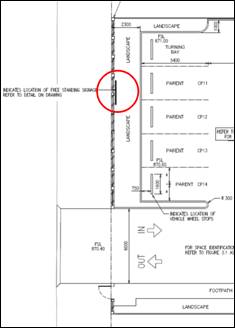
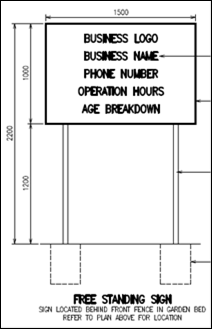
Figure 11 – pylon sign location and elevation
The proposed pylon sign will comply
with the requirements of SEPP 64, as considered below.
Schedule 1 Assessment Criteria
1 -
Character of the Area
· Is
the proposal compatible with the existing or desired future character of the
area or locality in which it is proposed to be located?
· Is
the proposal consistent with a particular theme for outdoor advertising in the
area or locality?
There is no particular theme for outdoor advertising in this
setting, being an established residential area. Notwithstanding, it is
considered that the proposed single pylon sign will be suitable for this
residential streetscape in respect of form, height, scale and siting.
2 - Special Areas
· Does
the proposal detract from the amenity or visual quality of any environmentally
sensitive areas, heritage areas, natural or other conservation areas, open
space areas, waterways, rural landscapes or residential areas?
The subject land is contained within a residential area and
restrictions on advertising content apply under the SEPP (Clauses 9 and 10).
Details of advertising content were not included in the development
application. Should the application be approved, a condition would be imposed
requiring advertising content to the proposed pylon sign comprise business or
building identification only.
3 - Views and Vistas
· Does
the proposal obscure or compromise important views?
· Does
the proposal dominate the skyline and reduce the quality of vistas?
· Does
the proposal respect the viewing rights of other advertisers?
The proposed pylon sign will be contained/integrated within
front fence and landscape bed at the site frontage and will not visually
dominate the streetscape view corridor. The height of the pylon sign (1m above
the fence) will not protrude above the proposed building or localised tree
canopy, and is considered to be a personal scale within the residential
setting.
4 - Streetscape, Setting or Landscape
· Is
the scale, proportion and form of the proposal appropriate for the streetscape,
setting or landscape?
· Does
the proposal contribute to the visual interest of the streetscape, setting or
landscape?
· Does
the proposal reduce clutter by rationalising and simplifying existing
advertising?
· Does
the proposal screen unsightliness?
· Does
the proposal protrude above buildings, structures or tree canopies in the area
or locality?
· Does
the proposal require ongoing vegetation management?
The proposed pylon sign will be
suitable in the residential streetscape due to the following:
- A
single sign is proposed.
- The
sign will be of suitable proportions for a residential setting, i.e. a signage
panel of 1.5m2.
- The
sign will integrate with the proposed fencing and landscape bed at the site
frontage.
5 - Site and Building
· Is
the proposal compatible with the scale, proportion and other characteristics of
the site or building, or both, on which the proposed signage is to be located?
· Does
the proposal respect important features of the site or building, or both?
· Does
the proposal show innovation and imagination in its relationship to the site or
building, or both?
The proposed sign is an expected visual element associated
with use of the land as a child care centre.
6 - Associated Devices and Logos With Advertisements and
Advertising Structures
· Have
any safety devices, platforms, lighting devices or logos been designed as an
integral part of the signage or structure on which it is to be displayed?
No safety devices, platforms, lighting devices or logos are
proposed or required for the pylon sign.
7 - Illumination
· Would
illumination result in unacceptable glare?
· Would
illumination affect safety for pedestrians, vehicles or aircraft?
· Would
illumination detract from the amenity of any residence or other form of
accommodation?
· Can
the intensity of the illumination be adjusted, if necessary?
· Is
the illumination subject to a curfew?
Based on the residential setting, should the application be
approved, a condition would be imposed that illumination of the proposed pylon
sign is not permitted.
8 - Safety
· Would
the proposal reduce the safety for any public road?
· Would
the proposal reduce the safety for pedestrians or bicyclists?
· Would
the proposal reduce the safety for pedestrians, particularly children, by
obscuring sightlines from public areas?
The proposed siting and scale of the pylon sign will not
obscure sightlines between the building and Kearneys Drive; nor reduce the
safety of vehicles, pedestrians or cyclists in the onsite carpark or Kearneys
Drive.
State Environmental Planning
Policy (Vegetation in Non-Rural Areas) 2017
SEPP (Vegetation in Non-Rural
Areas) 2017 is applicable to the proposal.
Pursuant to Clause 7(1):
A person must not clear
vegetation in any non-rural area of the State… without the authority
conferred by a permit granted by the council…
Clause 9(2) further requires that:
A development control plan may make
the declaration in any manner, including by reference to any of the following:
(a) the
species of vegetation,
(b) the
size of vegetation,
(c) the
location of vegetation (including by reference to any vegetation in an area
shown on a map or in any specified zone),
(d) the
presence of vegetation in an ecological community or in the habitat of a
threatened species.
In consideration of the
requirements of the SEPP, the proposal involves removal of a number of
trees/tree groups over the site. A Basic Tree Assessment was submitted in
support of the proposal (Monaco Designs Pty Ltd, 1 May 2020). Trees to be
removed include (common names) Pyrus, fruit, Acacia, Thuja and Irish
Strawberry.
Pursuant to DCP 2004-0.4-2
Interim Planning Outcomes- Tree Preservation, Council’s approval is
required for removal of trees of a certain prescribed species and size.
Trees numbered, 10 (Acacia
longifolia), 12 (Thuja CV Row) and 14 (Arbutus unedo
(Irish Strawberry Tree) are subject to tree preservation order and
consent is required for removal (see Figure 12).
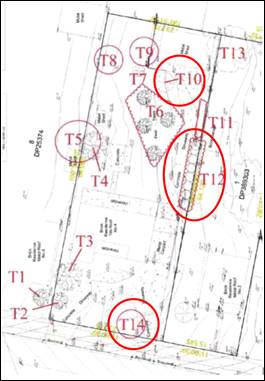
Figure 12 – trees to be removed subject to TPO
The proposed tree removal was
referred to Council’s Manager City Presentation (MCP) for review. As
previously discussed the site also contains an advanced Magnolia CV which is
one of the larger intact and sound specimens in the LGA. This tree will be
impacted by the proposed development. The Magnolia CV makes a significant
contribution to the streetscape. Retention of the Magnolia is the preferred
option.
MCP raised no additional objections
to tree removal, subject to replacement planting, generally in accordance with
the submitted landscape plan with minor conditional amendments.
Provisions of any Draft
Environmental Planning Instrument that has been placed on Exhibition
4.15(1)(a)(ii)
Draft
Orange Local Environmental Plan 2011 (Amendment 24)
Draft Amendment 24 is with the
Department for finalisation. The Draft Plan involves various administrative
amendments to the LEP including updated maps, and new and amended clauses. The
proposed development is not contrary to any matter contained in the
Draft Amendment.
Draft Orange Local
Environmental Plan 2011 (Amendment 25)
Draft Orange LEP 2011 Amendment 25
has recently completed public exhibition (August 2020). The Draft Plan relates
to land at 1 Leewood Drive, and seeks to enable a range of additional permitted
uses on the land. The Draft plan has no effect for the proposed development.
Draft Orange Local
Environmental Plan 2011 (Amendment 26)
Draft Orange LEP 2011 Amendment 26 will
be re-exhibited (December 2020-January 2021). The Draft plan relates to land at
1517 Forest Road, being the private health precinct. The revised proposal
involves amendments to the (Concept) approved commercial use of the land,
including (in part) commercial floor area restrictions and rezoning to
B1 Neighbourhood Centre. The Draft plan has no effect for the proposed
development.
Draft
State Environmental Planning Policy - Remediation of Land
Draft Remediation of Land SEPP is
applicable. The Draft SEPP requires in part that consideration be given to
potential contamination on nearby or neighbouring properties and groundwater.
The adjoining lands have longstanding residential use and are unlikely to be
contaminated, with nil effect for the proposed development.
Draft
State Environmental Planning Policy – Educational Establishments and
Child Care Facilities
The Draft Education SEPP is
currently on public exhibition. The Draft Plan proposes in part to introduce provisions to prevent child care centres within
close proximity of each other in low density residential zones (R2). A
separation distance of 200m between child care centres is being considered. The
amendment seeks to address concerns raised about amenity impacts, such as noise
and traffic, arising from child-care centres being in close proximity to one
another.
The
subject land is zoned R1 General Residential. The proposal will not be contrary
to any matter in the Draft Plan.
DESIGNATED DEVELOPMENT
The proposed development is not designated development.
INTEGRATED DEVELOPMENT
The proposed development is not integrated development.
Provisions of any
Development Control Plan S4.15(1)(a)(iii)
Development Control Plan 2004
DCP 2004 - 0 Tree Preservation
The relevant matters in this part were considered in the
foregoing assessment under SEPP (Vegetation in Non-Rural Areas) 2017.
DCP 2004 – 2 Natural
Resource Management
The relevant matters in this part were considered in the
foregoing assessment under Orange LEP 2011.
DCP 2004 – 3 General
Considerations
The relevant matters in this part were considered in the
foregoing assessment under Orange LEP 2011.
DCP 2004 - 5 General
Considerations for Zones and Development
The relevant matters in Part 5 are addressed in the
following sections of this report (refer Any Submissions).
DCP 2004 – 7 Development
in Residential Zones
The relevant matters in Part 7 were considered in the
foregoing assessment under Child Care Planning Guideline. As outlined,
the proposed is considered to be contrary to the Planning Outcomes for
Neighbourhood Character, Building Appearance and Setbacks.
DCP 2004 – 15 Car Parking
The relevant matters in Part 15 were considered in the
foregoing assessment under Child Care Planning Guideline. As
outlined, tandem parking is not supported for development of this type and
accordingly onsite parking for the development will depart from the DCP
requirements by five spaces. A departure to the parking requirements will
result in unacceptable impacts in the surrounding street network.
DEVELOPMENT CONTRIBUTIONS
Section 64 Local Government Act 1993
Development contributions for water, sewer and drainage
works are applicable to the proposed development.
The contributions are based on 2.66 ETs for water supply
headworks and 5.10 ETs for sewerage headworks. Should the application be
approved, a condition would be imposed requiring payment of applicable
headworks contributions.
Provisions Prescribed By the
Regulations S4.15(1)(A)(Iv)
Demolition of a Building (clause 92)
The proposal involves demolition of existing improvements on
the subject land. Should the application be approved, conditions would be
imposed in relation to works consistent with application standards; and
appropriate waste management.
Fire Safety Considerations
(clause 93)
The proposal does not involve a change of building use for
an existing building. The proposed building may be designed and
constructed to satisfy the fire safety provisions contained in the BCA.
Buildings to be Upgraded
(clause 94)
The proposal does not involve the rebuilding, alteration,
enlargement or extension of an existing building.
BASIX Commitments (clause 97A)
BASIX is not applicable to the proposed development. A
Section J Energy Efficiency Statement will be required with the Construction
Certificate application.
The Likely Impacts of the Development S4.15(1)(B)
The impacts of the proposed development have been considered
in the foregoing sections of this report and include:
· Setting
and context
o public domain
o landuse
o interface
o presentation
· Visual
impacts
o neighbourhood character
o streetscape presentation
o building design,
detailing and siting
o signage design, detailing and
siting
o landscape character
· Neighbourhood
amenity
o acoustic privacy
o visual privacy
o visual bulk encroachment
o external lighting
o crime prevention
o odour emissions
· Traffic
matters
o site access
o onsite manoeuvring
o car parking
o traffic generation
o network capacity
· Environmental
impacts
o waste management
o sediment and erosion control
o biodiversity
o groundwater
o stormwater management
o tree removal
o cultural values
o contamination.
The italicised impacts above are considered to
exceed acceptable limits that may not be mitigated via consent conditions. On
this basis, the cumulative impacts of the proposal are considered to be
unacceptable.
The Suitability Of The Site
S4.15(1)(c)
The subject land is suitable for the proposed
development due to the following:
· Centre-based
child care facilities are permitted on the subject land zoning.
· The
site has direct frontage and access to Kearneys Drive.
· The
local road network has sufficient capacity to accommodate additional traffic
volumes.
· There
is no known contamination on the land.
· All
utility services are available and adequate.
· The
site is not subject to natural hazards.
· The
site is not known to contain any Aboriginal, European or archaeological relics.
The subject land is unsuitable for the proposed
development due to the following:
· Insufficient
site area is available to accommodate the parking demands associated with a
centre-based child care facility of the scale proposed.
· The
site has particular environmental values. The site contains an advanced
Magnolia CV which is one of the larger intact and sound specimens in the LGA.
This tree, and another on the adjoining northern parcel, will be impacted
by the proposed development.
· The
site is located within an exclusively residential and low density setting.
A centre‑based child care facility of the scale proposed is
unsuitable for this site in this neighbourhood, having regard to arising
amenity impacts.
Any Submissions Made In
Accordance With The Act S4.15(1)(d)
The proposed development is defined as "advertised
development" pursuant to Council’s Community Participation Plan
2019. Written and public notice of the application was given for the prescribed
period. At the end of that period, twelve submissions had been received.
The issues raised in the submission are considered below.
Queries in relation to fencing on the eastern (rear) boundary
including height, materials, colour, timing and extension to adjoining
property.
Consistent with the recommendations of the submitted
acoustic assessment, the subject fence will be of solid construction and 2.1m
in height. Should the application be approved, conditions would be imposed
requiring the proponent liaise with the adjoining property owner in relation to
fencing colour and timing of installation. There is no obligation for the
developer to extend the fence to the common boundary of adjoining residents.
How will noise management
measures be enforced?
Should the application be approved, noise management and
mitigation measures would be enforced via conditions of consent. The operator
of the centre will be responsible to ensure operation of the centre consistent
with the noise operational management plan.
The ambient noise levels in the
neighbourhood will be increased.
It is concurred that the neighbourhood acoustic environment
will be altered by the proposed development. Noise impacts associated with the
child care centre will exceed adopted criteria.
Kearneys Drive is too narrow to
accommodate traffic volumes and on-street car parking demands, with associated
impacts for road and pedestrian safety.
Council’s Assistant Development Engineer advises that Kearneys
Drive has a width of 11.0m kerb to kerb, thereby providing two parking lanes
and two way traffic flow. It is acknowledged that the residential street will
be altered by traffic volumes associated with the proposed development. Notwithstanding,
increased traffic volumes will be within the existing road capacity.
Council’s Assistant Development Engineer and the proponent’s
traffic consultant concur that road and pedestrian safety will not be adversely
impacted.
The proposed access driveway
will conflict with driveways opposite the site.
All vehicles associated with the proposed child care centre
will enter and exit the site in a forward direction, and sight lines will be
appropriate in both directions along Kearneys Drive. Conflicts with other
vehicles in Kearneys Drive is considered unlikely.
The proposed development will
devalue nearby properties; what compensation will be available?
This matter is not a relevant consideration in the
assessment of a development application pursuant to the Environmental
Planning and Assessment Act 1979.
Insufficient onsite car parking
will be provided.
As considered in the foregoing
assessment, eleven compliant car spaces will be provided for the proposed child
care centre, accounting for a shortfall of five spaces on the
DCP requirement. Tandem parking is not acceptable.
On-street car parking will
impact on waste collection.
Should the application be approved,
conditions will be imposed requiring the child care centre enter into a private
collection agreement with a waste contractor, such that kerbside placement of
bins on Kearneys Drive will not be required.
Footpaths at the frontages of
adjoining properties will be worn with increased foot traffic.
Footpaths are public land available
for use by all. Should the application be approved, a condition will be imposed
requiring footpath construction at the site frontage of the development site.
Proposed front fencing will be
insufficient to screen vehicles with adverse visual impacts on the streetscape.
The proposed front fence will be of
height and materials that will complement other front fencing in this
streetscape. It is concurred that the carpark in the front setback will present
an expansive hardstand area that is not consistent with the character of the
locality. Front fencing and landscaping will provide some screening and
softening of the carpark.
The required 2.1m acoustic wall
will overshadow the dwelling and associated open space at nearby properties.
Shadow lengths will be increased to
the adjoining southern property associated with the acoustic wall.
Notwithstanding, solar access on-ground and to northern windows at nearby
properties will be maintained in accordance with the controls at DCP 2004-7.7-8
Daylight and Sunlight.
There are other child care
centres nearby to the site to accommodate the needs of local residents.
Commercial supply and demand
considerations are not a relevant matter in the assessment of a development
application pursuant to the Environmental Planning and Assessment Act 1979.
Additional traffic will result
in vehicle conflicts at the intersection of Kearneys Drive and Margaret Street.
Council’s Assistant
Development Engineer is satisfied that increased traffic volumes associated
with the development will be within the existing road capacity.
Notwithstanding, the operation of the intersection will be monitored and
traffic management measures may be implemented as required.
How will construction impacts be
managed?
Should the application be approved, “During
Construction” conditions will be imposed in relation to hours of works,
sediment controls, dust controls etc. The Principal Certifying Authority is
responsible for overseeing construction works in accordance with consent
conditions.
A Noise Management Plan is
required.
A Plan of Management (dated July 2020) for the proposed
child care centre was included in the DA documentation, and included a part on Noise
Management. The measures and strategies to mitigate potential noise impacts
are consistent with the recommendations contained in the submitted acoustic
report (Renzo Tonin & Associates June 2020). Should the application be
approved, a condition would be imposed requiring operation of the child care
centre consistent with the Plan of Management.
How will noise emissions compliance
be demonstrated?
Should the application be approved, a condition would be
imposed requiring preparation of an acoustic commissioning report within three
months after occupation, to monitor actual noise emissions associated with the
child care centre.
Mechanical plant noise was not
considered in the acoustic assessment.
Assessment staff concur the submitted acoustic report has
not considered the noise impacts associated with mechanical plant. Should the
application be approved, a condition would be imposed requiring further
acoustic assessment of plant.
All activities associated with
the centre (including cleaning and maintenance) should occur between 7am and
6pm Monday to Friday.
Should the application be approved, a condition would be
imposed to this effect.
Public Interest
S4.15(1)(e)
The proposal is not inconsistent with any relevant policy
statements, planning studies and guidelines etc. that have not been considered
in this assessment.
SUMMARY
It is considered that the impacts of the proposed
centre-based child care facility will exceed acceptable limits, as they relate
to car parking demands; neighbourhood and landscape character; and the acoustic
environment. The identified impacts cannot be mitigated via consent conditions.
The proposed development will extend the site beyond its capacity. Refusal of
the application is recommended.
COMMENTS
The requirements of the following experts are included in
the attached Notice:
· Environmental
Health and Building Inspector
· Assistant
Development Engineer
· Environmental
Health Officer
· Manager
City Presentation
· Senior
Planner – Development Assessment
· NSW
Police Crime Prevention Officer
Attachments
1 Notice
of Refusal, D20/74785⇩
2 Plans,
D20/74464⇩
3 Submissions,
D20/74576⇩
Council
Meeting
15 December 2020
Attachment 1 Notice
of Refusal
|

|
ORANGE CITY COUNCIL
Development
Application No DA
284/2020(1)
NA20/ Container
PR5880
|
NOTICE OF DETERMINATION
OF A DEVELOPMENT
APPLICATION
issued under the Environmental
Planning and Assessment Act 1979
Section 4.18
|
Development Application
|
|
|
Applicant Name:
|
Mr S Muffet
|
|
Applicant Address:
|
PO Box 864
CHATSWOOD NSW
2057
|
|
Land to Be Developed:
|
Lot A DP 365443 - 4 Kearneys Drive, Orange
|
|
Proposed Development:
|
Demolition (existing dwelling and
outbuildings) and Centre-based Child Care Facility
|
|
|
|
|
Building Code of Australia
Building Classification:
|
Not applicable
|
|
|
|
|
Determination made under
Section 4.16
|
|
|
Made On:
|
15 December 2020
|
|
Determination:
|
APPLICATION REFUSED
|
|
|
|
|
Reason(s) for Refusal:
|
1. Pursuant to
the requirements of Section 4.15 of the Environmental Planning and Assessment
Act 1979, the proposed development will have an unacceptable impact on
neighbourhood character and function.
2. Pursuant
to the requirements of Section 4.15 of the Environmental Planning and
Assessment Act 1979, the proposed development does not comply with the
off-street car parking controls required by Council’s DCP.
3. Pursuant
to the requirements of Section 4.15 of the Environmental Planning and
Assessment Act 1979, the proposed development will have adverse operational
impacts on residential amenity (noise and traffic).
4. Pursuant
to the requirements of Section 4.15 of the Environmental Planning and
Assessment Act 1979, the proposed development will have adverse impacts on
the landscape character of the site and setting.
5. Pursuant
to the requirements of Section 4.15 of the Environmental Planning and
Assessment Act 1979, the proposed development is not considered to be in the
public interest
|
|
|
|
|
Right of Appeal:
|
Applicant:
If you are dissatisfied with this decision,
Section 8.7 of the Environmental Planning and Assessment Act 1979
gives you the right to appeal to the Land and Environment Court. Pursuant to
Section 8.10, an applicant may only appeal within 6 months after the date the
decision is notified.
Objector:
The Environmental Planning and Assessment Act 1979 does not give a
right of appeal against this determination to an objector.
|
|
|
|
|
Signed:
|
On behalf of the consent authority:
|
|
Signature:
|
|
|
Name:
|
PAUL JOHNSTON - MANAGER DEVELOPMENT
ASSESSMENTS
|
|
Date:
|
16 December 2020
|
Council Meeting
15 December 2020
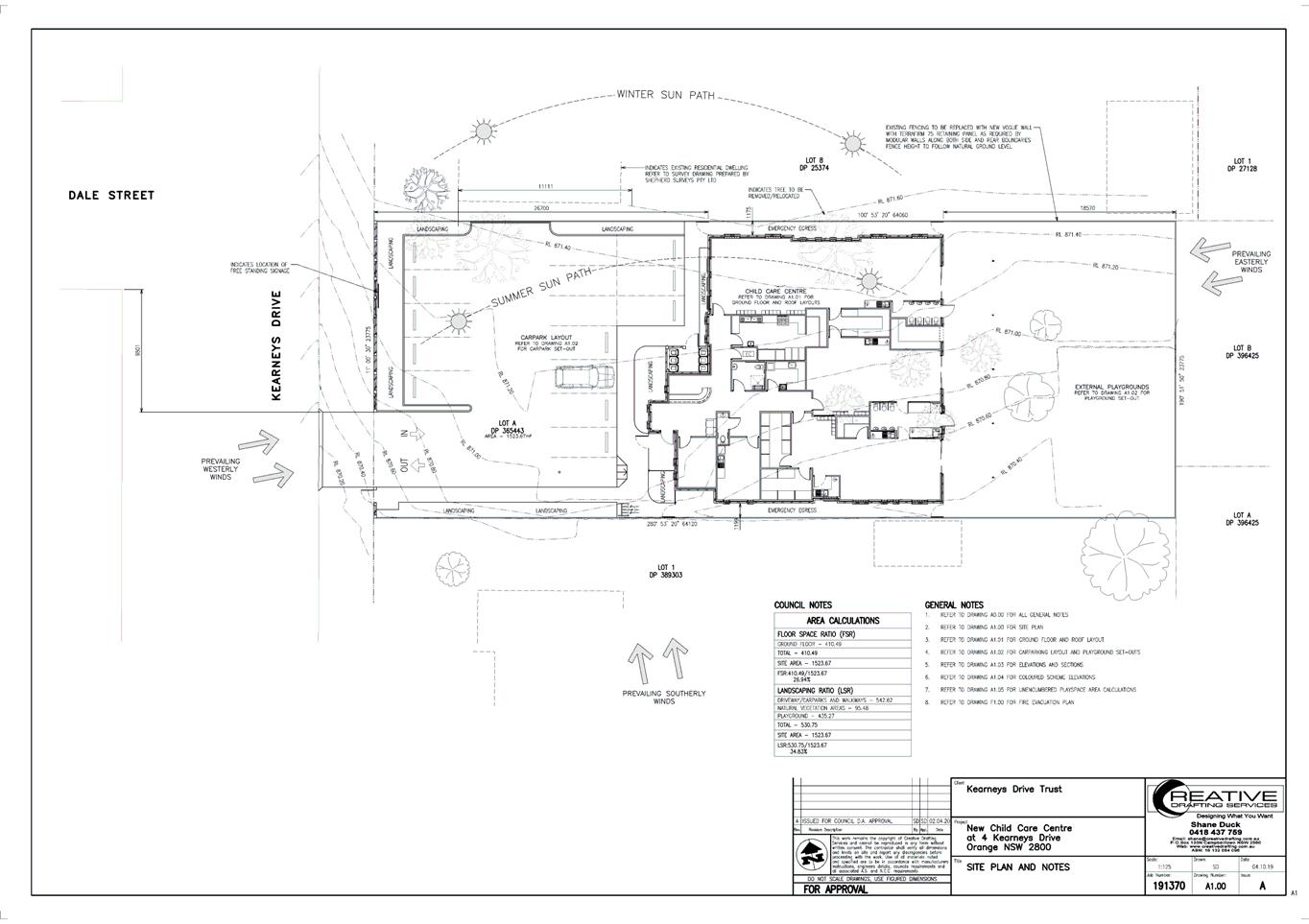
Council
Meeting
15 December 2020
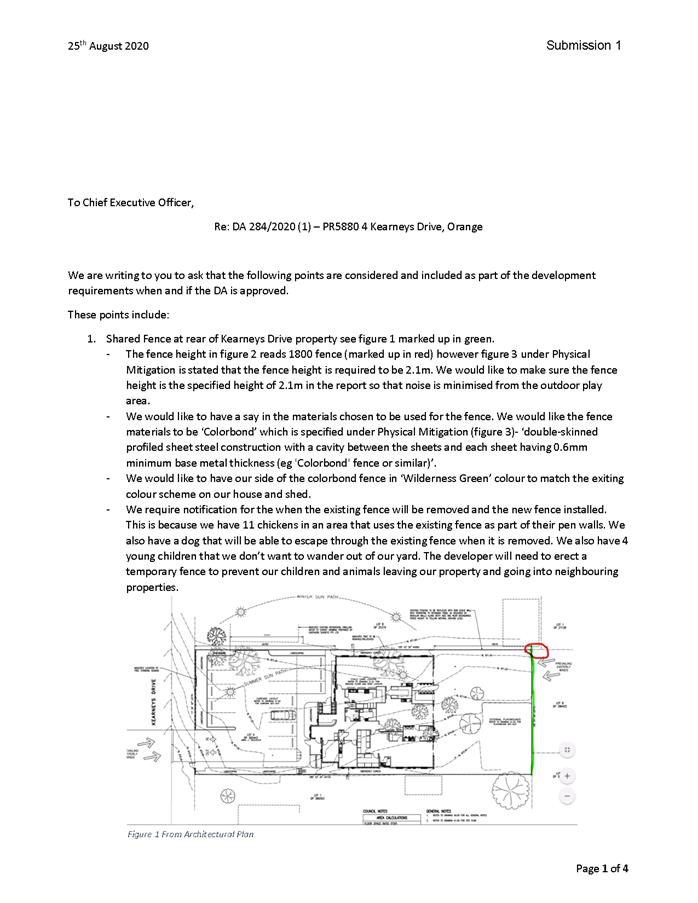
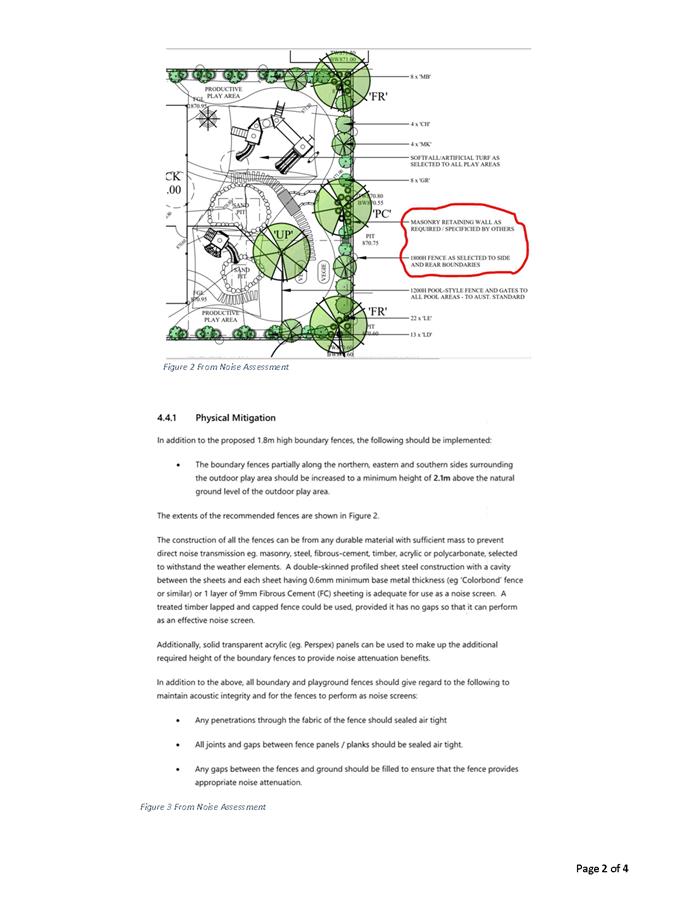
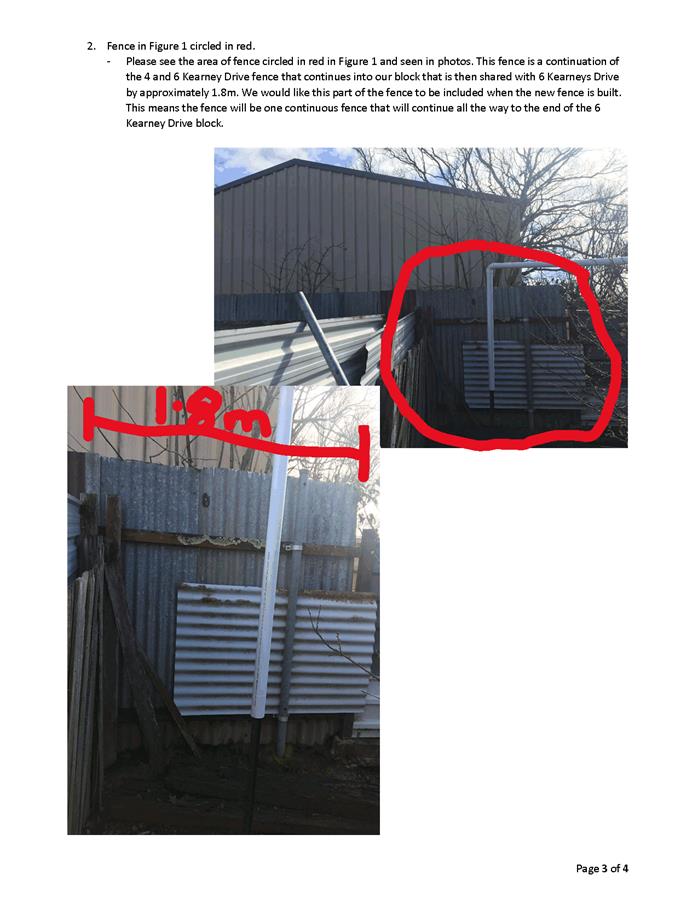
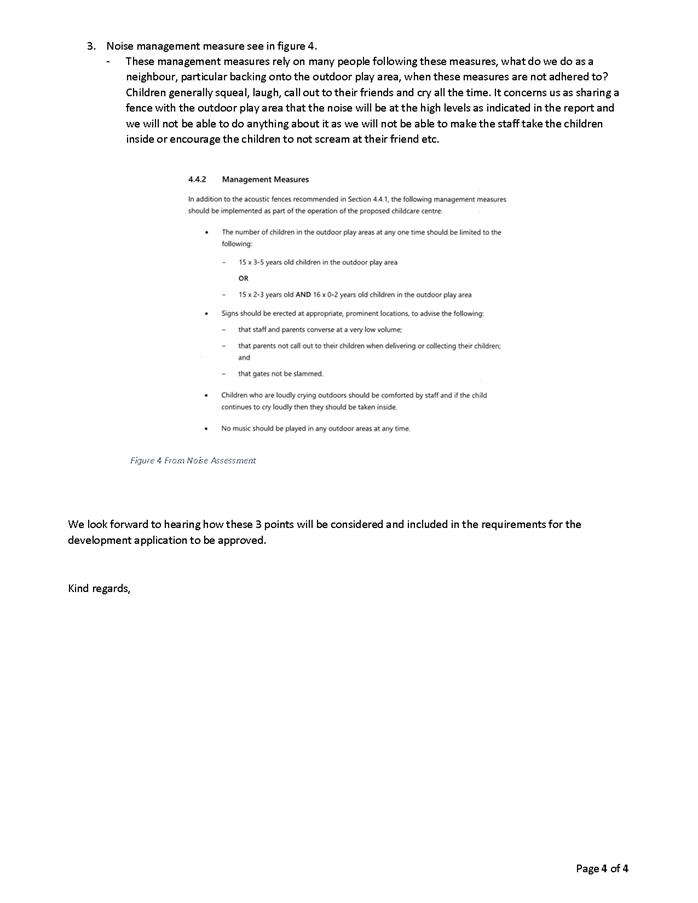
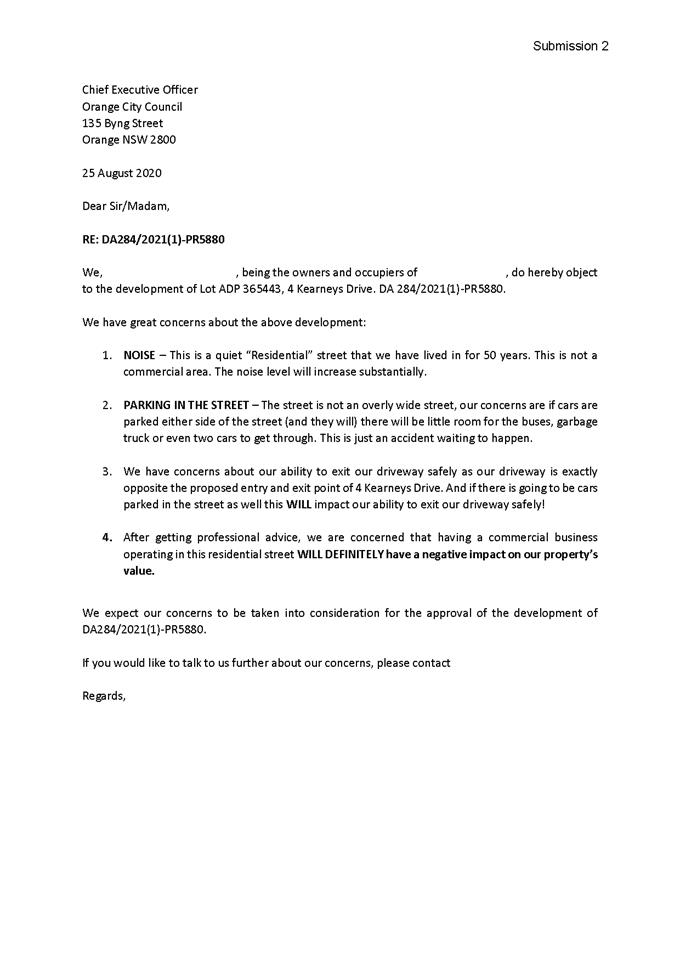
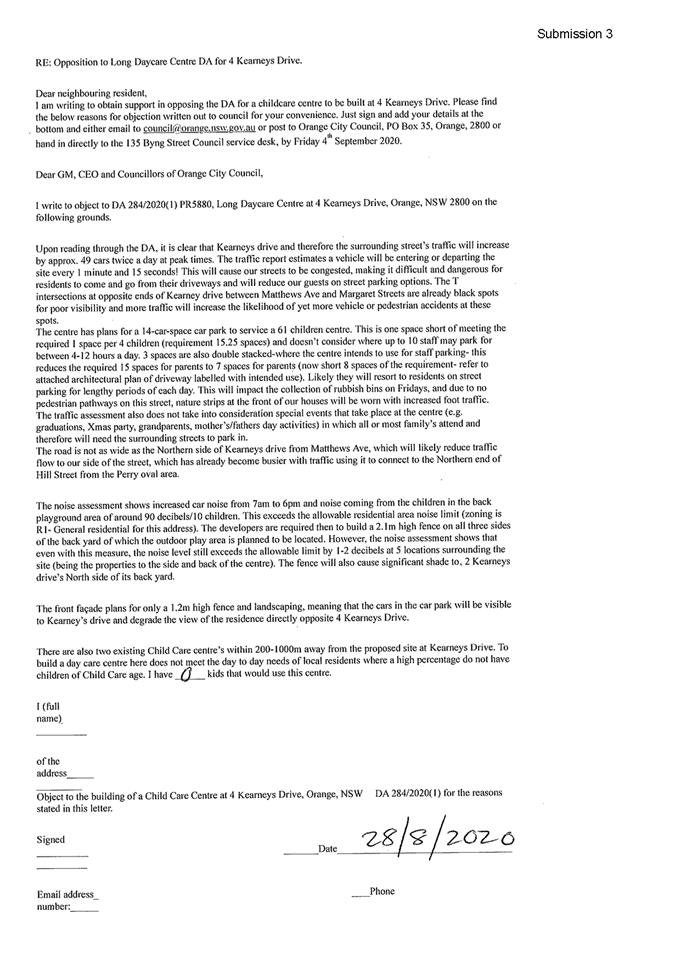
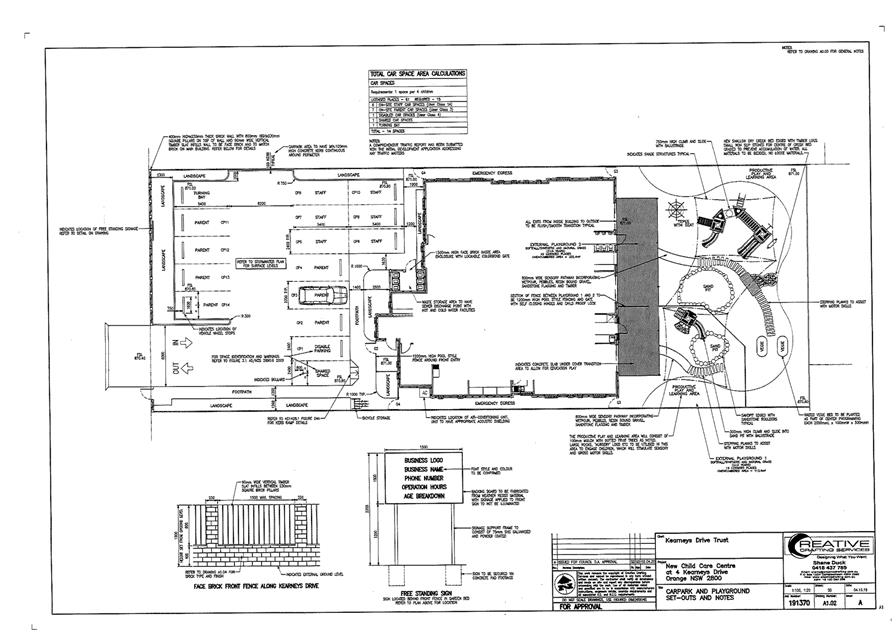
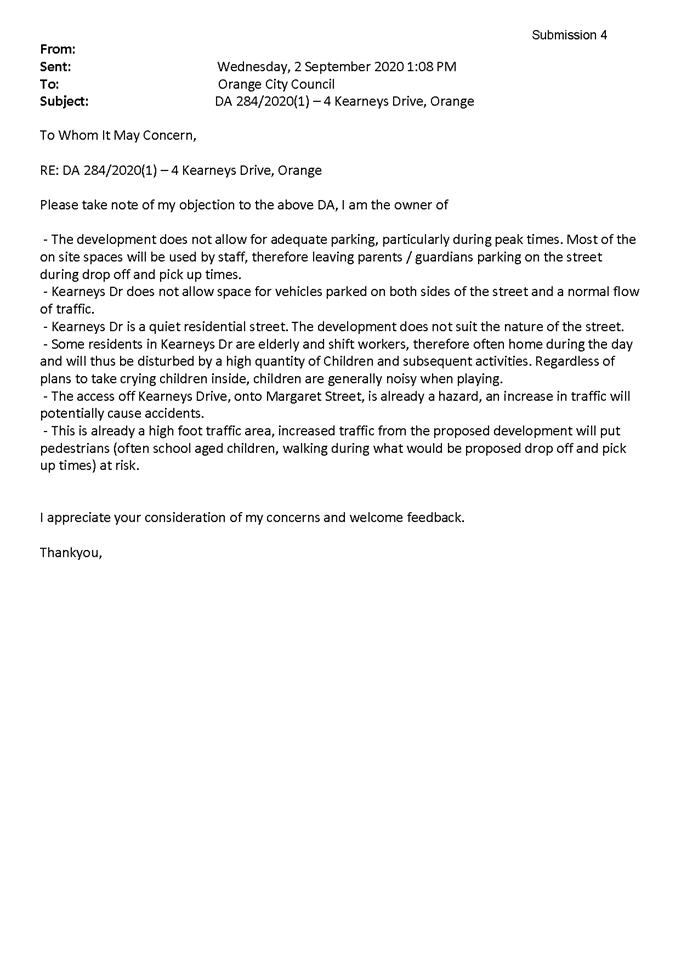
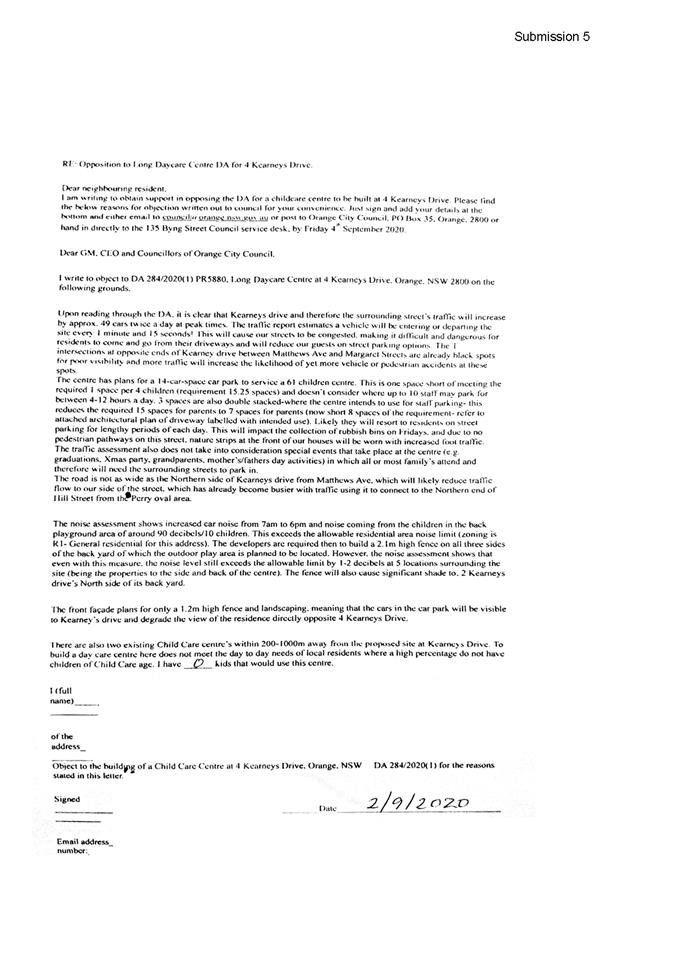
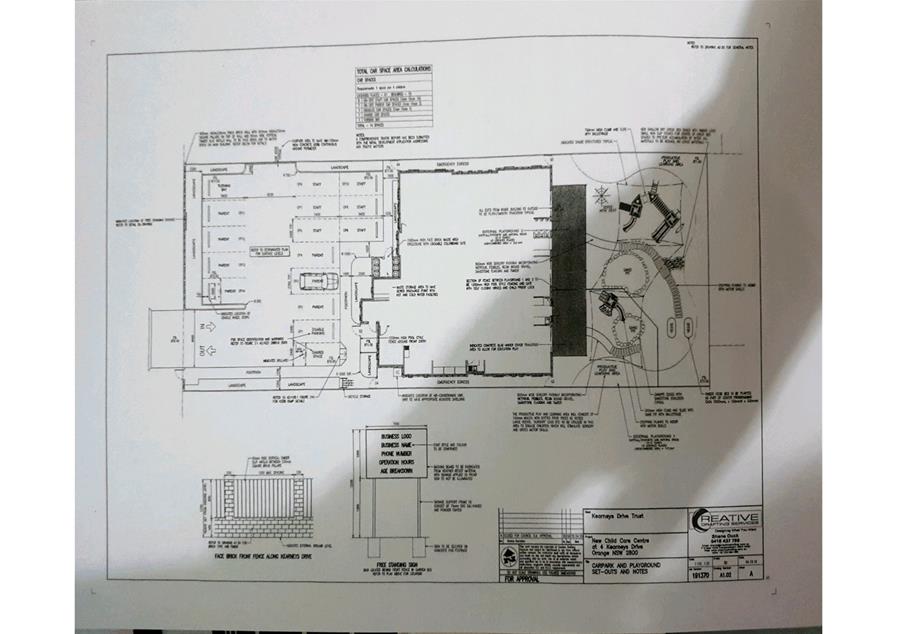
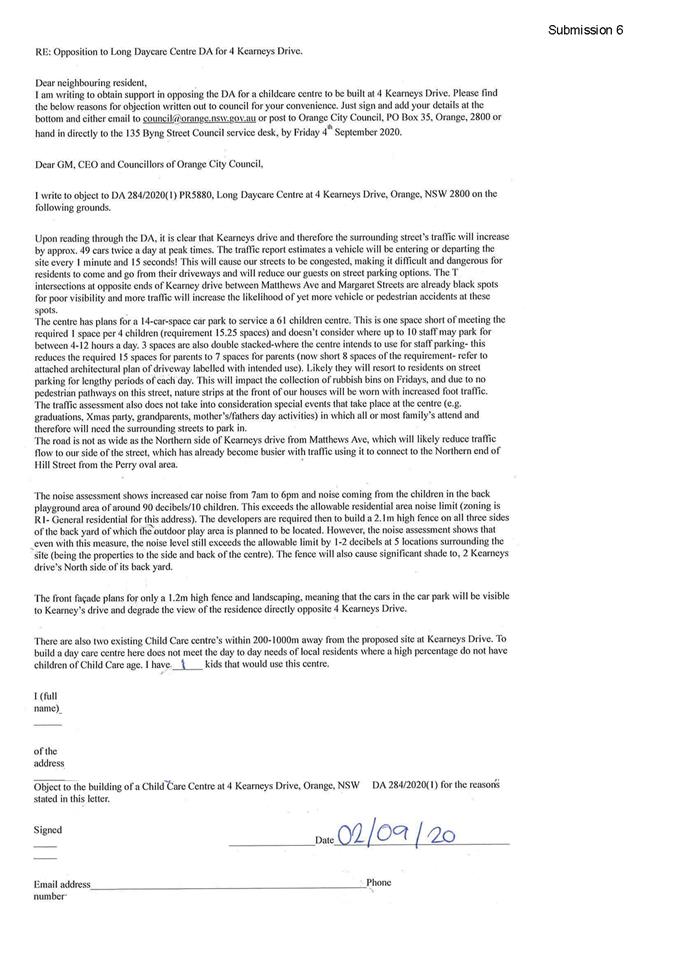
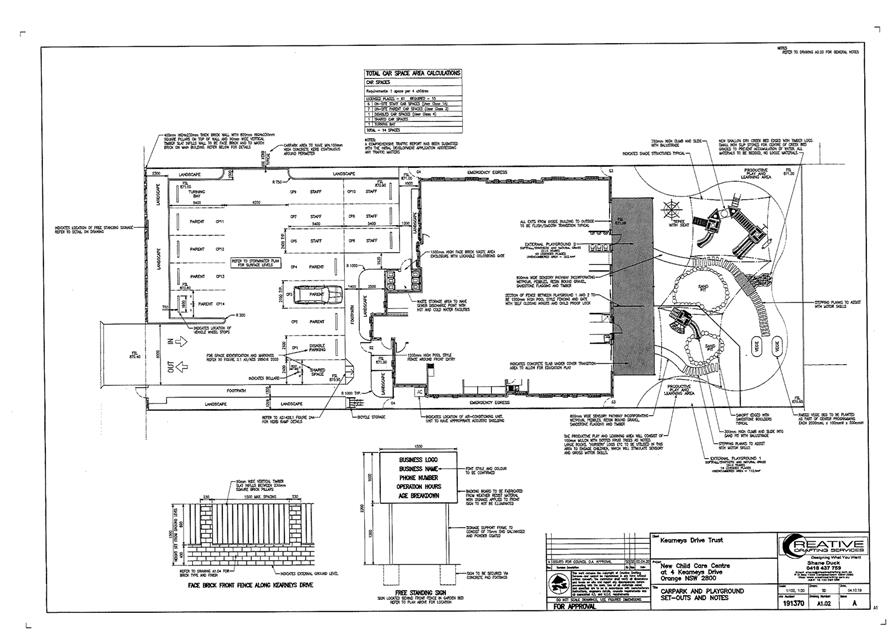
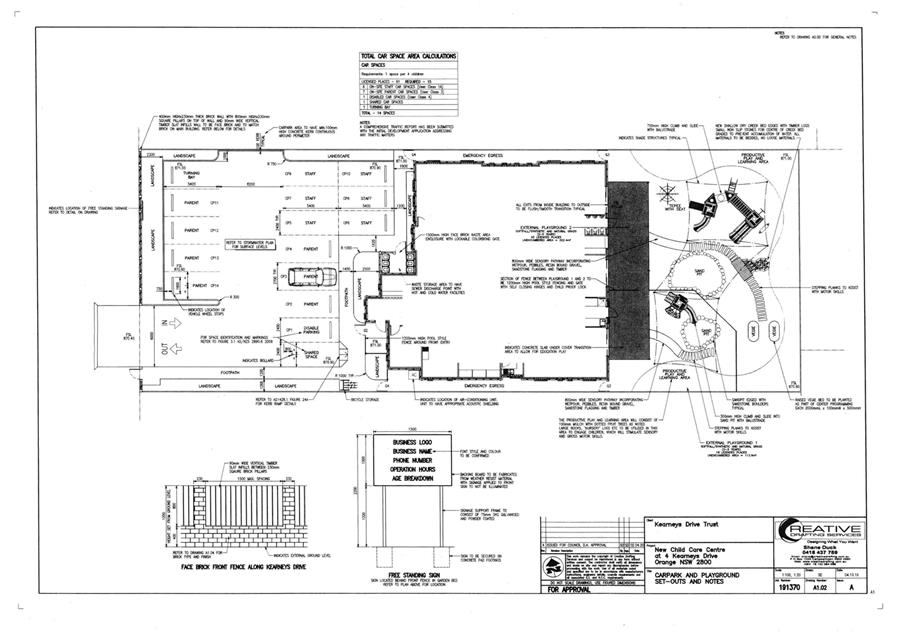
5.7 Strategic
Policy Review - ST146 - Child Safe - Post Exhibition
RECORD
NUMBER: 2020/2287
AUTHOR: Janessa
Constantine, Acting Manager Corporate Governance
EXECUTIVE Summary
This report presents Strategic Policy ST146 – Child
Safe which has been reviewed and is recommended for adoption. The policy was
exhibited for 28 days and this period ceased on 6 November 2020. There were no
submissions received. It is recommended that Council adopt the Child Safe
policy.
Link To Delivery/OPerational Plan
The recommendation in this report relates to the
Delivery/Operational Plan strategy “17.1 Collaborate - Provide
representative, responsible and accountable community governance”.
Financial Implications
Nil
Policy and Governance Implications
Council’s Strategic Policies are reviewed and amended
to ensure ongoing compliance with legislation and industry best practice.
Policies of Council are of two types – Strategic
Policies are determined by Council, and relate to Councillors and the broader
community. The Local Government Act 1993 requires the public exhibition of
Policies (if new or include significant changes) and adoption by Council.
Operational Policies are determined and implemented by the Chief Executive
Officer, and relate to staff and the operations of the organisation.
|
Recommendation
That Council adopts Strategic Policy – ST146
– Child Safe.
|
further considerations
Consideration has been given to the recommendation’s
impact on Council’s service delivery; image and reputation; political;
environmental; health and safety; employees; stakeholders and project
management; and no further implications or risks have been identified.
SUPPORTING INFORMATION
Background
The Royal Commission into Institutional Responses to Child
Sexual Abuse found that many organisations in Australia failed to protect
children from abuse, failed to listen to children who tried to disclose abuse
and failed to respond appropriately when abuse came to light.
The new Children’s Guardian Act 2019 commenced on 1st
March 2020. Council is a relevant entity that is covered by the Reportable
Conduct Scheme in NSW, therefore Council and its workers will be subject to the
new legislation.
The new Act includes responsibility for the Reportable
Conduct Scheme, which is being transferred to the Office of the
Children’s Guardian from the Ombudsman. The Scheme oversees an
organisation’s response to allegations of reportable misconduct made
against their workers.
The
Office of the Children’s Guardian have also now released a guide to the
Child Safe Standards which provides a framework for making organisations safer
for children in line with the Royal Commission. They have been accepted by the
NSW Government. Based on extensive research and consultation, the Standards
provide tangible guidance for organisations to create cultures, adopt
strategies and act to put the interests of children first, to keep them safe
from harm.
It is also anticipated the Mandatory Child Safe Scheme
legislation will be passed late 2020, and will formally commence mid 2021
(timeframes subject may change due to COVID).
Implementing a Child Safe Council
To build an integrated and embed approach to these Child
Safe Standards, a child safe working party of employees have been established.
The attached Policy and poster is the first step in implementing and embedding
these Standards.
Attachments
1 DRAFT
- Strategic Policy - ST146 - Child Safe - October 2020, D20/58998⇩
Council
Meeting
15 December 2020
Attachment 1 DRAFT -
Strategic Policy - ST146 - Child Safe - October 2020
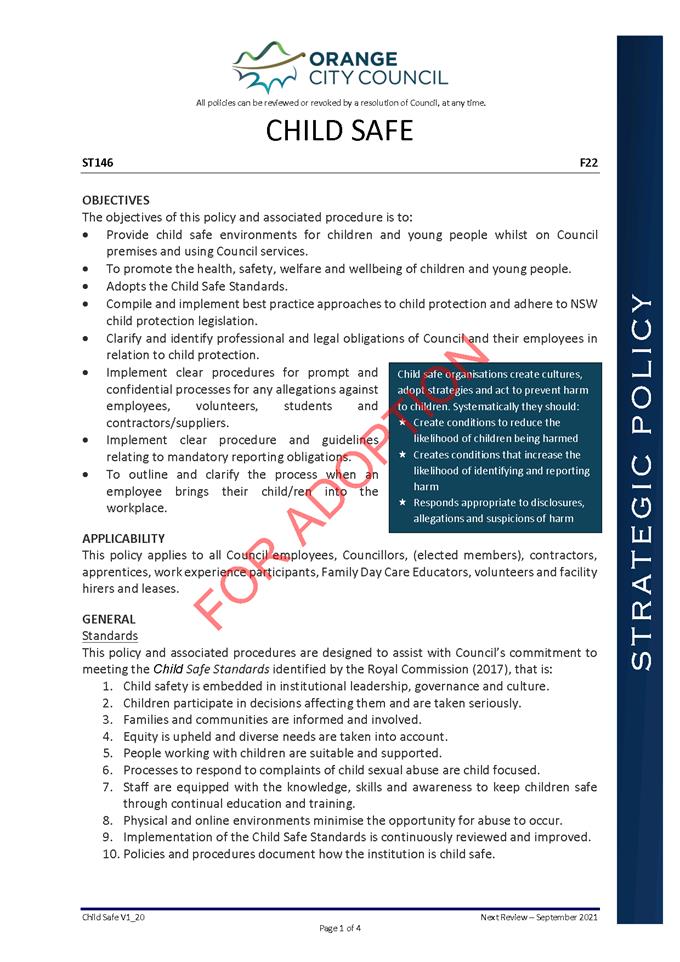
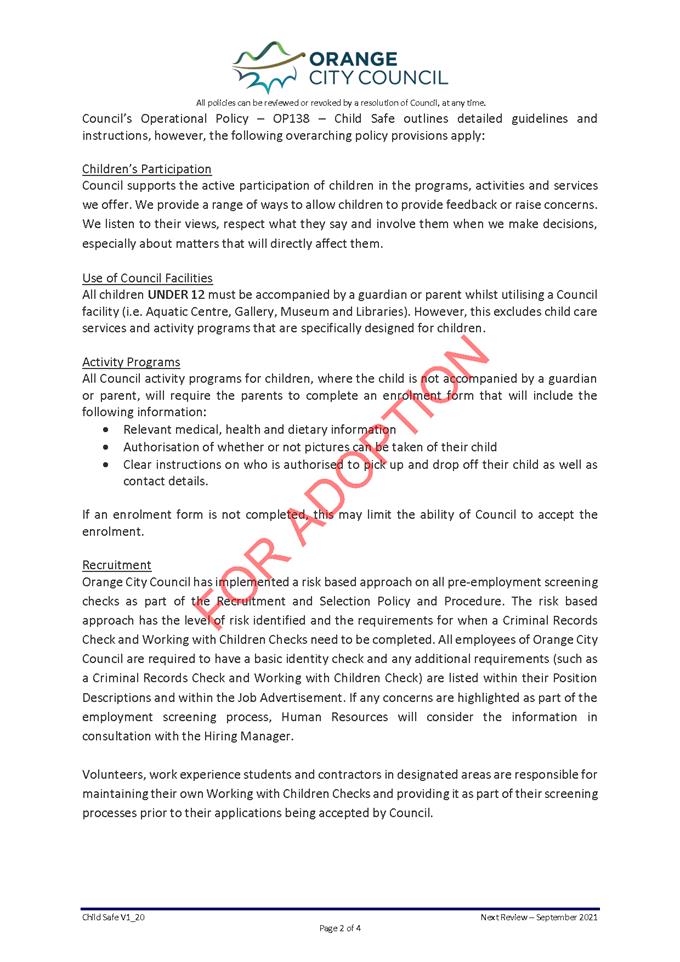
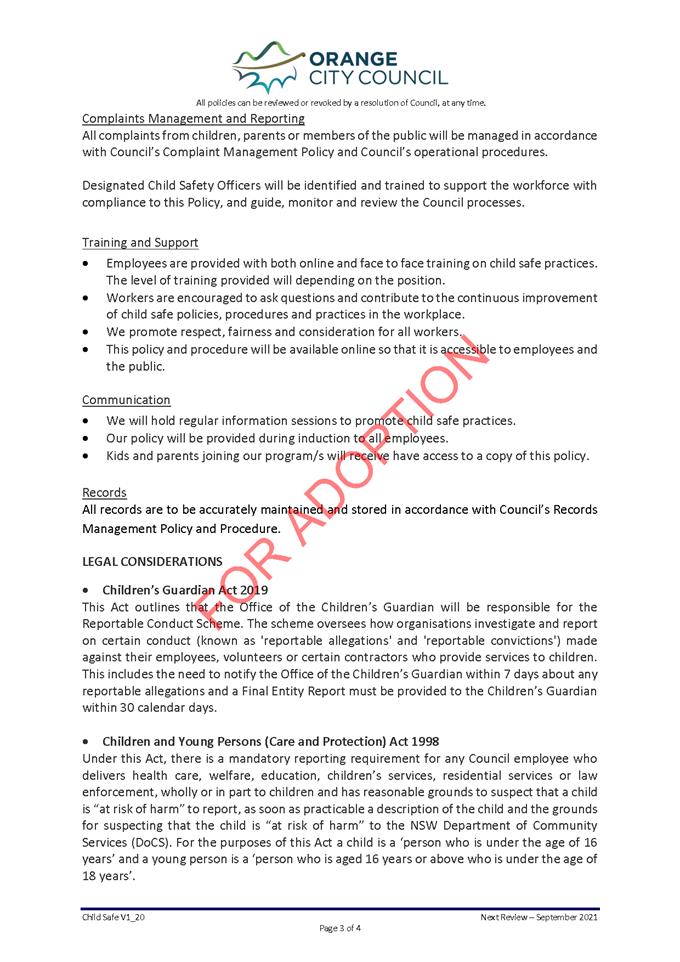
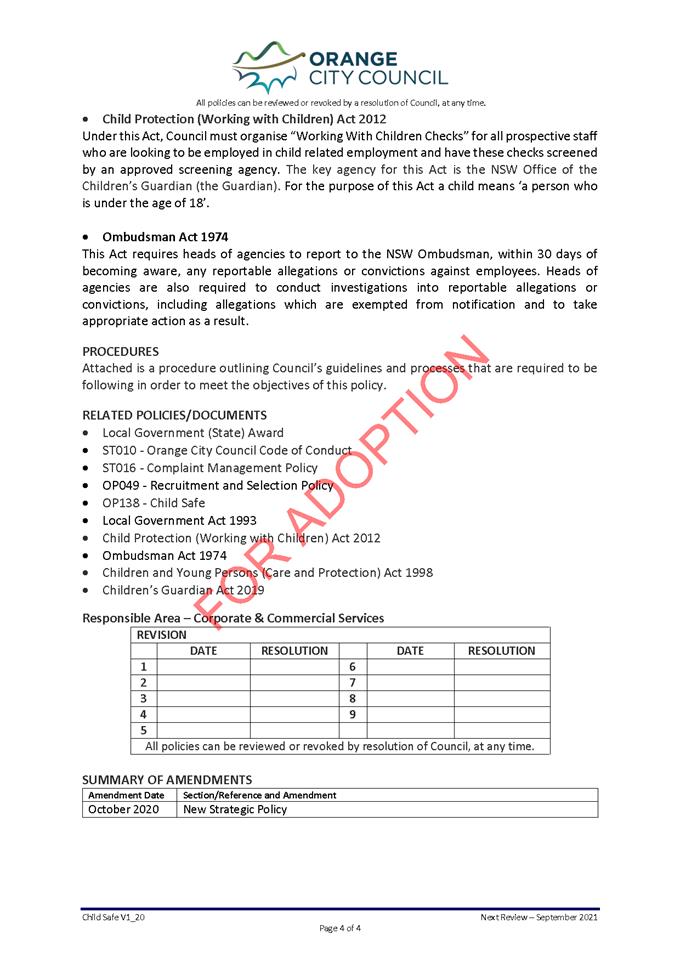
5.8 Strategic
Policy Review
RECORD
NUMBER: 2020/2478
AUTHOR: Janessa
Constantine, Acting Manager Corporate Governance
EXECUTIVE Summary
This report presents policies which have been reviewed and
are recommended for placement on public exhibition for a period of 28 days:
· ST049
– Communications & Community Engagement
· ST029
– Donations & Grants
· ST032
– Gallery Collection
Link To Delivery/OPerational Plan
The recommendation in this report relates to the
Delivery/Operational Plan strategy “17.1 Collaborate - Provide
representative, responsible and accountable community governance”.
Financial Implications
Nil
Policy and Governance Implications
Council’s Strategic Policies are reviewed and amended
to ensure ongoing compliance with legislation and industry best practice.
Policies of Council are of two types – Strategic
Policies are determined by Council, and relate to Councillors and the broader
community. The Local Government Act 1993 requires the public exhibition of
Policies (if new or include significant changes) and adoption by Council.
Operational Policies are determined and implemented by the Chief Executive
Officer, and relate to staff and the operations of the organisation.
|
Recommendation
That Council resolves to:
1 Place the
following policies on public exhibition for a period of 28 days:
· ST049
– Communications & Community Engagement
· ST029
– Donations & Grants
· ST032
– Gallery Collection
2 That the policies be
referred to the Councillor Policy Review Committee for comment.
|
further considerations
Consideration has been given to the recommendation’s
impact on Council’s service delivery; image and reputation; political;
environmental; health and safety; employees; stakeholders and project
management; and no further implications or risks have been identified.
SUPPORTING INFORMATION
Policies for Exhibition
The following policies have been
reviewed and outlined below are changes/updates made to each policy. It is
recommended these policies be placed on public exhibition for a period of 28
day to allow for Council and public review and submissions. Given the period
now leading in Christmas and the New Year, the following policies will be on
exhibition for a period greater than 28 days to allow for consideration during
the Christmas closedown period.
ST049 - Communications and
Community Engagement
|
Reference
|
Update
|
|
General
|
· New Policy. Replace/Update ST049 -
Council Communications, Incorporation of New Strategic Policy’s on
Community Engagement and Social Media conduct.
|
ST029 - Donations and Grants
|
Reference
|
Update
|
|
General
|
· Full revision of the policy.
|
ST032 – Gallery
Collection
|
Reference
|
Update
|
|
General
|
· Amended title of Gallery and
Museum Director to Gallery Director throughout.
· Amended the consultation
process under Collection Principles to: “The Gallery Director in
consultation with the Curator and Exhibition Coordinator, the Collection
Manager and industry professionals”
· Adjusted the period of loans to
the Gallery to a maximum period of 5 years.
· Expanded
on Collection Background and Focus to include more History and allow for
acquisition of artworks by international artists.
· Added Orange
Health Service as a location for display.
|
Attachments
1 DRAFT
- Strategic Policy - ST049 - Communications and Community Engagement (December
2020), D20/74742⇩
2 DRAFT
- Strategic Policy - ST029 - Donations and Grants Policy (December 2020),
D20/74617⇩
3 DRAFT
- Strategic Policy - ST032 - Gallery - Collection (December 2020), D20/74816⇩
Council
Meeting
15 December 2020
Attachment 1 DRAFT -
Strategic Policy - ST049 - Communications and Community Engagement (December
2020)
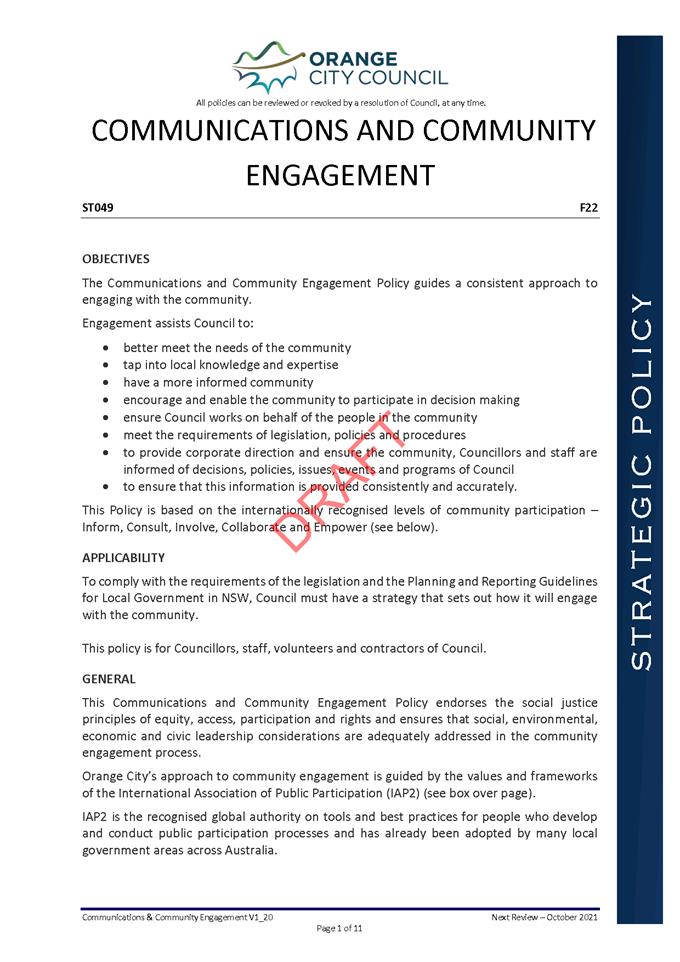
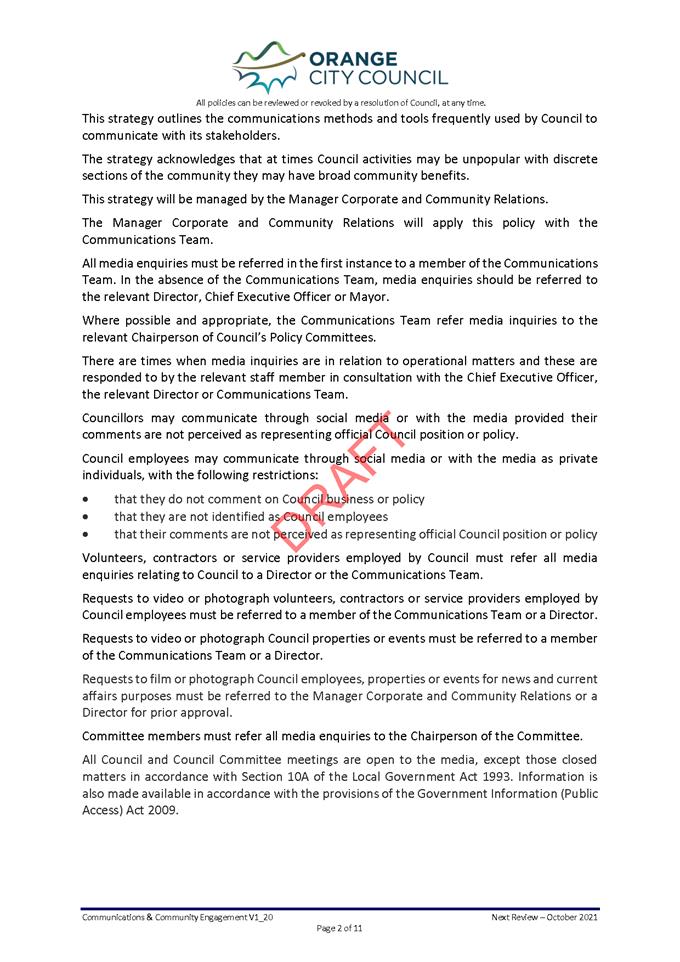
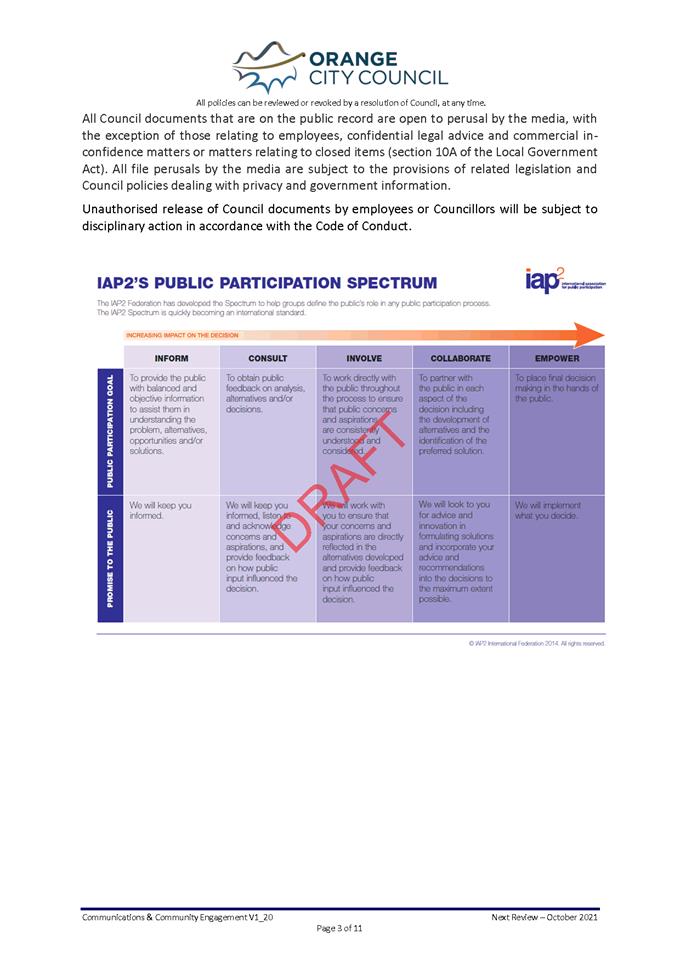
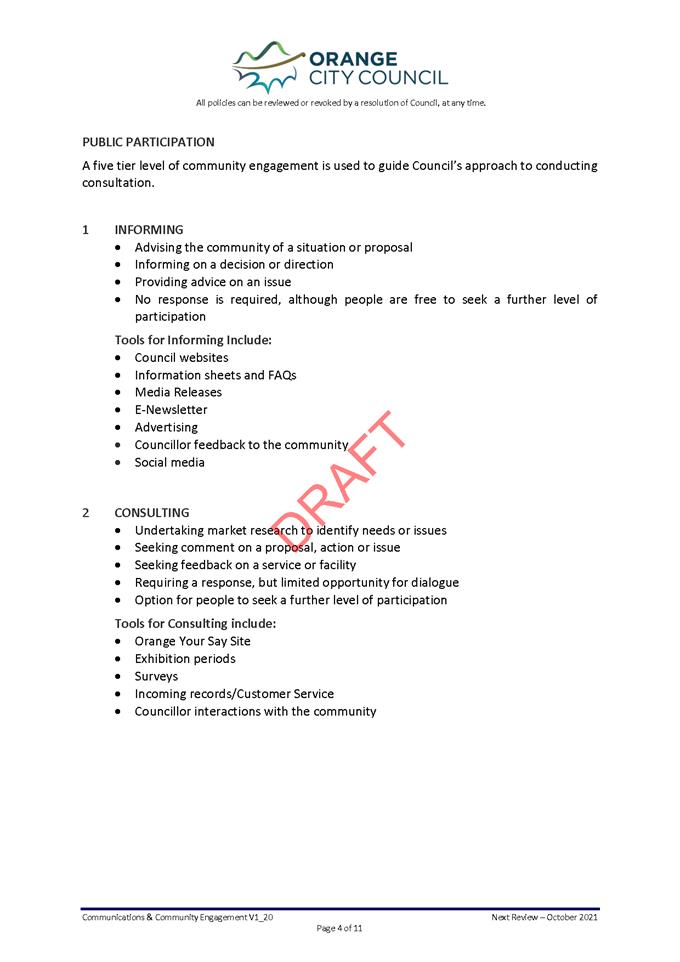
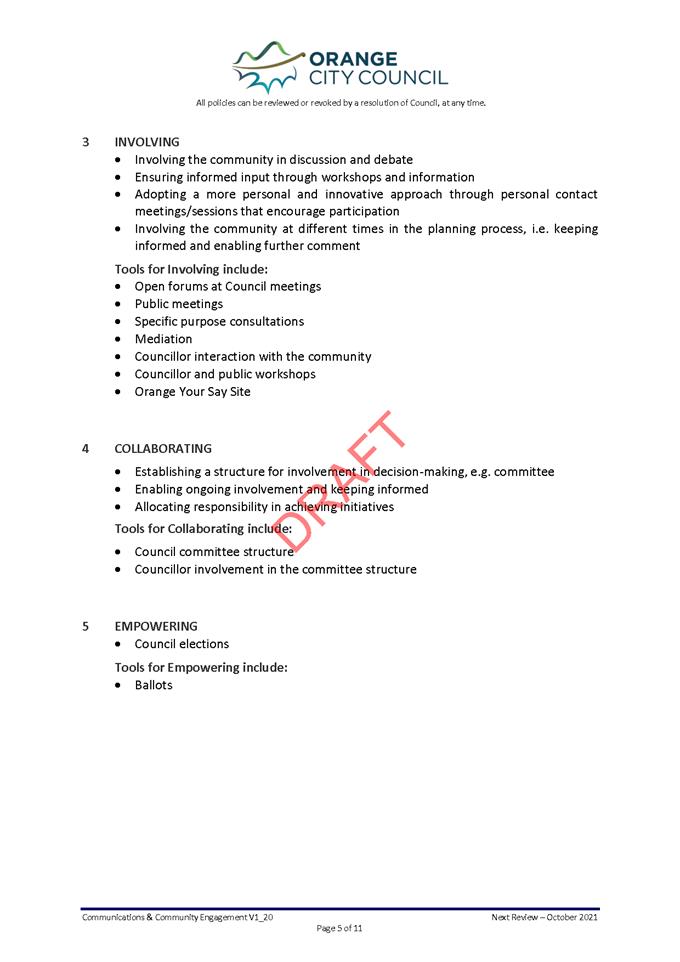
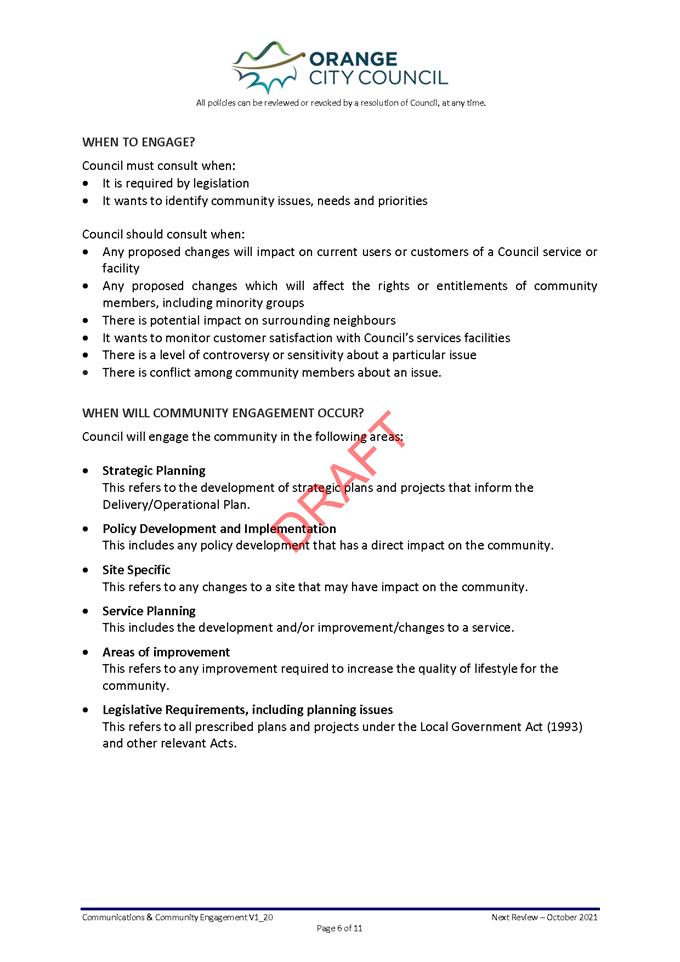

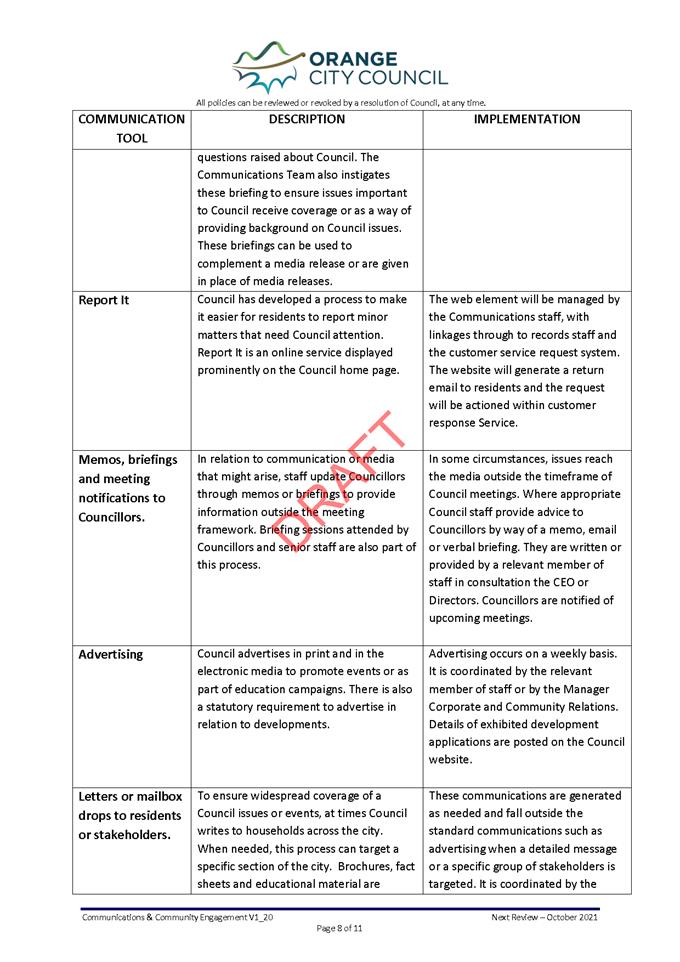
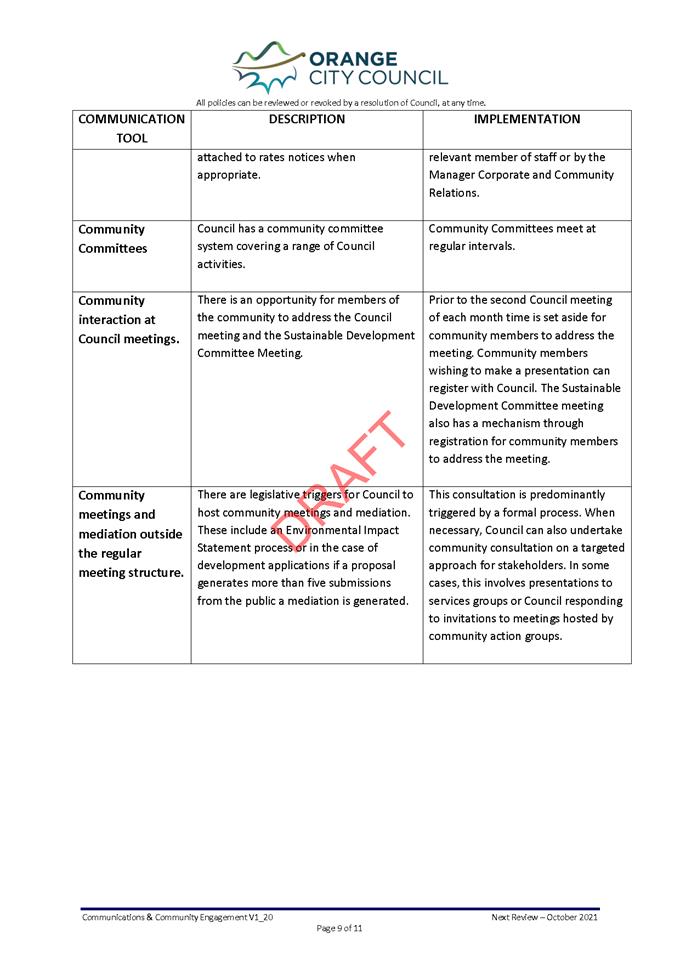
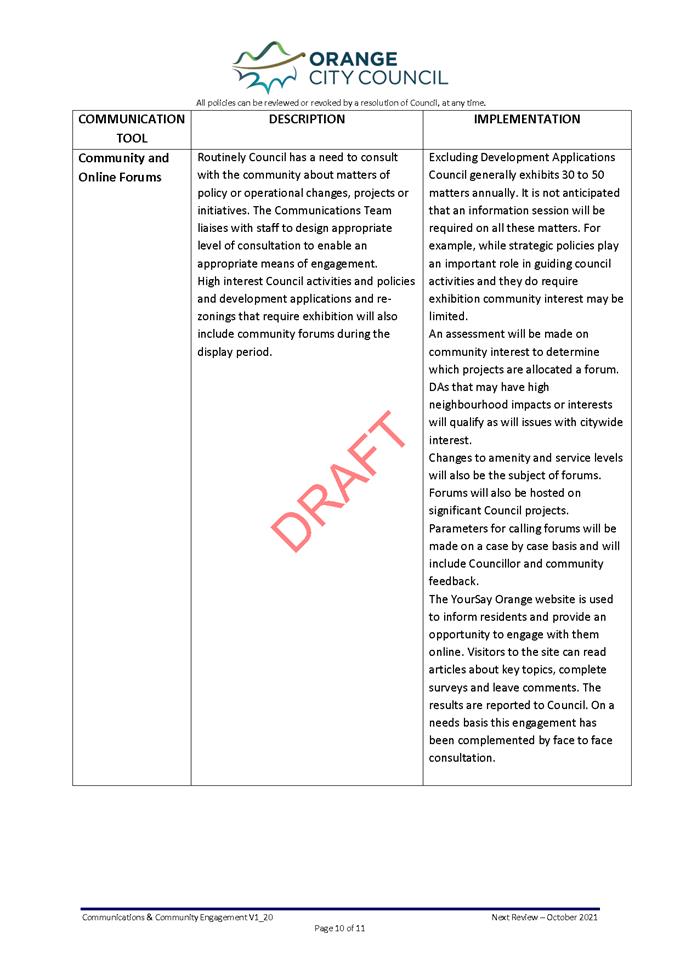
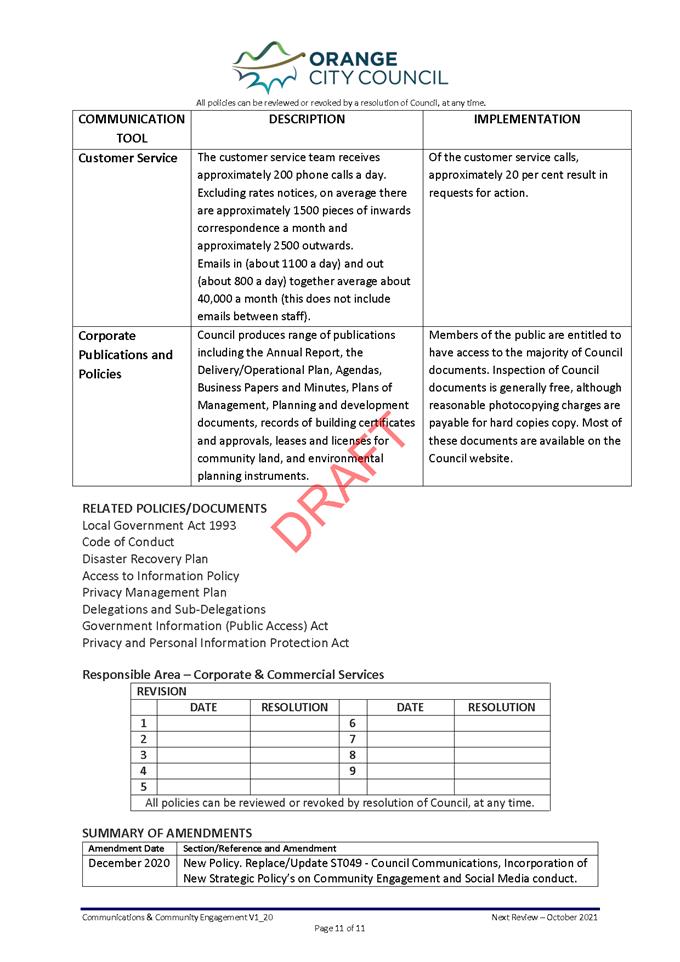
Council Meeting
15 December 2020
Attachment 2 DRAFT -
Strategic Policy - ST029 - Donations and Grants Policy (December 2020)
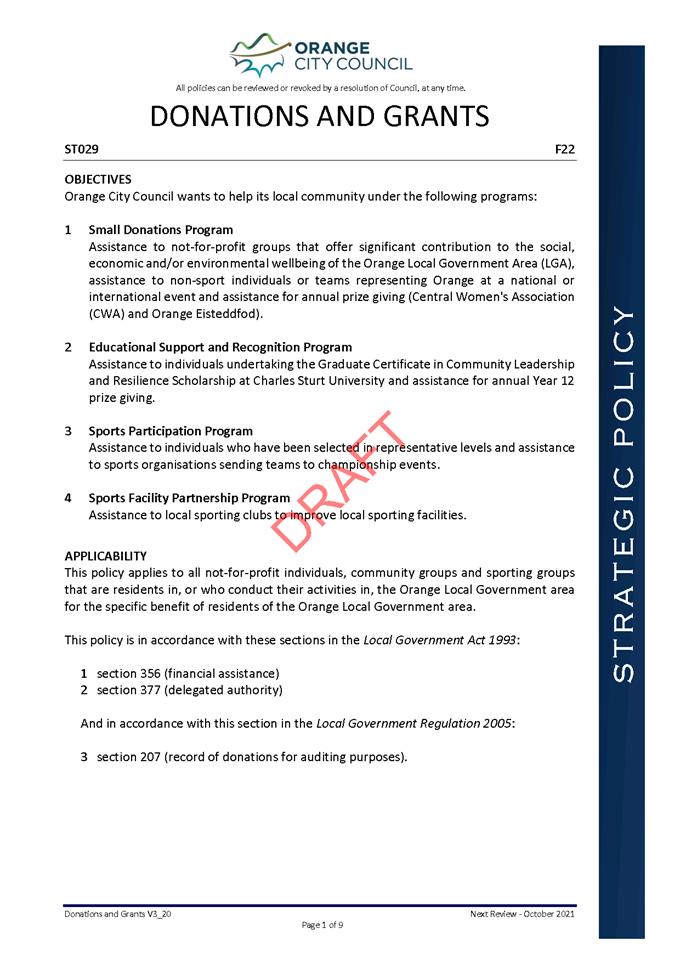



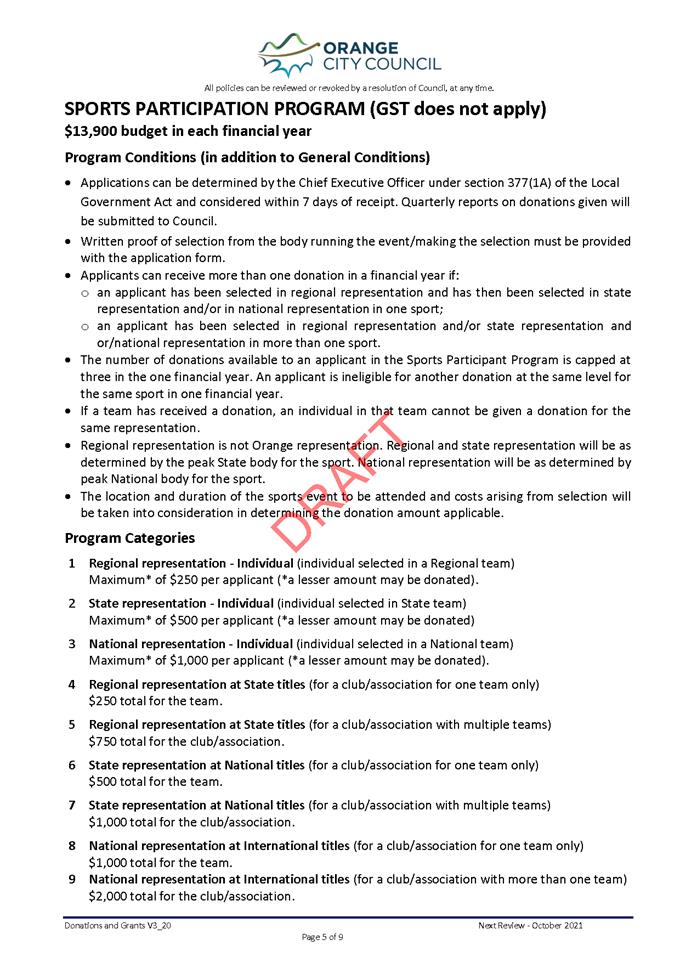
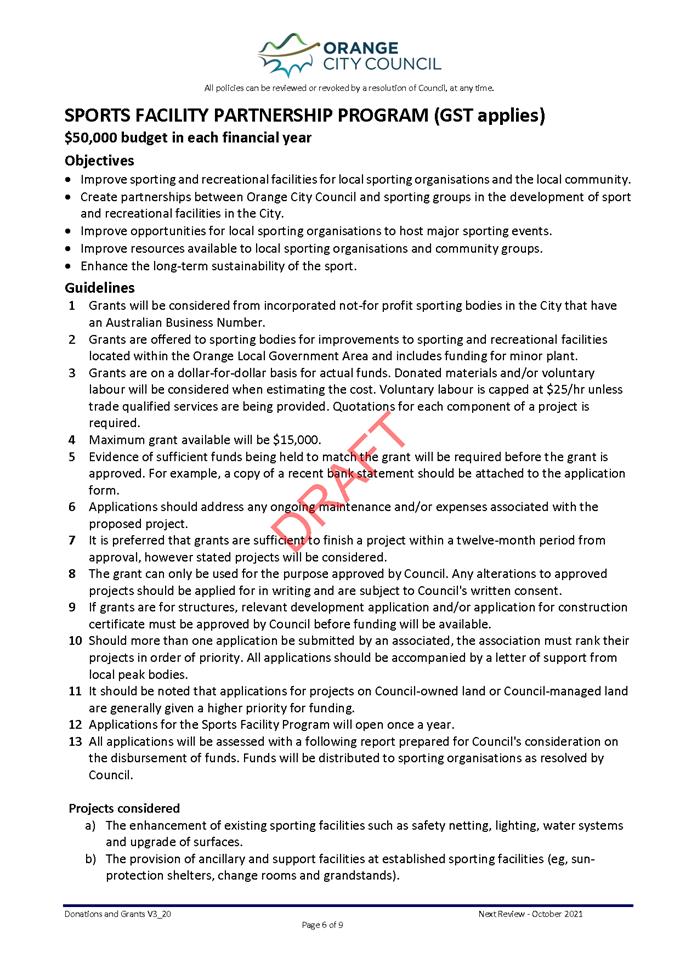
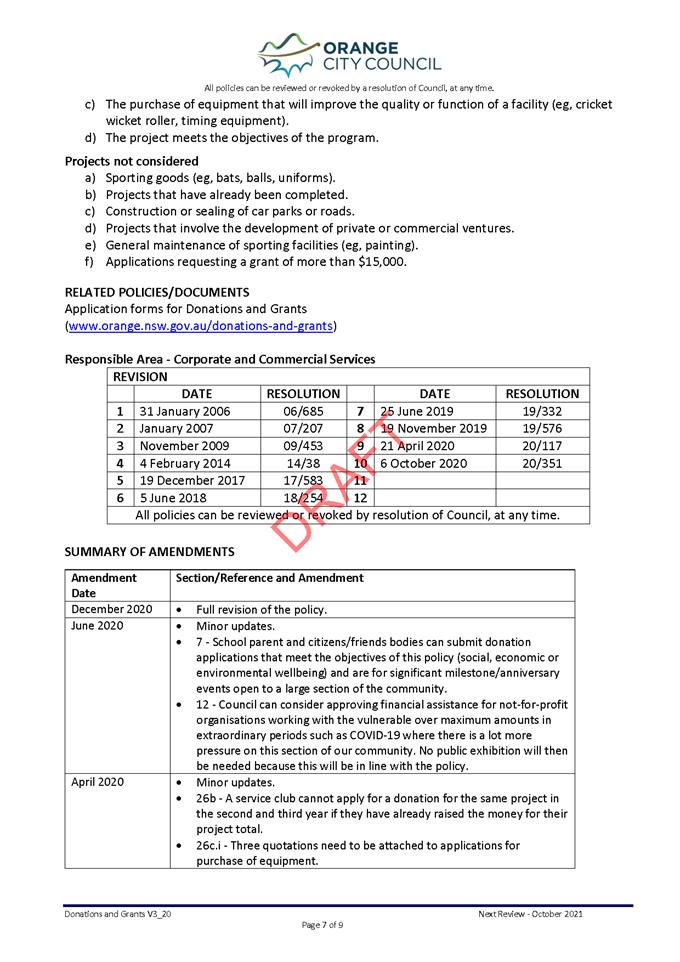
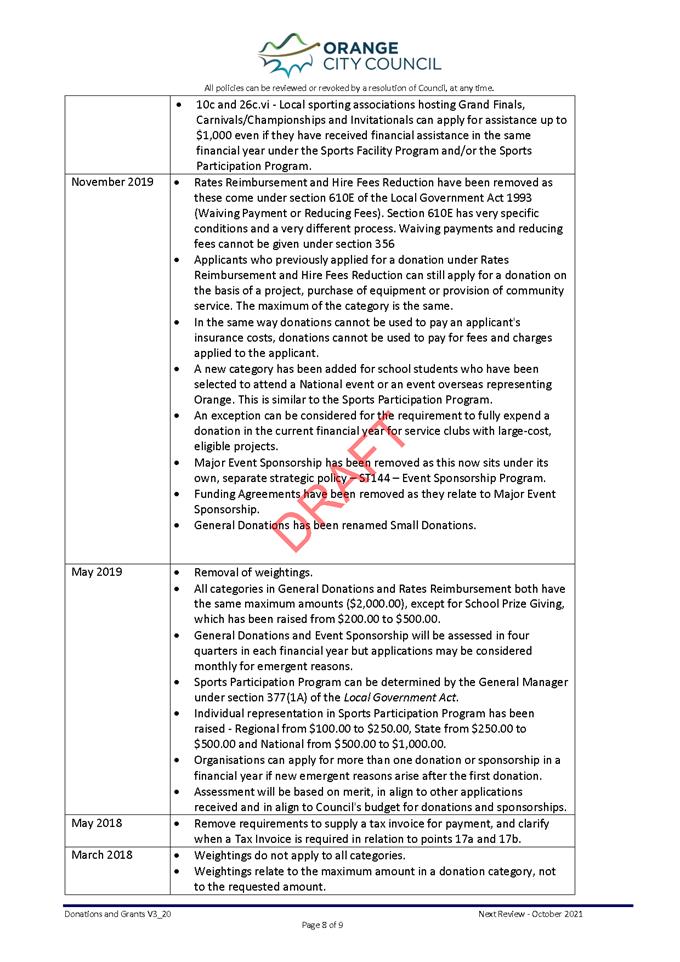
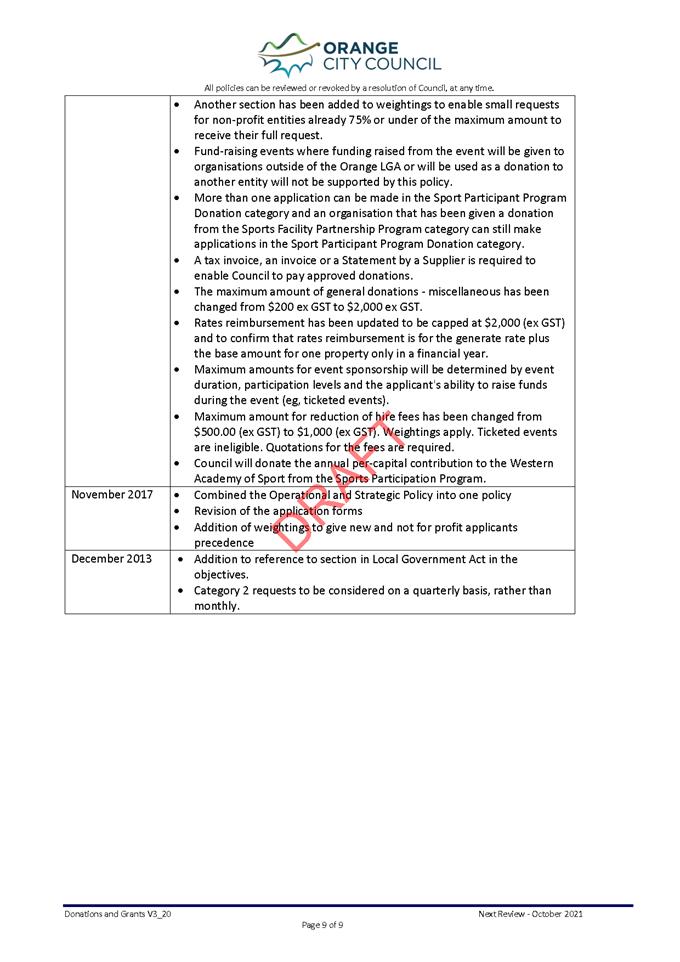
Council Meeting
15 December 2020
Attachment 3 DRAFT -
Strategic Policy - ST032 - Gallery - Collection (December 2020)
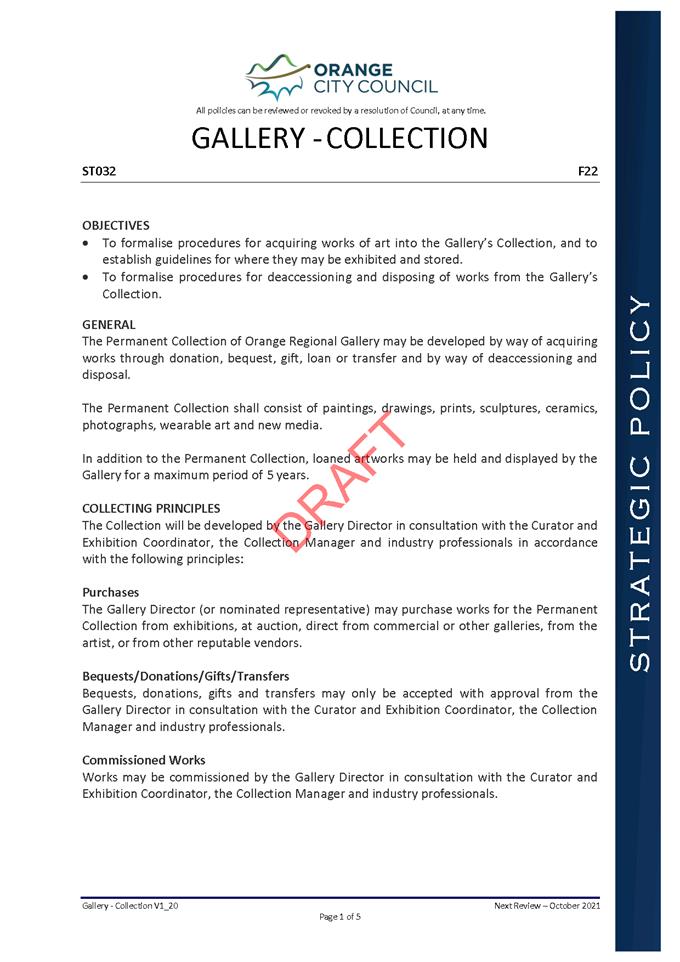
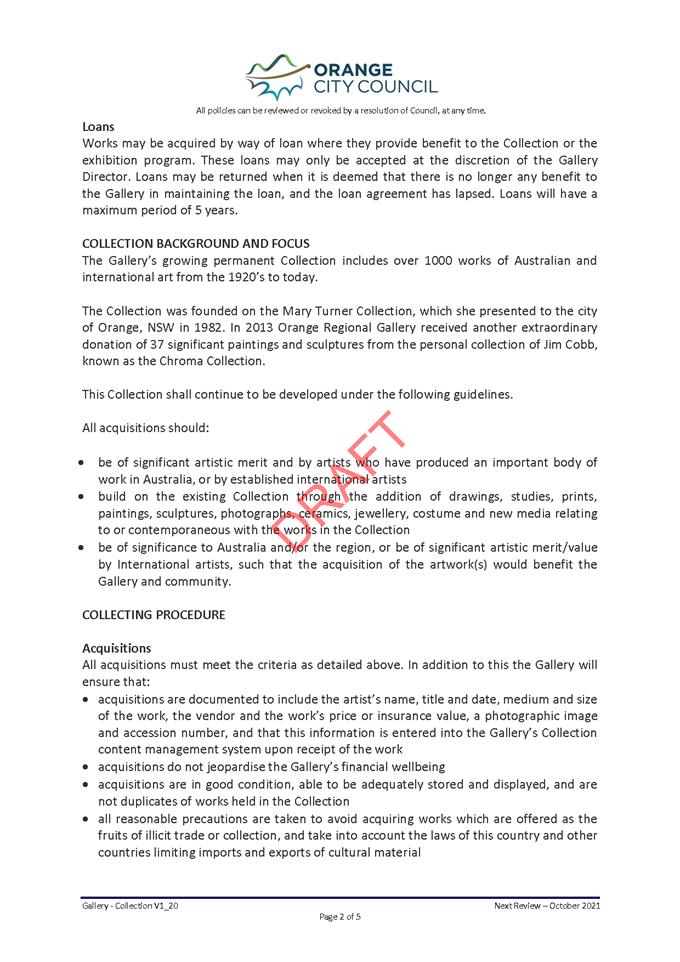
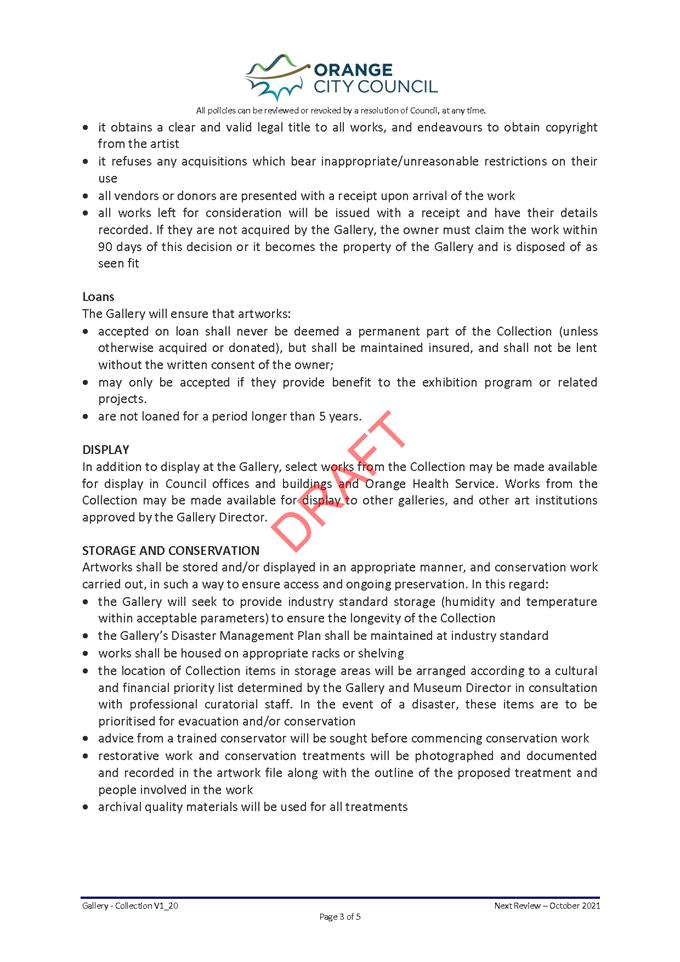
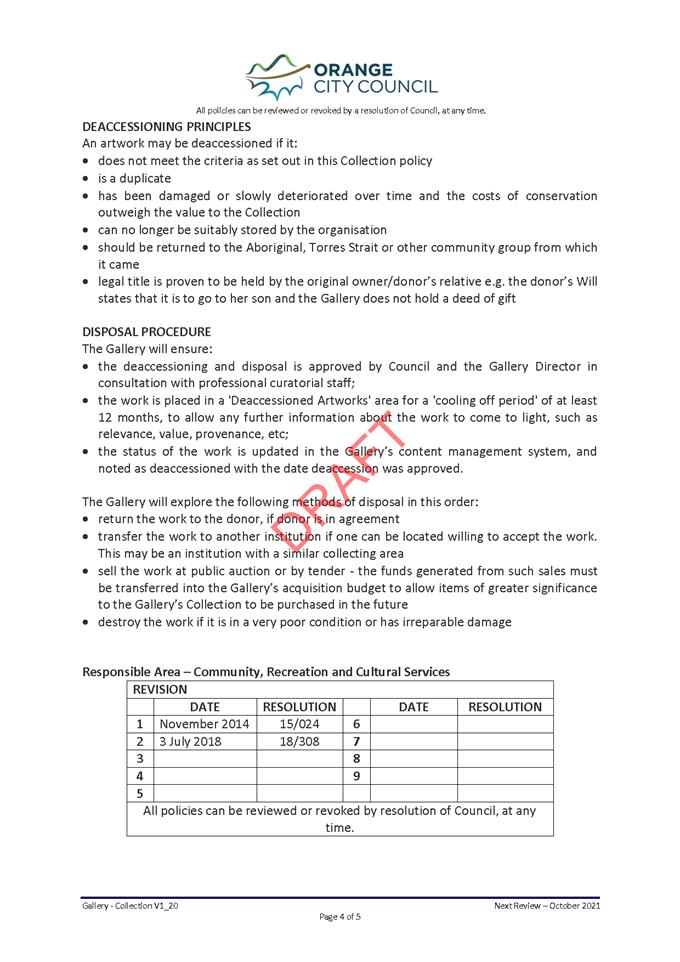
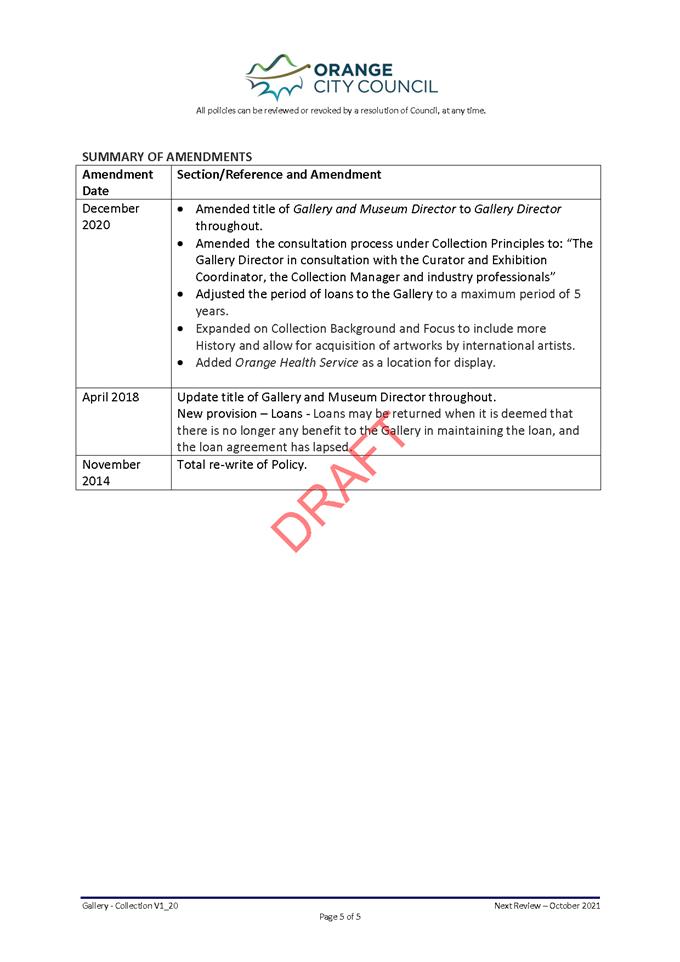
5.9 Requests
for Financial Assistance - Quarter 3 of 2020/2021 (Remaining Balance) - Small
Donations Program
RECORD
NUMBER: 2020/2461
AUTHOR: Nick
Redmond, Acting Director Corporate and Commercial Services
EXECUTIVE
SUMMARY
Council can approve community financial assistance (in cash
or in kind) in accordance with section 356 of the Local Government Act 1993.
Council has in place a policy for donations and grants under
section 356 of the Act. Applications are open in four rounds in each financial
year. This report is the assessment of late donation applications received for
the Small Donations Program Round 3 of 2020/2021. These can be considered as
there is a remaining balance in that Round.
Link To Delivery/OPerational Plan
The recommendation in this report relates to the
Delivery/Operational Plan strategy “15.2 Collaborate - Support community
organisations and groups to deliver services and programs”.
Financial Implications
The overall
donations/sponsorship budget for 2020/2021 is as follows:
|
General Donations Program
|
Adopted Budget
|
Actual/
committed
|
Remaining
balance
|
|
Quarter 1
|
$20,000.00
|
$20,000.00
|
$0.00
|
|
Quarter 2
School Prize Giving Fund
|
$16,000.00
$4,000.00
|
$8,557.45
$4,000.00
|
$7,442.55
$0.00
|
|
Quarter 3
|
$20,000.00
|
$5,750.00
|
$14,250.00
|
|
Quarter 4
|
$20,000.00
|
$0.00
|
$20,000.00
|
|
Orange Harness Racing - Annual to 2025/26
|
$20,000.00
|
$20,000.00
|
$0.00
|
|
TOTAL
|
$100,000.00
|
$58,307.45
|
$41,692.55
|
Process for
applications of the remaining budget allocation
A Council resolution is required to allocate funds to any external
entity, including as a donation.
Applications are considered against the criteria outlined in
the donations and grants policy. The policy includes a condition that an
application form must be submitted to commence the process of making a donation
to another entity. The form contains details to inform Council that the
donation aligns with the objectives Council has established in the Community
Strategic Plan.
Policy and Governance Implications
Nil
|
Recommendation
That
Council resolves:
1 That
a donation of $1,000.00 be made from the Small Donations Program to Anglicare
Orange (Foster Care Children's Christmas Party 2021).
2 That
a donation of $10,000.00 be made from the Small Donations Program to Orange
Uniting Church - Hot Meals Outreach (Community Service and Equipment Purchase
(provision of meals to the vulnerable)).
3 That
a donation of $300.00 be made from the Small Donations Program to Spring Hill
Activities Group (Spring Hill Village Christmas Party).
|
further considerations
Consideration has been given to the recommendation’s
impact on Council’s service delivery; image and reputation; political;
environmental; health and safety; employees; stakeholders and project
management; and no further implications or risks have been identified.
SUPPORTING INFORMATION
The remaining balance up to Round 3 is $21,692.55
(comprising $7,442.55 from Round 2 and $14,250.00 from Round 3). A $2,000.00 to
Teach Learn Grow is to be returned but is not added here as it has not yet been
returned.
$20,000 remains reserved for Round 4.
Summary
Shaded cells in the $Request columns shows
requests outside the maximum of the category.
|
No
|
Applicant
|
$Request
|
$Recommended
|
|
40
|
Anglicare Orange
|
$1,000.00
|
$1,000.00
|
|
41
|
Orange Uniting Church - Hot Meals Outreach
|
* $2,000.00
|
$10,000.00
|
|
42
|
Spring Hill Activities Group
|
$300.00
|
$300.00
|
|
|
TOTALS
|
$3,300.00
|
$11,300.00
|
|
Application No 40
|
Anglicare Orange
|
|
Not for Profit
|
Yes.
|
|
Purpose
of the Request
This request
relates to the provision of a Christmas Party and small gifts for foster
children and their carers (totalling 200) under the Anglicare program.
|
|
Amount
Requested
$1,000.00
|
|
Policy
Category
General
Donations - Community Service - Maximum $2,000.00
|
|
Comment
and Recommendation
In
line with the policy. $1,000.00 recommended.
|
|
Application No 41
|
Orange Uniting Church - Hot Meals Outreach
|
|
Not for
Profit
|
Yes.
|
|
Purpose
of the Request
This request
relates to a community service provided by this organisation. The request
also relates to equipment purchase. The community service is the provision of
hot meals to the vulnerable. From the initial effect, and now the ongoing
effect, of COVID-19, this service has increased from 4 meals weekly to
120-130 meals weekly. The equipment purchase is for commercial-grade
equipment for providing this community service.
|
|
Amount
Requested
$2,000.00
|
|
Policy
Category
General
Donations - Providing a Community Service and Purchase Equipment - Maximum
$2,000.00 (this can be exceeded when there is a remaining balance in the
Round and the application is supporting the vulnerable).
|
|
Comment
and Recommendation
In
line with the policy, $10,000.00 recommended.
It
is noted that the applicant has been given donations from other organisations
but the $13,650 budget is only six-month estimate and new commercial-grade
equipment will cost $3,000.
It
is also noted that Orange Uniting Church will be holding the Christmas Lunch
for the vulnerable and will not be asking Council for a donation. The
applicant has stated that where assistance is needed is for the Hot Meals
Outreach.
A
Council donation of $10,000 would provide half the funding needed for the
meals and cover the capital costs of commercial grade equipment.
|
|
Application No 40
|
Spring Hill Action
|
|
Not for Profit
|
Yes.
|
|
Purpose
of the Request
This request
relates to the provision of a community event. The community event is the
Spring Hill Village Family Christmas Party 2020.
|
|
Amount
Requested
$300.00
|
|
Policy
Category
General
Donations - Community Event - Maximum $2,000.00
|
|
Comment
and Recommendation
In
line with the policy. $300.00 recommended.
The
application was received prior to the Christmas Party being held, so it is
not retrospective.
|
Attachments
1 Database
- Donations in 2020/2021 as at 1 December 2020, D20/74250⇩
2 Application
40 - Anglicare Orange, D20/74144⇩
3 Application
41 - Orange Uniting Church, D20/74633⇩
4 Application
42 - Spring Hill Activities Group, D20/74637⇩
Council
Meeting
15 December 2020
Attachment 1 Database
- Donations in 2020/2021 as at 1 December 2020
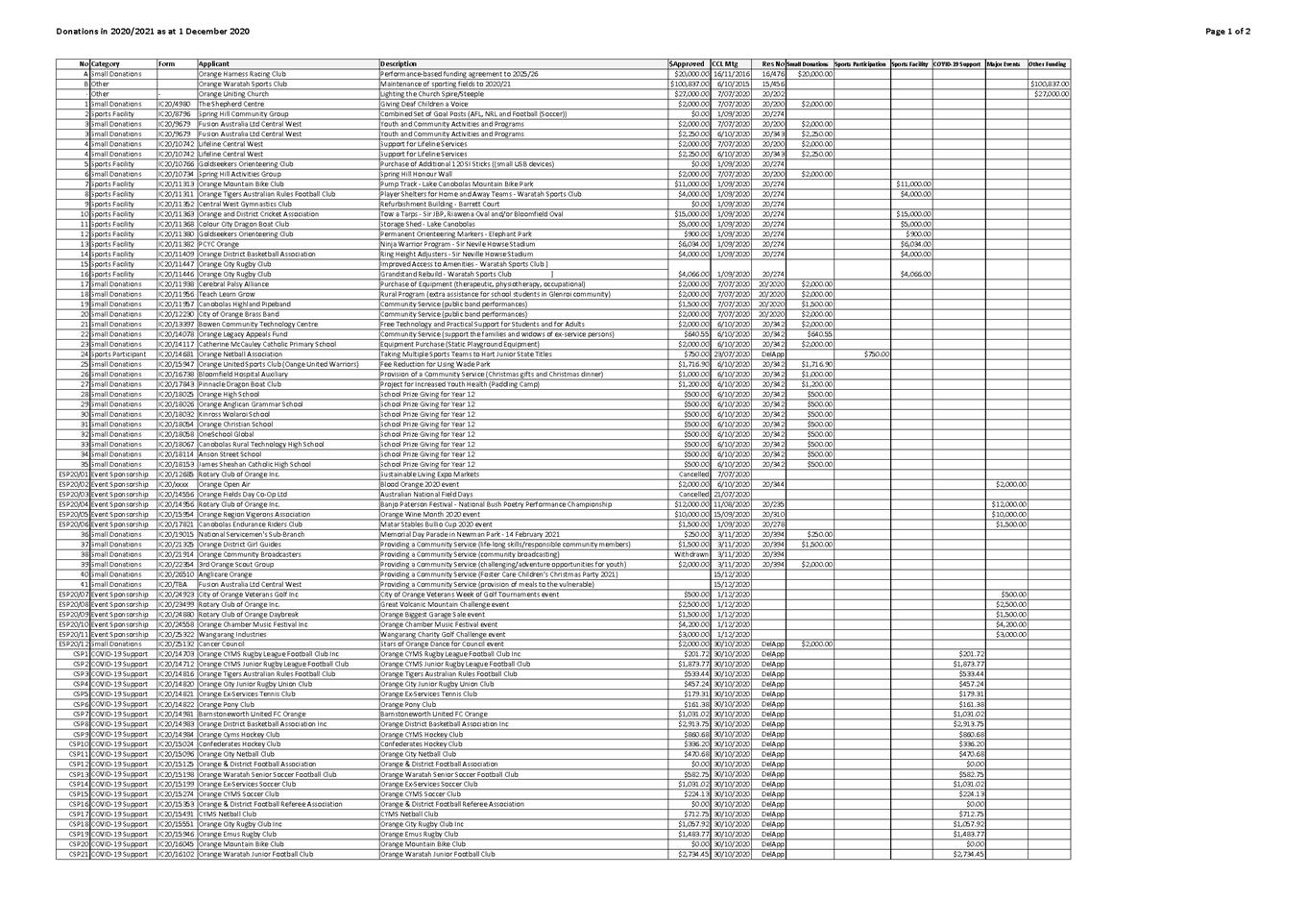
Council
Meeting
15 December 2020
Attachment 2 Application
40 - Anglicare Orange
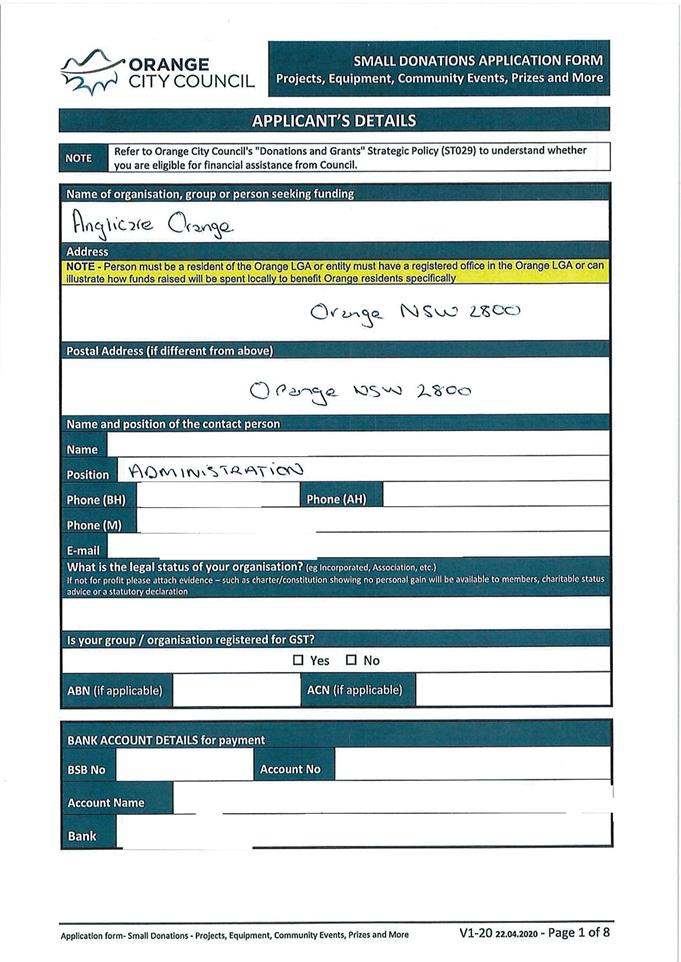

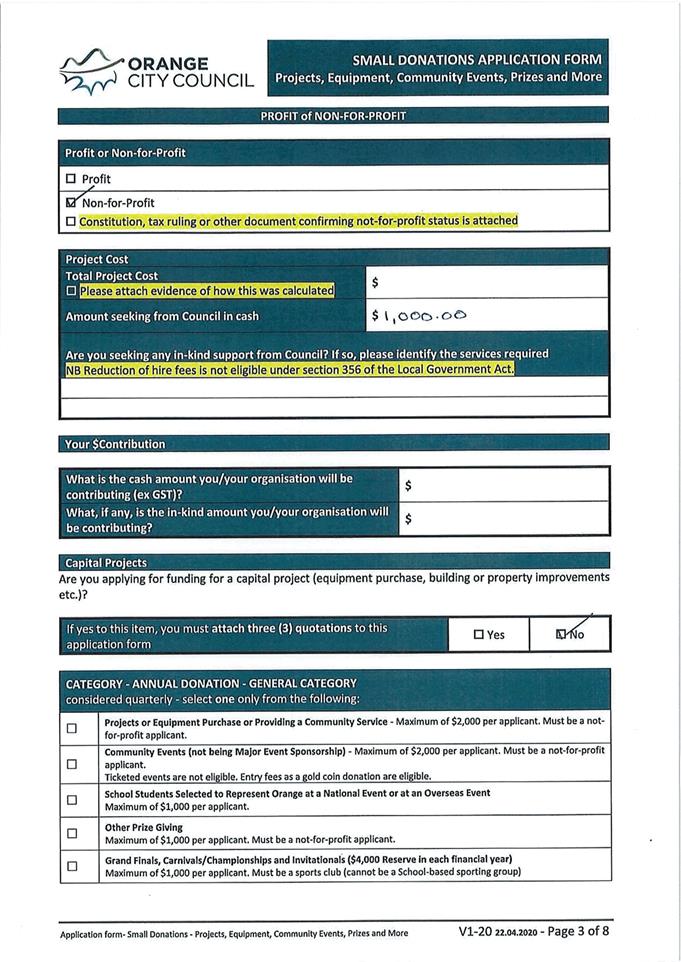
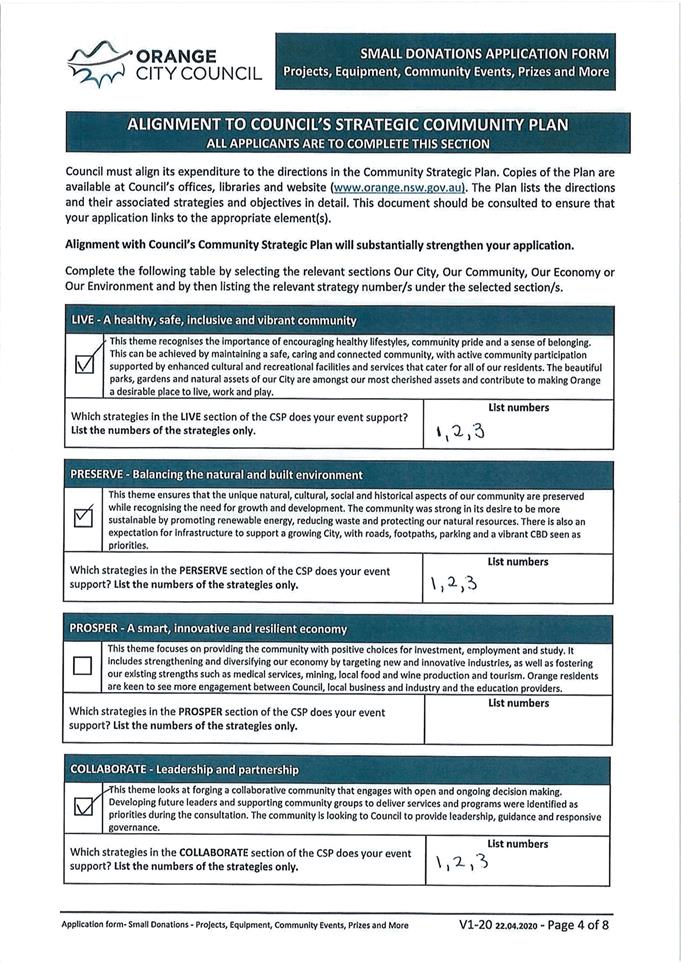

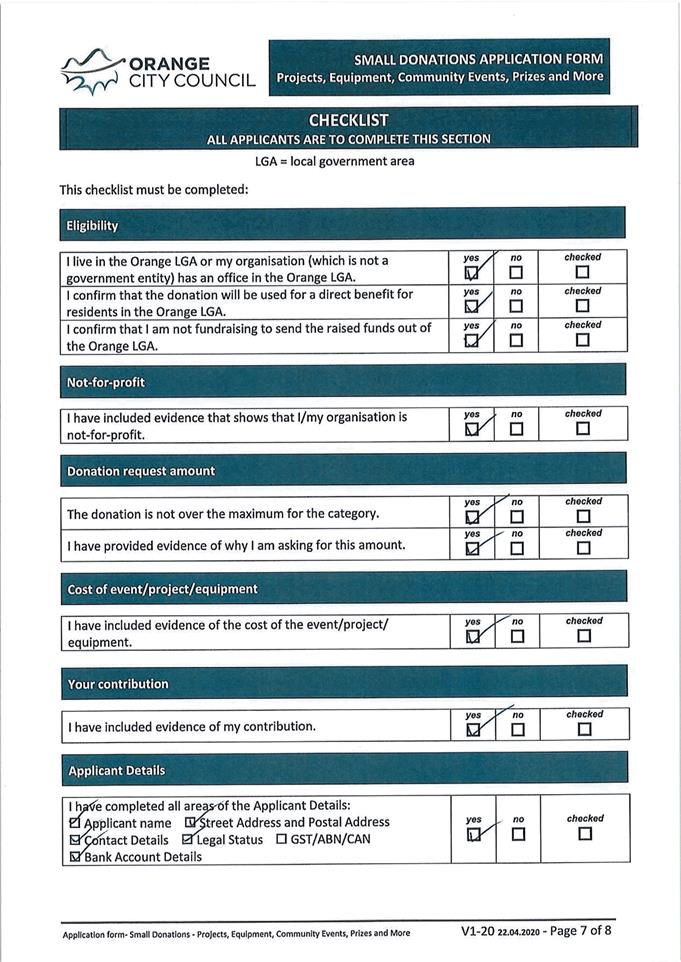
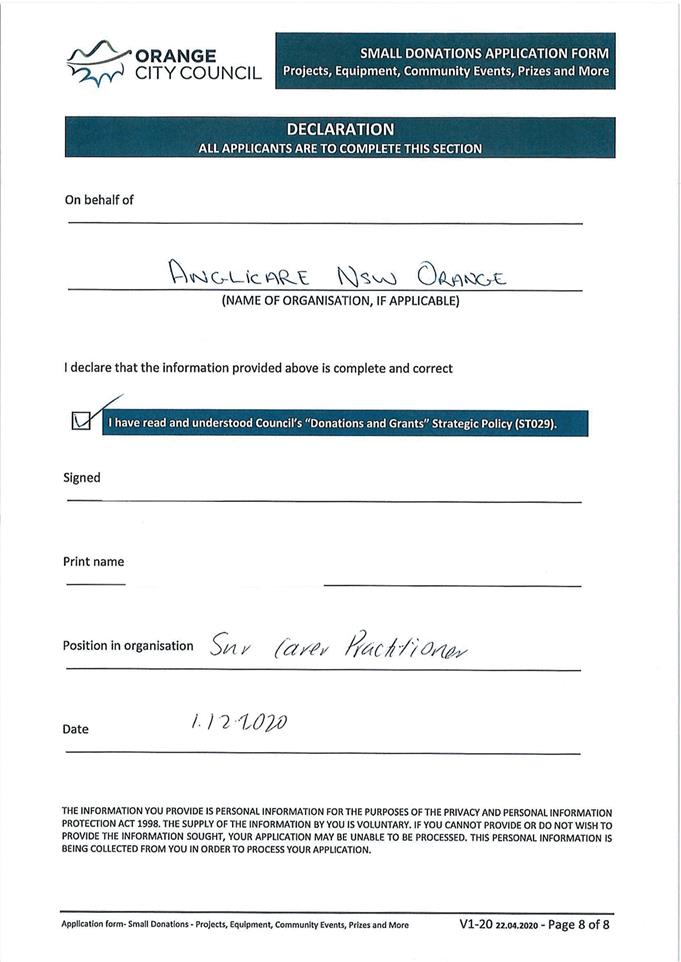

Council Meeting
15 December 2020
Attachment 3 Application
41 - Orange Uniting Church
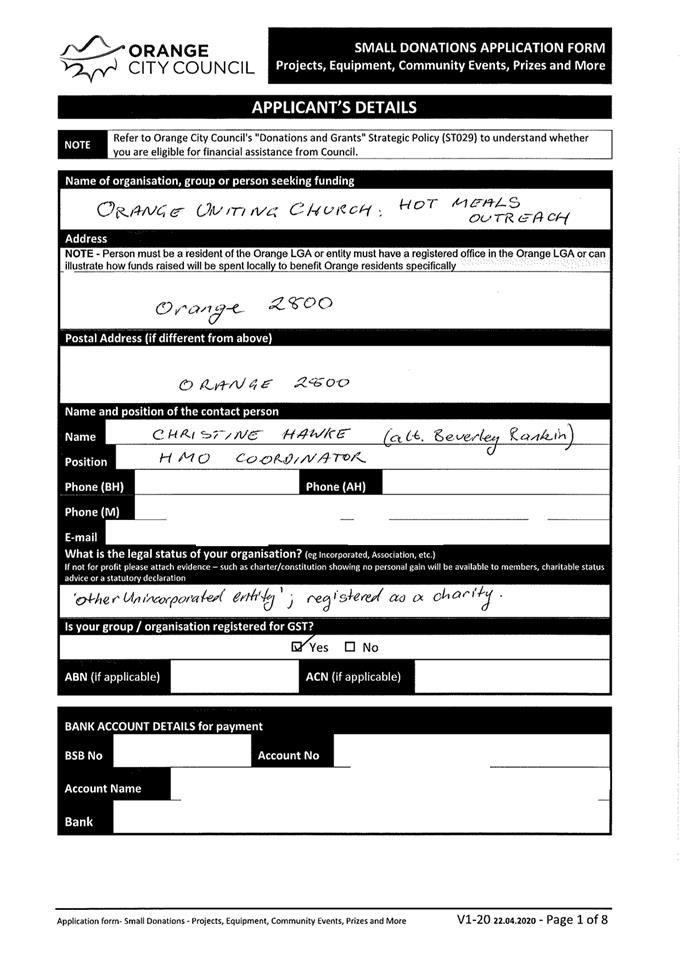
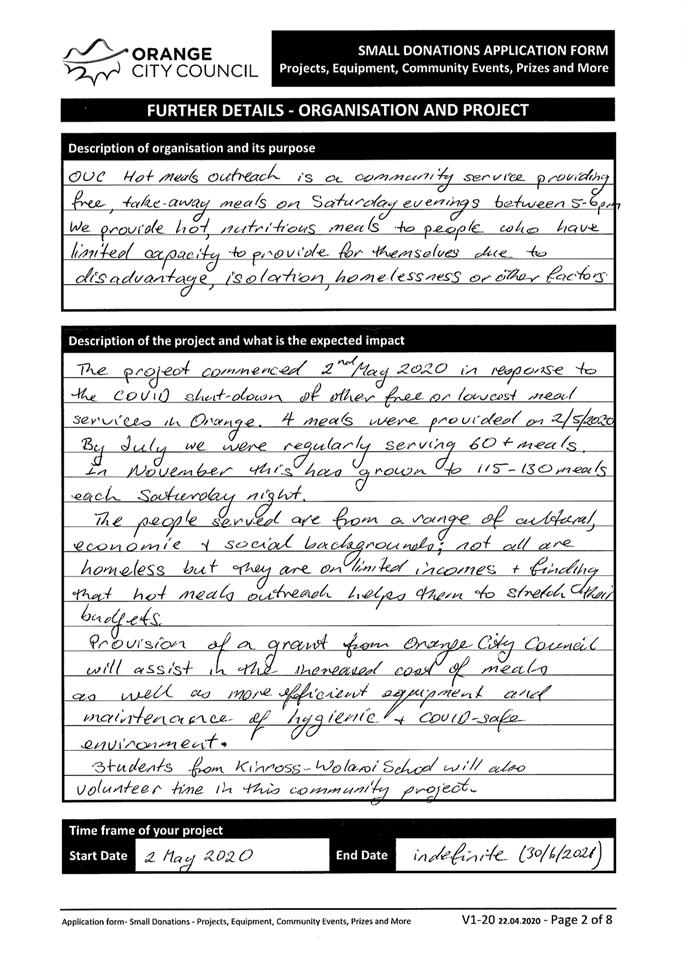
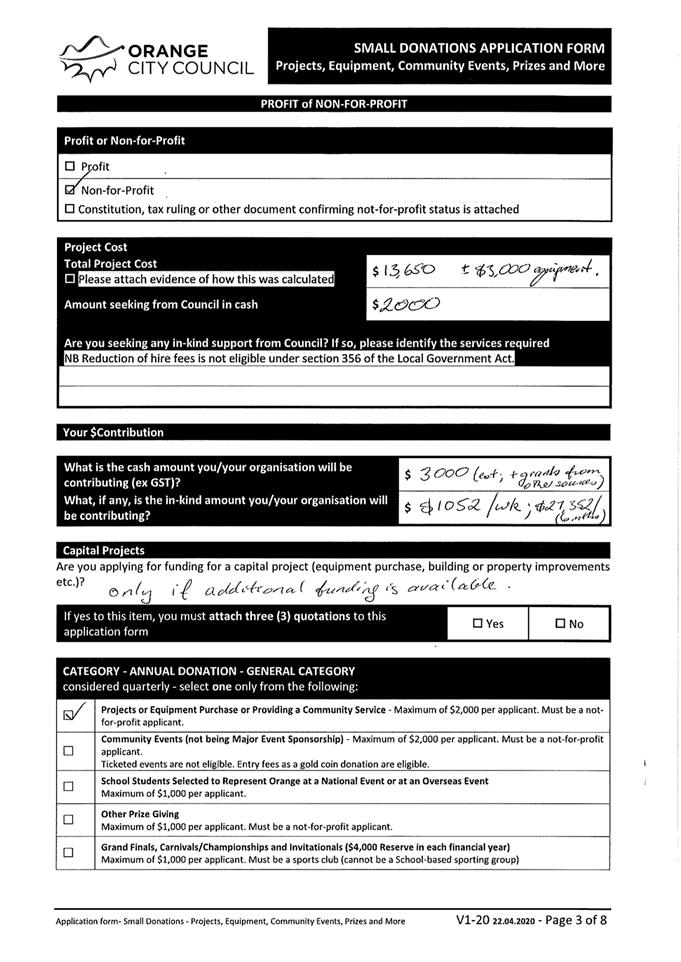
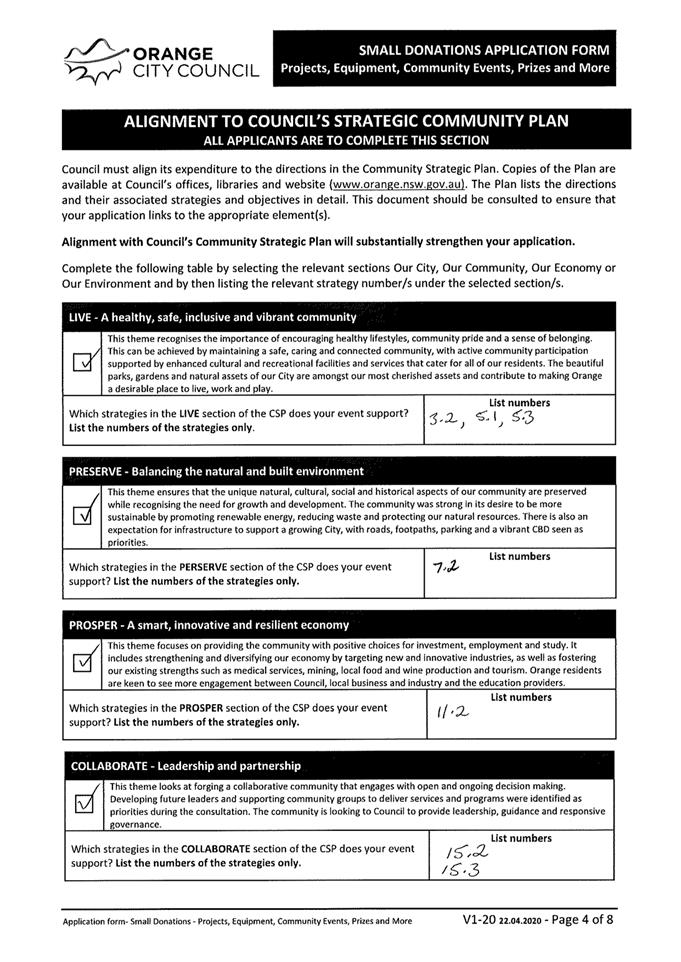
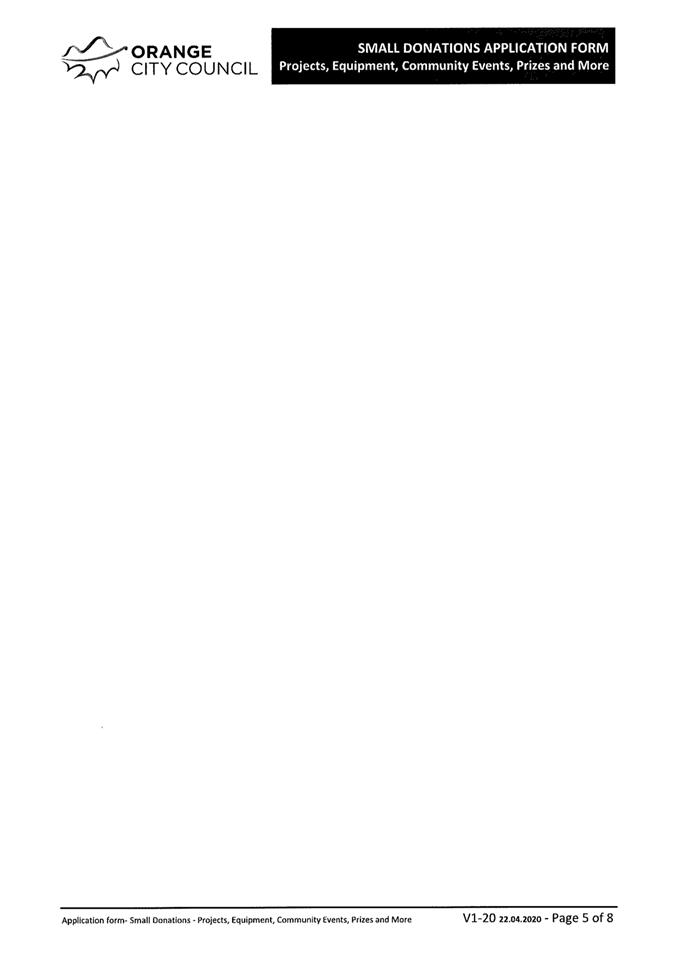

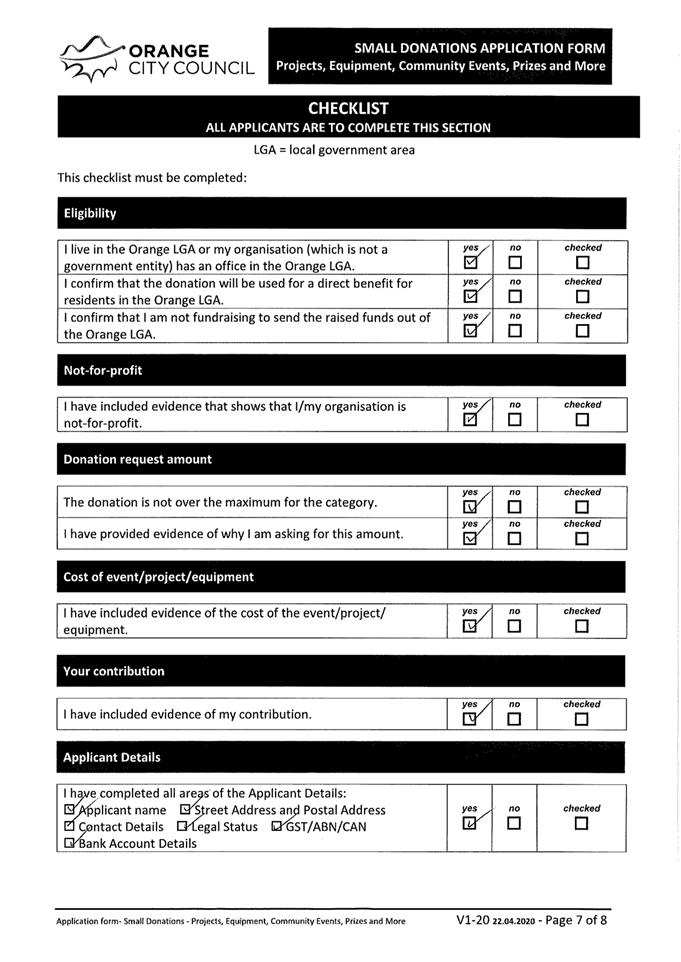
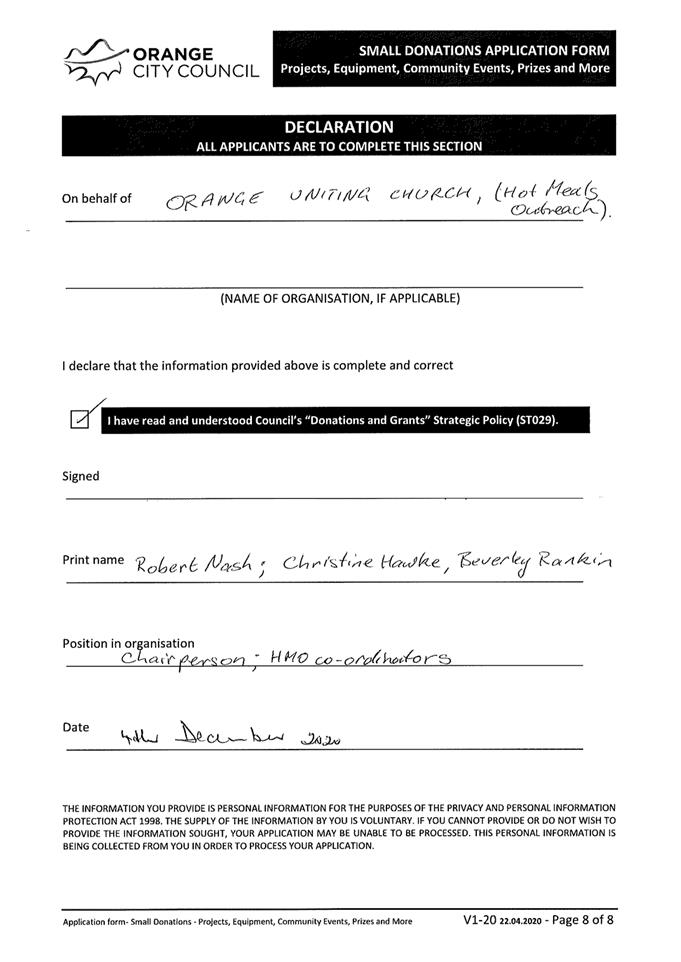
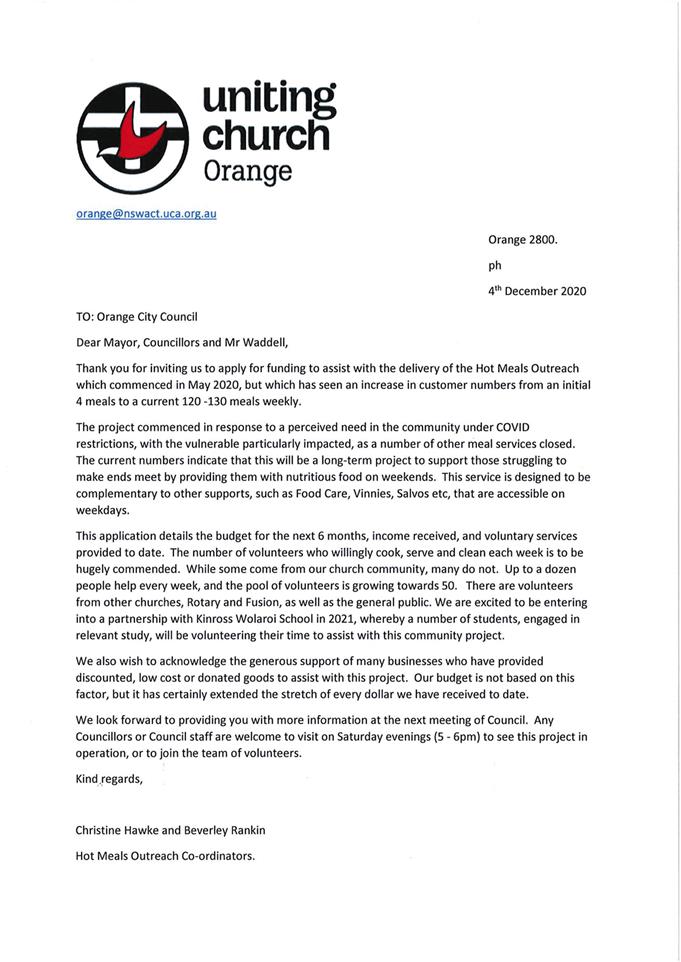
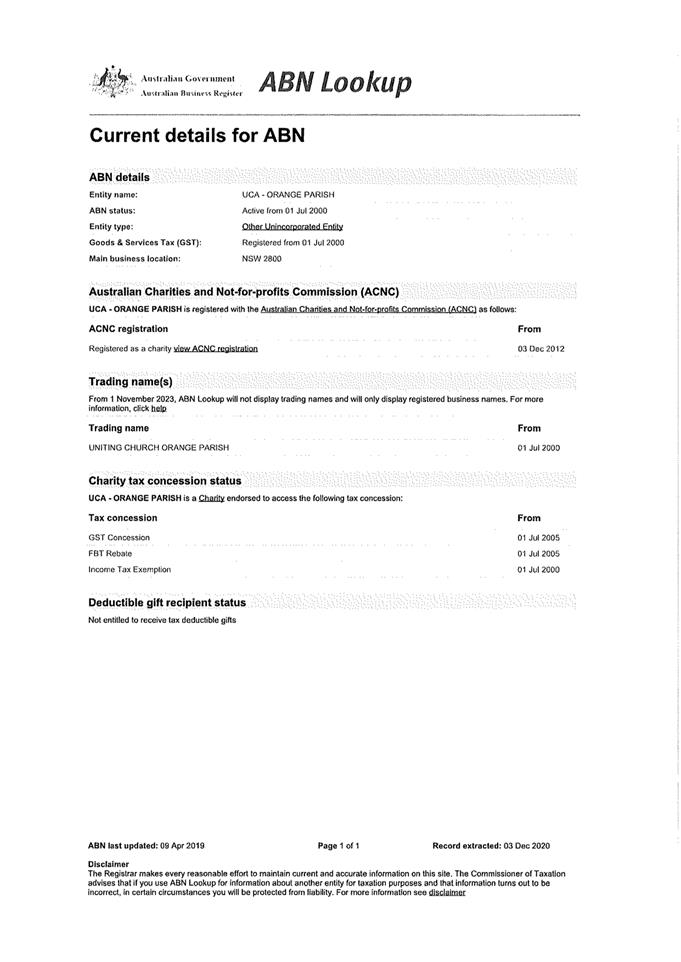
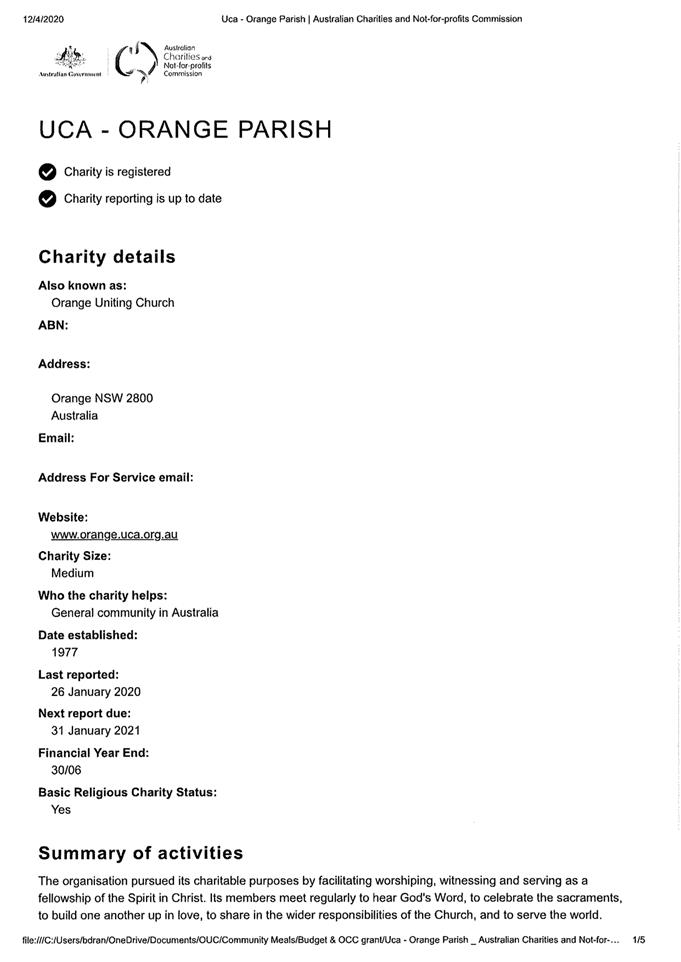

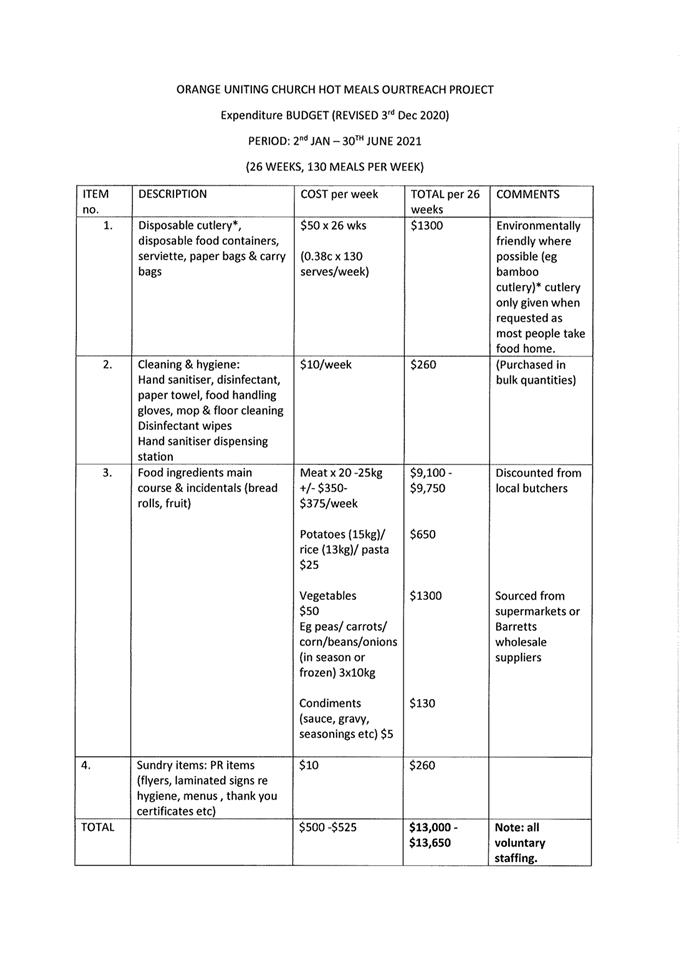

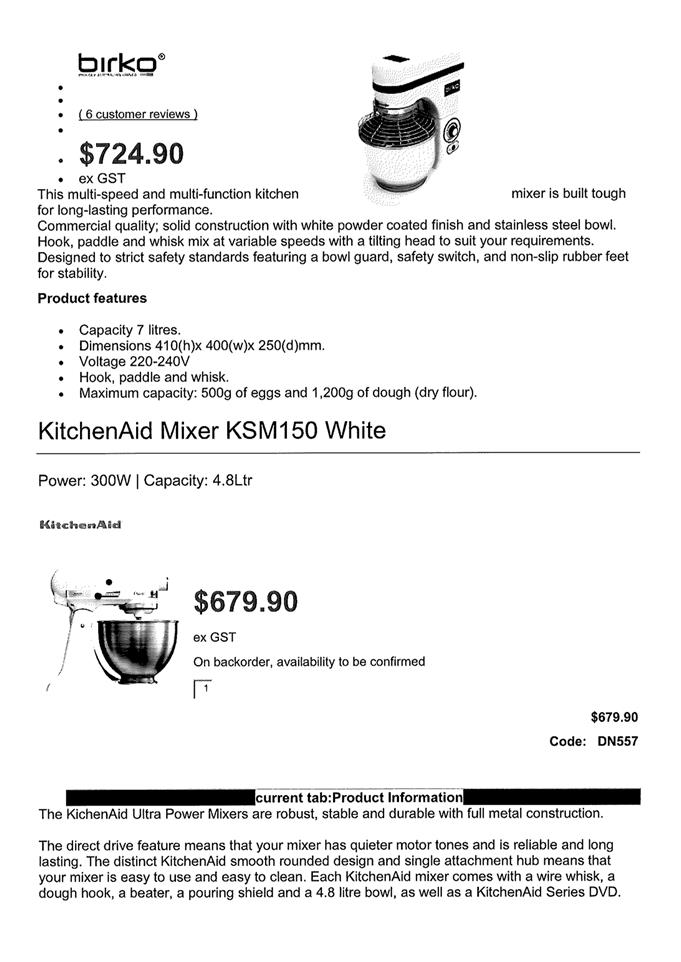
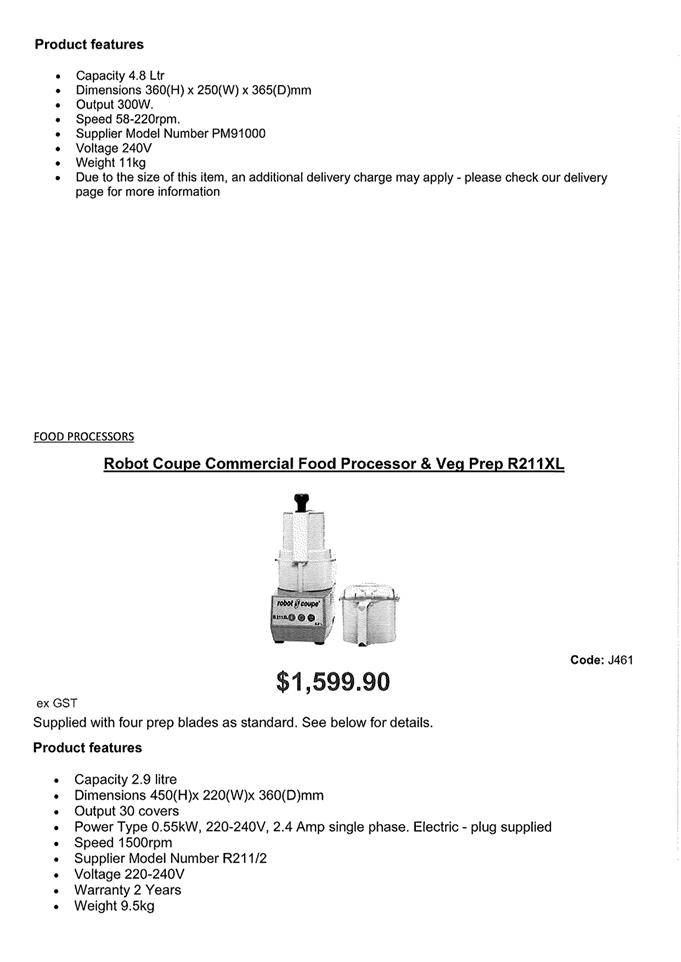

Council Meeting
15 December 2020
Attachment 4 Application
42 - Spring Hill Activities Group
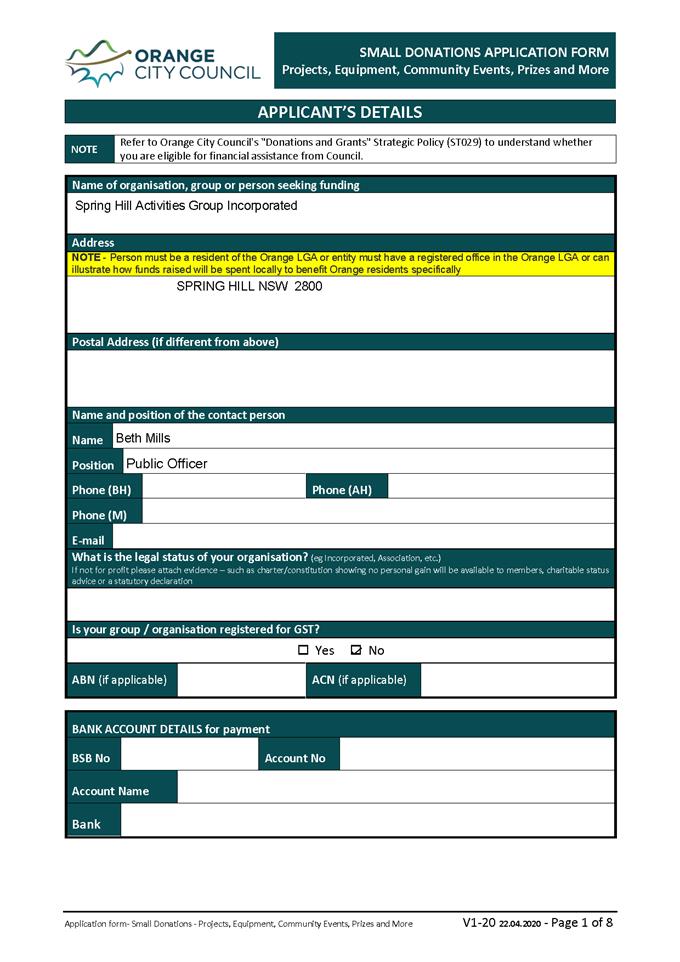


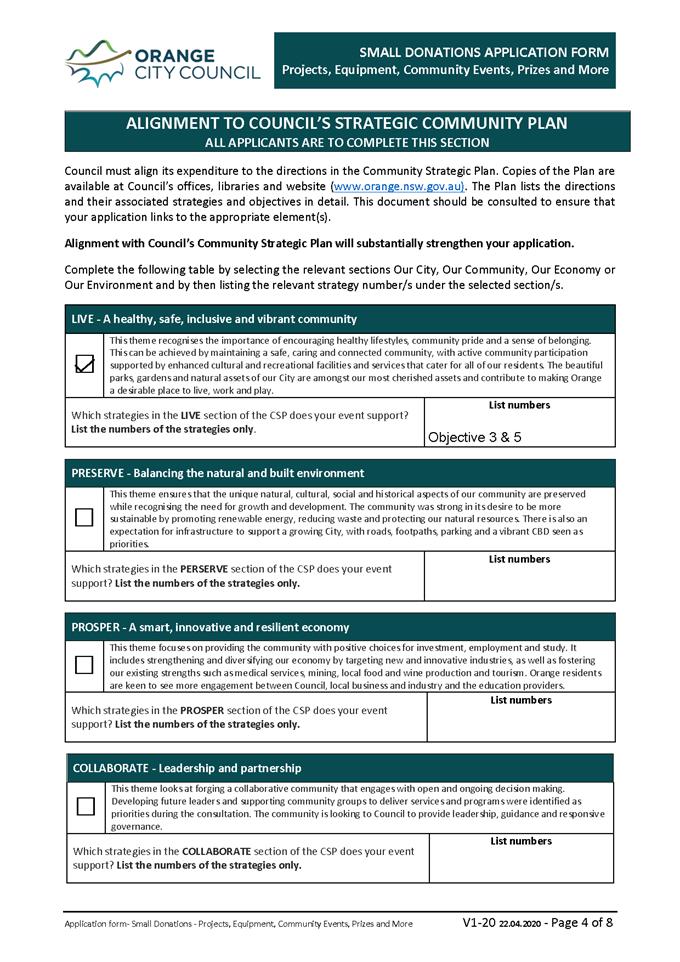

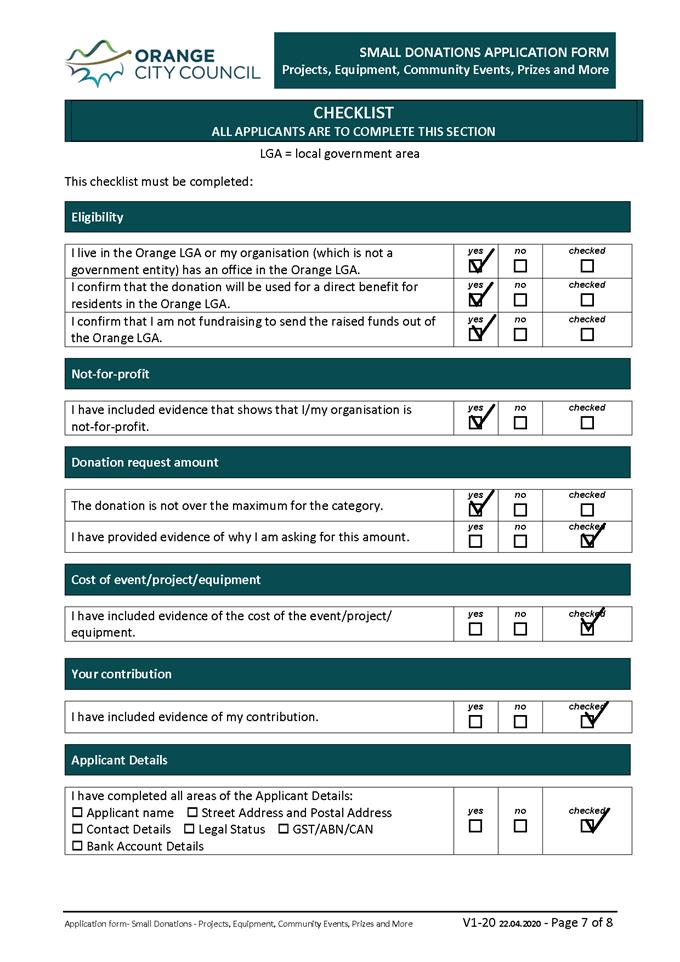
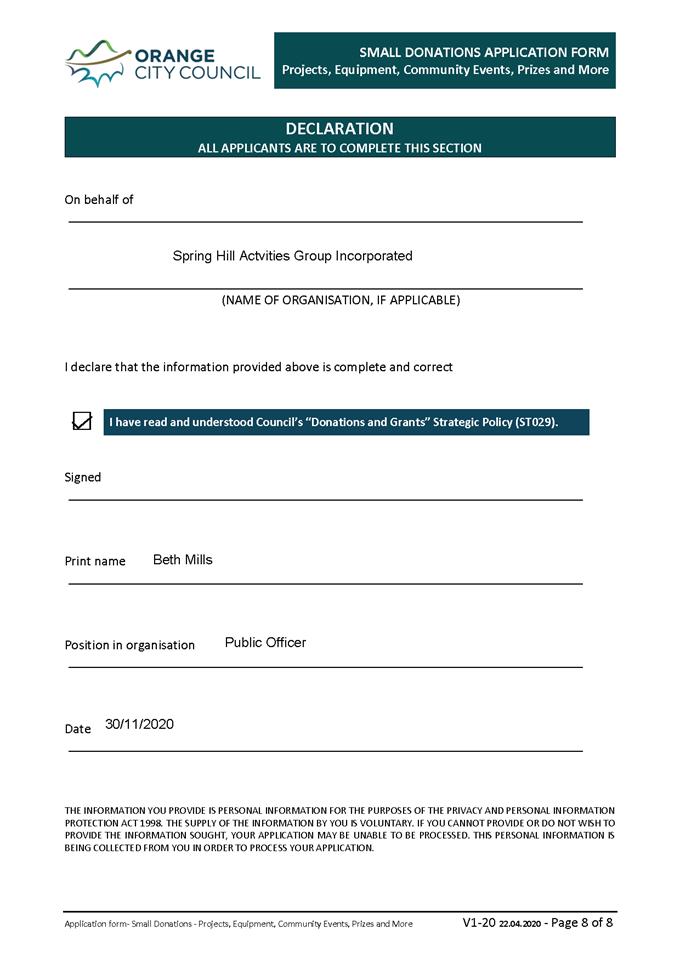
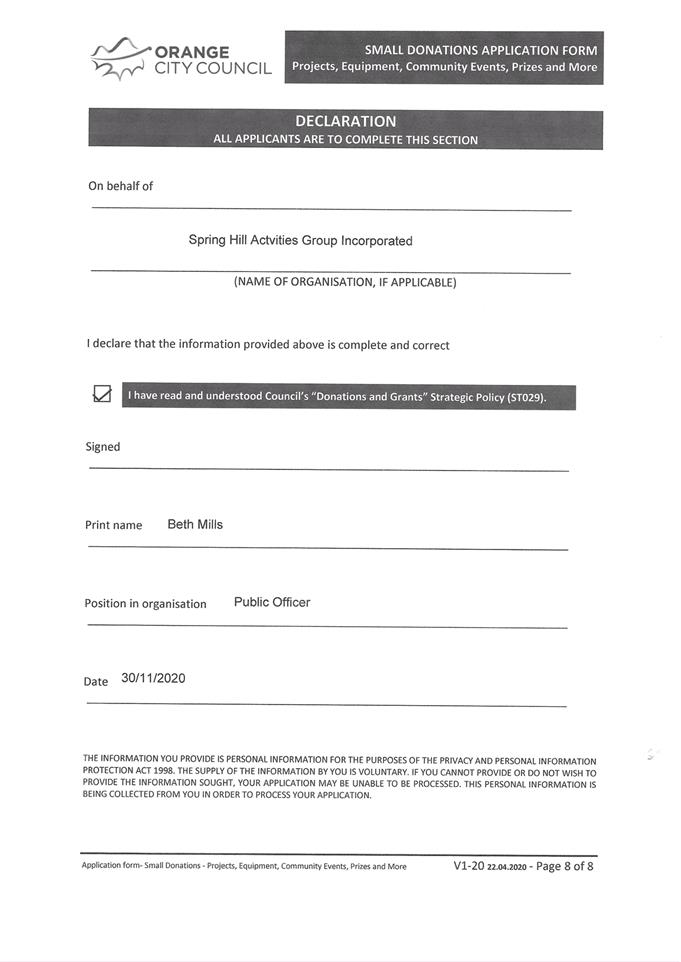
5.10 Request
for support for a Jazz Festival
RECORD
NUMBER: 2020/2414
AUTHOR: Tony
Boland, Business Development Officer
EXECUTIVE Summary
Council has been approached to support the running of an
annual Jazz Festival (attached). The festival will be managed by Jam Orange.
The proposal is to underwrite the event by the sum of $50,000 to cover the
first three years of the event. Due to the nature of the events held as a part
of the festival, the funds are required upfront to secure headline acts at a
reasonable cost.
The proposed program includes two headline acts to be held
in the Civic Theatre and a further 50 one hour mini-concerts in local pubs and
other venues. Half of the mini-concerts will be local musicians.
The proposed date will be the June long weekend each year.
Due to the uncertainty surrounding the potential COVID restrictions that may
exist at June 2021 and the hesitancy from headline acts to commit at the time,
(on this basis) it is proposed that the funds to be paid in this financial year
to allow the event to run in the next financial year.
Link To Delivery/OPerational Plan
The recommendation in this report relates to the
Delivery/Operational Plan strategy “12.2 Prosper - Support innovative
industry sectors”.
Financial Implications
It is proposed that the funds for the event be taken from
the 2020-21 Event funds. The allocation for this line item was $200,000 for
2020-21. Due to the ongoing COVID restrictions affecting the capacity of event
organisers to hold their events, a significant proportion of the funds are
likely to remain unspent as at 30 June 2021. Including the Event Sponsorship
funds approved at the Council meeting held 1 December 2020, the total
commitment for event sponsorship through until the end of March 2021 is
$80,200. It is extremely unlikely the balance of the Event Sponsorship budget
(almost $120,000) could be spent in the remaining three months of the year.
Council has previously approved a similar proposal for the
Black Stump Blues Festival (16/6/2011 – resolution 2011/567). However the
organisers of the Black Stump Blues Festival did not have the necessary soft
infrastructure in place and withdrew the request without Council incurring any
expenditure.
Policy and Governance Implications
Council has previously approved Event Sponsorship
guidelines. This request falls outside the approved guidelines as the volume of
the request is greater than the maximum amount allowable. The proponent
originally requested that the advanced funds be returned each year and
re-applied for. This process is both cumbersome in managing the process and it
does not line up for the following financial year. The proponents estimate is
that it will take up to three years for the event to become fully
self-sufficient. The proponent has suggested that reports, including financial,
be provided to Council on a quarterly basis for the first three years.
As Jam Orange is an insured, not-for-profit (nfp)
organisation, there is no personal profit for the proponent. As a nfp
organisation the payment would not require 28 days public exhibition but could
be exhibited if Council so desired.
|
Recommendation
That the Council underwrite the Jazz Festival to the
value of $50,000 from the 2020-21 Event Sponsorship fund and that the
proponent supply quarterly reports for a period of three years.
|
further considerations
Consideration has been given to the recommendation’s
impact on Council’s service delivery; image and reputation; political;
environmental; health and safety; employees; stakeholders and project
management; and no further implications or risks have been identified.
SUPPORTING INFORMATION
Council has often invested in the underwriting of cultural
events including the recent Day on the Green. Unlike Day on the Green, this
request is from a not-for-profit organisation. Any profit will be reinvested
into the Jazz Festival for future years rather than kept by an individual.
As Councillors would be aware, Council has invested heavily
in the visitor attraction market and also the development of cultural
activities, particularly on the music front with the recent Future Tunes being
an example. The jazz festival is to be a high-quality, non-traditional jazz
band festival. The event will have appeal to residents and visitors alike.
Additionally, a broader range of events not under the ‘food and
wine’ banner will assist in resident attraction and retention as not
everyone considers food or wine events as attractive to them as individuals. A
greater variation in events leads to a wider potential audience, in turn
generating additional visitation that would not have otherwise occurred.
Unlike most music festivals, there is the opportunity for
local musicians to play and be paid as part of the festival. The proponent is
proposing that 50% of the performances at the festival will be local musicians.
This will significantly support an industry that has particularly suffered
through COVID. Further related employment will arise through sound technicians
and ancillary support, also hard hit by COVID restrictions.
The proponent originally offered an on-going profit-share
arrangement where a share of any profit would come back to Council. This left
little room for contingency funding and becomes very complicated in acquitting
the funds. It also requires an annual process where funds would be outstanding
from Year 1 when the application for Event Sponsorship is lodged for Year 2.
Under this current proposal, funds are paid upfront from a budget that is
likely to be underspent this year. Managing a quarterly reporting process will
be less time consuming for staff, reducing overheads without limiting risk
management practices.
The proposal program will consist of the Civic Theatre and
six other locations within walking distance of the Civic Theatre. There will be
a headline act on each of Friday and Saturday nights. The small venue program
will consist of six venues with professional musicians playing plus a free
amateur stage in an additional venue. All sessions are one hour long, starting
on the alternate hour will be as follows:
Friday – 5pm, 6pm, 7pm, 8pm,
9pm (13 sessions)
Saturday – 1pm, 2pm, 3pm,
4pm, 5pm, 6pm, 7pm, 8pm, 9pm, 10pm (30 sessions)
Sunday – 1pm, 2pm, 3pm, 4pm,
5pm (13 sessions)
As a condition of funding, the proponent will be asked to
report on a quarterly basis. The report will be focusing on the financial
aspects of the festival and the activities undertaken since the last report.
The proponent will also be expected to collect non-personal de-identified data
on the attendees to the event. This data would include the number of attendees
and their postcode of residence so that Council can monitor year on year the
growth of the event and the growth in visitors.
Attachments
1 Orange
Jazz Festival Proposal, IC20/26156⇩
2 Orange
Jazz Festival Budget, IC20/26157⇩
Council
Meeting
15 December 2020
Attachment 1 Orange
Jazz Festival Proposal
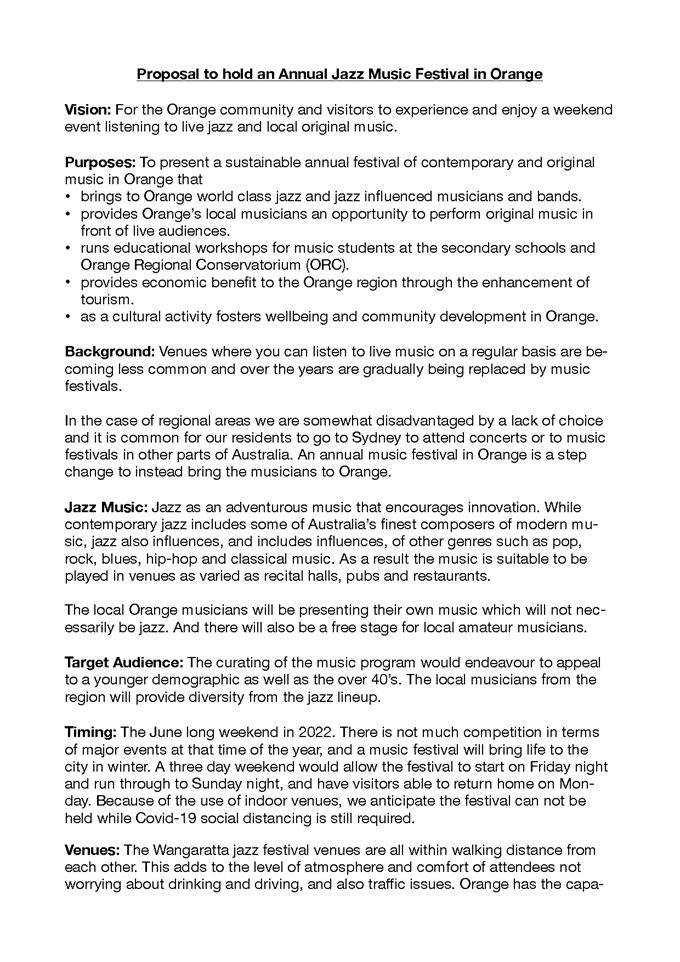
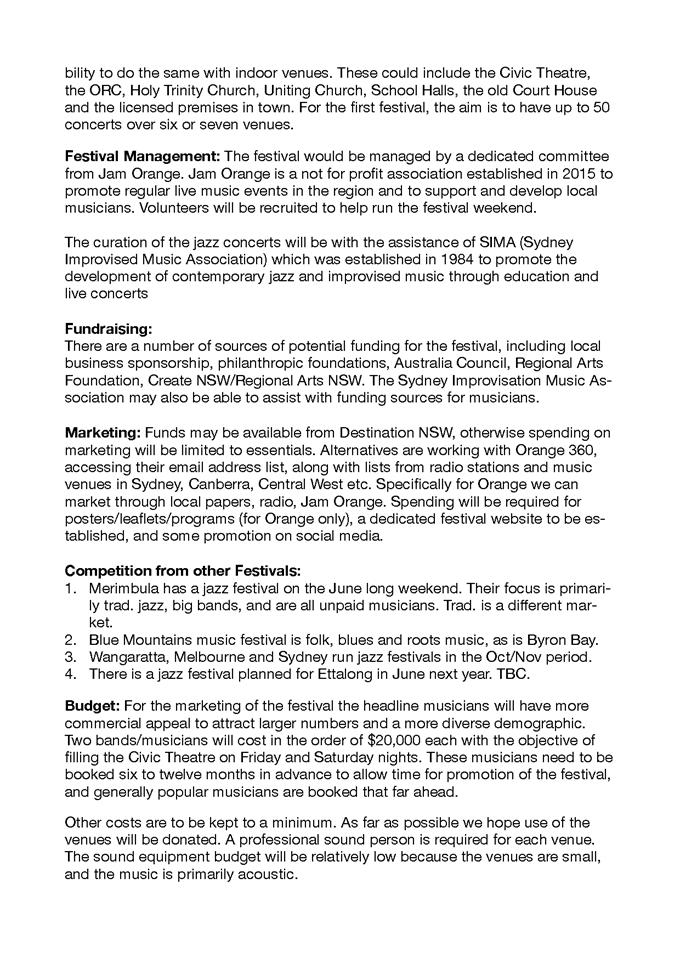
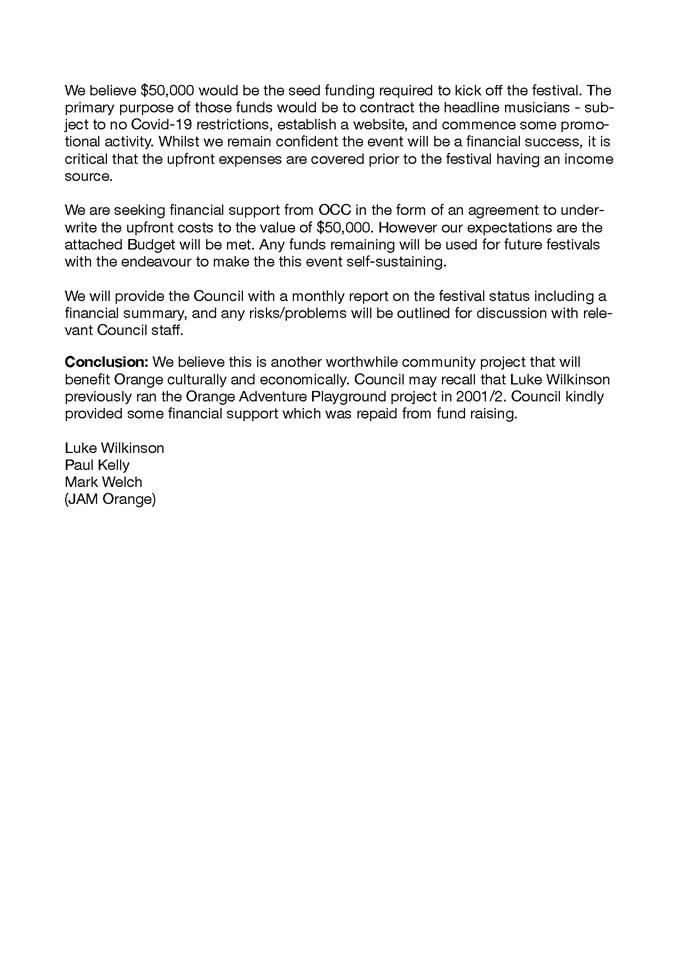
Council Meeting
15 December 2020
Attachment 2 Orange
Jazz Festival Budget
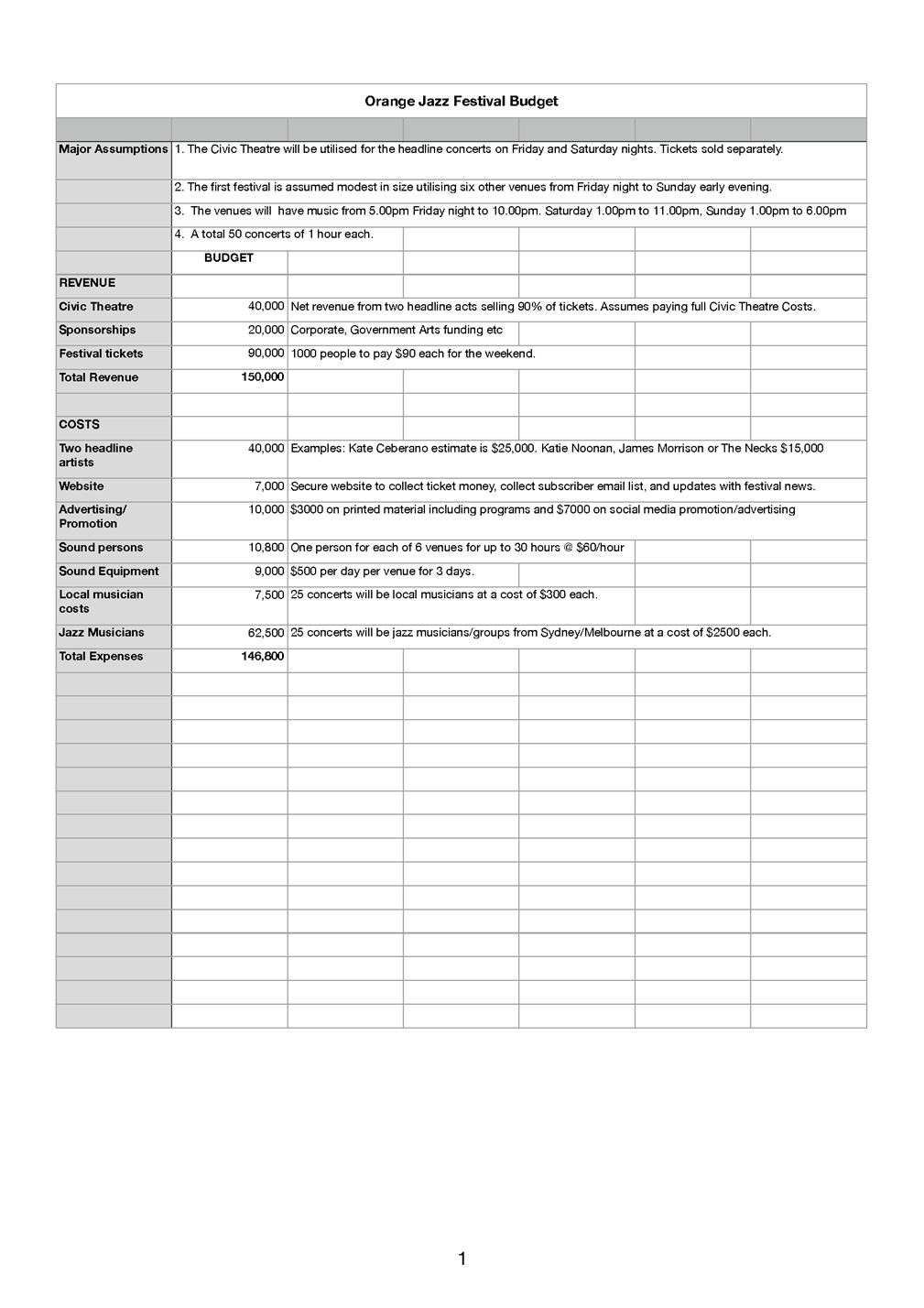
5.11 Event
Application - Ace Attractions - Orange Fun Fair
RECORD NUMBER: 2020/2555
AUTHOR: Sharon
D'Elboux, Manager Business Development
EXECUTIVE Summary
At its meeting of 1 September 2020, Council resolved
(20/290) to temporarily modify Strategic Policy - ST142 - Events on Council
Owned/Managed Land so that events hosted by external event organisers (i.e.
from outside the Orange Region) or contentious local events to be determined by
a report submitted to Council while current COVID-19 restrictions are in place.
Council has received an event application by Ace Attractions
as their second request to host an event in February 2021. This business is
registered outside of the Orange Local Government Area. The proposed event is
titled “Orange Fun Fair” for the 6 -7 and 13 -14 February 2021 at
the Orange Showground.
Link To Delivery/OPerational Plan
The recommendation in this report relates to the
Delivery/Operational Plan strategy “11.2 Prosper - Develop and attract a
variety of events, festivals, venues and activities for locals and visitors,
ensuring accessibility for all”.
Financial Implications
Council will not receive hire fees if the event does not go
ahead. This will have negligible impact on the overall budget.
Policy and Governance Implications
Council's Strategic Policy - ST142 - Events on Council Owned
and/or Managed Land Policy and its related Event Application documents are used
to assess applications for Event approval. These approvals are usually made by
staff, however with the additional heightened concern due to COVID-19, the
Councillors are being asked by ratepayers to not approve events.
A temporary change to Council’s Strategic Policy
– ST142 was endorsed at Councils 1 September meeting. Council is now
required to see external event applications to determine their approval. This
modification is only expected to last while Public Health Orders remain in
place regarding attendance at events.
|
Recommendation
That
Council approve the application for Orange Fun fair hosted by Ace Attractions,
at the Orange Showground on 6 & 7 and 13 & 14 February 2021 due to
easing of COVID restrictions.
|
further considerations
|
Service Delivery
|
Temporary modification for
Strategic Policy - ST142 - Events on Council Owned/Managed Land during the
COVID-19 restrictions is now in place.
|
|
|
Image
and Reputation
|
There has been some pressure on
Council from social media and other sources to not have events that allow
people from other locations to attend. This pressure is more prevalent in
COVID-19 infection surges.
|
|
|
Political
|
As the Councillors are able to vary
policy in regards to events and staff are not, the temporary modification to
the Strategic Policy - ST142 - Events on Council Owned/Managed Land will
allow Councillors to make a decision based on the prevailing COVID-19
infection rates at the time.
|
|
|
Health and Safety
|
All events are analysed for risk
measures and in particular a COVID Action Plan.
|
|
SUPPORTING INFORMATION
In determining approval for an event during COVID
restrictions, staff must first apply the Public Health Order that exists at the
time. This Health Order is applied to all events, whether held by local
organisers or not.
Information regarding events under the NSW Public Health
(COVID-19 Restrictions on Gathering and Movement) Order (No 7) 2020 is
summarised below, including a definition of the permissible venues under the
Major Reaction Facilities (outdoor):
1. Premises listed in the schedule 1 of
the Public Health Order (included are Major recreation venues & non-food
markets) are to develop and comply with a COVID safety plan.
2. Major recreation facilities
(outdoor) must ensure the maximum number of persons on premises is the total
of—
a. 100% of the fixed seating capacity of
the recreation facility (major), and
b. the number of persons equal to 1
person per 2 square metres of space of any unfixed seating areas of the
recreation facility (major)
Definition
Major Recreation facilities: means a building or place used predominately
for large-scale sporting or recreation activities that are attended by large
number of people whether regularly or periodically and includes theme parks,
sports stadiums, showgrounds, racecourses and motor racing tracks.
Orange Fun Fair is anticipated to attract up to 500 people. It
involves ten mechanical rides, show games, one show bag stall and food outlets.
The Orange Showground is a major recreation facility as
identified under the Public Health (COVID-19 Restrictions on Gathering and
Movement) Order (No 7) 2020.
As listed in Ace Attractions COVID-19 Safety Plan, dated
August 2020,
“Entire event will be fenced with single entry and single exit point.
These will be manned by staff. A COVID QR Code and record keeping system will
also implemented at the entry point.”
At Councils 1 September meeting, a proposal from Ace
Attractions Pty Ltd was reviewed. They have applied for a second occasion
in light of the COVID restrictions easing.
Attachments
1 Redacted
- Event Application form & Covid Safety Plan - Orange Showground - Orange
Fun Fair - Ace Attractions - 6,7,13, 14 February 2021, D20/75082⇩
Council
Meeting
15 December 2020
Attachment 1 Redacted
- Event Application form & Covid Safety Plan - Orange Showground - Orange
Fun Fair - Ace Attractions - 6,7,13, 14 February 2021

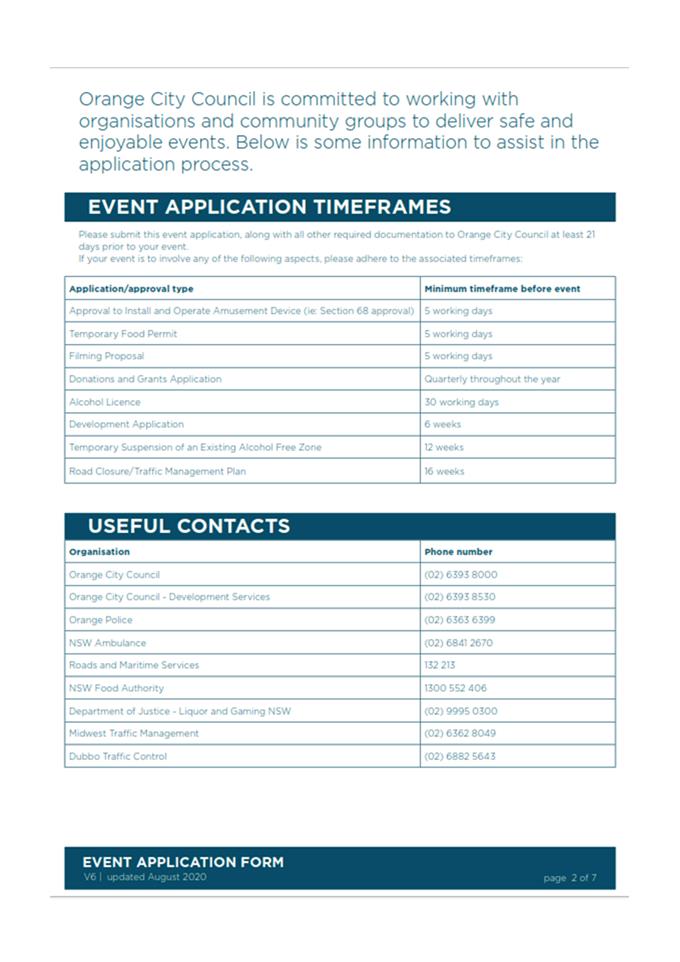
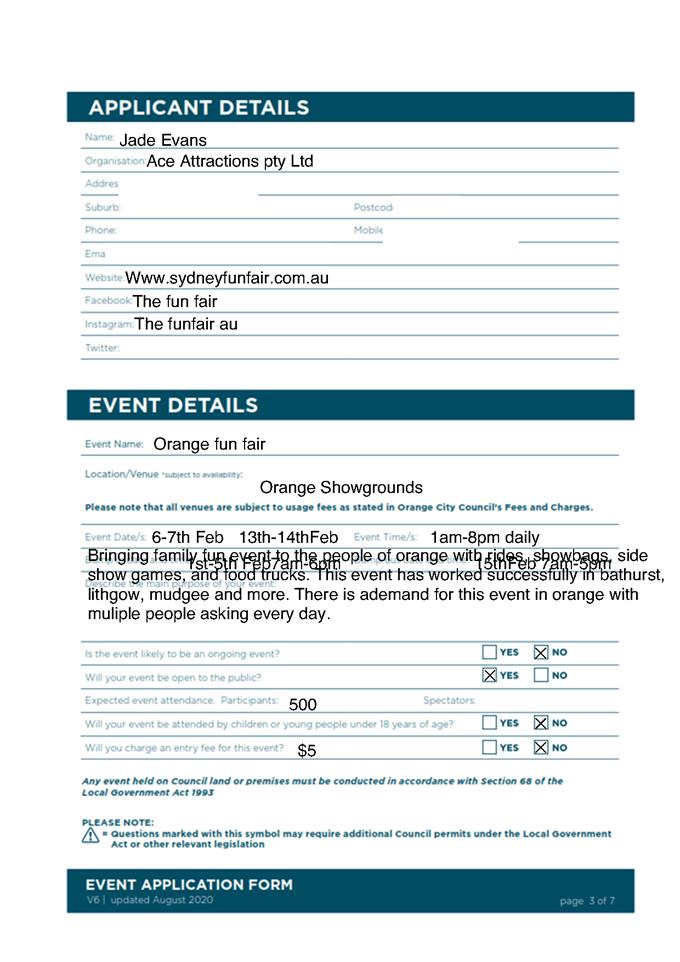

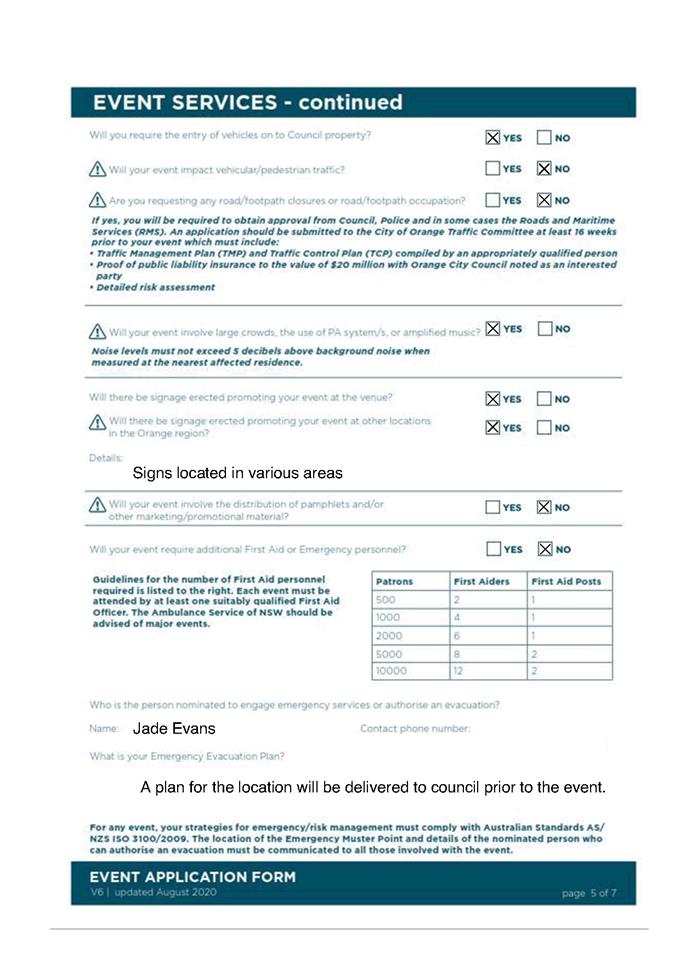

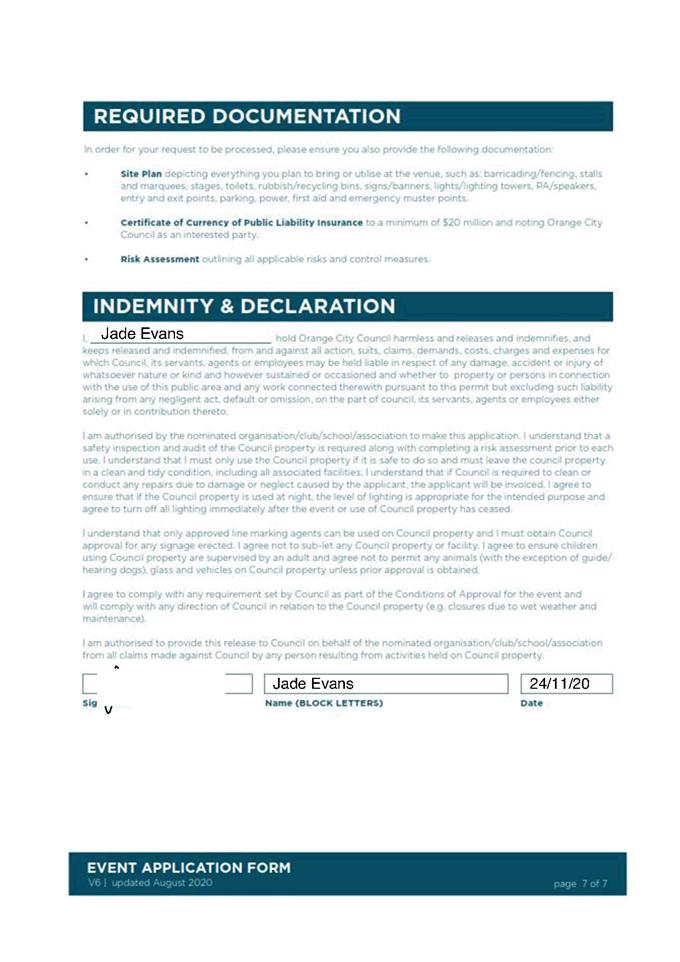












5.12 Job
Creation Funding for Day Care Educators
RECORD
NUMBER: 2020/2431
AUTHOR: Tony
Boland, Business Development Officer
EXECUTIVE Summary
Council approved a Job Creation Strategy in 2014 in response
to the closure of Electrolux. The purpose of the strategy was to fund
innovative ways to stimulate the economy and create employment. A figure of
$100,000 per year was set aside for 10 years.
Staff from the media section and business development
section have been working with staff from the Council’s Family Day Care
Program to develop a marketing program to recruit educators. This marketing
program has had success in attracting interest from people becoming educators
and starting their own business in child care. The success of the program has
also highlighted some barriers, particularly financial, to achieving this and
the Job Creation Fund is an ideal vehicle to overcome these obstacles and start
supplying an underserviced industry need.
Link To Delivery/OPerational Plan
The recommendation in this report relates to the
Delivery/Operational Plan strategy “12.2 Prosper - Support innovative
industry sectors”.
Financial Implications
The funds are included in the annual budget. The program is
unlikely to exceed $20,000 in either financial year.
Policy and Governance Implications
If approved by Council the funds would be considered a
Section 356 contribution to a private individual and would require an
exhibition period. Due to the timing it would be suggested that the exhibition
period be 6 weeks instead of 4 to allow for the Christmas and New Year break.
|
Recommendation
That Council resolves to:
1 Approve
the use of funds from the Job Creation budget for a loans program under the
Day Care Educators concept.
2 Place
the details on public exhibition for a period of 6 weeks.
3 Subject to
a report of satisfactory outcomes by Manager Community Services, approve
the program to continue to operate through the 2021/2022 financial year.
|
further considerations
Consideration has been given to the recommendation’s
impact on Council’s service delivery; image and reputation; political;
environmental; health and safety; employees; stakeholders and project
management; and no further implications or risks have been identified.
SUPPORTING INFORMATION
Family Day Care is an important part of the Orange economy as
it not only provides a self-employment business platform for the educator but
also allows 137 additional people into the workforce by providing care for
their children. As the supporting documentation shows there is a waiting list
for care which indicates there are latent skills in the labour market that
could be accessed by industry if additional care places are provided.
The attached proposal from the staff involved with Family Day
Care is the result of ongoing co-operative activity between the media, business
development and Family Day Care section within Council. The proposal is based
on a program formerly run by the State Government whereby the Educator is given
a loan to set up their operation and the debt is considered wiped after 12
months care provision for Orange Family Day Care. If they leave before the 12
months are up then the debt is still owed and must be repaid to Council.
While some educators may not require the financial assistance
it is prudent to have it available for those people who would otherwise be
unable to participate. Council staff will provide some training and mentoring
assistance and the educators can access additional business assistance from
BizHQ, but the financial hurdle is the hardest to overcome. Building changes
will likely cost more than $2,000 but even small items like car seats, toys,
insurance etc. all add up very quickly.
While the Federal Government does offer assistance to start
your own business, the proposed educators are not eligible for assistance. If
approved by Council, this fund will allow up to 20 people to start their own
business over the coming calendar year. Even 10 people starting their own business
would be a significant injection of income into the pockets of the educators
but it would also allow around 40 full time equivalent positions to be employed
in the economy. Literally a maximum $20,000 investment can create 50 full time
equivalent positions. Just as importantly, it opens up a range of skills and
labour for an economy that is finding it difficult to keep up with demand.
There will undoubtedly be concern that people may access the
grant and walk away from the Family Day Care program (free money). Prior to
receiving the money the future educator will have to sign a legally binding
contract that ensures they repay the money. As the future educator will have
had extensive interaction with Family Day Care staff prior to a loan being made
it is likely that potential problems can be identified before the issues arise.
Attachments
1 Family
Day Care Educator Assistance under Job creation funds, D20/74636⇩
Council
Meeting
15 December 2020
Attachment 1 Family
Day Care Educator Assistance under Job creation funds

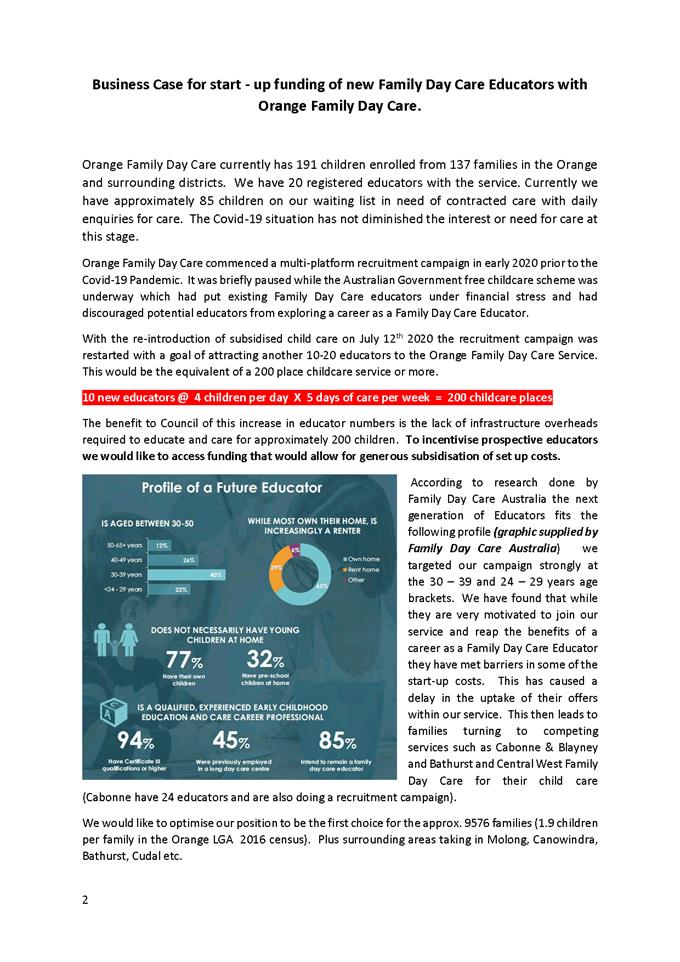

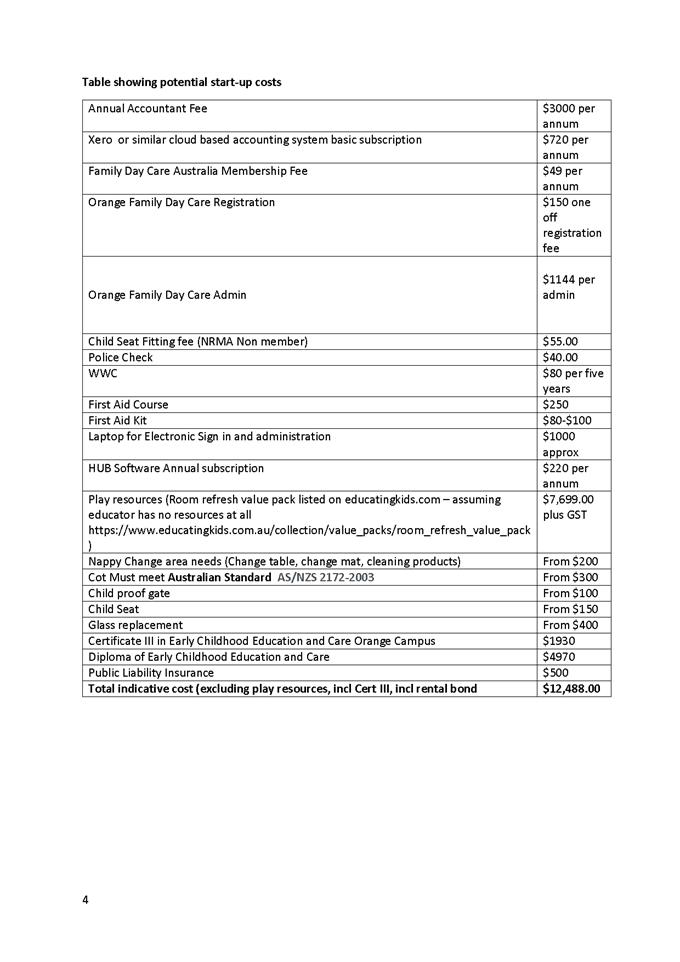
5.13 40
km/h speed limit within the CBD
RECORD
NUMBER: 2020/2460
AUTHOR: Jason
Theakstone, Manager Engineering Services
EXECUTIVE Summary
Council, at its Infrastructure Policy Committee meeting held
on 6 October 2020 resolved to seek the support of the Orange Business Chamber
(OBC) prior to requesting TfNSW to consider lowering the speed limit within the
CBD to 40km/h. The Orange Business Chamber has provided written support for the
speed reduction.
Link To Delivery/OPerational Plan
The recommendation in this report relates to the
Delivery/Operational Plan strategy “9.1 Preserve - Construct and maintain
a road network meets the community’s transport and infrastructure
needs”.
Financial Implications
Nil
Policy and Governance Implications
Nil
|
Recommendation
That Council ask TfNSW to consider lowering the speed
limit within the CBD (Hill to Peisley Streets, Byng to Kite Streets
(inclusive)).
|
further considerations
Consideration has been given to the recommendation’s
impact on Council’s service delivery; image and reputation; political;
environmental; health and safety; employees; stakeholders and project
management; and no further implications or risks have been identified.
SUPPORTING INFORMATION
Council, at its Infrastructure Policy
Committee meeting held on 6 October 2020, resolved to seek the support of the
Orange Business Chamber (OBC) prior to requesting TfNSW to consider lowering
the speed limit within the CBD to 40km/h. The Orange Business Chamber has
provided written support for the speed reduction.
The OBC support is based on pedestrian safety and making the
CBD more walkable. The OBC believe the speed reduction will increase the foot
traffic within the CBD and stimulate the local economy.
The reduction of the speed limit to 40km/h is an integral
part of the FutureCity plan and it is recommended that Council ask TfNSW to
consider lowering the speed limit within the CBD to 40km/h.
The 40km/h limit was included in the AJ and C report that
was exhibited and adopted by Council in September 2020.
In 2018 the then RMS developed a strategic traffic model for
Orange. The following average AM and PM peak hour speeds within the recommended
40km/h area are shown in the model,
|
Street
|
AM (km/h)
|
PM (km/h)
|
|
Summer Street (Westbound)
|
47
|
45
|
|
Summer Street (Eastbound)
|
45
|
48
|
|
Byng Street (Westbound)
|
39
|
41
|
|
Byng Street (Eastbound)
|
36
|
44
|
|
Kite Street (Westbound)
|
40
|
41
|
|
Kite Street (Eastbound)
|
36
|
45
|
|
Hill Street (Northbound)
|
41
|
37
|
|
Hill Street (Southbound)
|
42
|
41
|
|
Sale Street (Northbound)
|
42
|
43
|
|
Sale Street (Southbound)
|
38
|
47
|
|
Anson Street (Northbound)
|
46
|
39
|
|
Anson Street (Southbound)
|
45
|
44
|
|
Lords Place (Northbound)
|
40
|
40
|
|
Lords Place (Southbound)
|
36
|
45
|
|
Peisley Street (Northbound)
|
42
|
37
|
|
Peisley Street (Southbound)
|
39
|
43
|
The average modelled AM speed within the recommended 40km/h
area is 40.87km/h and the average modelled PM speed within the recommended 40
km/h speed is 42.5 km/h.
As well as seeking feedback for the Orange Business Chamber
a Yoursay engagement was also carried out.
Of the more than 1100 people who visited the site during the
month it was active, 20 per cent (198 people) participated in completing the
survey or leaving a comment.
Regarding the proposed 40 km/h speed limit change in the
CBD, 54 per cent of survey respondents opposed the change, 40 per cent
supported the change and six per cent were unsure.
There were 19 comments made regarding the proposal, of the
comments which supported the change, there was a clear theme.
Those in favour of the speed reduction agreed it would create
a safer and more accessible CBD. Some respondents went further and suggested
the CBD should be free of cars and a pedestrian only zone with parking on the
outskirts.
The comments against the proposal covered various themes.
The main point made was a reduction in speed would slow traffic in the CBD,
this was considered a negative outcome.
Others suggested drivers can barely reach 40km/h hour in the
CBD currently so a reduction in official speed limit was a moot point. However
commenters suggested outside of normal business hours drivers should be allowed
to drive faster as there was less of a risk of a collision with a
pedestrian.
Many of the comments suggested there were alternative means
to make the CBD safer for pedestrians. Placing a ban on all trucks and
semi-trailers through the CBD was brought up several times. People had several
complaints about these large vehicles not using the alternate routes around the
city.
People suggested the current 50km/h speed limit was
antiquated and the limit should increase, pedestrians should be forced to use
only traffic lights as a means to cross the road and a fence installed down the
main median strip. There were suggestions pedestrians were at fault for
accidents due to lack of attention paid to the road and oncoming traffic.
There were opinions that a reduction in speed limit would
increase frustration in drivers, perhaps contributing to more crashes.
Ultimately there were suggestions reducing the speed limit
was a cheaper alternative to reducing crashes rather than fixing existing
infrastructure, such as installing more bike lanes, wider footpaths, and safer
crossings.
The Yoursay report is attached.
Attachments
1 Orange
Business Chamber - Support for 40kph speed CBD, D20/74675⇩
2 Yoursay
Making The CBD More Walkable, D20/75588⇩
Council
Meeting
15 December 2020
Attachment 1 Orange
Business Chamber - Support for 40kph speed CBD
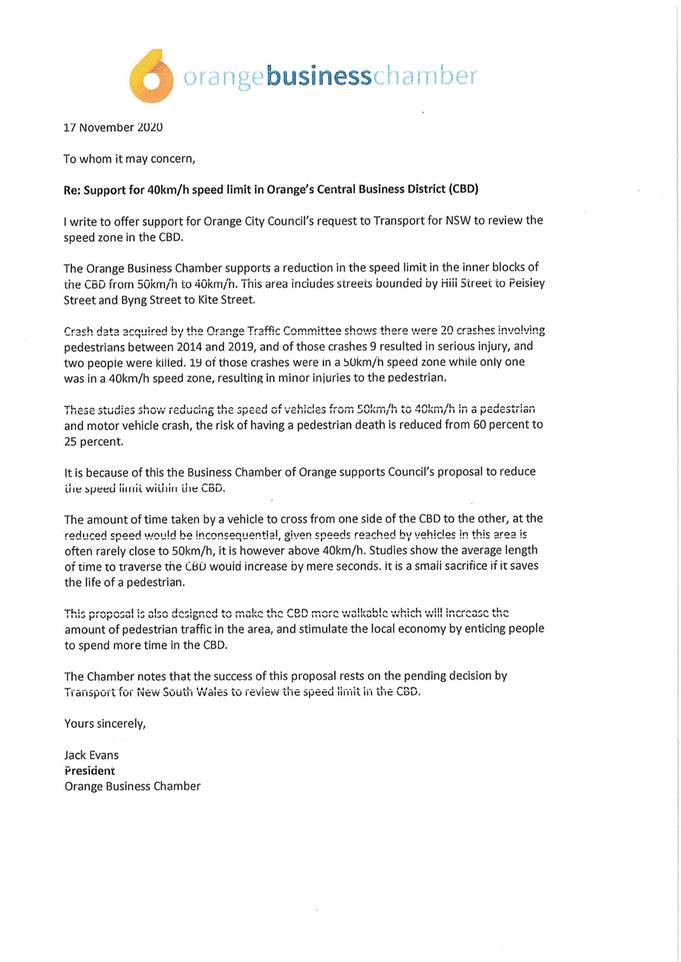
Council
Meeting
15 December 2020
Attachment 2 Yoursay
Making The CBD More Walkable
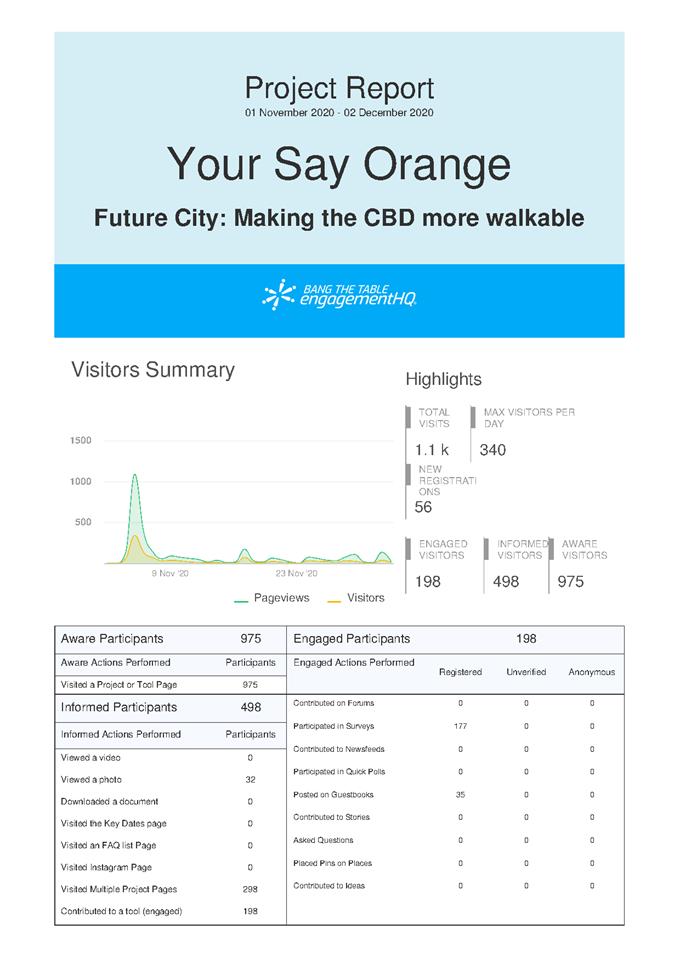
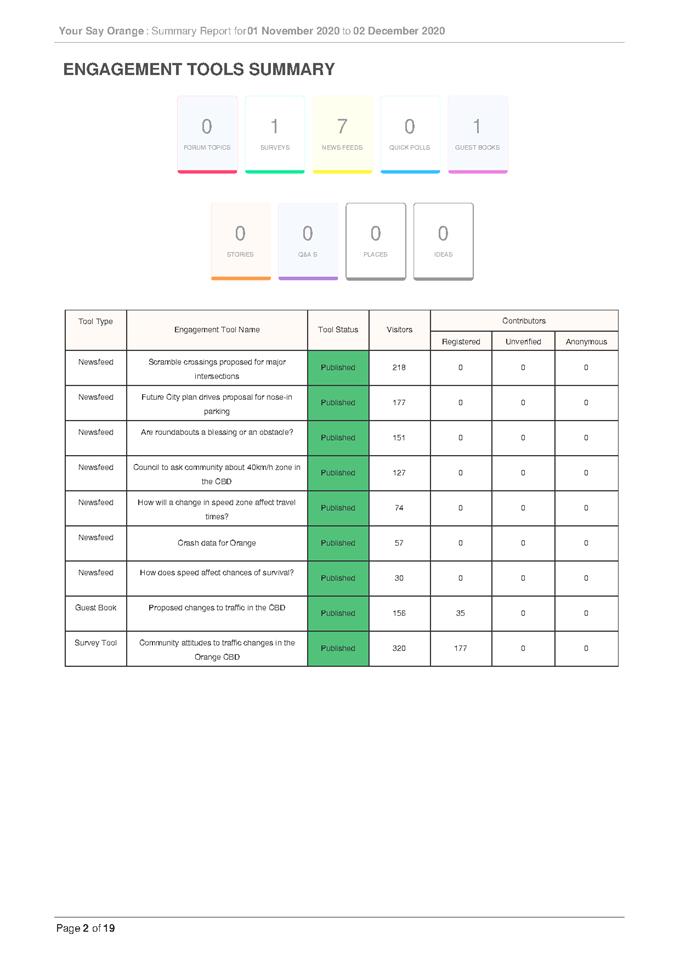
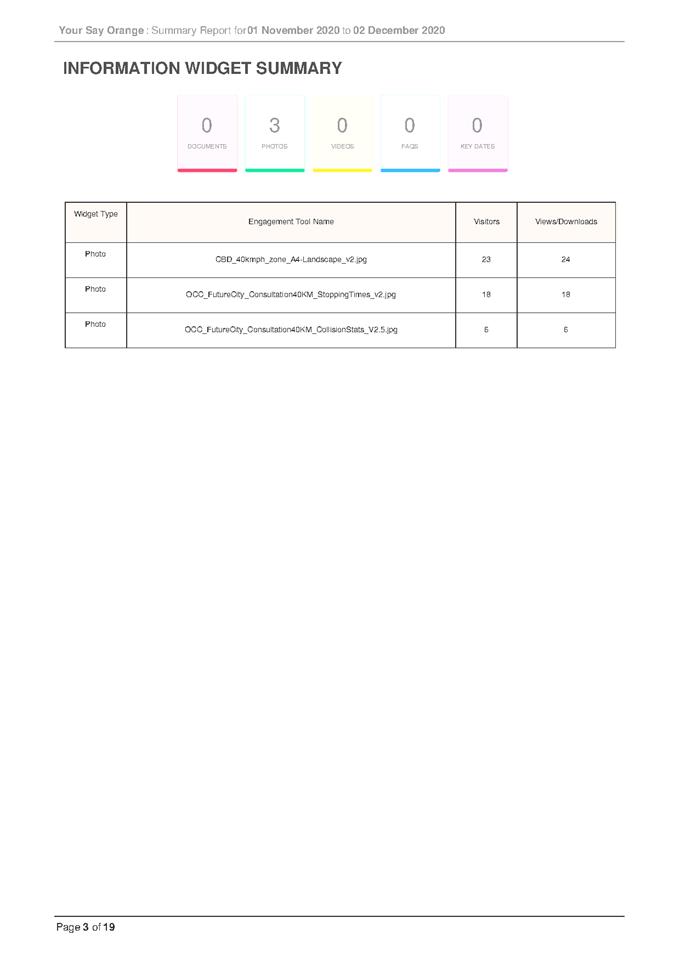
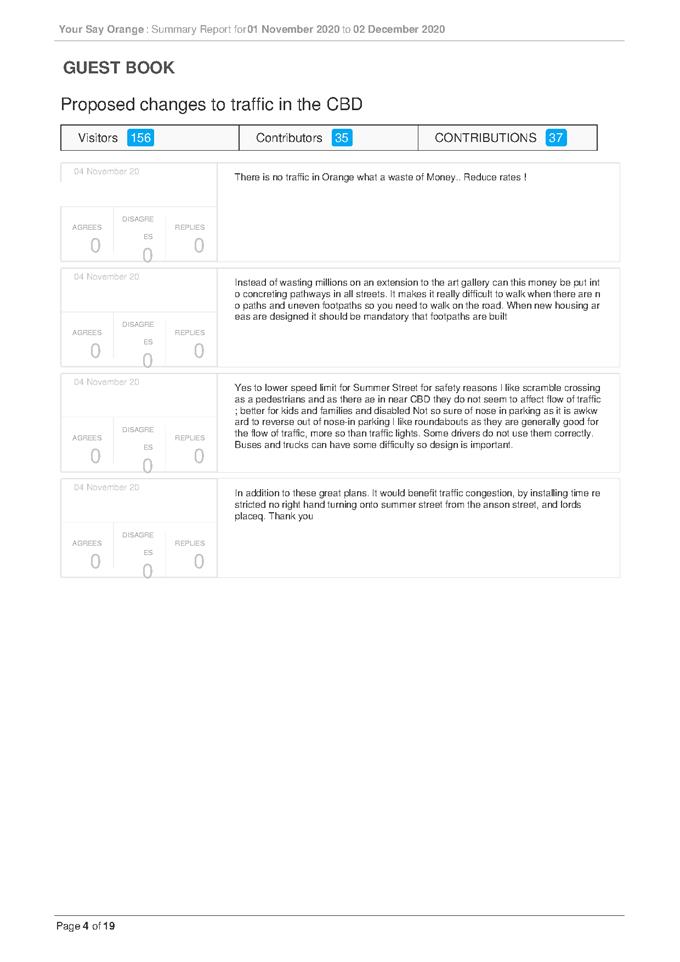
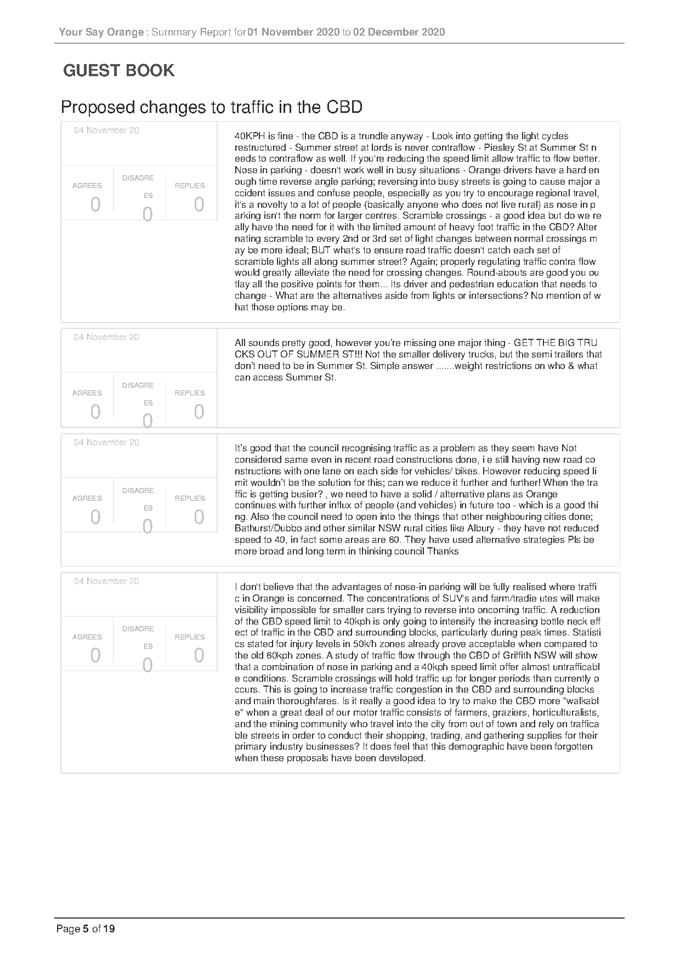
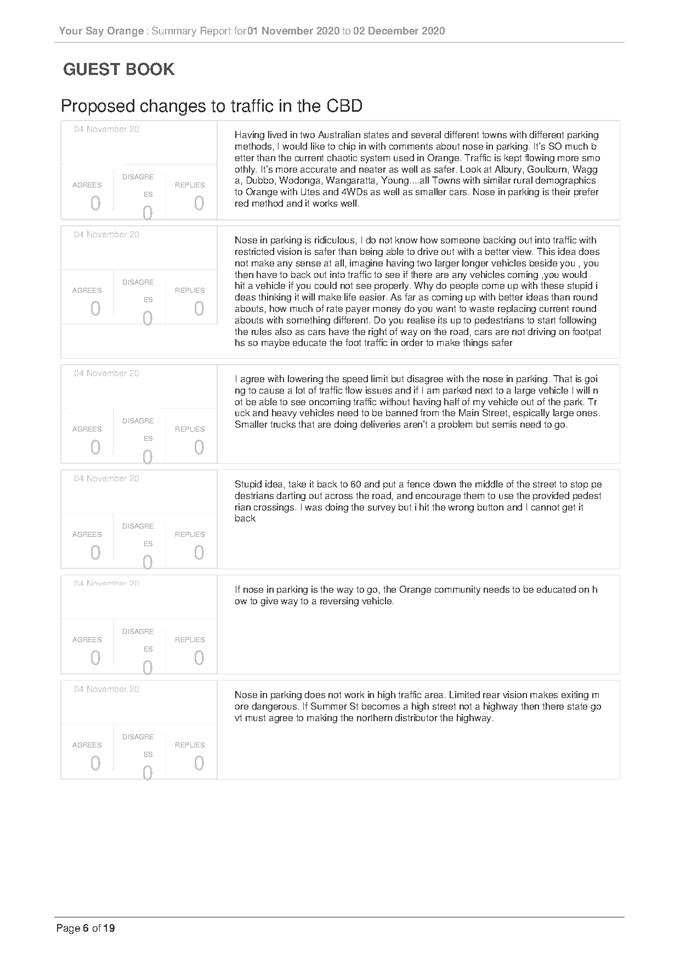
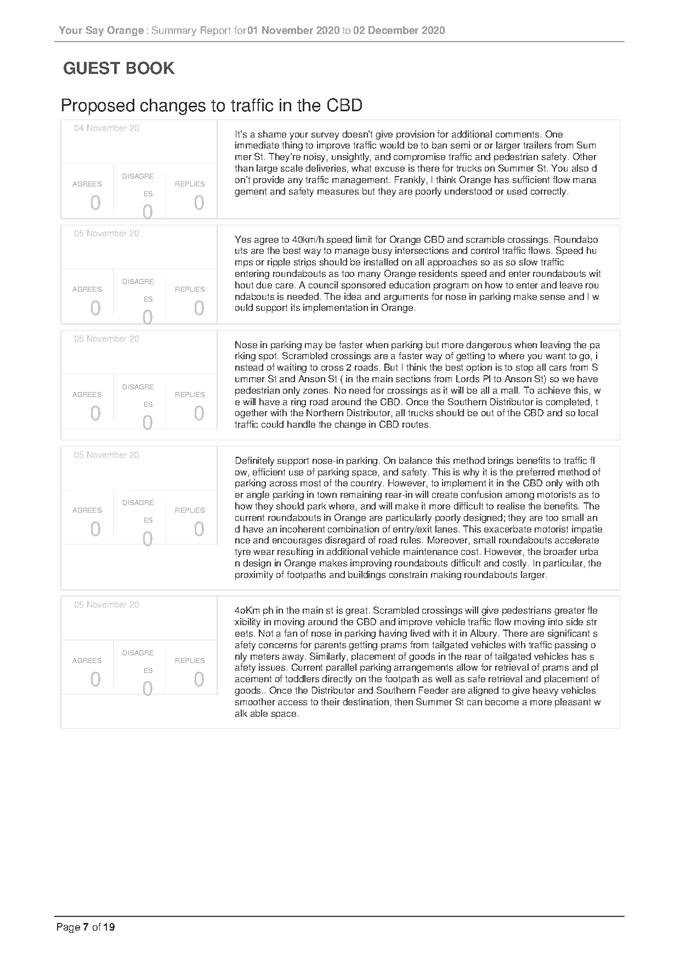
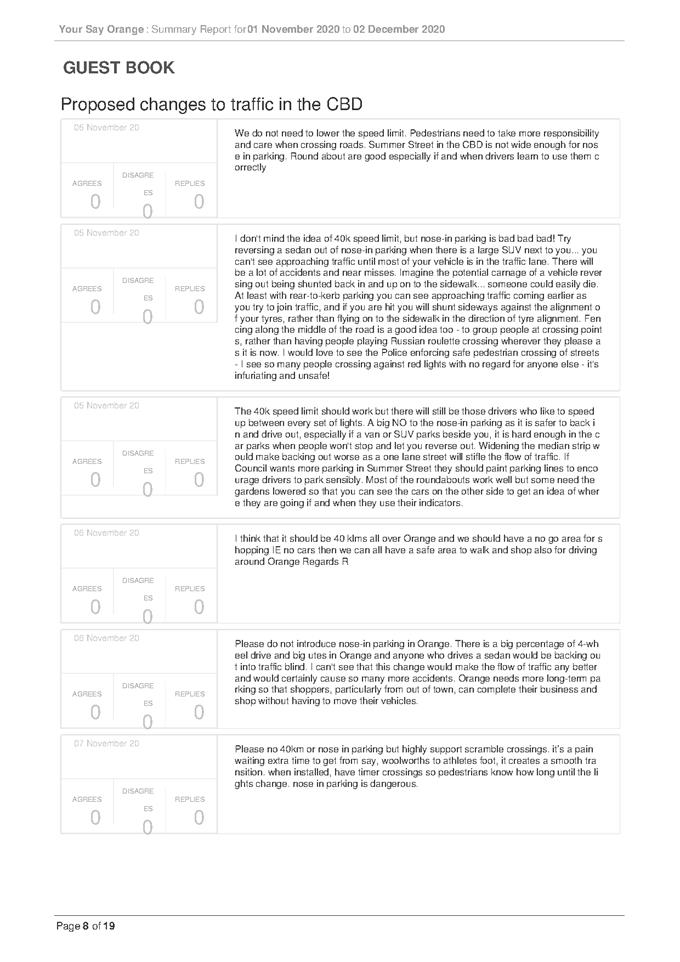
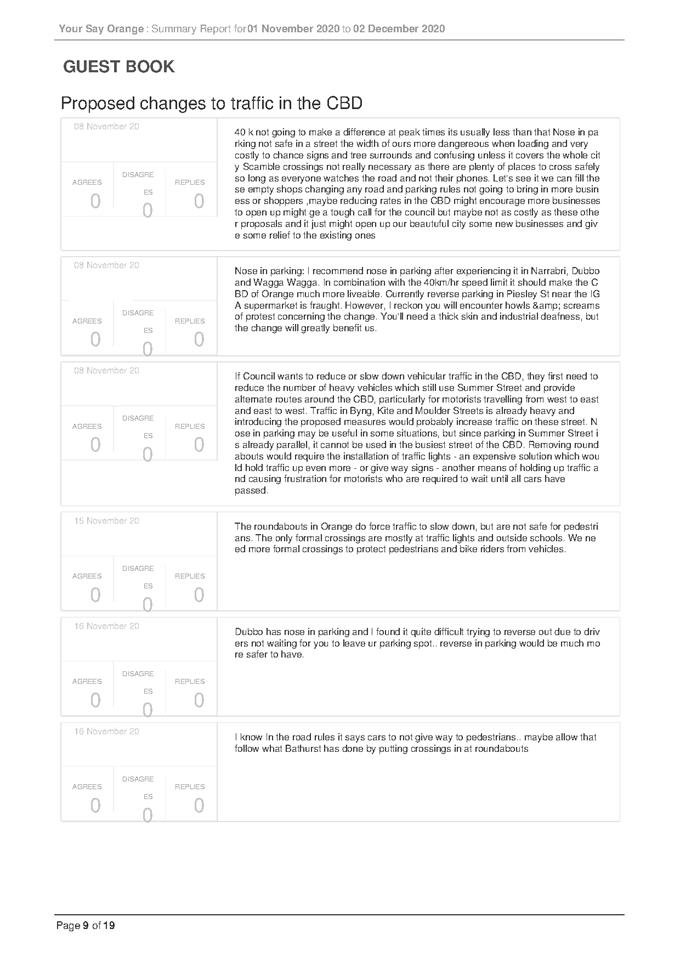
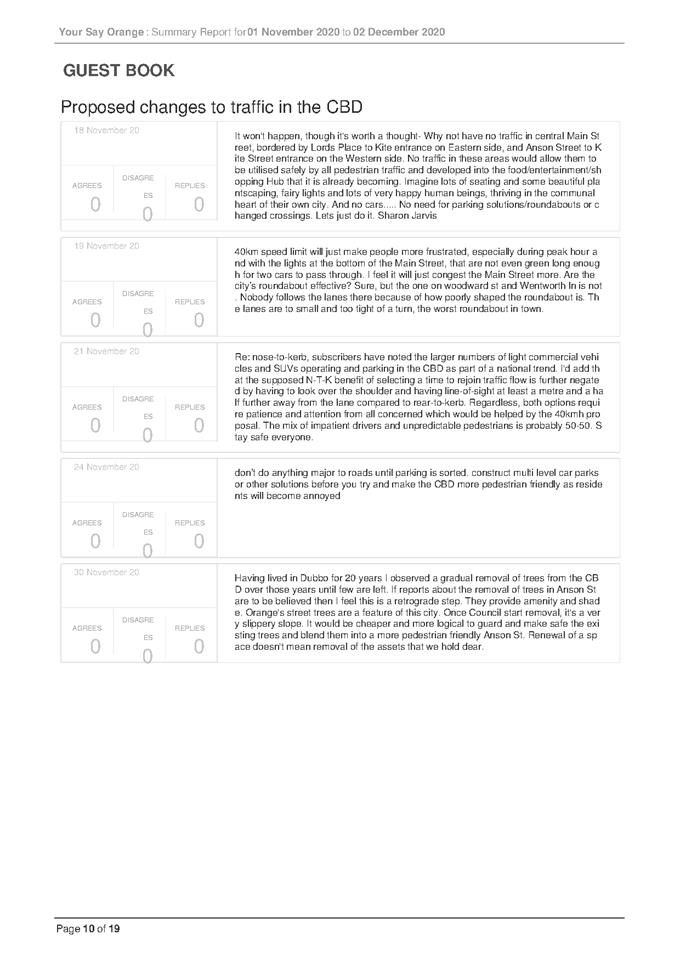
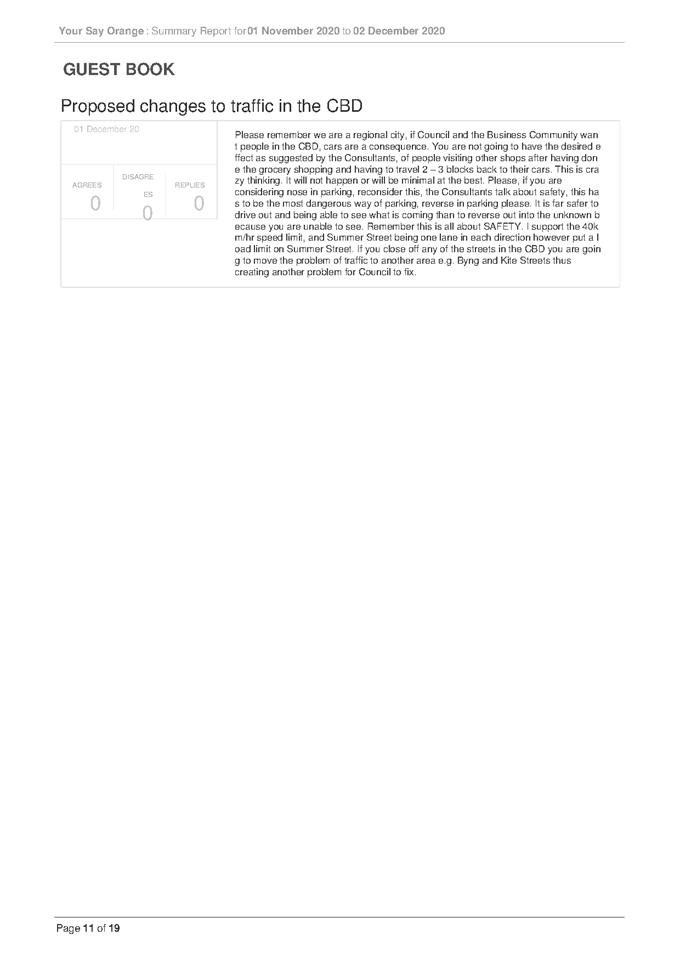
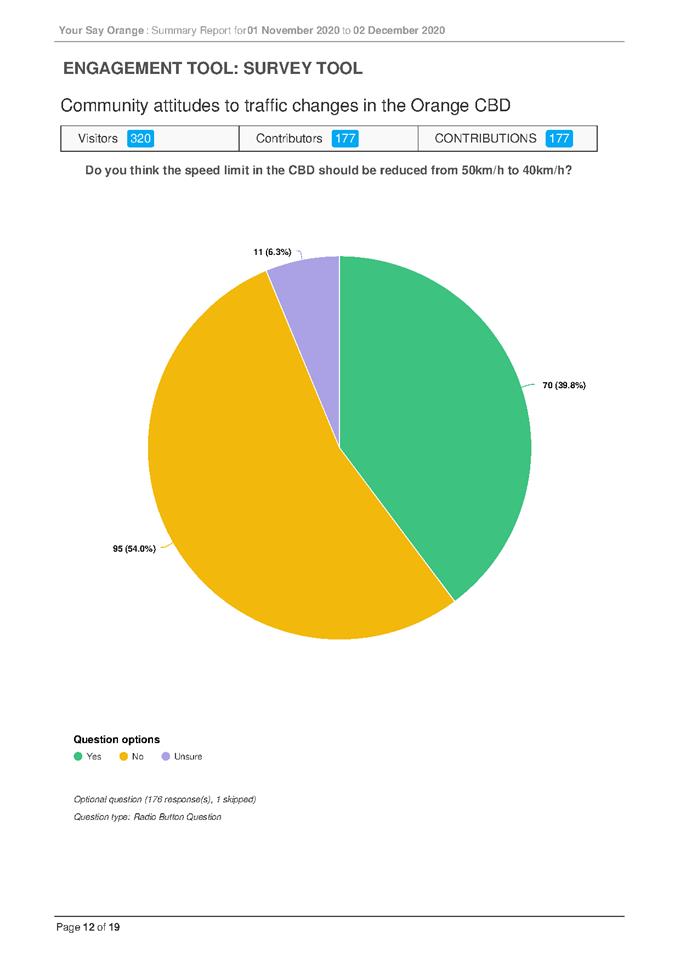
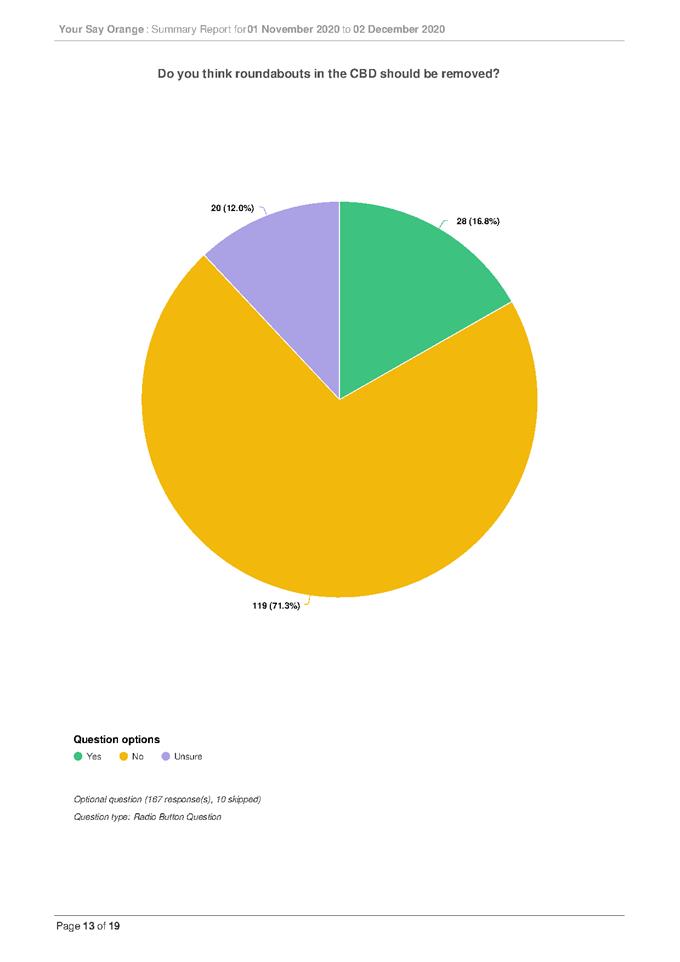
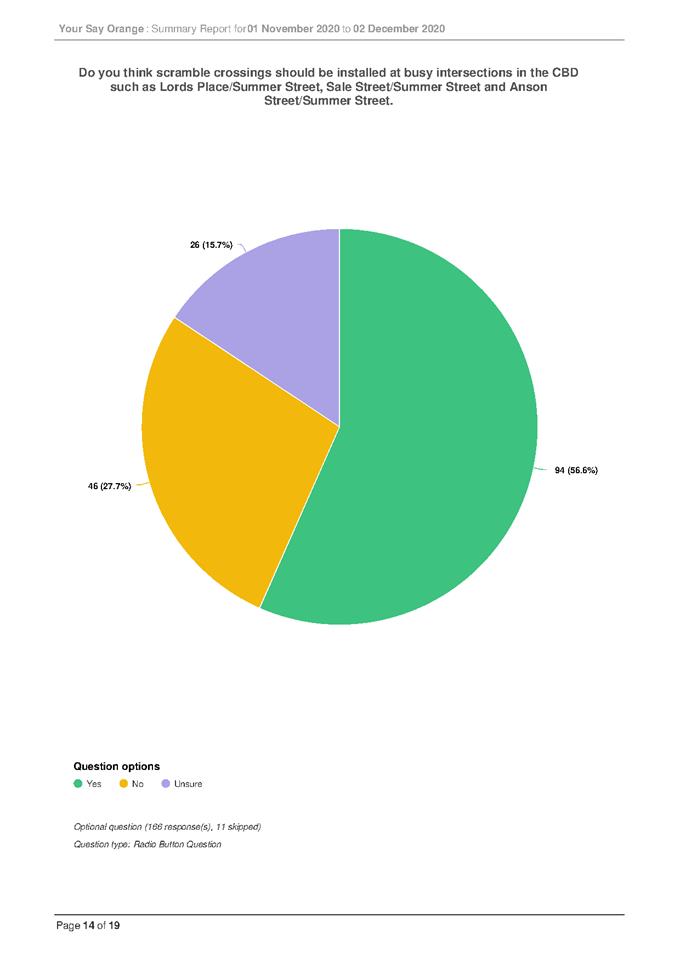

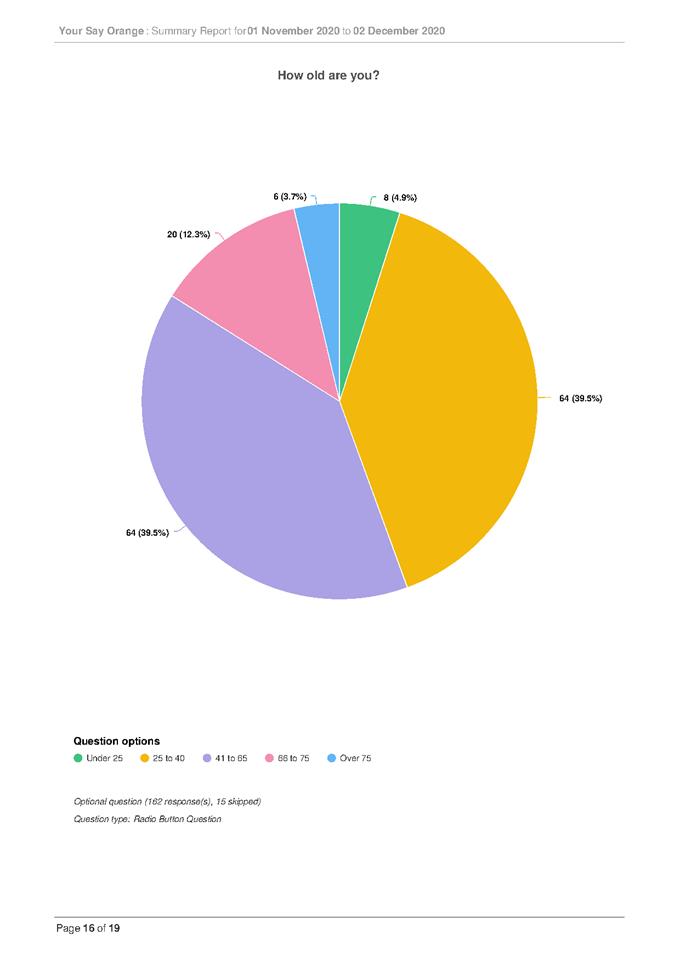
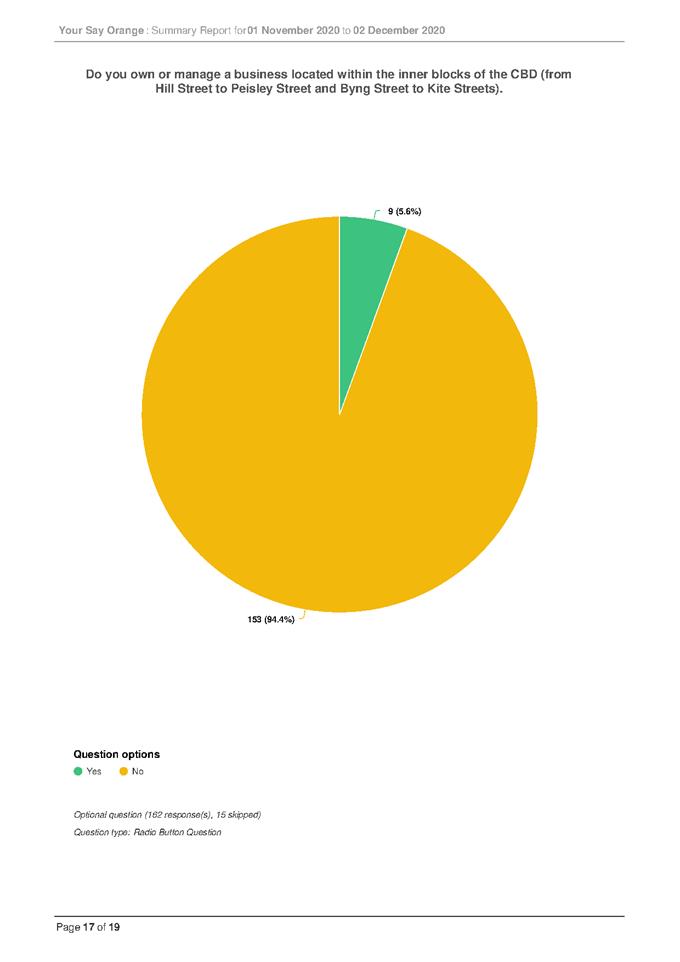
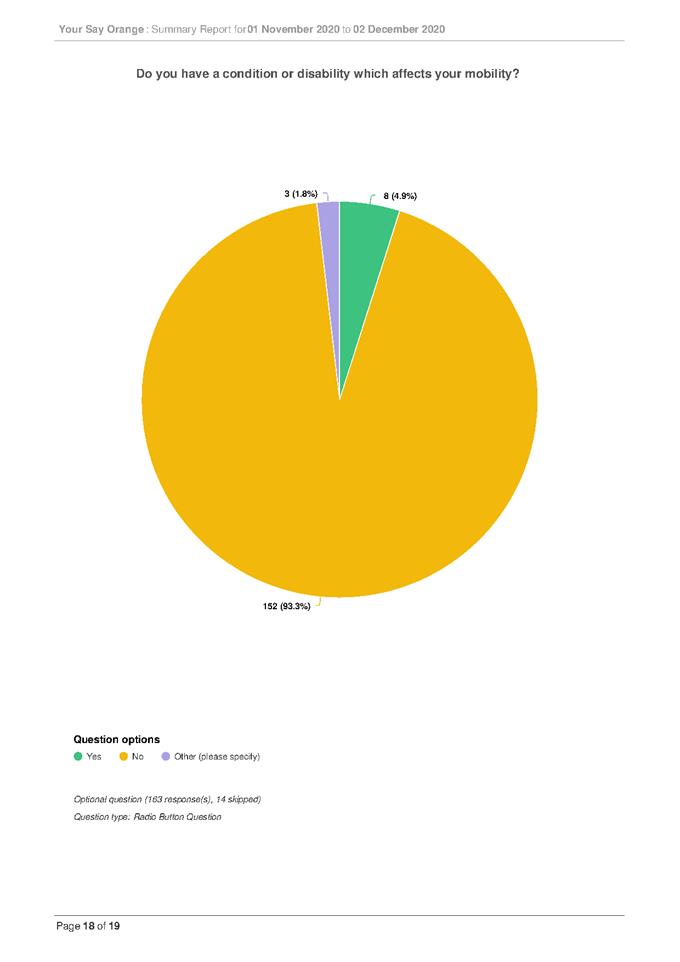
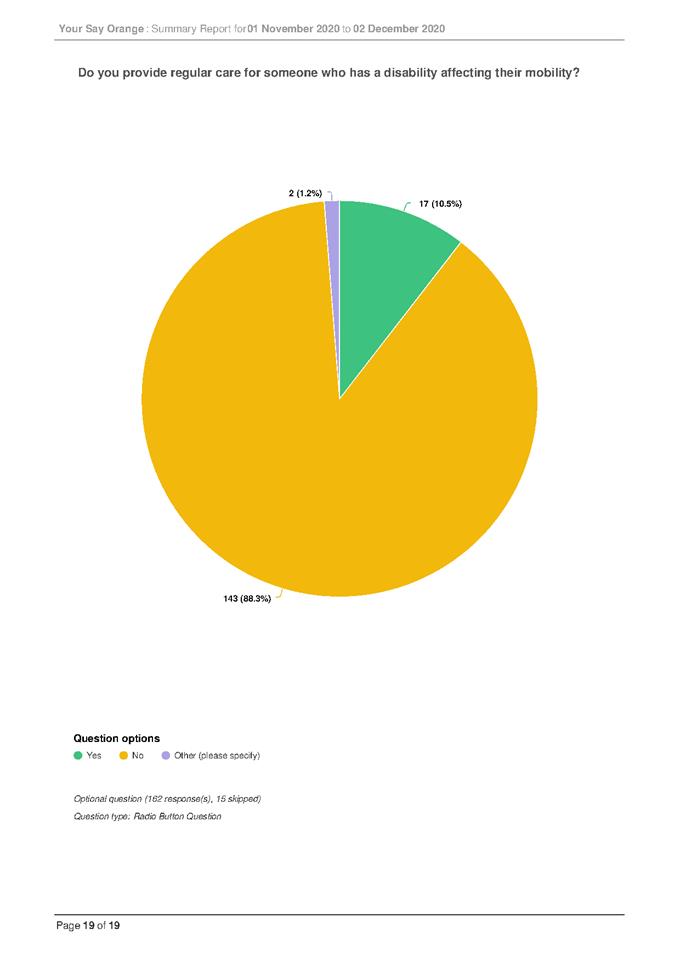
RECORD
NUMBER: 2020/2488
AUTHOR: Lindsay
Hall, Sustainability Officer
EXECUTIVE Summary
On the 24 July 2020 Council resolved that Council prepare a
report outlining:
1 Current
use of single-use plastic across Council operations;
2 Available
alternatives to single-use plastic items currently in use in Council operations
and Council run or sponsored events;
3 Achievable
timeframes to phase out single-use plastic in Council operations and Council
run or sponsored events where alternatives are available; and
4 Achievable
timeframes for developing a Single-use Plastics Policy that addresses the
reduction of single-use plastics in Council operations and events, supports the
2025 National Packaging targets, and identifies suitable alternatives,
including timeframes for implementation.
Link To Delivery/OPerational Plan
The recommendation in this report relates to the
Delivery/Operational Plan strategy “8.2 Preserve - Develop and promote
initiatives to reduce water, energy and waste in consultation with the
community”.
Financial Implications
Nil – will be considered when policy is drafted.
Policy and Governance Implications
Operational Policy - OP047 - Purchasing
|
Recommendation
That Council resolves:
1 To
endorse the development of a Single-Use Plastics Policy that addresses the
reduction of single-use plastics in Council operations and events, and
supports the 2025 National Packaging targets;
2 That
Council prepare an implementation plan which identifies actions, suitable
alternatives and timeframes, to implement objectives of a Single-Use Plastics
Policy.
|
further considerations
Consideration has been given to the recommendation’s
impact on Council’s service delivery; image and reputation; political;
environmental; health and safety; employees; stakeholders and project
management; and no further implications or risks have been identified.
SUPPORTING INFORMATION
Data on single-use plastics used across Council operations
is not currently collected therefore it is difficult to determine a
retrospective and accurate data set. Council’s current single-use plastic
and packaging use was collated from an internal survey completed by all Council
managers. The survey aimed to provide an understanding of plastic use across
Council.
Definitions:
Plastic packaging – Plastic used for the
containment, protections, marketing or handling of consumer products (includes
distribution packaging)
Single-use plastics (SUP’s) – Is likely
to be designed to be discarded after single-use and is routinely disposed of
after its contents have been unpacked or exhausted
1. Current use of Single-Use Plastics across
all Council operations – Survey results snapshot
The survey was divided by single-use plastics (SUP’s),
plastic packaging, knowledge and solid waste generally.
· 43% of
managers rarely purchased/ used single- use plastics in their respective
areas,
Of
these
· 24% of
managers stated that single-use plastics and plastic packaging were often used
· 45% of
managers engage external consultants who may use SUP’s and/or plastic
packaging
· 40% of
managers are aware of items which arrive with plastic packaging
The three largest reported categories of single-use plastics
included:
· Stationary
(25%)
· Plastic
wrapping (15%)
· Plastic
drink bottles and single-use masks/gloves (7% equally)
There was no quantifiable data on quantities of
single-use plastics used
For further insights, see Survey Results (attached)
2. Available alternatives to Single-Use
Plastic items currently in use in Council operations and Council run or
sponsored events
There are cases of alternatives to SUP’s being used by
Council however this occurs to be largely incidental as opposed to intentional.
Some suppliers are able to provide services without SUP’s (e.g. some
catering)
Alternatives which would support the plastic packaging
targets include recycled and recyclable plastics, particularly for stationary
and, timber/bamboo/natural fibre materials. However these options tend to be at
a higher price (anecdotally).
3. Achievable timeframes to phase out
single-use plastic in Council operations and Council run or sponsored events
where alternatives are available
Implementation would occur through an implementation plan
which could be developed over a 6 month period in consultation with relevant
staff. The aim is to gradually implement the plan over a 3-year period, with
all Council run operations and events to meet a Single-use Plastics Policy
objectives by the end of 2023 FY.
4. Achievable timeframes for developing a Single-Use
Plastics Policy that addresses the reduction of single-use plastics in Council
operations and events, supports the 2025 National Packaging targets, and
identifies suitable alternatives, including timeframes for implementation
The timeframe for a Single-use Plastic Policy to be
developed is 3 months.
5. Additional Information
Australian Packaging Covenant Organisation
(APCO) - 2025 National plastic packaging targets
· 100%
reusable, recyclable or compostable packaging
· 70%
of plastic packaging being recycled or composted
· 50%
of average recycled content included in packaging
· The
phase out of problematic and unnecessary single-use plastics packaging.
Through detailed analysis of the packaging
system and recovery rate data, APCO has also developed additional new targets
for specific material types, as outlined in the figure below;
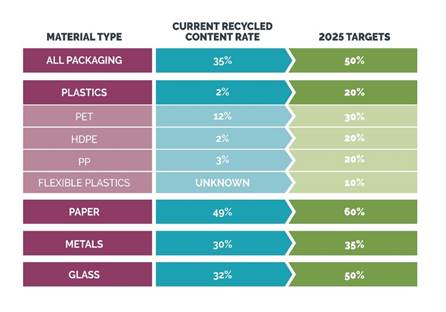
Mechanisms to reduce Single-use Plastic
and support plastic packaging targets
Waste Separation
In order to support the 2025 plastic packaging targets,
adequate waste facilities that allow for waste separation (i.e. Green, Red,
Yellow lidded bins) at each sector of Council is required.
Survey data showed that within the different sectors of
Council, there wasn’t adequate separation of waste available for staff or
customers. Only 35% of managers indicated that they had green waste, recycling
and general waste separation available. While 50% of managers stated that they
only have general waste and recycling available, and 15% of managers used
recycling only. There is a substantial difference between service areas, with
35% of Council having the ability to separate waste, and 65% of waste from
staff and customers isn’t being separated as well as it could be.
Purchasing
Restricting the purchase of SUP’s is a potential
method of reducing SUP’s. This would require further consultation with
Council staff and investigation into the available alternatives to ensure
operations are not negatively impacted. This would also require supplier and
product lists for alternatives to SUP’s which could be purchased
Education
From the survey, 67% of respondents agreed that an education
program on waste separation/waste reduction would be useful for their area of
management.
Data collection
In order to support the 2025 plastic packaging targets, and
to report on future progress, adequate data for operational plastics
purchasing/use and solid waste generation (by type) would be beneficial.
Exemptions and ‘difficult’
single-use plastics
When asked if single-use plastics and packaging were to be
phased out or restricted, 58% of managers responded that it would not impact
operations, while 28% stated that it would create an impact.
It is difficult to reduce single-use plastics which come
through the supply chain such as packaging off purchases (plastic wrapping,
polystyrene foam etc.).
Some exclusions and exemptions in a Single-use Plastic
Policy are likely to include:
- Specific plastic products
which are required to meet work health and safety requirements.
- Where there is no practical
alternative product or distribution method.
- Conditions subject to current
relevant legislation where single-use plastics are required in some
circumstances e.g. NSW Gaming and Liquor Administration Act 2007.
Example
alternative supplier and product list to Single-use Plastics

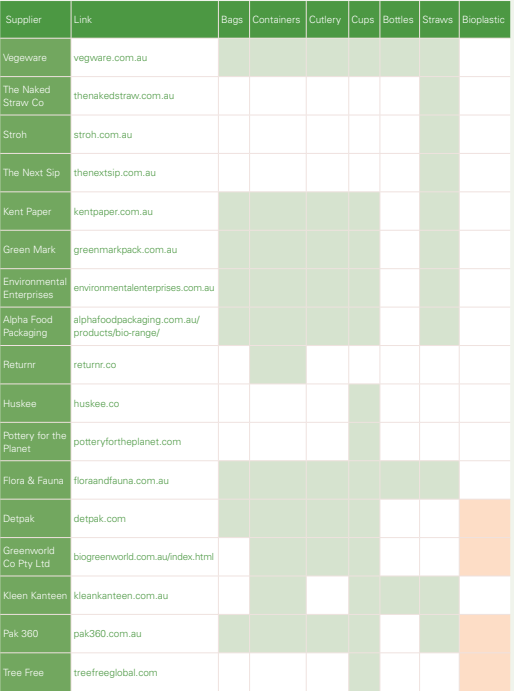
Single-use plastic
policy statements, year implemented and targets established at other NSW Local
Councils.
|
Council
|
Statement
|
Year
|
Targets
|
Additional Information
|
|
Hornsby, NSW
|
Progressively transition towards the elimination of single-use
plastics in Council operations and events by 2022.
|
Nov, 2020
|
Support relevant National Packaging Targets and national product
labelling schemes.
In-house education and engagement activities, demonstrate leadership
in the community.
Phase out and, where possible, eliminate single-use plastic items
within Council operations and events. This includes alternatives.
Act as a leader for local business and retail industry in phasing out
also.
|
Exclusions
Plastic items already being recycled within a circular economy model.
Beverages from vending machines.
Exemption
Plastic products required to meet health and safety requirements.
No practical alternative or distribution method.
Subject to current relevant legislation where single-use plastics are
required in some circumstances.
|
|
Albury/Wodonga
|
Wodonga Council and Albury City Council are committed to
progressively reducing the use of single-use plastics by 2021.
|
April/ 2020
|
Applies to Council operations and Council-managed events including,
but not limited to, official functions, civic events, community forums,
listening posts, workshops, meetings, training events and parties.
This policy outlines how the Councils will lead and work together
with our community to achieve this commitment.
|
Exemptions apply for plastic products that are required to meet
medical and safety requirements, or where there is no other practical
alternative product or distribution method available.
|
|
Northern beaches
|
Council to take a leadership role in the elimination of Single -Use
Plastics, advocating for legislative change, and influencing and enabling responsible
consumption practices.
|
2017
|
Implementing responsible procurement practices and influencing supply
chains
Providing leadership in the community through policy and practice.
Influencing the business and retail community to provide products and
services that do not rely on Single-Use Plastics.
Promoting alternatives to single-use plastic.
Researching and developing strategies to enable the community to live
without Single-use Plastics.
|
This policy applies to Council, its employees, agents, lessees and
contractors activities within and impacting on the Northern Beaches local
government area.
|
Survey results snapshot
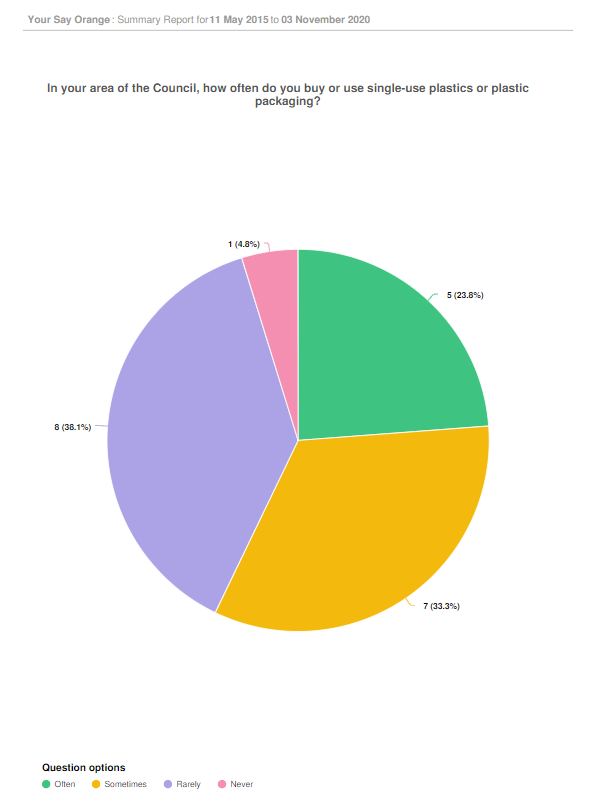
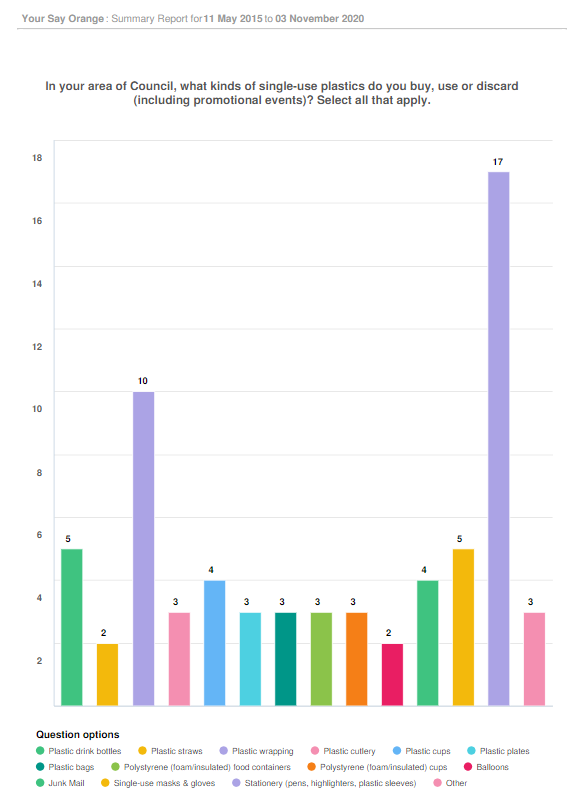
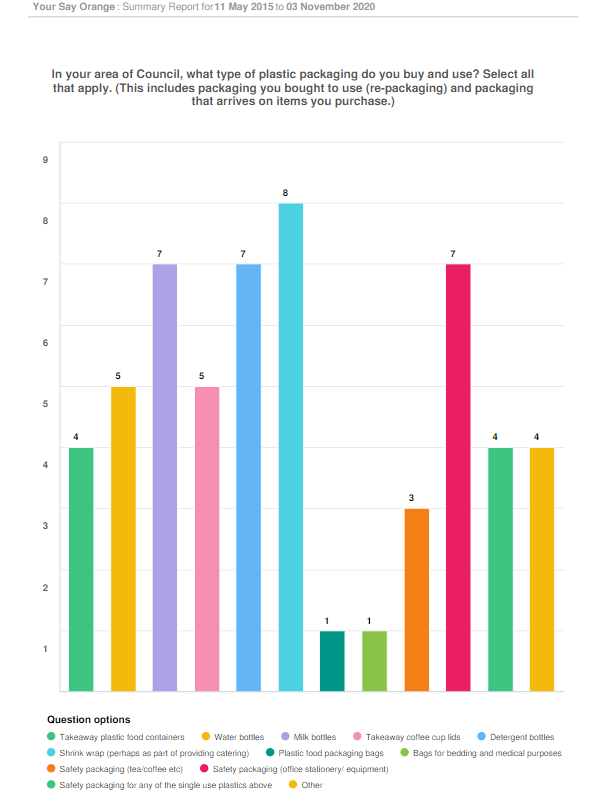
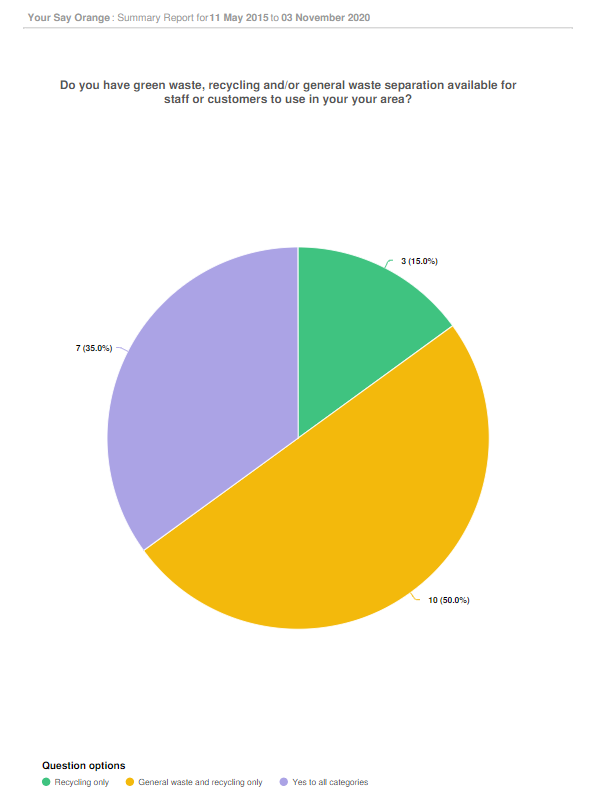
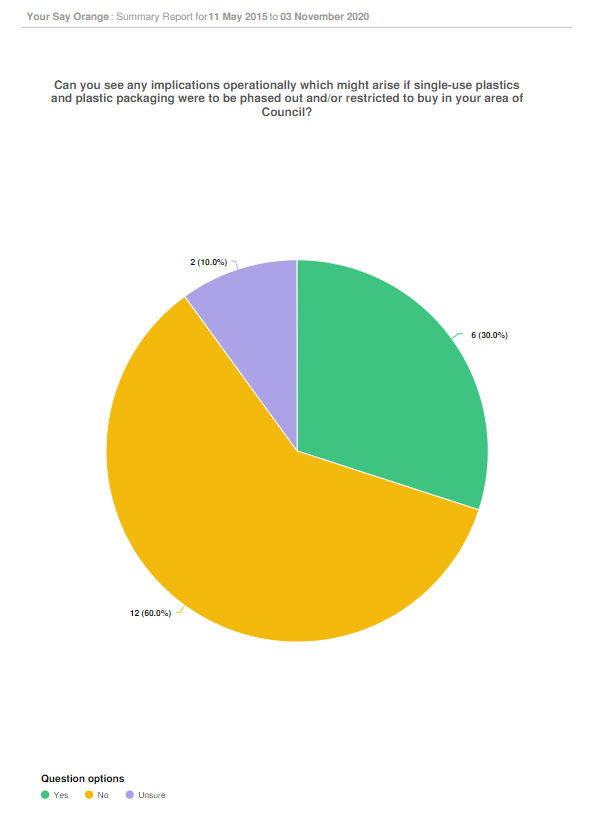
5.15 Sustainable
Energy and Energy Efficiency
RECORD
NUMBER: 2020/2499
AUTHOR: Lindsay
Hall, Sustainability Officer
EXECUTIVE Summary
The purpose of this report is to communicate the energy
savings provided by a number of major renewable energy system installations and
energy efficiency upgrades of Council assets over a number of years.
Link To Delivery/OPerational Plan
The recommendation in this report relates to the Delivery/Operational
Plan strategy “7.2 Preserve - Ensure best practice use of renewable
energy options for Council and community projects”.
Financial Implications
Nil
Policy and Governance Implications
Nil
|
Recommendation
That the report on Sustainable Energy and Energy
Efficiency be acknowledged
|
further considerations
Consideration has been given to the recommendation’s
impact on Council’s service delivery; image and reputation; political;
environmental; health and safety; employees; stakeholders and project
management; and no further implications or risks have been identified.
SUPPORTING INFORMATION
Current Energy
Sustainability Initiatives
LED Street lighting
upgrades
Since the LED street lighting replacements began in
September 2019, Council has already seen a reduction in electricity use from
the 12months prior by 523 MWhs. To compare Street lighting in Orange in August
2019 used 260MWhs and Street lighting in August 2020 used 173MWhs, a reduction
of 33.5% in electricity usage for streetlights in August
The streetlight replacements are 80% complete, there are
still 20% fittings to be replaced with smart fixtures which will be both LED
and allow additional attachments such as surveillance and environmental
monitors.
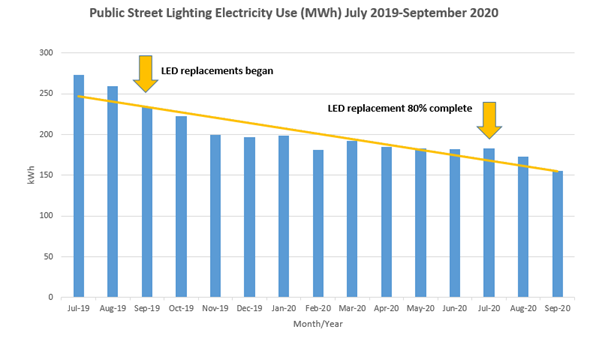
Civic Centre Air con
upgrade
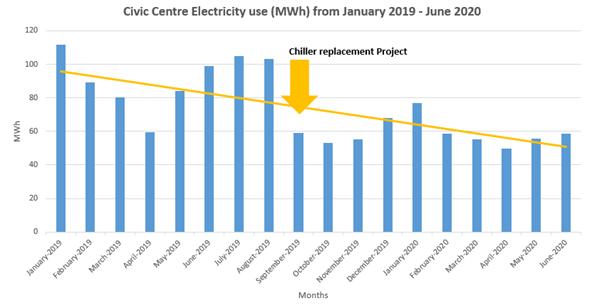
In 2019 the Civic Centres Air conditioner system was
upgraded to an efficient heat pump system. The air conditioner upgrade has
reduced the Civic Centres electricity use by an estimated 23MWh’s a
month, a reduction of around 280MWh in the last 12 months
Depot Solar PV systems
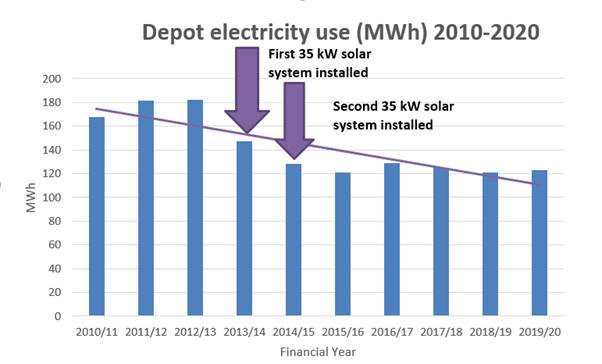
Since commissioning, the 70Kw Solar PV system on the depot
has produced 549 MWh’s. Reducing the total MWhs required to purchase in
that time by 43%
Aquatic Centre Solar PV
system
The 99kW solar system installed on the Aquatic Centre in
2017 has produced 451 MWh in total since installation. This has reduced the
total electricity required to purchase in that time by 13%. In 2020 the solar
system produced 116 MWh (17% of the facilities total MWh’s)
Projected energy use
including proposed future projects:
Airport Terminal
Electricity use has generally increased since the Orange
terminal building upgrades in 2014/15. The proposed 99kW system is expected to
reduce the facilities total electricity use by 150MWh P.A., a reduction of 60%
from 2019/2020 financial year and, reduce the electricity use by approximately
50MWhs below 2010/2011 total electricity usage.
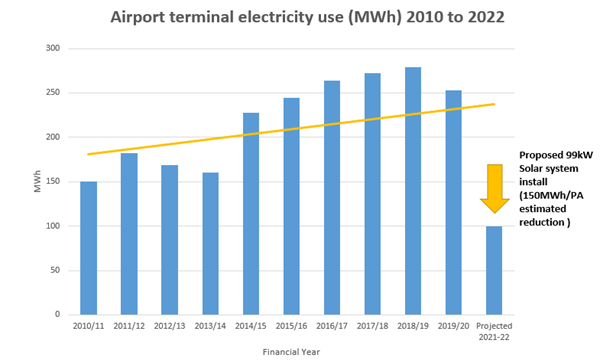
Civic Centre - Solar
System, Air conditioner upgrades, LED retrofit
An estimated 123MWh’s P.A. could be produced from a
proposed 99kW system. The proposed LED lighting replacement in the Civic Centre
is expected to reduce the Civic Centres electricity consumption from Lighting
by 46.2 MWhs P.A., a 56% reduction.
The proposed Solar PV system, proposed LED lighting retrofit
and the estimated Air conditioner upgrades are expected to reduce the Civic
Centre electricity use by an estimated 435MWh’s P.A. A reduction of
44.75% from the 1011.5MWhs of the 2018/19 financial year
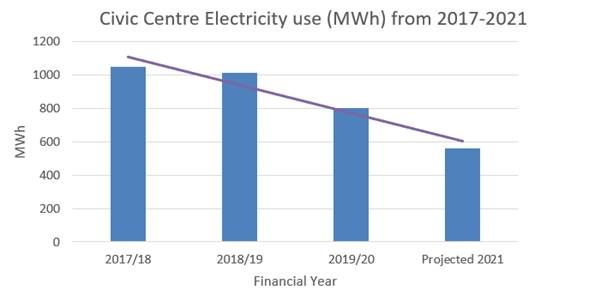
Aquatic Centre
An estimated 123MWh’s P.A. could be produced from a
proposed 99kW system. The proposed LED lighting replacement in the Aquatic
Centre is expected to reduce the Centres electricity consumption from lighting
by 138MWh’s P.A., a 77% reduction.
The proposed Solar PV system and proposed LED lighting retrofit
are estimated to reduce the Aquatic Centres current electricity use by a
further 261 MWh’s P.A, a reduction of 29% from 2019/20’s usage
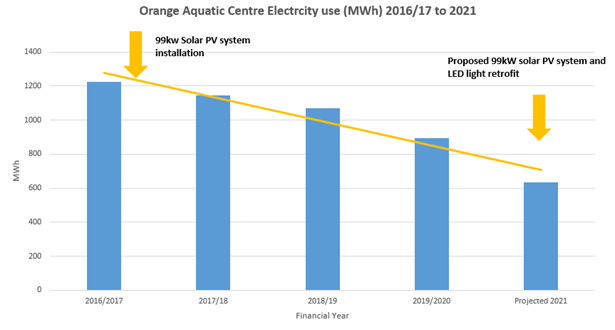
LED Retrofit
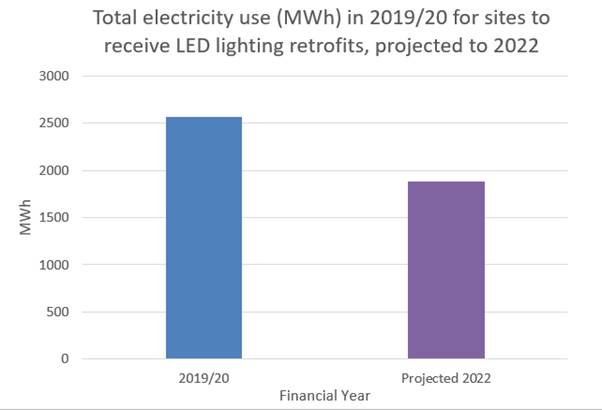
Retrofitting LED lights at 17 of Council sites, replacing
2117 lights is expected to reduce the total MWh used by 680 a year (a 25%
reduction total for those sites). The above data represented is estimated
projections based on expected electricity reductions from all of the
retrofitted LED lights combined for a full financial year. The 2020/21 financial
year was excluded for the purposes of this report, as the project is not
expected to be completed until partway through the year.
Summary
As a result of these efficiency upgrades and renewable
installations Council has significantly reduced electricity demand and use and
can continue to expect more and greater savings as more renewable systems are
installed and assets are upgraded
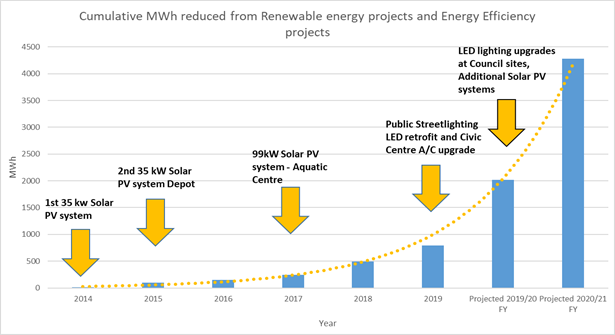
Please note for this report, projected values are estimated
based on expected performance and energy reduction capacity of upgrades and as
such are indicative only.
5.16 Projects
Report December 2020
RECORD
NUMBER: 2020/2532
AUTHOR: David
Waddell, Chief Executive Officer
EXECUTIVE Summary
This report provides information, updated monthly, on the
numerous projects that staff are working on. This includes major projects and
work projects.
The Executive has brought together the total project list
for the 2020-2023 years in a consolidated form to assist with resourcing and to
understand the sequence required to deliver our ambitious capital budget for
the year.
Link To Delivery/OPerational Plan
The recommendation in this report relates to the
Delivery/Operational Plan strategy “17.1 Collaborate - Provide
representative, responsible and accountable community governance”.
Financial Implications
Nil
Policy and Governance Implications
Nil
|
Recommendation
That the information in the report on Capital Projects
be acknowledged.
|
further considerations
Consideration has been given to the recommendation’s
impact on Council’s service delivery; image and reputation; political;
environmental; health and safety; employees; stakeholders and project
management; and no further implications or risks have been identified.
SUPPORTING INFORMATION
The attached tables show the overall
project database of current, complete and planned projects.
The tables will be progressively
updated to inform Council and the Community.
Attachments
1 Works
Overview December 2020, D20/74677⇩
2 Projects
Overview December 2020, D20/74912⇩
Council
Meeting
15 December 2020
Attachment 1 Works
Overview December 2020
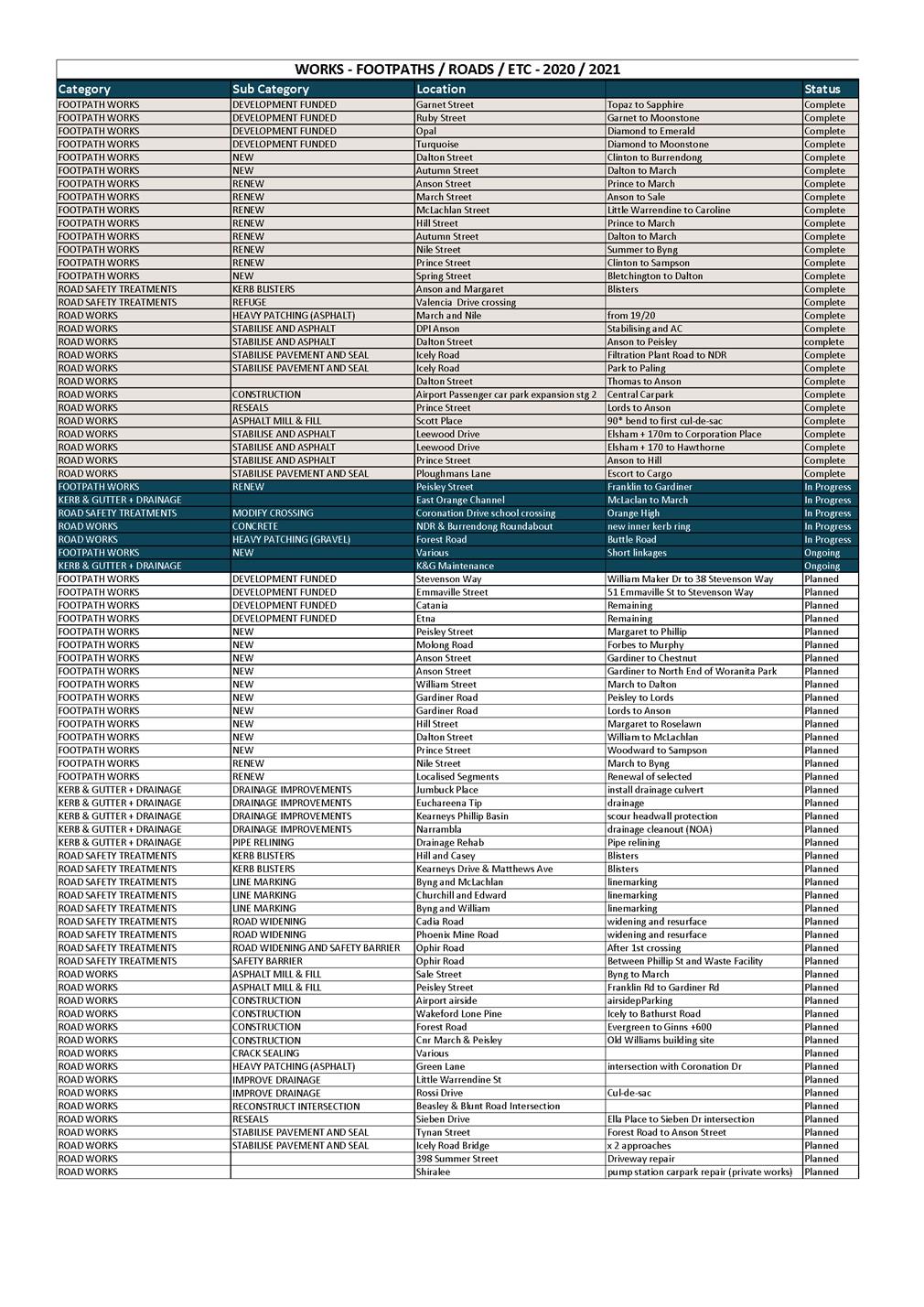
Council
Meeting
15 December 2020
Attachment 2 Projects
Overview December 2020
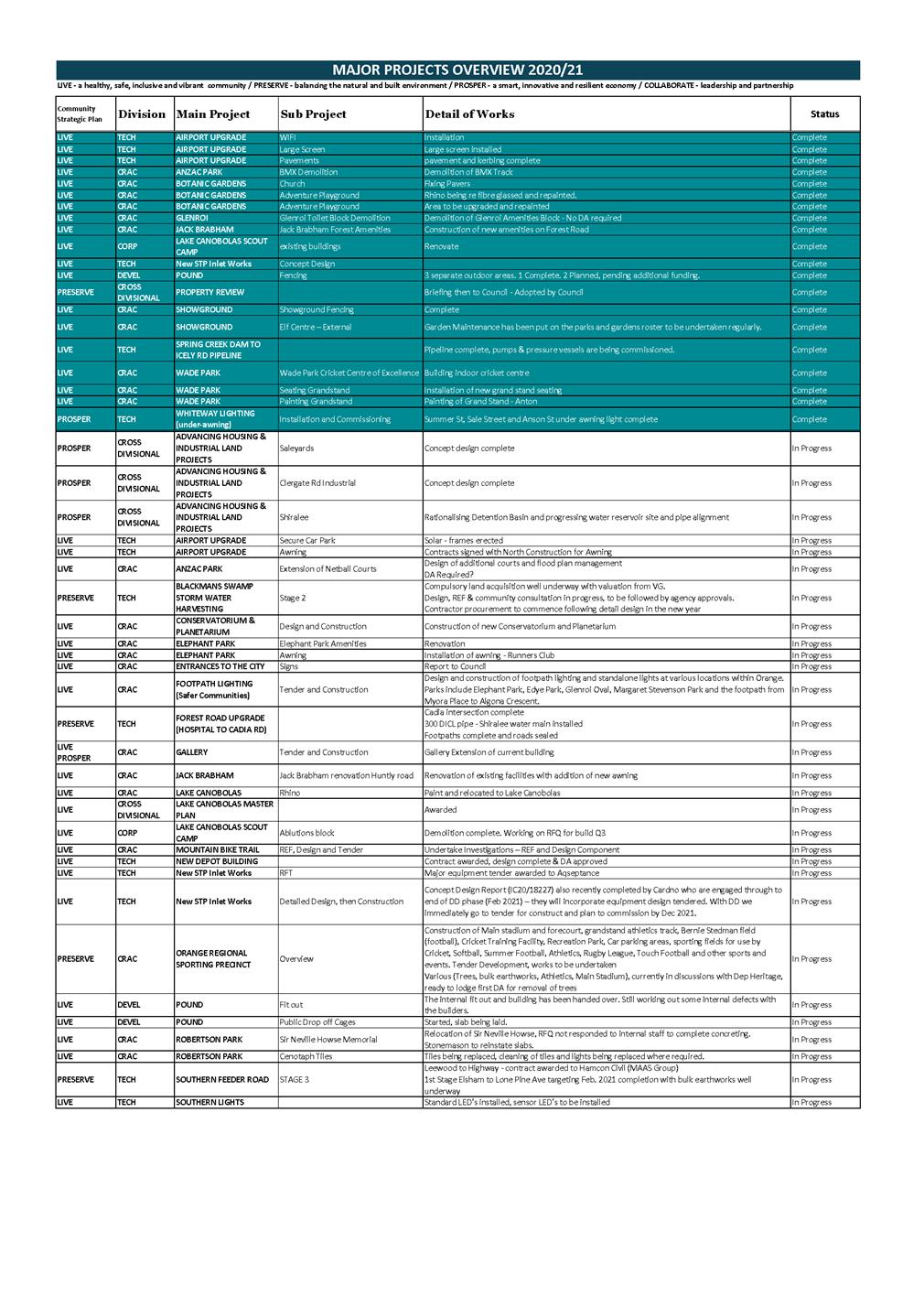
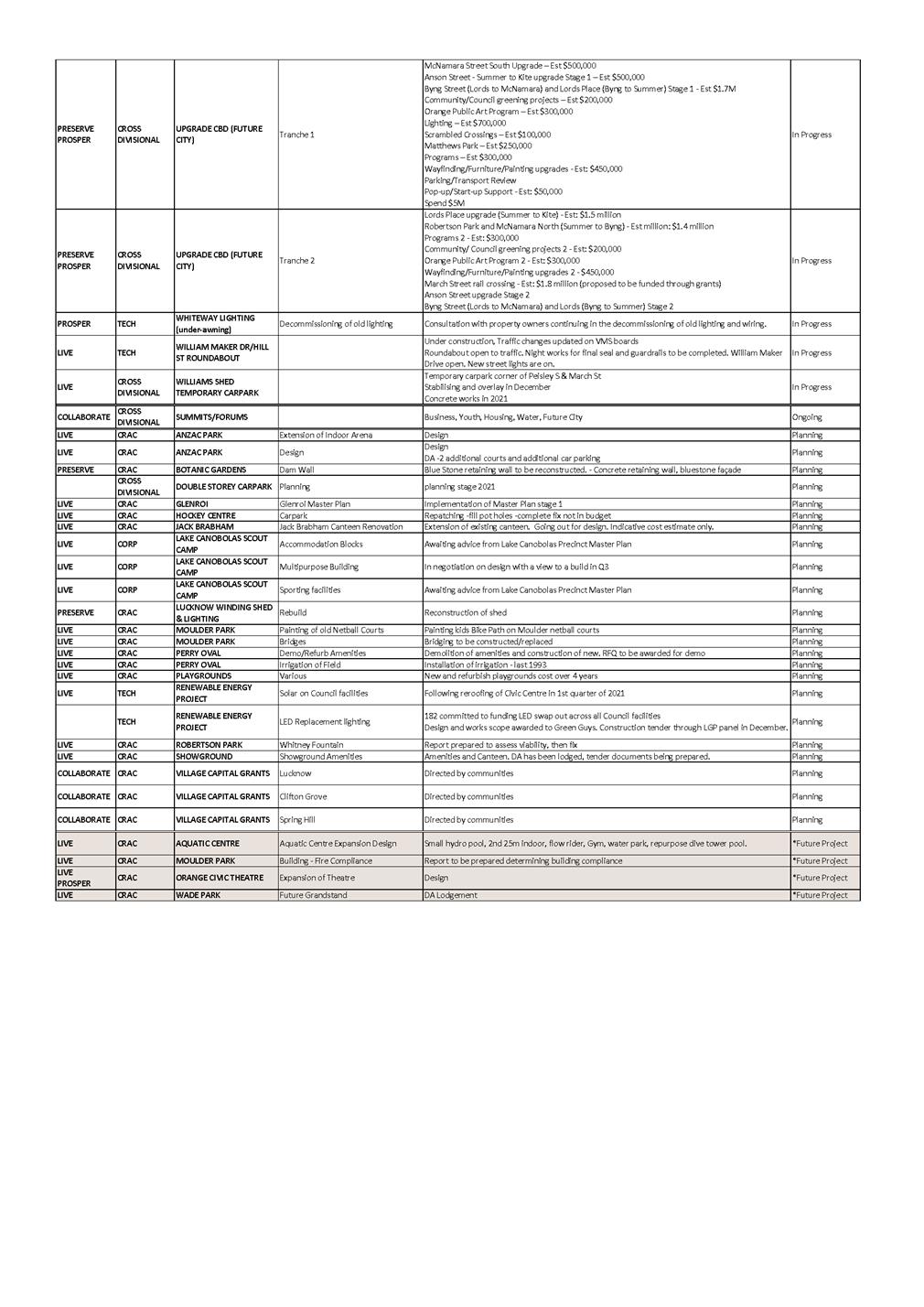
6 Closed Meeting
- See Closed Agenda
The Chief Executive Officer will advise the Council if any
written submissions have been received relating to any item advertised for
consideration by a closed meeting of Orange City Council.
The Mayor will extend an invitation to any member of the
public present at the meeting to make a representation to Council as to whether
the meeting should be closed for a particular item. In accordance with the
Local Government Act 1993, and the Local Government (General) Regulation 2005,
in the opinion of the General Manager, the following business is of a kind as referred
to in Section 10A(2) of the Act, and should be dealt with in a Confidential
Session of the Council meeting closed to the press and public.
|
Recommendation
That Council adjourn into a Closed Meeting and members of
the press and public be excluded from the Closed Meeting, and access to the
correspondence and reports relating to the items considered during the course
of the Closed Meeting be withheld unless declassified by separate resolution.
This action is taken in accordance with Section 10A(2) of the Local
Government Act, 1993 as the items listed come within the following
provisions:
6.1 Submission
Redactions
This item is classified CONFIDENTIAL under the
provisions of Section 10A(2) of the Local Government Act 1993, which permits
the meeting to be closed to the public for business relating to (a) personnel
matters concerning particular individuals (other than councillors).
6.2 Tender
for Construction of Amenities and Canteen (Naylor Pavilion Expansion)
This item is classified CONFIDENTIAL under the provisions
of Section 10A(2) of the Local Government Act 1993, which permits the meeting
to be closed to the public for business relating to (c) information that
would, if disclosed, confer a commercial advantage on a person with whom the
Council is conducting (or proposes to conduct) business.
6.3 Land
Portfolio Review Update
This item is classified CONFIDENTIAL under the
provisions of Section 10A(2) of the Local Government Act 1993, which permits
the meeting to be closed to the public for business relating to (c)
information that would, if disclosed, confer a commercial advantage on a
person with whom the Council is conducting (or proposes to conduct) business.
6.4 Sale
of industrial land at 298 Clergate Road
This item is classified CONFIDENTIAL under the provisions
of Section 10A(2) of the Local Government Act 1993, which permits the meeting
to be closed to the public for business relating to (c) information that
would, if disclosed, confer a commercial advantage on a person with whom the
Council is conducting (or proposes to conduct) business.
6.5 Crown
Land Negotiation
This item is classified CONFIDENTIAL under the
provisions of Section 10A(2) of the Local Government Act 1993, which permits
the meeting to be closed to the public for business relating to (c) information
that would, if disclosed, confer a commercial advantage on a person with whom
the Council is conducting (or proposes to conduct) business.
6.6 Acquisition
of Property for Roundabout
This item is classified CONFIDENTIAL under the
provisions of Section 10A(2) of the Local Government Act 1993, which permits
the meeting to be closed to the public for business relating to (c)
information that would, if disclosed, confer a commercial advantage on a
person with whom the Council is conducting (or proposes to conduct) business.
|
6.1 Submission
Redactions
RECORD
NUMBER: 2020/2526
AUTHOR: Nick
Redmond, Acting Director Corporate and Commercial Services
Reason for Confidentiality
This item is classified CONFIDENTIAL
under the provisions of Section 10A(2) of the Local Government Act 1993, which
permits the meeting to be closed to the public for business relating to (a)
personnel matters concerning particular individuals (other than councillors).
6.2 Tender
for Construction of Amenities and Canteen (Naylor Pavilion Expansion)
RECORD
NUMBER: 2020/2426
AUTHOR: Roxanne
Betts, Project and Corporate Information Officer
Reason for
Confidentiality
This item is classified CONFIDENTIAL
under the provisions of Section 10A(2) of the Local Government Act 1993, which
permits the meeting to be closed to the public for business relating to (c)
information that would, if disclosed, confer a commercial advantage on a person
with whom the Council is conducting (or proposes to conduct) business.
6.3 Land
Portfolio Review Update
RECORD
NUMBER: 2020/2455
AUTHOR: Sharon
D'Elboux, Manager Business Development
Reason for
Confidentiality
This item is classified CONFIDENTIAL
under the provisions of Section 10A(2) of the Local Government Act 1993, which
permits the meeting to be closed to the public for business relating to (c)
information that would, if disclosed, confer a commercial advantage on a person
with whom the Council is conducting (or proposes to conduct) business.
6.4 Sale
of industrial land at 298 Clergate Road
RECORD
NUMBER: 2020/2479
AUTHOR: Nick
Redmond, Acting Director Corporate and Commercial Services
Reason for
Confidentiality
This item is classified CONFIDENTIAL
under the provisions of Section 10A(2) of the Local Government Act 1993, which
permits the meeting to be closed to the public for business relating to (c)
information that would, if disclosed, confer a commercial advantage on a person
with whom the Council is conducting (or proposes to conduct) business.
6.5 Crown
Land Negotiation
RECORD
NUMBER: 2019/2070
AUTHOR: David
Waddell, Chief Executive Officer
Reason for Confidentiality
This item is classified CONFIDENTIAL
under the provisions of Section 10A(2) of the Local Government Act 1993, which
permits the meeting to be closed to the public for business relating to (c)
information that would, if disclosed, confer a commercial advantage on a person
with whom the Council is conducting (or proposes to conduct) business.
6.6 Acquisition
of Property for Roundabout
RECORD
NUMBER: 2020/2551
Reason for
Confidentiality
This item is classified CONFIDENTIAL
under the provisions of Section 10A(2) of the Local Government Act 1993, which
permits the meeting to be closed to the public for business relating to (c)
information that would, if disclosed, confer a commercial advantage on a person
with whom the Council is conducting (or proposes to conduct) business.










































































































































